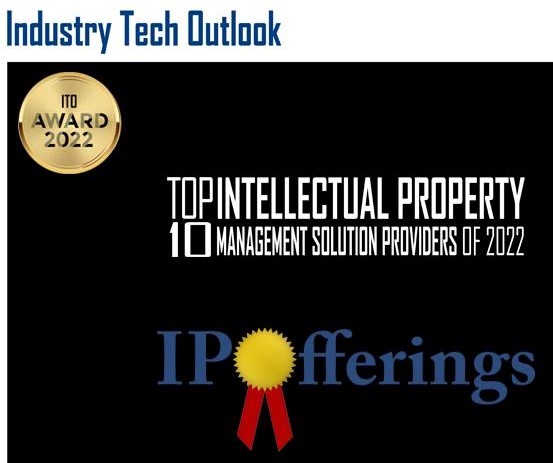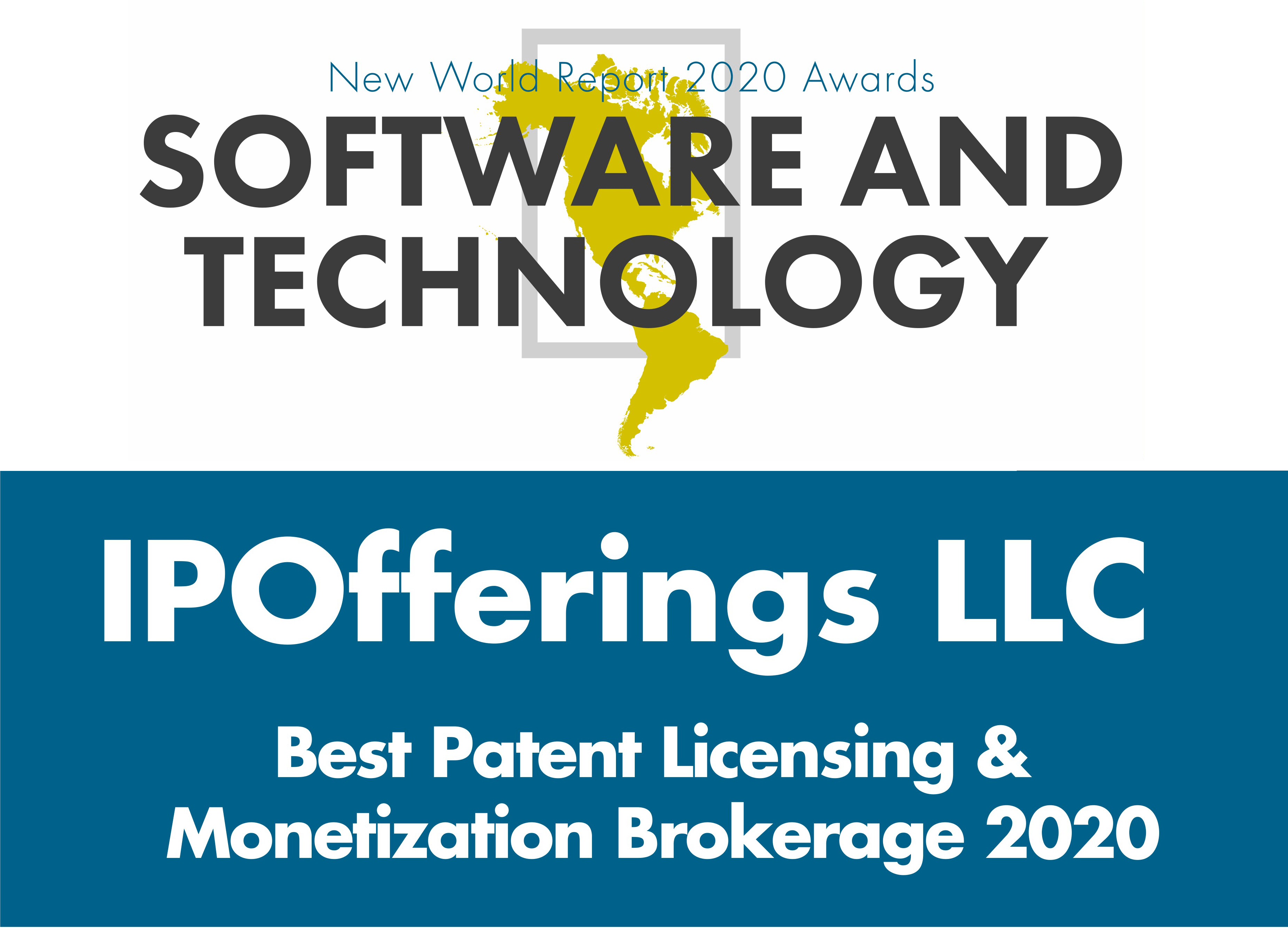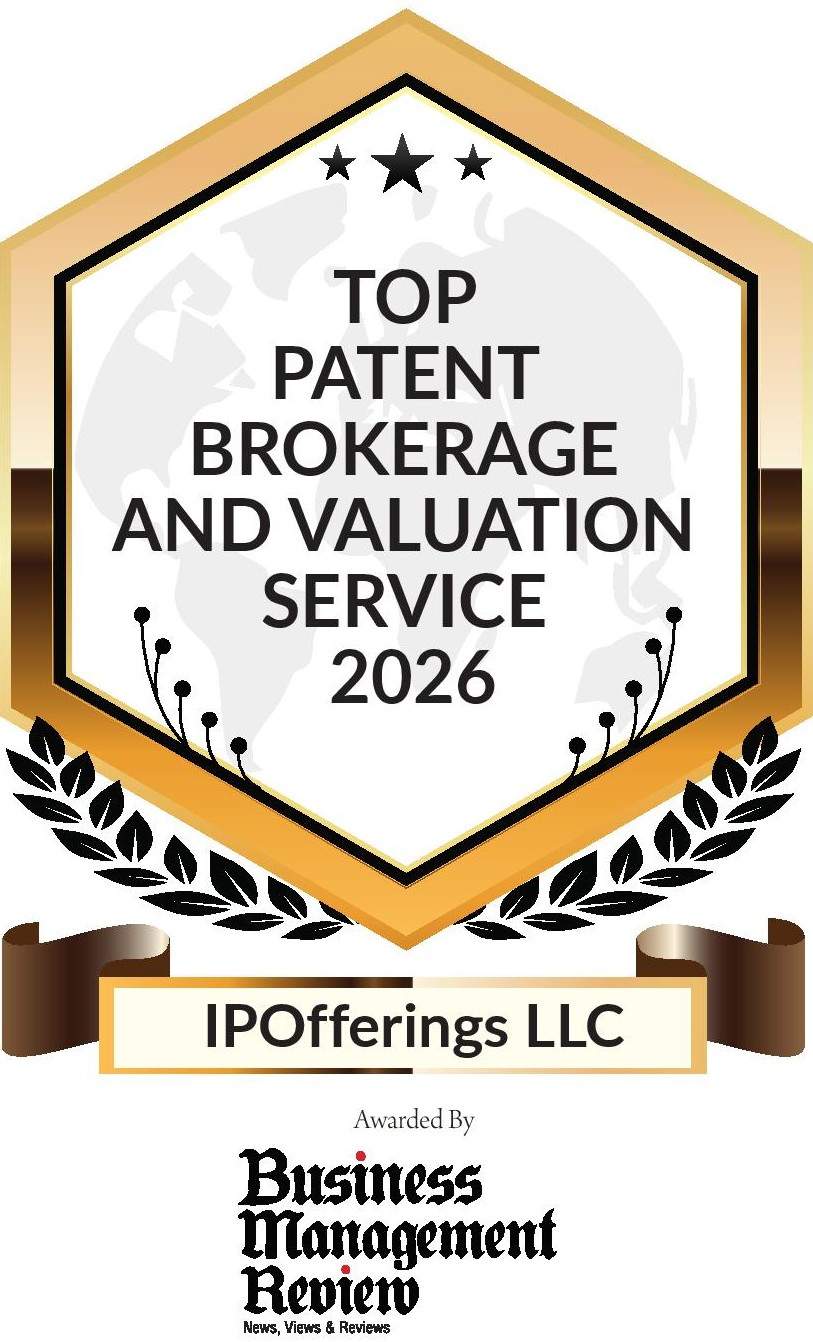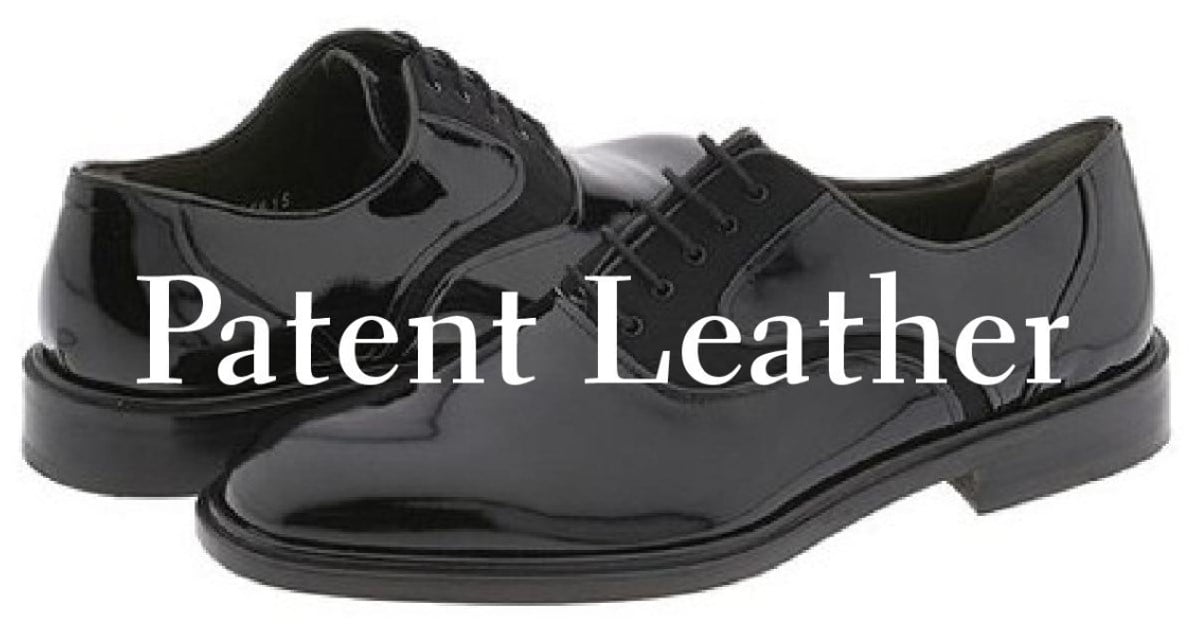
Round-Up of Items for 2025
Posted: 12/10/2025
Lists are very popular as a year comes to an end. Who died. The most popular baby names. What the dictionary editors selected as the “word of the year”. And speculation over who Time magazine will select as their “Person of the Year.” We are going to use this year-end column to catch up on bunch of stuff in no particular order. Here goes.
Yes, electric vehicles do not burn gas or diesel. Or trash like Doc’s time-traveling DeLorean in Back to the Future. But…the electricity used to charge an electric vehicle’s battery is NOT green.
The U.S. Energy Information Agency reports that 60% of the electrical current available to U.S. consumers is generated from fossil fuel – primary natural gas. That means that 60% of the electricity used by an EV is NOT green.
If an electric car owner were to put solar panels on his or her roof, or construct a wind turbine in his or her backyard, and use power exclusively for the solar panels or the wind turbine to charge the Tesla, then and only then would the vehicle be green. This is not directly related to patents, but we just had to get it off our chest.
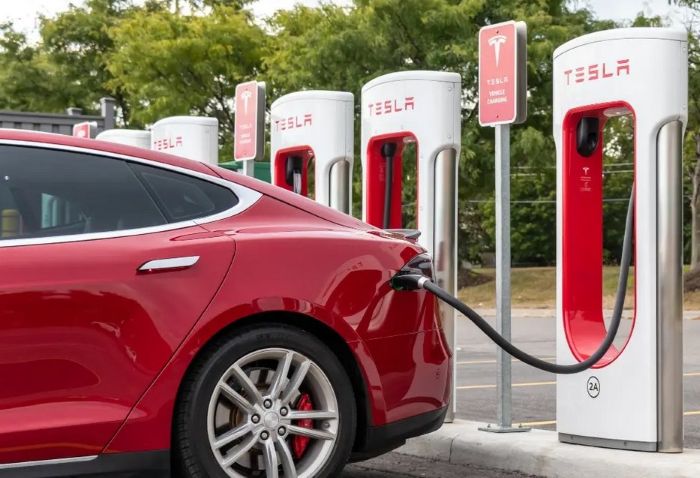 Non-U.S. Patents Have Very Little Value: We are contacted at least once a day by an inventor with an Australian or Indian or South African or German Patent, and those inventors are very upset when we inform them that we do not represent non-U.S. Patents unless they are part of a portfolio that includes a U.S. Patent.
Non-U.S. Patents Have Very Little Value: We are contacted at least once a day by an inventor with an Australian or Indian or South African or German Patent, and those inventors are very upset when we inform them that we do not represent non-U.S. Patents unless they are part of a portfolio that includes a U.S. Patent.
The reasoning behind this is not that we are inward-thinking Americans – although we all are and we love this country – but because of the fatal flaw in a foreign patent. Let’s take a German Patent. It is only enforceable in Germany. That means that a business can blatantly infringe the patent by manufacturing a product based on the patent, and selling a patent based on the patent, and as long as the company does not manufacture or sell the product in Germany, the there nothing the inventor can do! And the entire world – less Germany – is a pretty big marketplace!
The infringer can sell the product in the U.S., Canada, the UK, France, Italy, the Netherlands, all of Asia, all of South America, all of Africa, and Australia and New Zealand. And the infringer can do nothing.
In fact, having a single-nation patent is worse than no patent at all since patents are public documents, so securing a German Patent broadcasts your invention to anyone and everyone. That inventor would have been better off keeping it a Trade Secret.
Since the U.S. is the largest global marketplace, a single U.S. Patent is the only single-nation patent that has commercial value. Sorry, but those are the facts.
What About a PCT Patent Application? The response we get from many inventors of single-nation patents is that they also filed a PCT Patent Application, so they have worldwide patent protection for their invention. All a PCT Patent Application does is give the inventor the right to apply for a patent in any of the Patent Cooperation Treaty nations, it does NOT grant patent protection in any of those countries. It does prevent the company that is blatantly infringing the aforementioned hypothetical German Patent from applying for a patent in any of the PCT countries, but it does NOT prevent the company from infringing the German Patent outside of Germany.
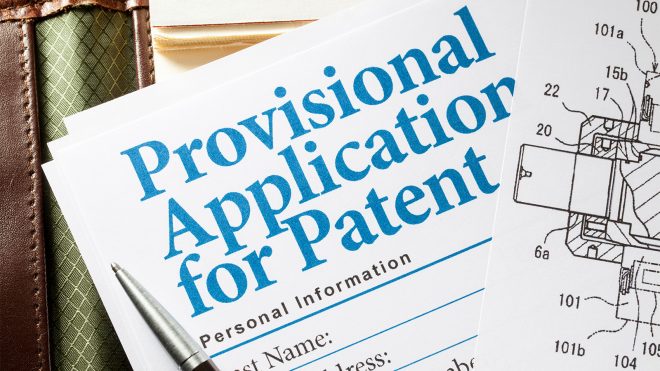
We Do NOT Represent Provisional Patent Applications: It is simply NOT a practical undertaking to attempt to take to market a Provisional Patent Application. We are contacted at least once a day – sometimes multiple times a day – by inventors with Provisional Patent Applications. Many of them begin their correspondence claiming to have a “patent” or “patents” but supplying no patent numbers. When we press for a patent number, the inventor admits that he or she really just has a Provisional Patent Application – often one that was just filed a few days ago!
We at IPOfferings are real-world practical people, and it is simply not a practical undertaking to attempt to take to market a Provisional Patent Application. A buyer wants to know and is entitled to know what he or she or it is buying, and we cannot send that prospective buyer to Google Patents to see the entire filing – the Abstract, the Claims, the Prior Art, the Forward Citations, the Priority Date, the figures, and the narrative – until the application becomes Non-Provisional and is published. This is all explained at the Advice for the First-Time Inventors page at our website.
We explain this to the Provisional Patent Applicant, and the response we so often receive is that we do not understand. The invention covered by this Provisional Patent Application is the single-greatest invention in the history of mankind. How could we walk away? We are not walking away. We are waiting until the patent application is published so representing it is practical, common-sense undertaking.
We Are Still Trying to Figure This Out! The Wright brothers invented the airplane, and proved it to the world with the first manned flight on the beach at Kitty Hawk, South Carolina, on December 17, 1903 – 122 years ago next Wednesday. They applied for a patent for a “Flying Machine” on March 23, 1903. They received U.S. Patent No. 821,393 on May 22, 1906 – three years and two months later.
What took the Patent Office so long? There was NO Prior Art. Three years to approve that patent. Really?
Our Best Wishes: We wish the very best to our readers and clients for a healthy and prosperous 2026. It will be the 250th anniversary of the signing of the Declaration of Independence.
There Is Your Invention, and Then There’s Your Patent
Posted: 11/18/2025

It is a common occurrence for IPOfferings to be contacted by an inventor or a company about its patent or patents to inquire about having IPOffering represent the patentee in the sale or licensing of his or her or its patent(s). We are continually surprised by the number of such inquiries in which the email does NOT include the patent number or numbers! We respond to the inquiry and ask for the patent number, and the recipient responds by sending us a Powerpoint or a video or a valuation of his or her or its patent. But still NO patent number.
What many patent owners do not grasp is that a patent broker does NOT go to market with your invention. A patent broker goes to market with your patent – and there is often a significant difference between the two. You can tell us all day long about your invention. You can send us a write-up, a video, a Powerpoint, an Excel file, a valuation, or any other document, but it does not replace the need for us to see that actual patent or patents or patent application! And we do NOT need an NDA to see the patent(s) because patents are public documents.
The reason we need to see the actual granted patent or the actual filed patent application is this: It is often the case that the patent does not match the invention we are being told about by the inventor or assignee. How can this be? Joe Inventor came up with an idea for a new product, so he hired a patent attorney who filed a patent application. Surely his invention is covered by his patent. Not necessarily!

Here is what happens. The patent attorney gets a description of the patent from the inventor, and from that description he or she files a patent application. The patent attorney probably runs the list of claims that are being submitted to the Patent Office past the inventor to make sure they are accurate.
But then what is known as “patent prosecution” begins. The patent application is assigned to a patent examiner, and it is the patent examiner’s job to determine if the invention meets three essential qualities.
1. It is novel.
2. It is practical.
3. It is not obvious.
The major issue is almost always the “novel” aspect. The patent examiner will challenge any claims that are not “novel” (new and not in current use) and it will be the patent attorney’s task to defend those claims. Some of the original claims may have to be dropped while others will have to be modified in order to get the patent granted. And it is the job of the patent attorney to do just that. The result, however, may be a granted patent that does not exactly follow the invention that is rolling around in the inventor’s mind.

Parallel to this is the issue that the inventor is always improving, tweaking, expanding, and fine-tuning his or her invention, so during the two or three years of total patent pendency (the period of time from when the patent application is filed to when it either receives a Final Rejection or it is granted as a patent) the invention morphs into something different than the original invention described to the patent attorney 25 or 35 months ago.
Sooo. Based on this reality we have two suggestions.
1. Get Your Patent in Front of the Broker: Get the patent – the actual granted patent, or the published patent application, or a link to either at Google Patents – in front of the patent broker up front. It is the patent the broker will be taking to market – not your invention that could be significantly different.
2. File for a Continuation: You can use a continuation to create a second patent that covers any enhancements to the invention. As the invention morphs in the inventor’s mind, he or she can always use a continuation to secure a second patent that (a.) includes those enhancements and (b.) includes what did not make in into the first patent – and this patent has the same Priority Date as the original patent. A second patent examiner might view a claim differently or revised wording can be used to get a claim accepted. Should you use your continuation to secure a second patent, be sure to apply for a continuation on the second patent. You always, always, always want to have an open continuation either for your own use or for the entity that acquires your patent.
She Invented Voice-over-IP – to Name Just a Few Inventions!
Posted: 10/28/2025

Fans of this column know that we are insistent at referring to inventors as “he or she” because there are, indeed, many female inventors and the Official IPOfferings Stylebook calls for the conscientious use of “him or her” or “it, him, or her” when referring to patentees. This issue of IPMarketPlace features an 11-patent portfolio by a woman inventor.
We are taking this opportunity to introduce you to Marian Croak, the inventor of Voice-over-IP or “VoIP”. Dr. Croak grew up in New York City. She earned her undergraduate degree from Princeton University and went on to earn her Ph.D. in Quantitative Analysis and Psychology from the University of Southern California.
She initially went to work for Bell Labs, the moved to AT&T, and has been the Vice President of Engineering at Google for the past 11 years. She is a named inventor on over 200 patents, but her most notable invention was VoIP.

She was a co-inventor of U.S. Patent No. 7,599,359 for a “Method and apparatus for monitoring end-to-end performance in a network” – the foundational technology behind Voice-over-IP. We could not help but notice that the application for this patent was filed in 2004, but the patent was not granted until, 2009 – five years later! This patent would have been enforceable through 2027 thanks to a term extension, but AT&T let it lapse in 2021. The patent currently has 43 Forward Citations.
Dr. Croak is a member of the National Inventors Hall of Fame®. Here is a link to her page there.
National Inventors Hall of Fame is a trademark of National Inventors Hall of Fame, Inc.
She Invented the Disposable Diaper – to Name Just a Few!
Posted: 10/28/2025

Marion O’Brien grew up in South Bend, Indiana, and her father was the inventor of the South Bend Lathe. She received a B.A. in English from Rosemont College and 19 years later earned a Masters in Architecture from Yale.
As a young mother, Marion Donovan faced mountains of smelly diapers. She came up with the idea of a plastic cover for diapers that would trap the moisture and other debris so they could be tossed in the trash. She filed for and received U.S. Patent No. 2,575,164 for a “Diaper Housing”.
Ms. Donovan sold her patent for $1 million (roughly $12 million in today’s dollars) to a company that resold it to Procter & Gamble and it was used to create “Pampers®” disposable diapers. Ms. Donovan filed her patent application 1949 and the patent was granted in 1951 – just two years later. We cannot help ourselves when it comes to patent pendency. The patent expired in 1968, it currently has 44 Forward Citations, and the technology became a big money-maker for P&G.

Marion Donovan was awarded a total of 27 U.S. Patents including a patent for a combined checkbook and record-keeping book as well as floss and facial tissue patents. She is also a member of the National Inventors Hall of Fame. Here is a link to her page.
Pampers is a trademark of Proctor & Gamble Company.
The Patent Office Remains Open!
Posted: 10/7/2025
The non-essential units of the federal government are shut down until Congress either passes a new budget or a Continuing Resolution to temporarily fund the government. While it is not an “essential” service as are the military and law enforcement agencies like the FBI and DEA, the U.S. Patent and Trademark Office (USPTO) remains open and in full operation for another reason. It is one of the few self-funded agencies of the U.S. federal government.

The USPTO does not use taxpayer funds. It is funded by the fees it collects from patent applications, patent holders, and others who pay for the services they receive from the Patent Office. And since the Patent Office is currently running a surplus, it has money in the bank. So, it will continue to operate until it runs out of funds which is not likely to be any time soon.
Being the curious sorts we are, we wondered how many other government agencies are self-funded, and there are actually quite a few. They include…
- U.S. Postal Service
- Passport Bureau
- Federal Reserve
- Federal Deposit Insurance Company (FDIC)
- National Credit Union Administration
- Office of the Controller of the Currency
- Federal Housing Finance Agency (Fannie Mae and Freddie Mac)
- Farm Credit Administration
Who knew?
Squires Takes Over at the Patent Office
Posted: 10/7/2025
After a delay of several months, John Squires was finally sworn in as Under-Secretary of Commerce for Intellectual Property and Director of the U.S. Patent and Trademark Office. As a Cabinet Officer, he was appointed by the new incoming President and needed to be confirmed by the Senate.

Here is an excerpt from Director Squire’s swearing-in speech:
I firmly and without reservation believe in a strong, robust, expansive, and resilient intellectual property system – and everything that goes with it. Patents and trademarks form the backbone of our competitive American economy. Our patent system has helped catalyze inventions that fuel industries and improve the quality of life, while our trademark system empowers businesses to build trust, protect their brands, and distinguish themselves in a crowded marketplace. The protections we offer enable entrepreneurs to compete, investors to believe, and consumers to have confidence in the products and services they rely on every day.
Our Office is not just an administrative agency; we are a strategic arm of national economic policy; we are the Department of Commerce’s Central Bank of Innovation. Every piece of IP we put into circulation is a potential job, a new business, a competitive advantage, or an investible asset. And yet another win for both society and the Constitutional foresight of our Founders.
Here, we drive prosperity and progress. In today’s interconnected world, the ripple effects of what we do extend far beyond our borders. Our decisions influence international standards, impact global supply chains, and help foster innovation and commercial ecosystems that contribute to economic growth worldwide. That’s why Commerce is our mothership - and that’s why we are an agency like no other.
The credibility and consistency of our work give individuals, businesses, and institutions the confidence to invest, to dream big, and to bring transformative ideas and powerful brands to market. What we do here matters - not just to applicants, but to the world.
As I testified to in my opening Statement to Senate Judiciary, there’s a saying that every patent begins its life as a trade secret. Inventors face a choice: keep their ideas locked away or bring them here – to our patent factory. And when they choose us, they place their trust in our ability to help them transform bold ideas into strong, enforceable rights. That’s our mission.
We take in raw innovation – and with diligence and care – help shape, hone, and hew it into durable and definable intellectual property. And when mistakes happen – and they will – there’s no need to be afraid of them. We will use the corrective measures Congress has provided – measurably, fairly, and judiciously – to improve our processes along the way – both front-end and back-end.
Inventors – as well as brand owners – don’t just seek rights; they make a trade with the public – disclosing their ideas and identities in exchange for time-limited protection. We are the guardians of that social contract.
We like this guy!
Patent Town Has a New Sheriff
Posted: 9/23/2025
Every American should know – we will excuse the non-U.S. readers of this newsletter – that Cabinet Secretaries serve at the pleasure of the President. Back on January 20, all the Cabinet Secretaries appointed by President Biden resigned, and they were replaced by acting Cabinet Secretaries until permanent replacements who were nominated by President Trump are confirmed by the U.S. Senate.
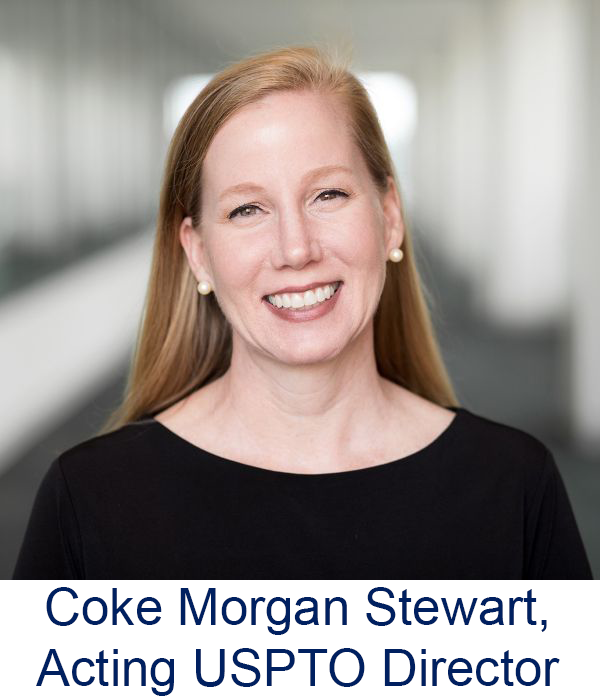
The Director of the U.S. Patent and Trademark Office is also the Under-Secretary of Commerce for Intellectual Property – a presidential appointee. So back on January 20, Kathi Vidal, the Patent Office Director appointed by Joe Biden, stepped down. She was replaced by Coke Morgan Stewart who became the Acting Director.
Well, it took a few months, but the Senate finally confirmed a new Under-Secretary of Commerce for Intellectual Property and Director of the U.S. Patent and Trademark Office last week. He is John Squires, a partner at the Dilworth Paxson law firm. He is eminently qualified to become the next Patent Town Sheriff as he is well recognized as one of the world’s leading practitioners in advanced technologies and intellectual property including AI, blockchain, fintech, and cybersecurity. He has broad experience and expertise in all aspects of intellectual property including IP transactions, licensing, patent-asset creation, IP acquisition, commercial litigation, regulatory issues, and risk management. Mr. Squires led the creation of the first patent asset-backed finance platform for one of the world’s leading funds.
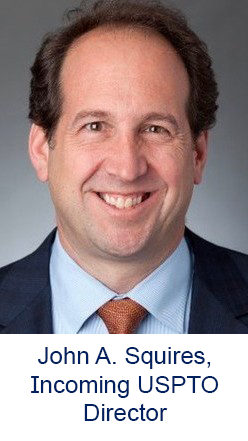
All nominees first go before a Senate Committee, and Squires was voted out of the Senate Judiciary Committee by a vote of 20 to 2. His confirmation by the full Senate was part of the “nuclear option” the Republicans recently used to get 48 stalled nominees confirmed. Squires will take control of the 13,000-employee U.S. Patent and Trademark Office as soon as he is sworn in. At that time, Coke Morgan Stewart will step down as Acting Director to assume a permanent role as Deputy Director.
In his hearing before the Senate Judiciary Committee, Squires identified his priorities as USPTO Director as:
1. Reducing the patent application backlog.
2. Improving quality with “Born Strong” patents.
3. Reducing uncertainty under Section 101.
4. Introducing AI tools where it is practical to improve and speed up patent examinations.
In a written response to the Senate Judiciary Committee, Squires laid out his vision for restoring the USPTO “to its rightful place atop the world as executor of our Nation’s constitutional mandate and to boost America’s ingenuity engine with the intellectual property that drives economic growth, technological progress, and global competitiveness.”
We wish him well.
Three Common Misconceptions We Need to Correct
Posted: 9/9/2025
We receive a lot of mail, and there are three common misconceptions we see literally on a daily basis. So, in this installment of Patent Leather, we shall correct them.
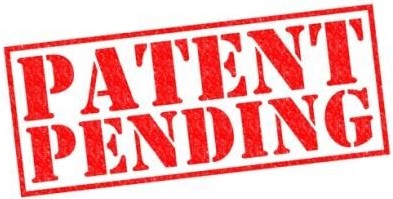
♦ Patent Pending: We are amazed at how many inventors write to us and claim they have a “Patent Pending” or worse-yet a “Patent Pending patent!” “Patent Pending” is not a thing. It is an adjective that describes a product. Only a product can be “Patent Pending” – never a patent. The definition of “Patent Pending” is in the Glossary at our website.
A company comes up with an invention, and they file for a patent for that invention. The company then goes to market with a product based on that invention. Since all the company has is a patent application, it cannot mark the product with a patent number. So, they mark the product “Patent Pending” to let the world know that a patent is in process and to – ideally – scare off competitions from jumping into the market with a directly competing product!
Once the manufacturer of this product is granted a patent, “Patent Pending” is replaced on the product with the patent number. This is known as “Marking” or “Patent Marking” – also in the Glossary. It lets competitors know that the product is covered by a patent. If a product is NOT marked, and competitor goes to market with a similar product that infringes the patent, the patent owner’s claim is weakened because the patented product was not properly marked!
An inventor never, never, never has a “Patent Pending” or a “Patent Pending patent!” Never!
An inventor has either a patent application or a patent. To be more specific, a Provisional Patent Application, a Provisional Patent Application, or a granted Patent. An inventor never, never, ever, ever has a Patent Pending!
♦ Small Nation Patents: We get emails on a regular basis from inventors who have patents in small countries – Portugal, Indonesia, Australia, Columbia, you name it. And we have to tell them that their stand-along single-nation patent has NO commercial value. They are sometimes very upset. We do not tell the owner of a Swedish Patent, or an Israeli Patent, or a South Africa Patent that they need to contact us when they have a U.S. Patent because we are Ugly Americans.* We tell them to contact us when they have a U.S. Patent because the U.S. is the world’s largest economy.
Let’s take the case of a South African Patent. A patent is a public document, so once South Africa grants Joe Smith a patent, it is a public document for the world to see. Company X finds that patent, sees the potential in it, and immediately goes to market with a product based on that patent. As long as Company X does not manufacture that product in South Africa, or sell that product in South Africa, Joe Smith can do nothing! Company X can sell the product in the U.S., all of Europe, the Far West, and South America – over 150 countries. And as long as Company X does not manufacture or sell its infringing product in South Africa, the inventor can do nothing – except maybe send the company a cease-and-desist letter, which the company will ignore.
Now, if Joe Smith had applied for and was granted a U.S. Patent, Company X would have to think twice about going to market with a product based on Joe Smith's patent since it would be prohibited from manufacturing or selling a product based on that patent in the largest global market – the U.S. Selling a product based on the U.S. Patent would make Company A liable for a patent infringement lawsuit in U.S. District Court.
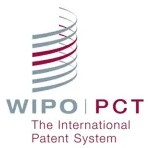
And that is why we tell owners of small nation patents to get back to us when they have a U.S. Patent. It is simple a matter of math. Here are the largest economies on our planet:
▪ USA
▪ China
▪ Germany
▪ Japan
▪ India
▪ UK
▪ France
▪ Italy
▪ Canada
▪ Brazil.
If an inventor secures a U.S. Patent, a European Patent (that designates Germany, the U.K., France, and Italy), and a Canadian Patent, he or she would have patent coverage in over half of the 10 largest economies with just three patent filings. Again, it is a question of numbers.
♦ PCT Patent Application: While it is a practical and powerful tool, many inventors do not really understand what a PCT (Patent Cooperation Treaty) Application actually really is. Let’s start with what it is not. It is NOT immediate global patent protection. We cannot tell you how many inventors write to us about their PCT Patent Applications believing that they have global patent protection!
All a PCT Patent application does is (1.) establish a Priority Date for your patent filing, and (2.) make it easier to file for multiple national patents. It does NOT give you patent protection. You only have patent protection in those countries in which you used your PCT Patent Application to file for a patent in that country. If you do NOT use your PCT Patent Application to file for a patent in Canada (as just one example), you do NOT have patent protection in Canada and any company is free to manufacture and sell a product based on your invention in Canada.
Filing a PCT Patent Application is smart, and it adds value to a patent family or portfolio, but you need to know what it is – and what it is not. A company can buy your patent family that very wisely includes a PCT Patent Application and use it to apply for additional patents in countries where it does business. But get your patent family to market because a PCT Patent Application is only good for 30 months.
* We borrowed the term “Ugly American” from The Ugly American, a best-selling novel (and later movie) of the same name.
Advice for First-Time Inventors
Posted: 8/20/2025
We receive at least one email a day from an inventor claiming to have a “patent” – only to discover after several emails that this inventor actually just has a patent application. In some cases, they have a patent application that they are about to file!

A patent application is NOT a “patent” any more than college application is a college degree! These inventors are not serving themselves well by contacting a patent broker – any patent broker – and commencing the relationship with a bold misstatement on the part of the prospective client! Starting out stating exactly what you have to offer will lead to a much better broker-client relationship.
Every inventor – especially a first-time inventor – has two critical choices to make when he or she files a patent application with the U.S. Patent and Trademark Office (USPTO) – file a Provisional Patent Application or file a Non-Provisional Patent Application. There is one choice that most definitely serves the needs of a business that will practice the patent, and one choice that serves the needs of the independent inventor who will be seeking to sell or license his or her patented invention.
Let’s first look at the patent application pool. About 75% of all U.S. Patent Applications are filed by businesses, and the Provisional Patent Application was designed for those applicants. A Provisional Patent Application is not published by the Patent Office for 18 months, and that gives a business the opportunity to establish an early Priority Date for the application, fine tune the invention, do some design and engineering work on a product based on the patent, test market the concept, and maybe even get a product to market before the actual patent is granted and mark that product “Patent Pending”. However, a Provisional Patent Application is of NO value to the inventor who hopes to monetize his or her invention!
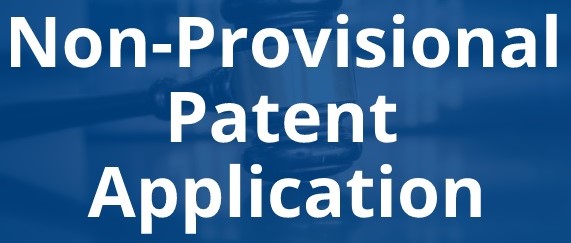
We cannot tell you how many inventors come to us with a Provisional Patent Application and expect us to take it to market. That is not impossible, but it is also not practical. Every prospective buyer and licensee would need to sign an NDA, and if you have a half-dozen companies signing an NDA, and your patent is leaked, whom do you go after for breaching the NDA? Also, many companies will simply NOT enter into an NDA to limit their down-the-road liabilities.
The smart option for the independent inventor who is not going to build a factory and manufacture products based on his or her patent is to file for a Non-Provisional Patent Application since a Provisional Patent Application offers no significant benefits to the independent inventor who wants to monetize his or her patent. File a Non-Provisional Patent Application and then ask the USPTO to publish it immediately!

An inventor is always, always, always best served by filing a Non-Provisional Patent Application and then requesting that the patent application be published immediately!
Prospective buyers and licensees want to see the complete patent filing, and you simply cannot do that with a Provisional Patent Application. Once your Non-Provisional Patent Application is published, your broker can send prospective buyers and licensees to Google Patents where they can see the Abstract, Claims, figures, narrative, citations, and priority and filing dates.
Many patent attorneys do what we believe is a mistake by suggesting a Provisional Patent Application to first-time inventors, but that is because the patent attorney’s job is to get the patent granted, not monetize the patent. It is always in the best interests of the inventor to file a Non-Provisional Patent Application … and … request that the USPTO publish it immediately!
What do you do if you are an inventor with a Provisional Patent Application sitting at the Patent Office collecting digital dust?
1. Immediately convert it to a Non-Provisional Patent Application.
2. Request that the USPTO publish your Non-Provisional Patent Application.
3. Once your patent application is published, contact IPOfferings at [email protected].
OTT Is Hotter than Ever!
Posted: 8/5/2025
Regular readers of this delightfully witty and informative column know what OTT is. But, if you are a reader and you forgot; or you are new to IP MarketPlace, or you just want the latest on the world of OTT, here it is. OTT (Over the Top) is – in the simplest terms possible – the delivery of audio and video content over the Internet as opposed to via broadcast or broadband (what we used to call “cable”). It is called “over the top” because it skips “over” all the regular distribution channels for this content.
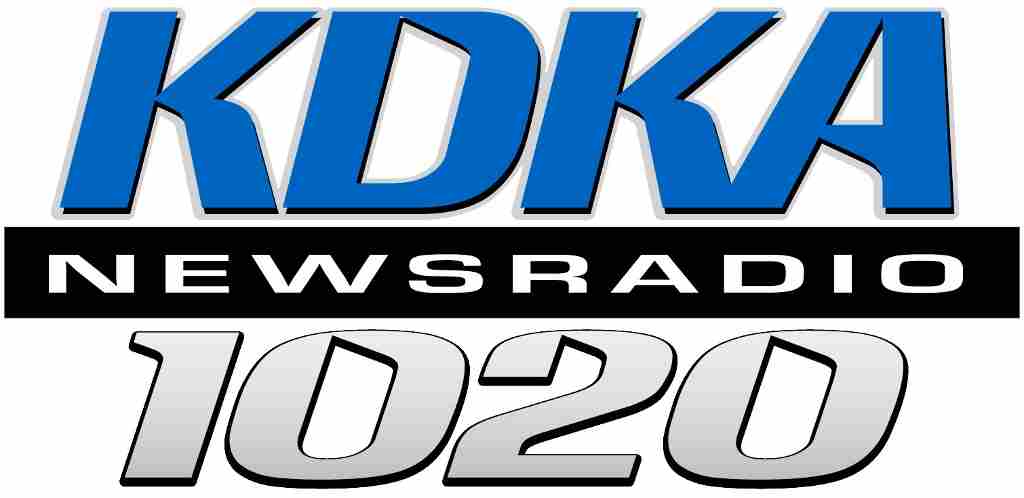
Since KDKA went on the air November 2, 1920, everyone on the face of the earth has received news, music, sports, drama and advertising via radio waves. Just eight years later, a one-act play, “The Queen’s Messenger,” was broadcast by RCA over W2XBS September 11, 1928. Since then, virtually everyone on the face of the earth has viewed drama, comedy, news, sports, movies, and commercials via television.
In 1940, John Walson was running an appliance store in Mahanoy City, Pennsylvania. He had a problem selling television sets because the town was in a valley, so TV reception was very poor. He put a tower on the highest mountain, captured the TV signals from the Philadelphia stations, ran a cable down into the village, and provided the first cable TV service. Since then, hundreds of millions – in this case, not everyone on the face of the earth – have received their television signal not from an antenna on the roof or rabbit ears on the TV set, but from a local cable TV vendor.

A book could be written about why the cable TV companies got into the Internet service business instead of the local telephone companies – who were all in business with a loyal customer base 100 years ahead of the local cable companies – but they did. Today, broadcast and cable TV is slowing losing customers to one form or another of OTT content delivery. The irony of it all is that the OTT content is coming in on the Internet service provided by the cable TV companies!
Cable TV companies are enormously profitable. That’s how Comcast managed to buy NBC. Cable companies sell bundles of TV networks, so consumers end up paying for many channels they never view. And the cable companies get to drop in their own ads over the ads of the original provider of the programming. We have only the greatest respect for effective marketing, and the cable TV companies are great marketers. In fact, it took OTT this long to catch on in large part because the fragmented OTT vendors did not have the marketing tools, marketing savvy, and marketing umph of the cable TV companies. Never underestimate umph!
Netflix was the first company to crack the cable monopoly. Netflix licensed older programming from the TV networks, then veered around and “over” the cable guys to reach customers via the Internet. Hulu soon followed, and the rest, as they say, is history.

One result is that we have a section for OTT patents in our Patent MarketPlace and we recently licensed an OTT patent family. Many marketing and technical challenges are out there for the OTT crowd, but new patents continue to pop up to address improvement of the delivery of audio and video content.
The future: OTT is here to stay, but so is cable. It is likely that programming revenue from cable will decline as more consumers shift to OTT content. How will cable TV operators make up the difference? They will have to charge more for the Internet service on which the OTT content flows into the homes and businesses of their customers!
From the Sheaves to the Threshing Floor
Posted: 7/9/2025
There are references throughout the Old Testament to the threshing floor. Wheat was cut in the field and collected into sheaves, which were brought to the threshing floor. The stalks of wheat were flailed, causing the wheat buds to drop off. The useless part of the wheat plant, the “chaff” was burned as it had no use even as fertilizer or mulch. The wheat buds where then ground into wheat for bread. The whole process “separated the wheat from the chaff” and from that winnowing process has been drawn many lessons.
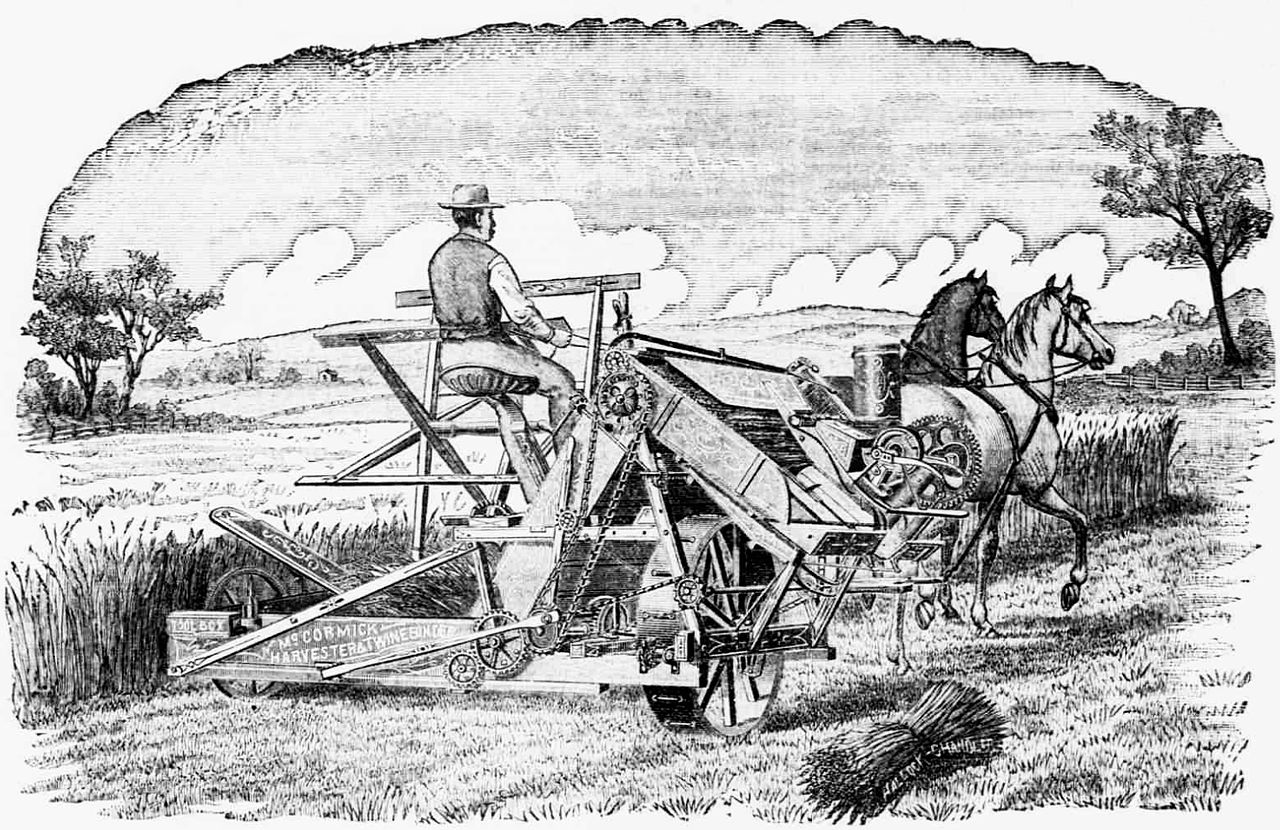
That was the process until only about 200 years ago. In 1831, Cyrus McCormick introduced his Reaper, a machine that would cut the wheat and collect it into sheaves, but he did not apply for a patent until 1834. It took him a few years to set up production, and by 1842 he had sold seven reapers. He sold 29 Reapers in 1843 and 50 in 1844. In 1847, he moved his factory to Chicago and exhibited his Reaper at the Crystal Palace Exhibition in London in 1851.
When McCormick went to renew his patent in 1848, he was informed by the Patent Bureau that since one Obed Hussey had applied for a patent for a Reaper back in 1833, McCormick’s Reaper Patent would not be renewed and he was to pay royalties to Mr. Hussey! Undeterred, McCormick charged ahead, manufactured reapers that were sold all over the world, and made a fortune. He married his secretary, and had seven sons, one of whom married a daughter of John D. Rockefeller.
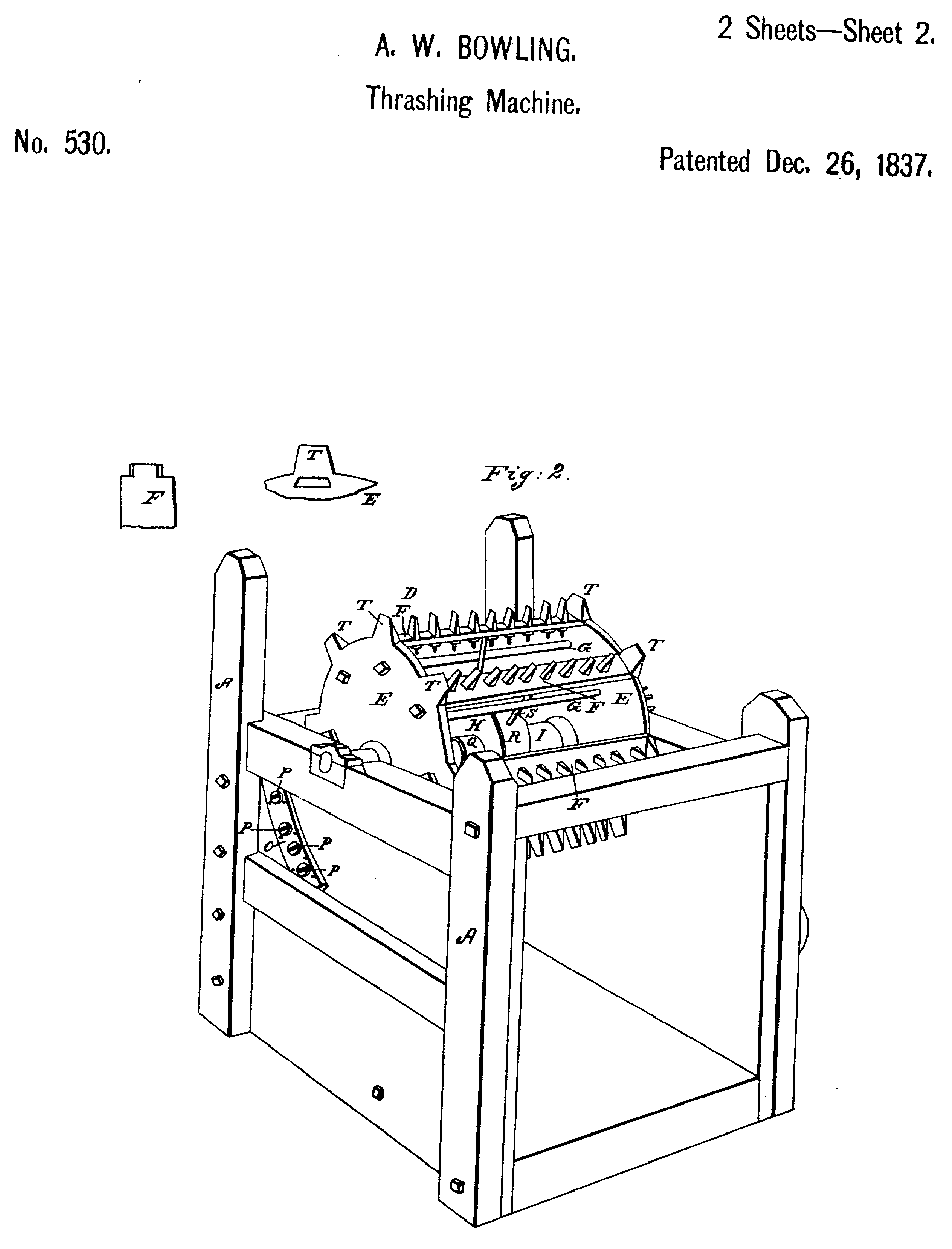
Now that grains could be mechanically cut and gathered into sheaves, there was still the issue of separating the wheat from the chaff. The two processes – reaping (or harvesting the grain) and threshing or thrashing the harvested grain to separate the wheat buds – needed to be merged into one operation, and that was done by Hiram Moore and John Hassall who received a patent in 1836 for a “Machine for Mowing, Threshing and Winnowing Grain.”
On December 26, 1837, A.W. Bowling received U.S. Patent No. 530 for a “Thrashing Machine,” and just three days later, John and Hiram Pitts received U.S. Patent No. 542 for a “Machine for Thrashing and Separating Grain” on December 29!
Somehow “threshing” was now “thrashing,” and both inventions were based on a drum into which the sheaves were fed, and as the drum turned, teeth in the drum broke up the stalks of wheat so the wheat buds would drop out the bottom. These units never really caught on since a combined unit to both reap the wheat from the field, and thresh and winnow out the wheat buds, just made more sense. From this concept came the combine harvester of today.
What Ever Happened to Fuel Cells?
Posted: 7/9/2025
Fuel cell-powered automobiles burst onto the scene a decade or so, but they never caught on. A fuel cell – for those of your not in the know – merges hydrogen and oxygen to form water vapor, and in so doing captures a stream of hydrogen electrons as they make there way to meet their soon-to-be oxygen mates. And a stream of electrons is what we call “electricity”!

At first glance, fuel cells appear to be the ideal source of power. They are clean, they use no fossil fuels, and they discharge water vapor. They also have NO moving parts! So why did they never catch on.
To start with, fuel cells are not new. Sir William Grove is credited with inventing the fuel cell way back in 1839. None other than one Thomas A. Edison jumped on the idea and was granted U.S. Patent No. 460,122 for a “Process for and Apparatus for Generating Electricity” in 1891, but Edison never commercialized the technology.
No one found a practical application for the technology until NASA came along in the second half of the 20th century to use fuel cells to power their space craft. NASA could carry hydrogen and oxygen into space and use a fuel cell to produce clean electricity for the spaceship’s electronics. Fuel cells were used in both the Gemini and Apollo space missions, and the water vapor produced by the fuel cells was condensed and used for drinking water for the astronauts.
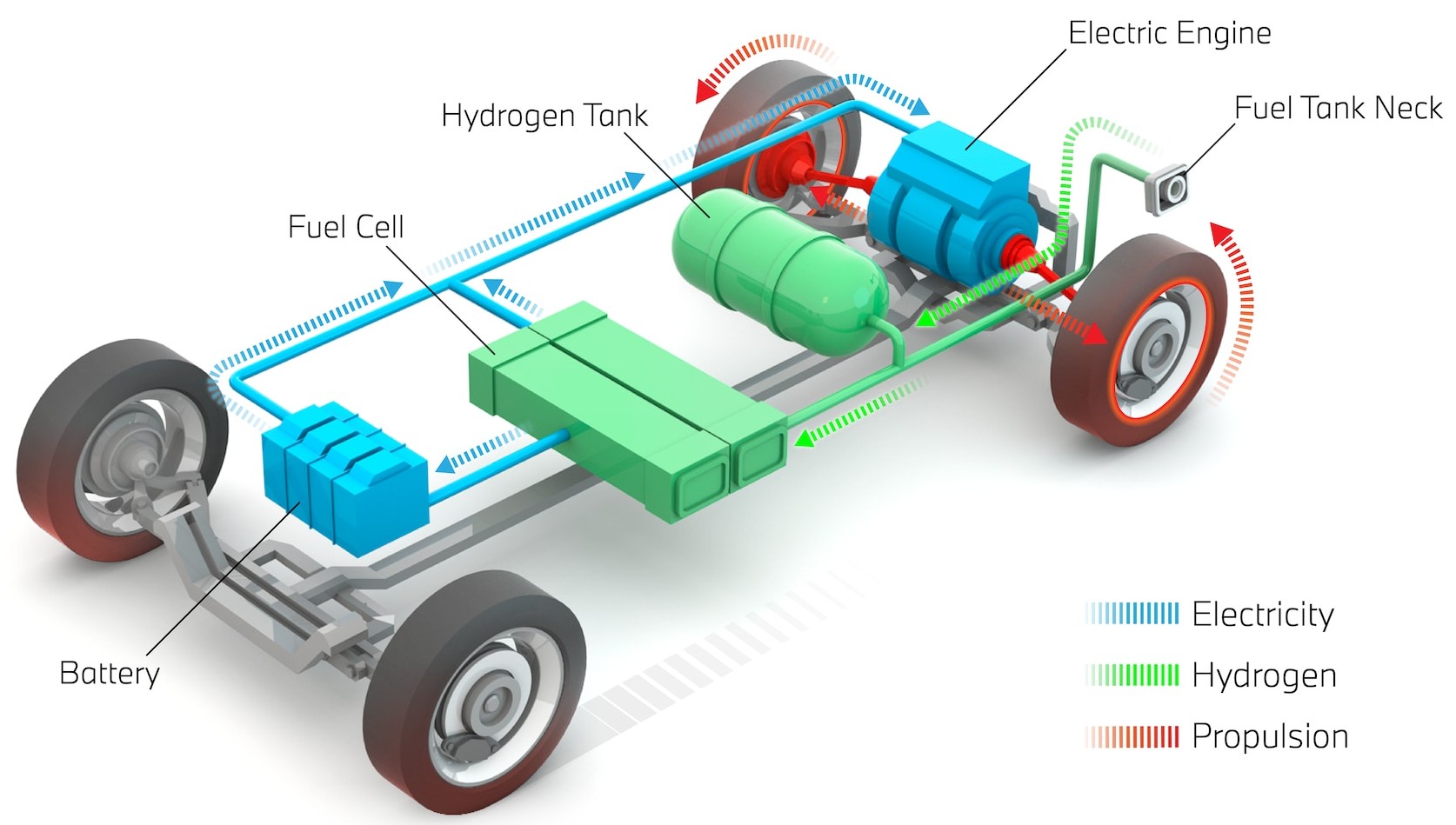
In the early years of this century, several companies sprang up to manufacture fuel cells including Ballard Power Systems, Plug Power, and FuelCell Energy. Most of the car companies developed fuel cell-powered vehicles to test the concept. At one point, Jeep had 40 fuel-cell powered Grand Cherokees being driven around Michigan by Chrysler employees.
But fuel cell-powered cars just never caught on for two reasons:
1. Hydrogen is Expensive: In order to have the hydrogen to merge with oxygen, the hydrogen has to be extracted from something. Hydrogen is an element, so it cannot be produced from other substances. It is most often extracted from methane, but methane and the process of extracting the hydrogen are both expensive.
2. No Infrastructure: To support large numbers of fuel cell-powered autos, we will need hydrogen fueling stations, but with without a significant number of fuel cell-powered cars on the road, no company is prepared to make an investment in them.
Why Most Patent Transactions Are Confidential
Posted: 6/25/2025
It has become a common practice in recent years for buyers of patent to insist that the transaction be confidential. They do this for several reasons.
♦ Avoid Unsolicited Contact: When a company announces that it has acquired a patent, it runs the risk of selling off a tidal wave of inventors contacting the company about their inventions. One IP Director told us that after her company released news of a patent acquisition, she was inundated with emails and telephone calls from inventors – many with inventions that were totally unrelated to her employer’s business! Some inventors even showed up in person while others shipped her prototypes.
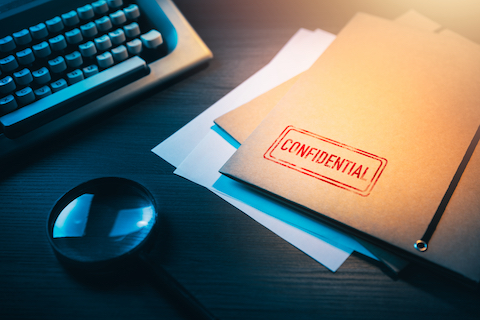
♦ Not the Image the Buyer Wants to Promote: Most businesses what their customers to think that their management team is brilliant. They want their customers – and competitors – to believe that every product they sell was the result of in-house brilliance by their R&D staff, or engineering team, or CTO. Admitting that a company has acquired a patent from an inventor or another business sends the message that the company is not, in fact, as intellectually gifted that they would like their customers to think.
♦ Give Away Plans to Competitors: When a company announces that it has acquired a patent, it is essentially revealing its product strategy to its competitors. By acquiring a patented technology in confidence, and quietly developing a new product based on that technology, the company can spring the new product on its customer base and catch its competitor’s totally off guard.
So, for these reasons and a few others, most companies that acquire patents require total confidence from both the seller of the patent and the broker that negotiated the transaction. This is built into the Patent Purchase Agreement so it is a condition of the sale! In most Patent Purchase Agreements today, both the seller and the broker are not even permitted to make any mention – in writing or orally – about the transaction.

♦ What About the Patent Office? When a patent changes hands, the transaction is recorded at the U.S. Patent and Trademark Office. So, you ask, all a curious person has to do is look up the transaction at the Assignments section of their website. True, but you need to know the patent number of the patent that was acquired. Or you have to do a reverse look-up of new patent assignees to determine if a specific company has acquired patents. To protect themselves from searches such as these, many companies set up an LLC to hold their patents.
The bottom line is that when you sell your patent, do not look for bragging rights about who you sold your patent to and for how much. And do not be surprised if the patent broker you are thinking about representing you cannot provide a list of patent sales they consummated for their clients.
Trying to Sell a Just-Filed Patent Application
Posted: 6/25/2025
We are contacted just about every day by an inventor who just filed his or her patent application, and now they want to sell or license it. The reality is that attempting sell a Provisional Patent Application is just not a practical undertaking.

When we take a patent (or portfolio) to market, we can send prospective buyers or licensees to Google Patents where they can see the entire patent filing. We prefer Google Patents over the U.S. Patent and Trademark Office (USPTO) website because it includes more data. When we send a prospective buyer or licensee to Google Patents, he or she can see the abstract, claims, narrative, and artwork of the patent. Google Patents also provides the Priority Date and Application Date, when the patent was granted, and when it expires. Google Patents also includes any Prior Art as well as Backward and Forward Citations. It is most comprehensive and informative, and easy to navigate. Bravo Google. And it is free.
Let’s go back one step from there. If we are representing a published patent application (it will have an 11-digit number of which the first four digits are the year the application was published), Google Patents shows everything a buyer or licensee would want to know about the published patent application, including everything that is shown at the listing of a granted patent except, of course, the date the patent was granted since that event has not yet occurred. Visitors to a published patent application filing realize that what they see at Google Patents may not be the eventual granted patent. Some claims, for example, could be rejected by the patent examiner or modified by the applicant.
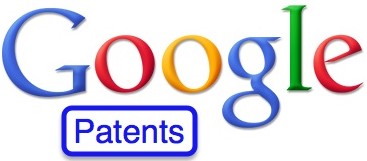
OK. Let’s go back in time one more step to this freshly filed patent application. While a granted patent is a public document, and a published patent application is a public document, a recently filed Provisional Patent Application is NOT a public document! An interested buyer or licensee cannot go to the USPTO website or Google Patents or anywhere else to see the actual patent application filing! And therein – to quote the Bard – lies the rub.
When an inventor or business or university or anyone else files a patent application, it is kept private by the Patent Office for 18 months. So, during those 18 months, we cannot send a prospective buyer a link to go and see the patent application. And sending out what is in the unpublished patent application to a prospective buyer or licensee is…well…messy to say the least. So, we do not represent patent applications that have not yet been published!
However, an inventor can request that his or her or its patent application be published immediately. The inventor can file a 1129 Request for Early Publication [R-11.2013]. The patent application will be assigned an 11-digit number and be published – usually with a few weeks. Once it is published, and is a public document, it is now practical for us to take it to market.
For more information about this, visit the Advice for the First-Time Inventor page at our website.
Who Really Invented Voicemail?
Posted: 6/10/2025
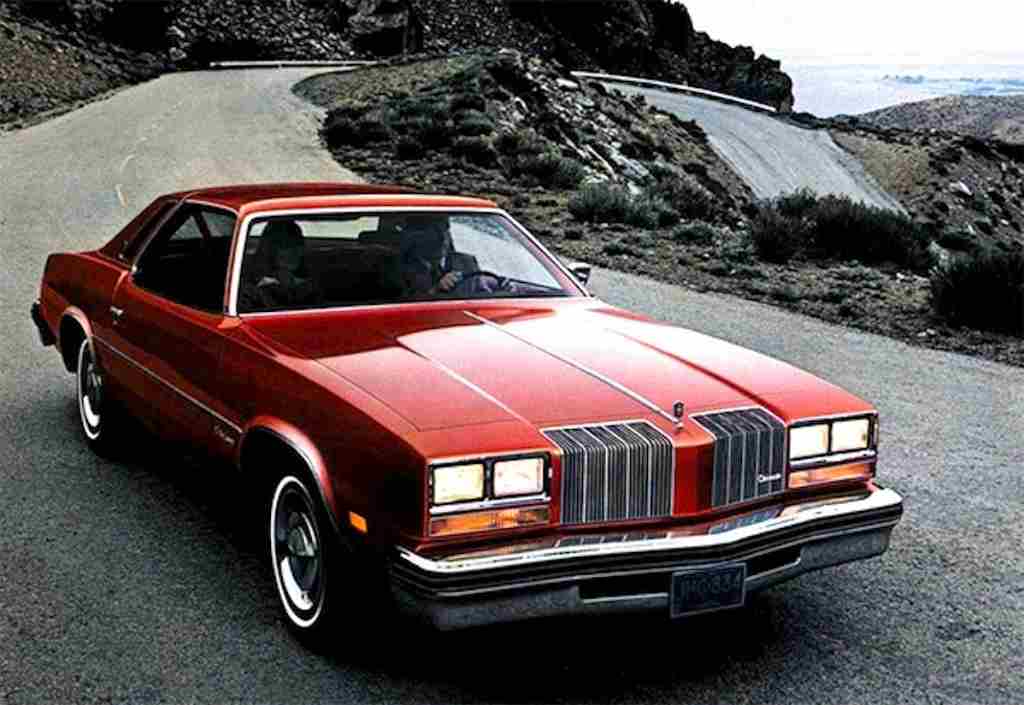
Jimmy Carter was President, the Iranians were holding 52 American hostages, Dallas was the top-rated TV show, the Olds Cutlass was the best-selling vehicle, and the world was introduced to voicemail. But being the patent guys we are, we have to ask ourselves: Who invented this technology that has now been such an essential element in our lives for over 45 years?
Voicemail was launched by Televoice International that also coined the term “voicemail” (no argument about that). The company later changed its name to Voicemail International and eventually to just VMI. However, we always look at things from a patent perspective, so we had to ask ourselves not who introduced voicemail to the known world, but who actually invented voicemail? Credit is typically given to Gordon Matthews who has been known for the last four decades as the “father of voicemail,” but there were actually a few voicemail-related patents that preceded his.
U.S. Patent No. 4,124,773 - Audio Storage and Distribution System: This patent was granted November 11, 1978, two years before any voicemail products were introduced. The inventor was Robin Elkins and he eventually sold his patent to VMI. Here is the abstract: This invention relates to an electronic system and a method for storing and distributing audio signals over existing communication lines. The system comprises a compressor for compressing in a predetermined manner the waveform amplitude of an input analog signal, thereby forming a compressed analog signal. The compressed analog signal is then converted into a digital signal by an analog to digital converter. A digital interface subsystem stores and retrieves selected ones of the digital signals for transmission over a communications line. At a remote end of the communications line the digital signal is converted back to its analog compressed signal representation by a digital to analog converter. The compressed analog signal is then expanded in a manner complementary to the compressor operation, thus reconstructing the analog signal. A selector generator is provided at the remote end of the communications line for generating a command signal over the communications line to command the digital interface subsystem to select the desired one of the stored digital signals. The patent currently has 66 Forward Citations.
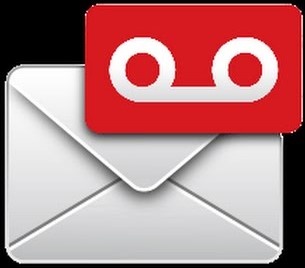
U.S. Patent No. 4,260,854 - Rapid Simultaneous Multiple Access Information Storage and Retrieval System: This patent was granted April 4, 1981, one year after Televoice introduced its voicemail product. It introduces the concept of “…multiple simultaneous…audio dictation…” The inventors were Gerald Kolodny and Paul Hughes, and the patent was assigned to Sudbury Systems. Here is the abstract: Rapid simultaneous multiple access information storage and retrieval system including multiple simultaneously available audio dictation inputs and multiple simultaneously available audio outputs, an array of magnetic recording and playback instruments, and a controller operating under computer command for multiplexing the interchange of audio signals between inputs and outputs on the one hand and the magnetic recorder storage means on the other and at the same time for generating control signals to and from the input and output terminals. This patent has 51 Forward Citations.
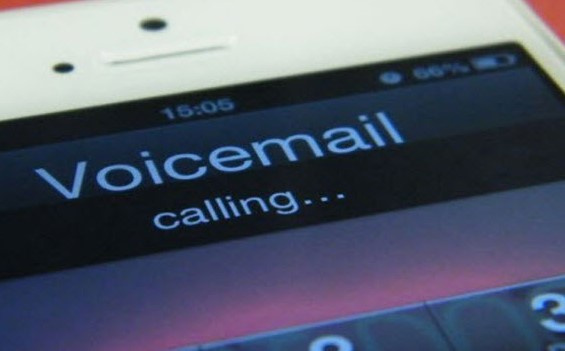
U.S. Patent No. 4,371,752 - Electronic Audio Communication System: This patent was granted February 2, 1983, three years after Televoice introduced voicemail. It included additional features over the first two voicemail patents, such as the ability to forward voicemail messages. The inventors where the previously mentioned Gordon Matthews plus Thomas Tansil and Michael Fannin, and the patent was assigned to ECS Telecommunications, then sold to Glenayre Electronics. Here is the abstract: An advanced electronic telecommunication system is provided for the deposit, storage and delivery of audio messages. A Voice Message System interconnects multiple private branch exchanges of a subscriber with a central telephone office. Individual subscriber users may access the Voice Message System through ON NET telephones or OFF NET telephones. The Voice Message System includes an administrative subsystem, call processor subsystem and a data storage subsystem. The Voice Message System enables the user to deposit a message in data storage subsystem for automatic delivery to other addresses connected to the system. The Voice Message System also enables a user to access the system to determine if any messages have been in the data storage subsystem for him. Pre-recorded instructional messages are deposited in the data storage subsystem for instructing a user on his progress in using the system. A Universal Control Board is a programmable electronic digital signal processing means for controlling certain functions of the administrative subsystem, call processor subsystem and data storage subsystem. This patent has a whopping 242 Forward Citations, making it a far more foundational patent than the others.
So who really, really invented voicemail? We like Elkins.
Build a Better Mousetrap....
Posted: 6/10/2025
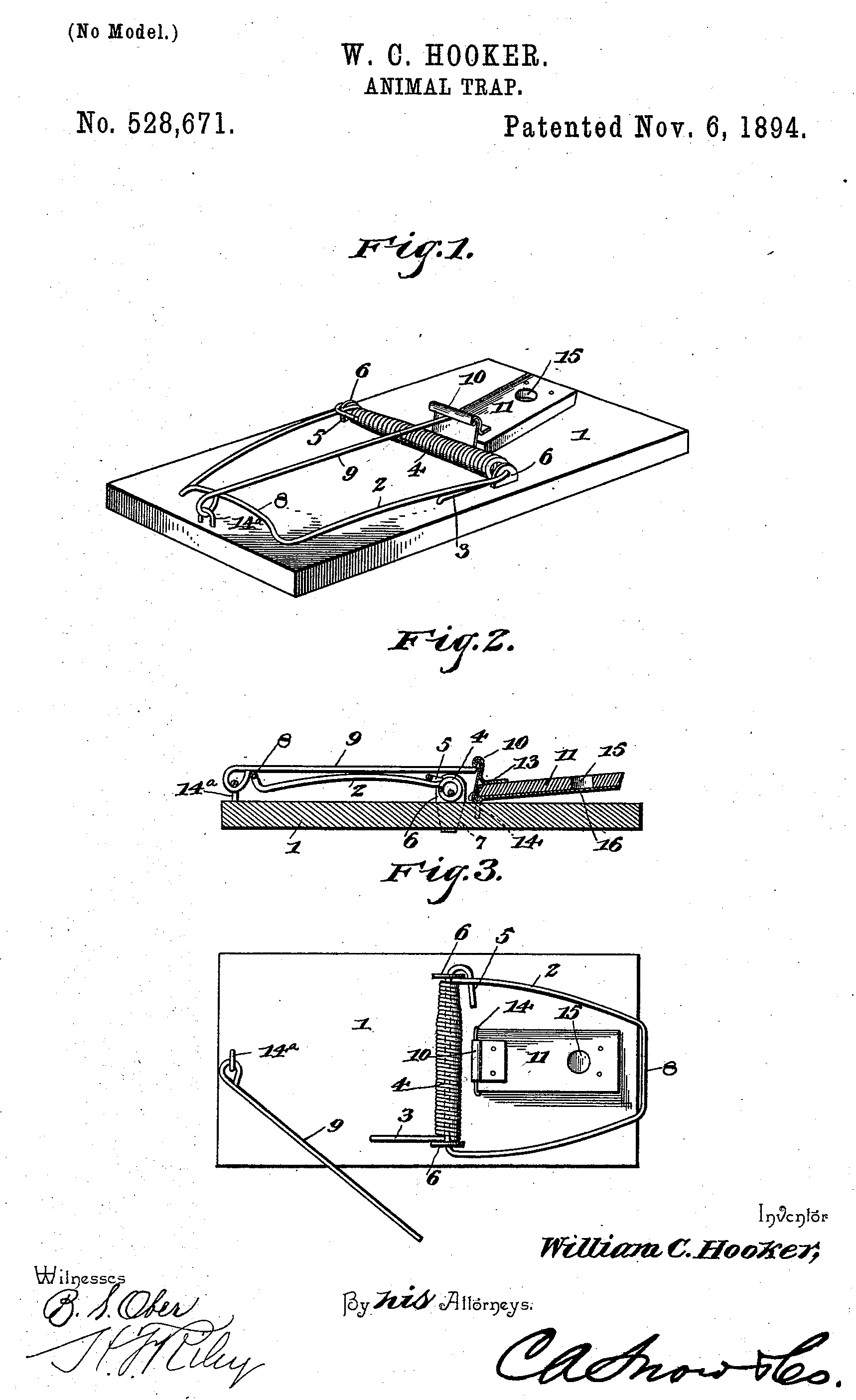
We've all heard this adage from Ralph Waldo Emerson a few thousand times: Build a better mousetrap and the world will beat a path to your door. Well, we thought it was about time we found out who actually did, and it was one William C. Hooker. Mr. Hooker is widely recognized as the man who invented the classic, spring-loaded mousetrap, and that is supported by U.S. Patent No. 528,671 granted November 6, 1894 for an "Animal-Trap." He called it an "animal" trap because in the abstract the invention is described as catching "mice and rats." Why the hyphen? We cannot tell. In the application, no prior art was cited. And, we must assume, none was found by the patent examiner who signed off on the patent.
Taking the "better" concept seriously, Bill followed up with U.S. Patents 580,694 in 1897, 665,906 and 665,907 in 1901, 717,002 in 1902 and 744,343 in 1903. Each patent was an improvement on the previous "Animal-Trap" except it still had that pesky hyphen.
Bill Hooker's genius is still recognized today. In 1981, Sterling Drug was issued U.S. Patent No. 4306,359 for "Animal Traps." We see little significant improvement in the '359 patent over the original '671 patent other than they got rid of the hyphen. And as recently as 2006, one John Peters was issued U.S. Patent No. 7,117,631 for a "Microencapsulated animal trap bait and method of luring animals to traps with microencapsulated bait" that looks a lot like Hooker's 1894 version. Peter’s latest patent has 26 Forward Citations. The search for that better mousetrap continues to this day.
Licensing versus Selling – and Licensing versus Buying – a Patent
Posted: 5/27/2025
We are asked all the time by both patent owners looking to monetize their patents and businesses looking to acquire new technology the benefits of licensing versus selling or buying a patent. So here is our 2 cents.
Most companies prefer to own a patent. They prefer to pay cash, own the patent, and carry it on their books as an asset. They can practice the patent, and assert it against any and all infringers. They may have strategic partners to which they might license or cross-license the patent. But all things being equal, if they have the cash, businesses prefer to buy and own the patent.
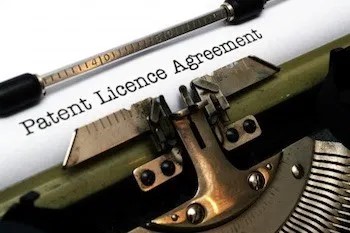
If a company does not have the cash to buy a patent outright, it will consider licensing it. This applies to start-up businesses, or businesses that have faced a downturn and are looking at new technologies to make a turnaround. The problems with licensing a patent – especially if it is a non-exclusive license – is that the licensor can license the patent to all of the first licensee’s competitors, wiping out any competitive advantage that the first licensee had. When a company licenses a patent, there is also the issue of computing each quarter the sales that are subject to the royalty. For example, if it is a U.S. Patent, no royalty is due on export sales, so they have to be backed out in order to compute the royalties that are due.
For the assignee, the problem with licensing is that the licensee may or may not be successful with a product line based on the licensed patent. If Company A licenses a patent, and then never generates any significant sales from products based on the licensed patent – for whatever reason – the licensor takes a hit. But if the product takes off, the licensor can do very well! Selling the patent is low risk/low return. Licensing the patent is high risk/high return.
There is also the issue of enforcement. If a patent is licensed, and the patent is infringed, the licensee often does not have standing to bring an action against the infringer, and the licensor – often an individual and the inventor – does not have the resources to pursue the infringer. So the licensee ends up with a competitor that is infringing the licensed patent and not paying a royalty.
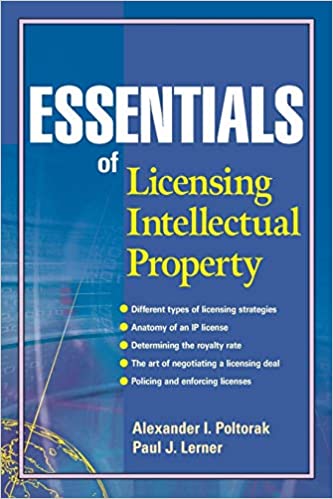
There is no simple response to the question of whether it is better to sell or license, or buy or license, a patent. There are a number of factors that have to be considered. That is why IPOfferings always takes a broad “monetization” approach when we take on a patent as a brokerage project.
There is a very good book that covers patent licensing. “Essentials of Licensing Intellectual Property” is available at Amazon for about $25.00 and it covers most comprehensively what both a licensor and licensee needs to know.
If you are a business executive torn between buying or licensing a patent – or an inventor not sure about selling or licensing your patent – we can help you determine what the key factors are that need to be taken into consideration so you can make the best decision. Because, hey, that’s what we do!
Mitigating Threats to the Patent System
Posted: 4/30/2025
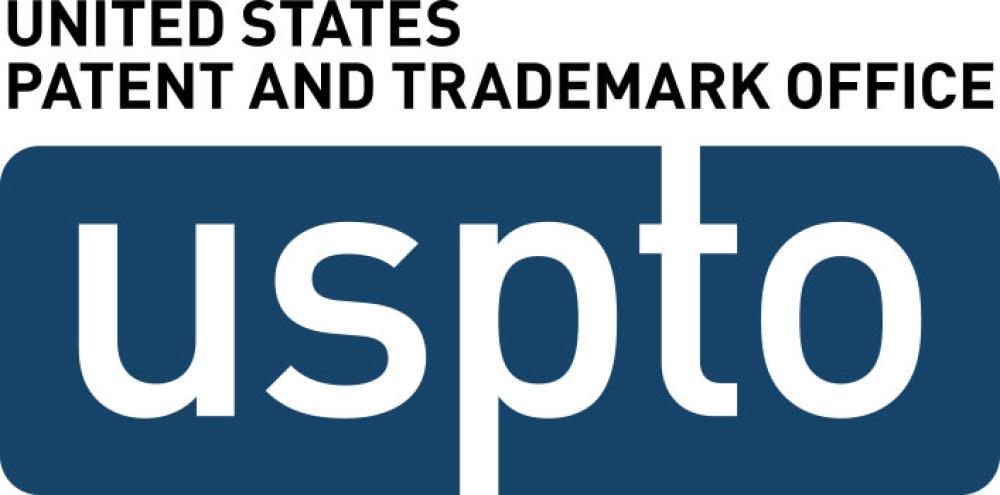
The U.S. Patent and Trademark Office (USPTO) has implemented the Patent Fraud Detection and Mitigation Working Group. The purpose of this Working Group is to protect the integrity of the U.S. patent system. The Working Group will detect and mitigate threats to the patent system by:
- Identifying and reviewing potential misrepresentations to the USPTO, and when appropriate using the administrative sanctions process to address misrepresentations, including false signatures
- Addressing mistakes in fee certifications and assertions
- Monitoring suspicious filings
- Preventing non-practitioners from engaging in the unauthorized practice of law
- Serving as the main point of contact within the USPTO for reporting potential threats to the patent system
- Adapting USPTO systems and processes to respond to new schemes
Like any organization, the USPTO is faced with fraudulent activities. These include:
- Falsified signatures
- False claims of discounted fee status
- Filing of “spurious” patent applications by bad-faith applicants who use technology to electronically file high volumes of patent applications with NO intent to fully prosecute those applications
- Unauthorized representation before the USPTO
Since its founding just a few months ago, this group has produced significant and impressive results! The group identified 3,900 falsified signatures going back to June 2023 and it terminated 3,300 applications going back to October 2024. More than 2,200 fee deficiency notices were mailed in response to false micro entity status certifications, and more than $1.8 million in fee deficiency notices were collected!
Unpracticed Patents Can Become Money in the Bank
Posted: 4/9/2025
We are often contacted by businesses to ask if we can do something with the patents they are not practicing, and the answer is often “Yes” – but’s let’s start with how a company ends up with patents it is not practicing.
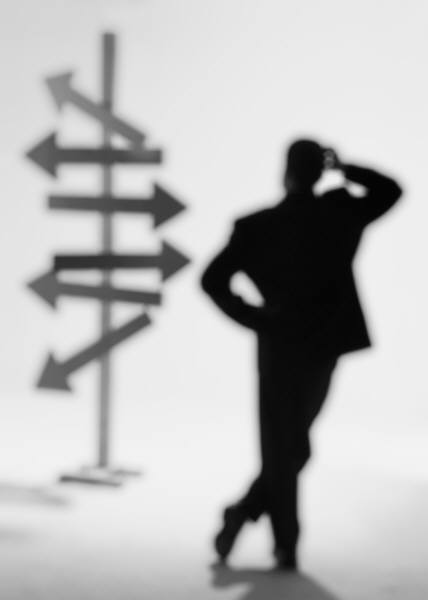
A smart business automatically files for patent protection on any new technology its engineering staff or Research & Development team, or marketing department, or sale force, or Joe from the loading dock comes up with. We actually represented a patent a few years back that was inspired by one of the company’s warehouse employees. But he might not have been Joe.
So, as a wise precaution – and since it does not incur any risks or great costs for the business – smart companies file for patents on any new technology that might have potential for the company.
But then the world happens.
• A business’s focus changes, so it does not ever develop a product based on a patent.
• A new technology comes along that obsoletes the patented technology.
• It may be determined that the market for a product based on a patent is just not big enough to justify the investment.
• A product line based on a patented technology may not have synergy with the enterprise’s other product lines, drawing corporate resources away from the company’s central mission.
• The investment required to bring a new product to market may be too great for a company to be willing to put funding into it.
• A business can be acquired, and the new parent company is moving in a different direction.
• A business unit may be divested or closed, but its patents remain in the parent company.
These are just a few of the reasons why a business may file for and end up with a patent or a patent portfolio, but end up not using the patented technology.
IP Offerings developed the concept of “Patent Triage.” Just has hospital emergency rooms evaluate each incoming patient to determine who needs to be seen immediately and who can wait – a process call “triage” – a business’s patents can be put to scrutiny to determine if they are or are not being practiced. And what alternatives there are to consider.
When a company has its patents put through Patent Triage, each patent will end up in one of five sectors of the Patent Triage pie:
♦ Core: These are patents that are core to the business’s mission and are being practiced. They should be kept and maintained until the day they expire.
♦ Assertion: If a patent is being infringed, an assertion campaign could generate significant income.
♦ Non-Core: These patents are not being practiced, but for any number of reasons it makes sense to retain them. They might have potential a few years out, or they may cover technology that a competitor could use.
♦ Divestiture: These are patents that are not currently – and not likely to be in the future – relevant to the core missions of the business. They should be turned over to a patent broker as they could generate substantial cash. What is the old expression? One man’s trash is another man’s treasure.
♦ Licensing: A business might have patents it is practicing, but other non-competing businesses might benefit from them, and licensing those patents could generate a nice revenue stream.
If your business has over 100 patents, it would make a lot of sense to contact IPOfferings and investigate a Patent Triage review of them.
Soon-to-Be New Director for the Patent Office
Posted: 3/26/2025

A new, in-coming U.S. President has to make about 4,000 appointments, and roughly 1,200 of them require Senate approval. That means a Senate Committee has to hold a hearing and interview the nominee, and then either turn down the candidate or send him or her to the full Senate for confirmation. Not surprising, the cabinet heads (Secretary of State, Attorney-General, EPA Administrator, etc.) come first, so it has taken a while for the incoming administration to work its way down to the Patent Office.
On March 11, the Trump Administration nominated John Squires to be the next Director of the U.S. Patent and Trademark Office and Under-Secretary of Commerce for Intellectual Property. Squires is the chairman of the Emerging Companies and IP practice at the Dilworth Paxson law firm. Prior to that he was Chief IP Counsel at Goldman Sachs from 2000 to 2008. He previously practiced law at Gibson Dunn & Crutcher and Perkins Coie. Squires is generally considered pro-patent.
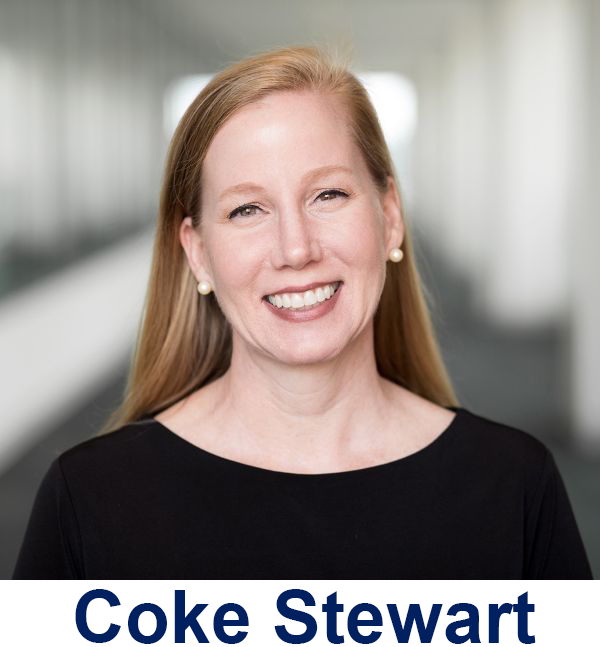
When a new president takes office, all appointees from the previous administration resign. The Patent Office Director under the Biden Administration, Kathi Vidal, left office back on January 20. Each in-coming administration appoints acting Secretaries, Administrators, and Directors. Since January 20, the USPTO has been run by Coke Morgan Stewart. She is known to be a strong believer in the U.S. patent system and patent rights in general, and she has served in several high-level positions in the Patent Office. There were several recommendations to make her new permanent director, but Squires won the nod.
When a new President is elected, he sets up a Transition Team, and it is this group’s job to come up with candidates to fill these 4,000 appointments. The team brings two or three candidates to the President, and he makes the final decision – or so it is supposed to go. The Transition Team usually starts with White House staff positions such as Chief of Staff and Press Secretary that do NOT required Senate approval. They then move to the Cabinet Secretaries that do require Senate approval. The first cabinet Secretary to be approved by the Senate was Marco Rubio for Secretary of State by a 99-0 vote. There are still about 380 appointments to be made that require Senate approval.
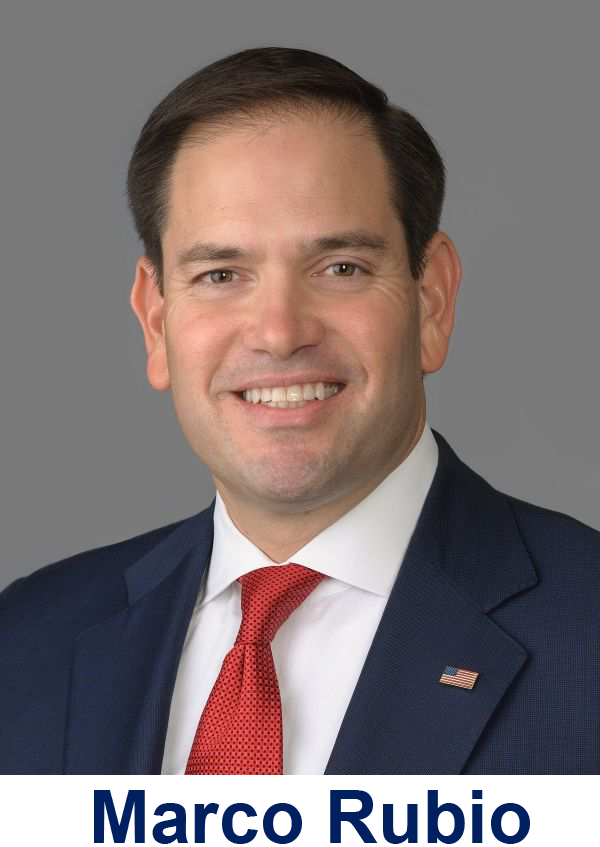
Article II Section 2 of the U.S. Constitution is known as the “Advice and Consent’ clause. He shall have Power, by and with the Advice and Consent of the Senate, to make Treaties, provided two thirds of the Senators present concur; and he shall nominate, and by and with the Advice and Consent of the Senate, shall appoint Ambassadors, other public Ministers and Consuls, Judges of the supreme Court, and all other Officers of the United States, whose Appointments are not herein otherwise provided for, and which shall be established by Law: but the Congress may by Law vest the Appointment of such inferior Officers, as they think proper, in the President alone, in the Courts of Law, or in the Heads of Departments.
The brilliance of the Founding Fathers continues to amaze us!
There Are Two Broad Strategies for Monetizing a Patent – Part II
Posted: 3/12/2025
In our last installment, we shared some advice regarding selling or licensing a patent versus asserting the patent against its infringers. And we emphasized that most patents are NOT infringed, so that leaves the patent owner with an uninfringed patent only one monetization option – find a patent broker to represent him or her and sell or license the patent. A business with a patent it is not practicing has the same two options, but only if the patent is being infringed.
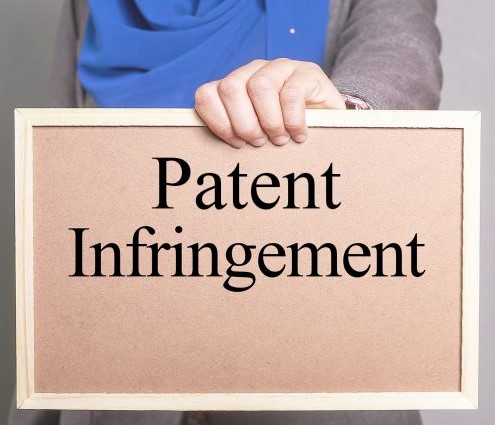
We defined infringement and included our recommendation that a patent owner – be it an individual or a business – invest in an Initial Infringement Analysis to clearly determine if his or her or its patent is truly infringed and by what products. An Initial Infringement Analysis is a study performed by a team of patent professionals that specifically identifies products that are infringing a patent and ranks them in order of viability as assertion properties. That ranking is very important because a product might be infringing your patent, but it might not be a viable candidate for patent assertion.
Based on the results of the Initial Infringement Analysis, the patent owner can identify the most viable assertion candidates, and order a Claim Chart for each. A Claim Chart is a document that breaks up a claim from a patent into its key elements, and then documents infringement of each element of the claim. A Claim Chart is the “smoking gun” of patent litigation that clinches the case for the patent owner.
We like the old expression “Where there’s smoke, there’s fire” because it applies very directly to the possible infringement of a patent. The most obvious indicator that a patent has been infringed is if the patent has a large number of Forward Citations. When a patent application is filed, it includes Prior Art – any existing documents (including prior patent filings) that are foundational to the technology in the patent application. A Forward Citation is the opposite of Prior Art. Rather than a patent that is cited by the applicant, it is a patent application that cites your patent as being foundational to its technology.

When a patent has over 100 Forward Citations, that means that all those companies have products covered by technology of which your patent is foundational. It is not uncommon for companies to file for patents that cite a previous patent, and end up – either accidentally or on-purpose – infringing that cited patent!
Here are lHow do you find out how many Forward Citations your patent has? The Patent Office and www.uspto.gov cannot help you. You need to go to Google Patents. On the right side of the page there is a box that lists all the key data about the patent. Toward the bottom under “Info:” appears a link to the patents cited by the application (Patent Citations) and next to that is a link to the patent filings that cited your patent (Cited by). As we have commented before, Google Patents is a totally free service, but it provides more data than the USPTO website!
If your patent has 50 or more Forward Citations, it is possible it is infringed. If it has 100 or more, it is unlikely that it has not! The more Forward Citations, the more likely that patent has been infringed. Take a look at U.S. Patent No. 9,805,519 at Google Patents – a patent we sold for a client a few years back – and note how many Forward Citations it has!
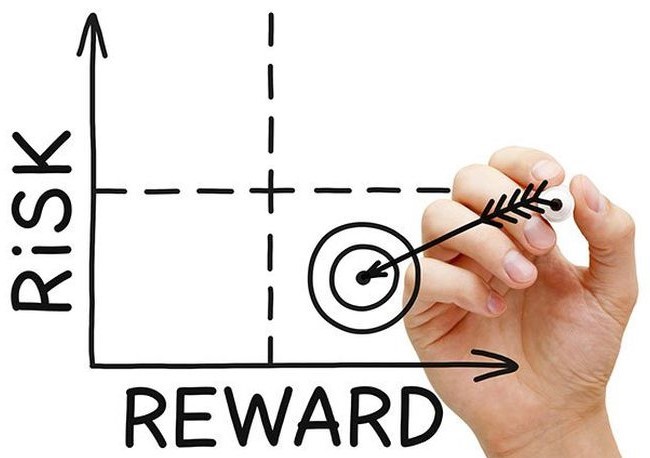
Returning to the Initial Infringement Analysis and Claim Charts, we are asked all the time by patent owners why they cannot create these themselves. Our response is that you could go to dental school and then perform root canal on yourself, but is it really worth all the effort? These documents have to be created by trained, recognized, professionals who are independent third parties. That is why when you buy a house, you need to get an appraisal from a qualified professional. You simply cannot do it yourself and have any credibility!
As we included in the last installment, brokerage is the Low Risk/ Moderate Reward option, while patent assertion is the High Risk/High Reward option. One of the strategies that companies charged with patent infringement use is to force the infringed patent into an inter partes review at the Patent Trial and Appeal Board. If the infringer can get your patent invalidated, it essentially disappears as a threat. That is the major risk of patent assertion that is not a factor in patent brokerage.
Our last item for this installment is the inventor’s involvement in patent assertion. The inventor will very likely be deposed by attorneys for the infringer. That is, the inventor will be questioned by the infringer’s attorneys to determine what type of witness he or she would be should the patent infringement lawsuit go to trial. And if it does go to trial – most do NOT – the inventor will be called to testify.
There Are Two Broad Strategies for Monetizing a Patent – Part I
Posted: 2/26/2025
The inventor who is not going to set up a factory and manufacture and sell a product based on his or her patent is left with two monetization alternatives – sell or license the patent or assert it against its infringers. Asserting it against its infringers is only an option, of course, if the patent is being infringed!
And, therein they say, lies the rub. The reality is that most patents are NOT being infringed, so that leaves the patent owner with an uninfringed patent only one monetization option – find a patent broker to represent him or her and sell or license the patent. A business with a patent it is not practicing has the same two options, but only if the patent is being infringed.
For most patent owners – individuals and businesses – there is just one monetization option and asserting the patent is off the table. But the patent owner – an individual or a business – owning a patent that is being infringed is confronted with some challenging decisions that need to be made.
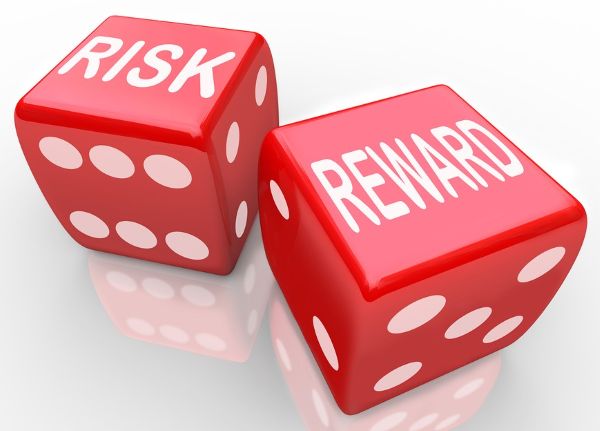
Very broadly, putting your patent up for sale is the Low Risk/ Moderate Return option, while asserting your patent against its infringers is the High Risk/High Return option. While there is very little downside to turning your patent over to a patent broker for the purpose of finding a buyer or licensee, the reward is moderate, likely in the hundreds of thousands of dollars for the sale of a single patent. Asserting your patent against in infringer involves considerable risk – including the possibility of actually losing the patent – while the rewards can be significant, especially if the patent has multiple infringers as is often the case!
Let’s start with exactly what “infringement” is. In order for a product to be infringing a patent that product must include every element of one Independent Claim from the patent. It does not have to duplicate every claim in the patent, just one Independent Claim – but every element of that Claim.
We had a client a few years ago who had a patent for a luggage-tracking device, and he identified a product that appeared to infringe his patent. Upon closer examination, we saw that one of the elements in the Independent Claim in his patent was that the invention included a USB port. The product the inventor identified copied exactly what was in the Independent Claim from the patent except that it did not include a USB port. So, it was not infringing the patent! Had the patent been written without the USB port in the Independent Claim, and had the USB port instead been included in a Dependent Claim, we would have had an excellent claim for infringement.

For the patent owner who believes that his or her or its patent has been infringed, we offer our Initial Infringement Analysis. It is a study performed by a team of patent professionals that specifically identifies products that are infringing a patent and ranks them in order of viability as assertion properties. A product might be infringing your patent, but it might not be a viable candidate for patent assertion. We will circle back to that issue.
From the Initial Infringement Analysis, the patent owner can identify the most viable assertion candidates, and order a Claim Chart for each. A Claim Chart is a document that breaks up a claim from a patent into its key elements, and then documents infringement of each element of the claim. A Claim Chart is the “smoking gun” of patent litigation that clinches the case for the patent owner.

IPOfferings will then shop the Claim Charts to the Patent Assertion Firms with which we work and find one that will represent the patent owner on a contingency basis. There is a modest investment on the part of the patent owner for the Initial Infringement Analysis and a modest investment in Claim Charts. But once the patent owner has these, a Patent Assertion Firm will take over and fully manage and fully finance a comprehensive patent assertion campaign against the infringers. The Patent Assertion Firm shares with the patent owner in the proceeds of the patent assertion campaign per an agreed-upon formula.
Remember the High Risk/High Reward of patent assertion? It is not uncommon for a patent infringement lawsuit to conclude with a settlement of several hundred thousand or even a few million dollars! And it is not uncommon for a patent to have multiple infringers – so multiple settlements!
Let’s also circle back to the viability issue. Under U.S. law, the penalty for patent infringement is “reasonable royalties" – that is, what the infringer would have paid the patent owner in royalties had the company licensed the patent in the first place and not infringed it. This does not seem fair. You get caught infringing a patent and your only penalty is you have to the pay the royalties you would have paid had you followed the law and licensed the patent in the first place, but that is what the penalty is!
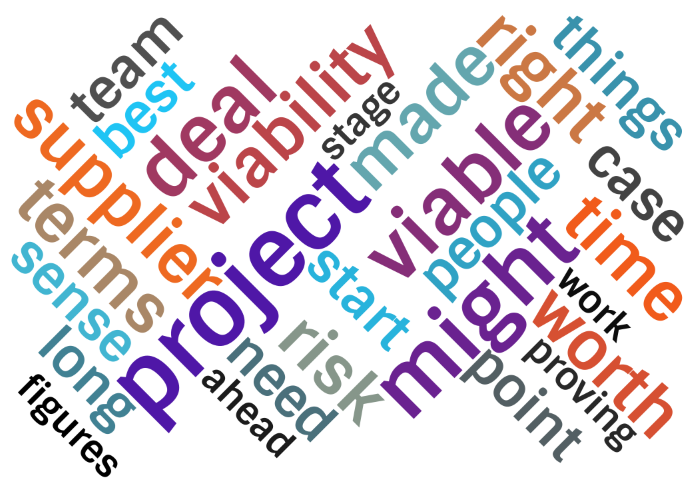
Where the viability factor comes in is that it will cost the Patent Assertion Firm in the range of $100,000 to $200,000 – maybe even more – in legal fees and other costs to launch and try a patent infringement claim in federal court. If the sales of the infringing product are just $1 million, a “reasonable royalty” of 1% would result in damages for the infringer of about $10,000 – not nearly enough to cover the expenses of a lawsuit. The reality is that the infringing product must be generating sales in the $20 to $30 million range for there to be sufficient “reasonable royalties” in damages to make the undertaking financially viable. And that is the viability factor.
Next Installment: What indicates that a patent might be infringed? Why can’t the inventor do this himself or herself? What are the risks of patent assertion? What is the inventor’s involvement in the process?
Patent Pendency May Be Addressed by Incoming Secretary of Commerce
Posted: 2/12/2025

Unnecessarily long patent pendency has been a pet peeve of IPOffferings – and most inventors and patent practitioners – for many years. “First Office Action Pendency” is how long it takes from when a patent application is initially filed to when the Patent Office makes its first Office Action – essentially how long it takes to assign a patent examiner to the application, for the patent examiner to review that application, and for the patent examiner to make his or her first contact with the patent applicant. “Total Pendency” is how long it takes from its filing date for a patent application to reach a final disposition – an issued patent or an abandoned application. This includes time periods during which the applicant is awaiting action by the patent examiner and the patent examiner his awaiting action by the applicant or the applicant’s patent attorney.
As of December 2024, First Action Dependency was 20.3 months. During all of 2023 and 2024, First Action Pendency ranged from 16.1 months to 20.3 months – so pendency worsened during that two-year period. As of December 2024, Total Patent Pendency was 26.1 months, and during 2023-2024, it ranged from a low of 24.7 months to a high of 26.3 months. In both cases, trend is not in the right direction.

Why is Patent Pendency important? And why do we make such a stink about it? Because America’s competitiveness in a Flat World is largely based on our ability to patent the latest technologies so we benefit from American creativity and genius. In a world in which everything has been compressed – including time – it is entirely possible for an inventor to apply for a patent on his or her invention, and for the technology behind the invention to be obsolete by the time the patent is granted over two years later!
The sad reality is that things have not improved dramatically over the last 100-plus years at the Patent Office. Our favorite patent is U.S. Patent No. 821,339 for a "Flying Machine" that was awarded to two guys named Orville and Wilbur Wright on May 22, 1906. Here is what we do not understand. The Wright brothers applied for that patent on March 23, 1903. How could it have taken over three years to grant that patent? There was no prior art to review! There were newsreels of the flight. What took so long?
Here is the other factor. It takes 20 months to assign a patent examiner and for the patent examiner to review the patent application and respond to the application. But it takes just six months longer – 26 months – to make a final resolution of the patent application. All the real work is done in the last six months, and the first 20 months is essentially working through a backlog of applications!

Relief may come in the form of one Howard Lutnick, President Trump’s nominee to become the next Secretary of Commerce. As all of you should know, the U.S. Patent and Trademark Office (USPTO) is an agency within the Department of Commerce, and the USPTO Director is the Assistant Secretary of Commerce for Intellectual Property, so he or she – once he or she is nominated by the President and confirmed by the Senate – will report to the Secretary of Commerce.
Howard Lutnick – one of the key execs at Cantor & Fitzgerald and a billionaire – appeared before the Senate Commerce, Science, and Transportation Committee on January 29, and he specifically addressed the importance of the patent system to the U.S. economy and the need to reduce pendency.
Senator Marsha Blackburn, a Republican from Tennessee, asked Lutnick “I don't know if you've looked at the USPTO, the backlog of applications there is 820,000. It takes 21 months to get a patent pending, and as you know, some of our auto engineers, some of our health care engineers that are working on algorithms and new delivery Systems, they don't have that long to get that kind of assurance. So will you work with us, we need to do a pilot project so that we can push forward AI and Quantum and some of these patents that are requested in these areas if we're going to go back to beating China in these?”
Lutnick’s response was “The backlog is unaccept-able and my pursuit will be the rigorous reduction of that to get it down. It used to historically be 500,000 and I thought that was unacceptable. I am a patent holder, I've used the patent office over many years, it could be much more productive but the Chinese are abusing us. They don't give us protection in China and they come in and use our patent office against us. This is going to end, we are going to study that, and we are going to work on ending that and making sure our American inventors get taken care of quickly and effectively.”
Some of what Lutnick said may have been to please committee members, but we are going to take him at his word and hold him to it. Lutnick was approved out of the Senate Commerce, Science, and Transportation Committee by a 16-12 vote, so it is very likely he will be confirmed by the full Senate. We now wait to see who President Trump nominates for USPTO Director.
Congress Will Address Three Patent-Related Bills in 2025
Posted: 1/22/2025
PREVAIL, RESTORE, and PERA are three patent-related bills that will come before Congress this year – and each, if passed, will have a profound impact on patent applicants and patent owners. Each bill has bipartisan (i.e., both Republican and Democratic) support, and two have a reasonably good chance of passing and being enacted into law.
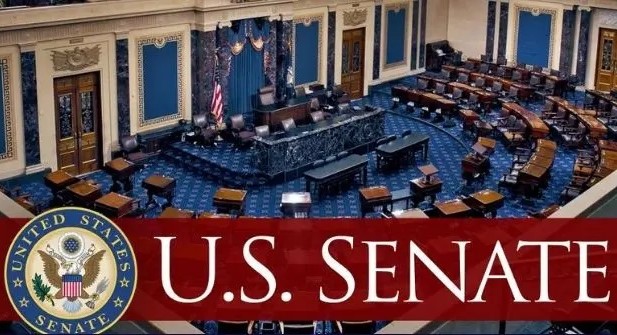
♦ PREVAIL (Promoting and Respecting Economically Vital American Innovation Leadership) Act is designed to restore fairness to the Patent Trial and Appeal Board (PTAB) by promoting innovation and competition. The bill includes several key elements.
▪ Standing Requirement: Only those sued or threatened by a patent could use an inter partes review (IPR) to preemptively challenge a patent’s validity.
▪ Limits to Duplicate Attacks: The act would prevent an entity from helping fund one IPR and then bringing a separate IPR challenge later. And, after challenging a patent using an IPR, challengers could not also seek to invalidate that patent in federal district court or before the International Trade Commission.
▪ Limits to Duplicate Arguments: For an IPR to be based on evidence or arguments previously presented to the PTAB, the act would require “exceptional circumstances.”
▪ Higher Burden of Proof: A patent must be proven invalid by “clear and convincing” evidence, not simply by a “preponderance” of the evidence” as under current law.
▪ End USPTO Fee Diversion: Fees paid to the USPTO can only be used for USPTO activities, instead of the current practice of distributing some of this revenue to other government agencies.
PREVAIL was introduced by Senators Chris Coons (D-Delaware), Thom Tillis (R-North Carolina), Dick Durbin (D-Illinois), and Mazie Hirono (D-Hawaii) back in July of 2023. Ken Buck (R-Colorado) initially sponsored the legislation in the House, and co-sponsors later joined from both parties. In November 2024, Senator Coons introduced a Manager’s Amendment to PREVAIL and it passed out of the Senate Judiciary Committee on a vote of 11-10, so the PREVAIL Act is now subject to debate before in the full Senate.

♦ RESTORE (Realizing Engineering, Science, and Technology Opportunities by Restoring Exclusive Patent Rights) Act addresses several U.S. Supreme Court rulings that have had profound effects on patent owners by weakening patent rights. Among these is the elimination of an injunction banning the sale of infringing products if the patent owner is not a market participant. RESTORE would reverse that by adding clause (b) to the 35 U.S.C. § 283.
▪ Equity Principles: A court having jurisdiction of cases under this title may grant injunctions in accordance with the principles of equity to prevent the violation of any right secured by patent, on such terms as the court deems reasonable.
▪ Rebuttable Presumption: If a court enters a final judgment finding infringement of a right secured by the patent, the patent owner shall be entitled to a rebuttable presumption that the court should grant a permanent injunction with respect to that infringing conduct.
RESTORE was also introduced by Senator Chris Coons (D-Delaware) along with Senator Tom Cotton (R-Arkansas) in July of last year. A companion bill was introduced in the House by Nathaniel Moran (R-Texas) and Madeleine Dean (D-Pennsylvania) with co-sponsors Representatives Chip Roy (R-Texas), Hank Johnson (D-Georgia), and Deborah Ross (D-North Carolina). A hearing on this bill took place Wednesday, December 18, 2024.
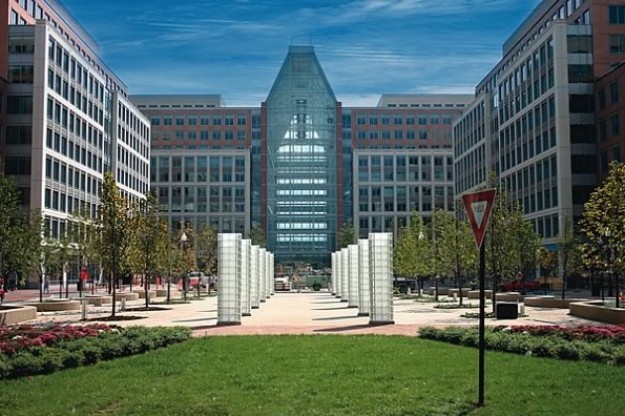
♦ PERA (Patent Eligibility Restoration) Act would establish that “useful” discoveries are eligible for patent protection. The U.S. Constitution expressly authorizes Congress to “promote the Progress of Science and useful Arts” through incentives for just such disruptive creativity: “by securing for limited Times to Authors and Inventors the exclusive Right to their respective Writings and Discoveries.” So, both the Constitution and the Patent Act suggest that patents can be issued for discoveries as well as for inventions. This law would establish that any invention or discovery that can be claimed as a useful process, machine, manufacture, or composition of matter, or any useful improvement thereof, is eligible for patent protection, but there would be a few exceptions.
▪ Mathematical Formula: If it is not claimed as part of a useful process, machine, manufacture, or composition of matter
▪ Mental Process: If performed solely in the mind of a human being
▪ Unmodified Gene: That already exists in the human body
▪ Unmodified Natural Material: That already exists in nature
▪ Economic, Financial, Business, Social, Cultural, or Artistic Process: Even if a step in this process refers to a machine or manufacture
PERA was introduced by Senators Chris Coons (D-Delaware) and Thom Tillis (R-North Carolina). Representatives Kevin Kiley (R-California) and Scott Peters (D-California) introduced the bill in the House in September of last year. It was scheduled for a vote before the Senate Judiciary Committee but it was withdrawn in November after it appeared to not to have sufficient committee support to advance for a Senate vote. However, PERA may be re-considered because it addresses concerns outlined in a petition before the U.S. Supreme Court to grant certiorari in American Axle & Manufacturing, Inc. v. Neapco Holdings LLC.
Words of the Year for 2024
Posted: 12/18/2024
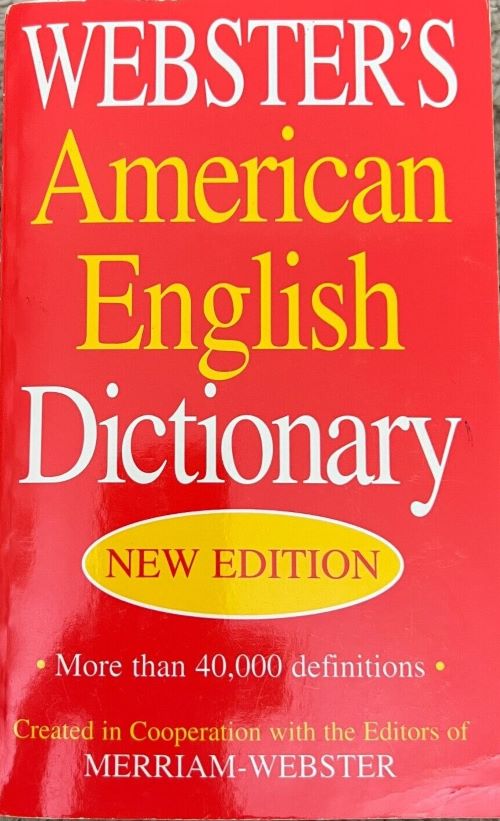
The Merriam-Webster dictionary (our favorite) chose "polarization" as its most significant word for 2024. It is defined as "division into two sharply distinct opposites". We cannot imagine what they must be referring to. What we like most about Merriam-Webster is that they describe their dictionary as of “American English” and not just “English” – which is what they speak in England. The Merriam-Webster Dictionary of American English has been published by Merriam-Webster, Incorporated, the company that was founded by brothers George and Charles Merriam, since 1831.
The Oxford English Dictionary (published by the Oxford University Press) selected "brain rot" as its word of the year because it was used just almost two and half times more often in 2024 that in 2023.
The Collins Dictionary (published by HarperCollins, the mega publishing house) is promoting “brat” as its word of the year. Collins defines "brat" as someone with a "confident, independent and hedonistic attitude.” Most of the brats we know are two-year olds.
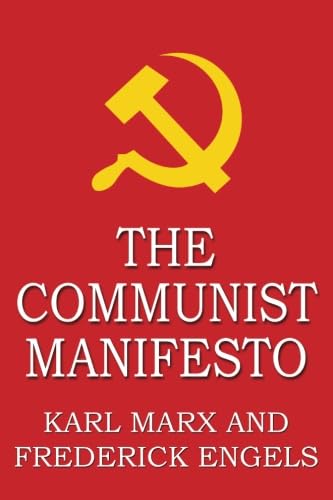
The Cambridge Dictionary (published by the Cambridge University Press) offers up "manifest" as its most significant word for 2024. It defines “manifest” as “to show something clearly, through signs or actions.” We cannot help but think of America’s Manifest Destiny (which succeeded) and Karl Marx’s Communist Manifesto (which failed).
Dictionary.com's word of the year for 2024 is "demure.” As an online dictionary, the dictionary’s editors are online thinkers and we accept that. They selected “demure” because of the word's popularity, due in large part to TikTok influencer Jools Lebron who used the phrase "very demure, very mindful" in videos that went viral. Until today, we never heard of Jools Lebron. Have you?
A Glossary of Terms for Patent Brokerage and Patent Assertion – Part III
Posted: 10/29/2024
We are asked all the time to define the words we use in this column, so over the last two instalments we’ve been compiling a glossary of terms that are commonly used in patent brokerage and patent assertion. In this third installment, we finish up the list. Here goes…
Application Date – The date on which a patent application was submitted to the USPTO either in person, via mail, or online
Continuation – A patent application that is filed before a patent is granted to create a new patent application that shares the Claims and Priority Date of the prior patent filing. The purpose of a Continuation is to create a new patent that expands on the invention covered in the prior patent. It is a wise practice to file a Continuation before a patent is granted so that should the inventor or assignee discover something he or she or it wants to add to the original invention, the Continuation can be used to do that. A Continuation can be filed from a Continuation Application to create yet a third patent that shares the Claims and Priority Date of the first patent, and this process can be continued indefinitely. The only downside of a Continuation is that it does not have a full patent life of 20 years from its Application Date, but 20 years from its Priority Date, the Application Date of the original patent in the patent family.
Defensive Patenting – Acquisition of a patent by a business to prevent competitors from using it in their products or to protect the company from patent infringement litigation and create a shield against patent claims

Design Patent – A U.S. Patent that covers not how an invention works (that’s a Utility Patent), but the design, shape, ornamentation, or visual appearance of an item. A Design Patent should not be confused with a Trademark that covers the name or brand of a product.
Divisional – A patent application that is file before a patent is granted to create a new patent application that includes some of the Claims from the original patent filing and the original patent filing’s Priority Date
Expired Patent – A patent that is no longer valid and enforceable because the period provided by law for a U.S. Patent (20 years from the Application Date or Priority Date) has run out
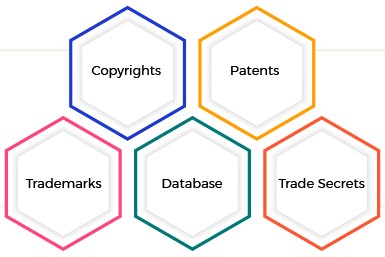
Google Patents Review – A free service provided by the search engine Google that lists all U.S. Patents and published patent applications, as well as PCT and EPO Patent Applications and patent filings from about 40 nations. Many in the IP community find Google Patents (https://patents.google.com/) easier to use that the Patent Office website (www.uspto.gov).
Intellectual Assets – Patents, copyrights, trademarks, service marks and/or trade secrets assigned to a business, as well as other non-tangible assets such as good will and know-how
IP Community – Patent attorneys, patent agents, patent brokers, patent litigators, IP counsel, IP directors, and others involved in the prosecution, monetization, and commercialization of patents and other forms of intellectual property
IP Director – A manager at a business who is responsible for the acquisition of patents and the management of the business’s patent inventory
Lapsed Patent – A patent that is no longer valid and enforceable because the assignee failed to pay a Maintenance Fee
Maintenance Fee – Once a patent is granted, there are three Maintenance Fees that must be paid to keep a patent valid and enforceable. The first Maintenance Fee is due three-and-a-half years from when the patent is granted, the second Maintenance Fee is due at seven-and-a-half-years, and the third Maintenance Fee is due at eleven-and-a-half years. The Patent Office bills the assignee for each Maintenance Fee as it comes due.
Non-Provisional Patent Application – A patent application that is usually filed by an inventor who will not be practicing the invention covered by the patent and that the inventor hopes to monetize. A Non-Provisional Patent Application is published shortly after it is filed.
Patent Family – A group of patents that were created by filing Continuations or Divisionals so that all the patents share the same original root patent and the same Priority Date
Patent Portfolio – A group of patents that can be from different filings and different patent granting authorities that covers a common invention or different aspects of the same invention. Patent portfolios are often sold as a package to one acquirer, but the patents in the portfolio can be broken up and sold to multiple buyers.
Plant Patent – A U.S. Patent that covers a vegetable, fruit, flower, tree, or other botanical product
Priority Date – The date on which a patent application was first published. In the case of a continuation application, it is the date on which the first patent application in the patent family was filed. When a patent is asserted, its Priority Date is a critical factor in establishing when patent coverage can be back-dated to.
Provisional Patent Application – A patent application that is usually filed by an entity that will practice the invention covered by the patent to establish an early as possible Priority Date for the patent filing. After 18 months, the patent application is published and it becomes a Non-Provisional Patent Application.
Published Patent Application – A patent application that has been made pubic by the USPTO. The complete patent application appears at the Patent Office website and other patent sites such as Google Patents. Publishing a patent application makes it easier to monetize the patent application.
Term Adjustment – A period of time added to the life of a patent because the Patent Office was lax in its review of the patent application
Utility Patent – The most common form of a U.S. Patent, it covers inventions
We will consolidate all the terms we included in this and our previous two installments and create a Patent Brokerage and Patent Assertion Glossary at our website and provide a link to it in the next issue.
A Glossary of Terms for Patent Brokerage and Patent Assertion – Part II
Posted: 10/29/2024
We are asked all the time to define the words we use in this column, so last issue we began developing a glossary of patent brokerage and patent assertion words and phrases. We received requests for many more definitions, so here they are.
Assignment – The recordation of the ownership of a patent by the U.S. Patent and Trademark Office. All patent assignments – like deeds to real property – are public records.
Assignor – A patent that does not cover a device or apparatus, but covers a method of conducting business
Business Method Patent – What is ordered by the court to be paid to the plaintiff as compensation for the harm (or damage) done to him, her, or it
Claim Chart – A document created by a team of patent and technology experts that maps the infringement of a specific product or service against every aspect of an Independent Claim in a patent. A Claim Chart is the evidence presented in a patent infringement lawsuit by the plaintiff to prove infringement of his or her or its patent.

Infringement Analysis (or Initial Infringement Analysis) – A detailed study of a patent by a team of patent and technology experts to identify infringers of the patent. An infringement analysis is often performed to decide what Claim Charts should be developed.
Intangible Assets – A common line item on a Balance Sheet that includes such assets as patents, trademarks, trade secrets, and good will
Inter Partes Review – A review of the validity of a patent, or Claims in a patent, by a third party. Inter partes claims are sometimes filed by patent owners who believe that a newer patent should not have been granted as it essentially covers the invention in the filer’s patent or by an infringer who seeks to have the patent invalidated so it cannot be asserted against that filer.

IP Consulting (or Intellectual Property Consulting) – A package of services provided to owners of patents, trademarks and service marks, copyrights, trade secrets, and other intellectual property that enables them to make better use of, and/or receive a better return of their investment in, their intellectual property.
Licensee – The party that pays a royalty in exchange for the use of a patented technology
License-to-Buy (or License-to-Acquire) – A Patent License Agreement that gives the licensee the option to acquire the patent for a pre-agreed-to price at any time. In most such agreements, the royalties paid by the licensee are credited in full or part against the purchase price.
Licensor – A patent owner that collects a royalty in exchange for the use of the patent technology
Patent Assertion Firm – A business that specializes in asserting a patent or patents on behalf of the patentee. A patent assertion firm typically works on contingency and splits the revenue it generates with the client or patentee. A Patent Assertion Firm requires prospective clients seeking its services to provide Claim Charts to document the infringement before it considers representing the patent owner.
Patent Broker – A firm that represents the owner (or “assignee”) of a patent application, patent, patent family, or patent portfolio with the goal of selling, licensing, or otherwise monetizing the asset. A patent broker typically charges a modest fee on the front end and a larger fee on the back-end based on the revenue generated by its efforts.
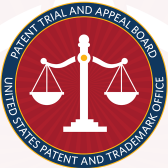
Patent Commercialization – The generation of revenue from the practice (or use) of a patent by manufacturing and selling a product or service based on the technology covered by the patent
Patent License Agreement – The document that details the terms and conditions of the licensing of a patent or patents. The terms and conditions are negotiated and ultimately agreed to by the licensor and licensee who both sign the agreement.
Patent Monetization – The generation of revenue from the sale or licensing of a patent or from other business arrangements such as an asset swap or joint venture
Patent Purchase Agreement – The document that details the terms and conditions of the sale of a patent or patents. The terms and conditions are negotiated and ultimately agreed to by the seller and buyer who both sign the agreement. It is often referred to as a “PPA.”
Patent Trial and Appeal Board – The agency within the U.S. Patent and Trademark Office that hears inter partes reviews and post grant appeals, and reviews requests for reviving lapsed patents. The agency is often referred to as the “PTAB.”
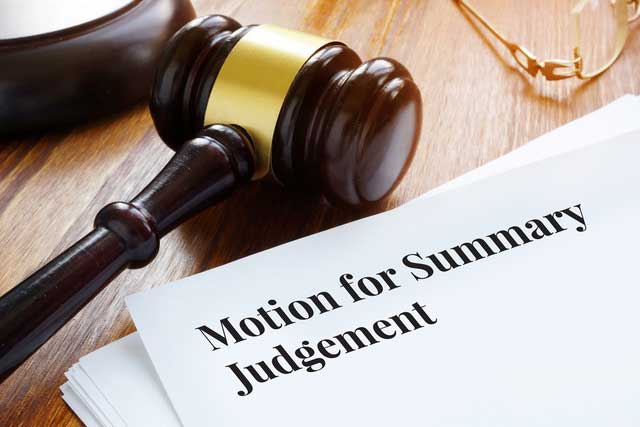
Post-Grant Appeal – A trial that reviews and determines the patentability of a patent's claims. Post-Grant Appeals are conducted by the Patent Trial and Appeal Board.
Section 101 Rejection – Rejection of a patent application because it fails to meet the requirements for patentability as defined in Section 101 of U.S. patent law.
Summary Judgement – A court's final decision in a civil case that ends the case without a trial. A party can request a summary judgment for the entire case or for part of it. Where a Summary Judgement comes into play during patent infringement litigation is when the court deems that a patent is not valid, is not being infringed, or that the plaintiff has failed to make a prima facie claim of infringement.
Term Sheet – A typically one-page document that is used to prepare a Patent Purchase Agreement or Patent License Agreement. It summarizes all the key aspects of the agreement such as purchase price or royalties to be paid as well as other terms and conditions mutually agreed to by the parties to the agreement. It may go through several drafts until it is finalized.
More next issue…
A Glossary of Terms for Patent Brokerage and Patent Assertion
Posted: 10/10/2024
We are asked all the time to define the words we use in this column. A few of the words and terms we are asked to define most often are “patentee,” “assignee,” “plaintiff,” “defendant,” and “prosecution” as well as what the difference is between “patent enforcement” and “patent assertion.” So, to remedy this situation, we introduce in this installment of Patent Leather our first Patent Terminology Glossary.
Assignee – When a patent is sold, the new owner of the patent
Copyright – Protection of written works (such as books, plays, newspapers, and magazines), recordings (songs and motion pictures), and visual arts (such as paintings or other artwork). Copyrights convey to the copyright owner an exclusionary right – the right to prevent others from copying, offering for sale, performing, displaying or making derivative versions of a work of authorship. The duration of a copyright depends on several factors, but is at least 70 years.
Damages – What is ordered by the court to be paid to the plaintiff as compensation for the harm (or damage) done to him, her, or it
Damages Expert – Third-party with documented expertise who helps calculate the economic damages suffered by the plaintiff in a lawsuit including lost income and use of the patented invention
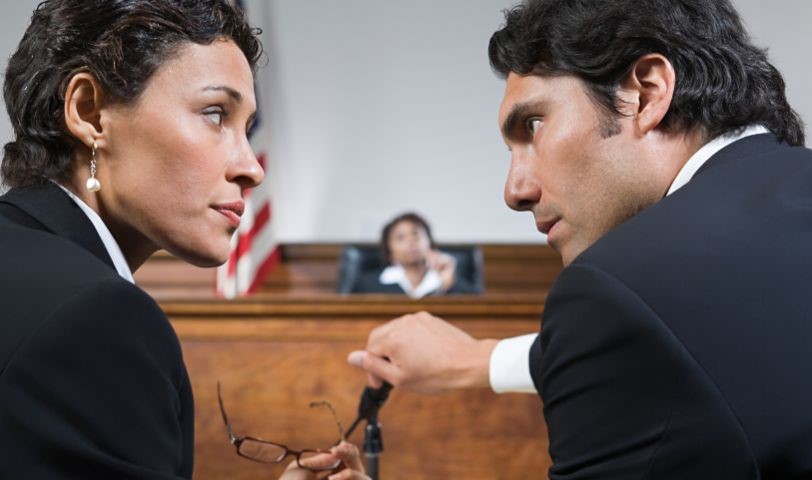
Defendant – The business or other entity that is being sued for patent infringement. The term “defendant” is also used to describe a person charged with a criminal offense.
Forward Citation – A patent that cites a previously filed patent as Prior Art. The more Forward Citations a patent has, the more foundational is the invention covered by that patent.
Intellectual Property (or “IP”) – Patents, copyrights, trademarks, service marks, and/or trade secrets and specialized know-how
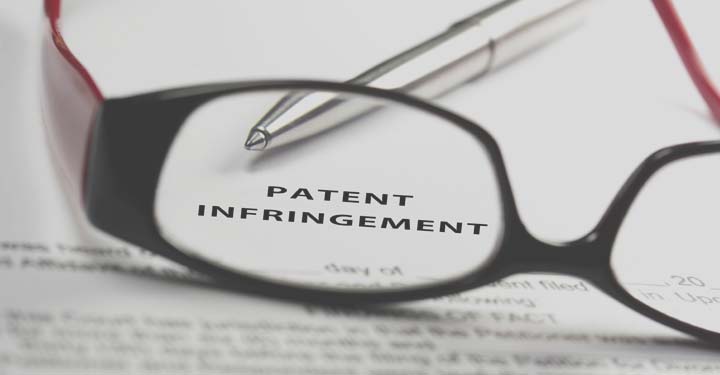
Intellectual Property Audit – A review of an entity’s intellectual property to ensure that all intellectual property is current and valid, that it is being properly enforced, and what intellectual assets can be converted into intellectual property by filing for patents, copyrights, trademarks, or service marks
IP Portfolio Mining – Review and analysis of an entity’s patents, trademarks, and other IP inventory to determine which have value that can be returned to the entity and how
IP strategy – Comprehensive mix of tactics and strategies such as knowing what the competitors’ patent portfolios are worth, identifying potential patent infringers and licensees, proposing strategic alliances, and identifying intellectual assets that have not been monetized or commercialized
Out-of-Court Settlement – An agreement among the parties to a lawsuit (both a patent infringement lawsuit and other civil lawsuits) to end the trial and provide compensation and other considerations
Patent Agent – A person who is not an attorney and has been approved by the U.S. Patent and Trademark Office to assist inventors in the prosecution of their patent applications
Patent Assertion – Enforcement of a patent by the owner of that patent or an agent of the owner of the patent through litigation against the infringer
Patent Attorney – An attorney who has been approved by the U.S. Patent and Trademark Office to assist inventors in the prosecution of their patent applications
Patent Enforcement – Process that involves identifying infringers of a patent and preparing Claim Charts so lawsuits can be filed against those infringers
Patent Infringement – Use of technology covered by a valid and enforceable patent without permission of the patent owner. The infringing product must “read” on all aspects of at least one Independent Claim in the patent. The infringing device or process may have other features besides those that are covered by the patent, but those additional features do not negate the fact that the product or process infringes the patent.
Patent License – An agreement granting use of a patented invention to a third party so that party may produce and sell a product or service based on that patented invention in exchange for a royalty based on dollar or unit sales
Patent Litigator – An attorney or law firm that represents plaintiffs and defendants in patent-related litigation
Patent Prosecution – The process of taking a patent application through examination by the U.S. Patent and Trademark Office with the goal of being awarded a patent. Patent prosecution is performed by a patent attorney or patent agent. The term “prosecution” is also used when a district attorney or “prosecutor” tries a criminal case.
Patent Triage – A review of an entity’s patents to determine which are being practiced by the entity and which could or should be sold or licensed, and which should be abandoned or given away.
Patent Valuation – Putting a fair market worth on a person’s or entity’s patent(s) based on what similar patents have sold for, key dynamics of the patent such as Forward Citations, the technology of the invention, the market for a product or service based on the patent, and the industry into which such a product or service would be sold.
Patentee – The person, business, or other entity that owns the patent under discussion
Plaintiff – The owner of a patent that has been infringed and is suing the infringer in court

Prior Art – Patent filings and other documents that are included in a patent application filing that identify other technologies that are similar, but not identical to, the technology of the invention covered by the patent application that is being filed
U.S. Patent and Trademark Office (or “USPTO”) – The agency in the U.S. Department of Commerce that is responsible for reviewing applications for patents, trademarks, and service marks, and granting patents, trademarks, and service marks consistent with U.S. law. The Director of the U.S. Patent and Trademark Office is also the U.S. Department of Commerce Undersecretary for Intellectual Property.
More next issue…
Answers to Your Questions about Patent Infringement – Part II
Posted: 9/25/2024
Back in August, we reported on The Realizing Engineering, Science, and Technology Opportunities by Restoring Exclusive Patent Rights Act (or RESTORE) that was introduced in July in both the House and Senate. If enacted, this non-partisan bill would amend 35 U.S.C. § 283, the section of U.S. Patent Law that addresses injunctions, to create a rebuttable presumption that a patent owner is entitled to injunctive relief if he or she or it obtains a final judgment of patent infringement from a U.S. court.
This law – if enacted – would address the current practice among the federal courts to not grant Injunctive Relief to patent owners who sue for infringement and receive a favorable decision from the court. The article prompted questions from our readers, several of which we addressed last issue, and the rest we address in this installment.

Let’s begin by reminding our readers that Equal Protection under the Law does NOT apply to patent owners. There are two distinct classes of patentees – NPEs (non-practicing entities) and Market Participants. An NPE is a patent owner such as an independent inventor or a university that does not practice its patent. It does not produce and sell a product based on its patent. A Market Participant (or a “Practicing Entity”) is a business that owns a patent and produces and sells a product or service based on its patent.
The NPE has only one remedy available to it or him or her and that is “reasonable royalties” – what the infringer would have paid the patent owner had the infringer not infringed the patent, but had licensed it from the patent owner. The Market Participant has three remedies – reasonable royalties, lost profits, and injunctive relief. The proposed new RESTORE statute would change that and grant injunctive relief to NPEs.
So, with those key issues explained to you, here are answers to your last batch of questions.

Q: How do I know my patent has been infringed?
A: The same way you know if someone is trespassing. Every patentee should be on the lookout for infringement. Do not let it control your life and keep you awake at night, but it is a good idea to periodically visit the websites of those companies that are most likely to infringe your patent. If you have a patent that covers luggage, don’t worry about companies that manufacturer toaster ovens. The likely infringer of your patent is one of the larger companies in the luggage business. A couple of times a year, take a look at their websites and see what new products or product enhancements they’ve introduced.
If you believe you have identified infringement, you should order an Initial Infringement Analysis, a report that identifies all likely infringers.
Q: What exactly constitutes infringement?
A: If we’d made just $5 for every time we answered this question, we could all retire. For a product to infringe your patent, it must “read” on the patent. That is, at least one of the Independent Claims in the patent must describe exactly what is in the infringing product. To infringe a patent, a product must include every element of at last one Independent Claim.

Let’s say you have a patent for a toaster oven that includes a flip-down door, a slide-out tray, an electric heating element, and a timer, and a smoke detector, and Company X comes out with a toaster oven that has everything in Claim 1 of your patent except the smoke detector. It is NOT infringing your patent.
If your patent toaster oven patent includes a flip-down door, a slide-out tray, an electric heating element, and timer, and Company B comes out with a toaster over that has everything in your patent plus a smoke detector, it IS infringing your patent.
Q: How do I prove infringement?
A: You need to invest in what is called a “Claim Chart.” It is a document prepared by a patent professional, and it breaks down one Independent Claim in the patent into its key elements, then documents how the infringing product is copying that specific element. It often does this by either using a picture of the infringing product or actual copy from the manufacturer’s website or the product’s sales literature or user manual. And, no, the patent owner cannot create a Claim Chart himself or herself. It must come from a qualified third party. If there are multiple infringers, you will need one Claim Chart for each infringing product.
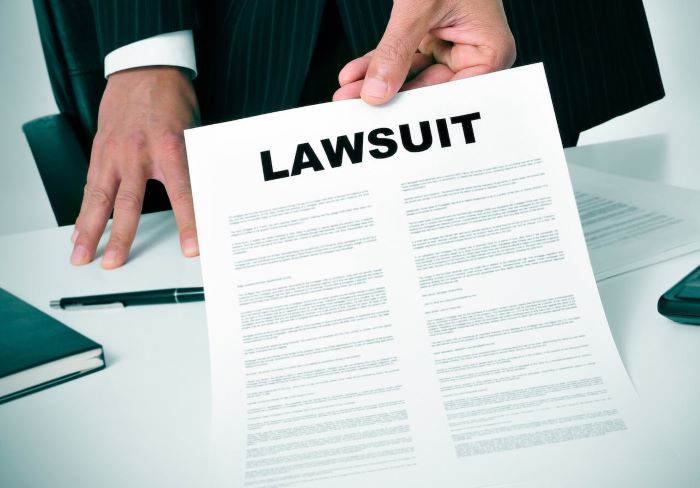
A Claim Chart typically has two columns. The Claim is broken down into its key elements in the left column and proof of infringement is illustrated in the right column. You can email us at [email protected] and request information about securing a Claim Chart.
Q: What if another patent is infringing my patent?
A: That cannot happen. Only a product or service can infringe a patent. It is the job of the patent examiner to insure that every patent that is granted is “novel” – the invention covered by the patent is a new and not currently being manufactured or sold and not already covered by another patent. If you come across a patent that you believe copies what is in your patent – is not just similar, but copies an Independent Claim in your patent element-for-element – you should contact you patent attorney. If your complaint is legitimate, your attorney can request a review of the copy-cat patent.
Q: What should I tell the company that is infringing my patent?
A: It is never a good ideal to contact a company that you believe is infringing your patent. It can result in the infringer filing a lawsuit against you, and now you have to defend yourself. Not good. You should first document the infringement, and then contact a patent litigator or a patent assertion firm. Contact us a [email protected] and we can refer you to one.
More Answers to Your Questions about Patent Infringement Remedies
Posted: 9/11/2024
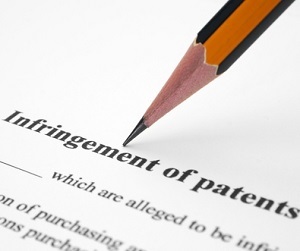
Two installments ago, we reported on The Realizing Engineering, Science, and Technology Opportunities by Restoring Exclusive Patent Rights Act (or RESTORE) that was introduced in July in both the House and Senate. If enacted, this non-partisan bill would amend 35 U.S.C. § 283, the section of U.S. Patent Law that addresses injunctions, to create a rebuttable presumption that a patent owner is entitled to injunctive relief if he or she or it obtains a final judgment of patent infringement from a U.S. court.
This law – if enacted – would address the current practice among the federal courts to not grant Injunctive Relief to patent owners who sue for infringement and receive a favorable decision from the court. The article prompted questions from our readers, and in the last installment we answered questions about just exactly what Injunctive Relief and Reasonable Royalties are. In this installment, we address the remedies available to Market Participants.
As we wrote in the last issue, equal protection under the law does not really apply to patent owners whose patents have been infringed. There are two distinct groups of plaintiffs:
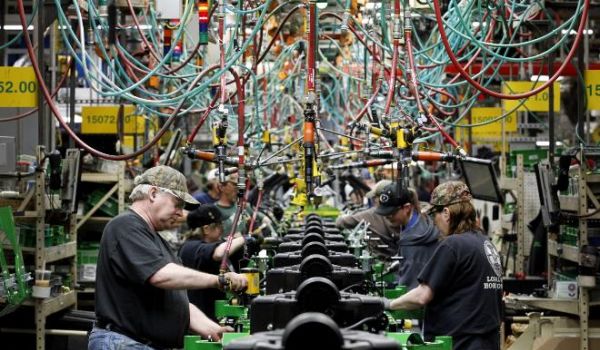
♦ NPE: A Non-Practicing Entity is a person or business or university or other entity that does not practice its patent. For example. we know of no universities that own and operate a factory to manufacture products based on its patents. Universities have Tech Transfer Offices that license their patents to businesses that do have factories. And many businesses have patents that they never practiced for one reason or another – their corporate focus changed, for example. And there are tens of thousands of independent inventors who own quality patents, but do not have the means to set up a factory to practice their inventions.
For this class of patentee, the only remedy available for infringement of its or his or her patent is reasonable royalties. And we covered what that is in the last issue.
♦ Market Participant: This is a business that owns and practices a patent. It is also referred to as a “Practicing Entity” and it has not one, but three remedies available to it. Should a Market Participant successfully prove infringement in federal court, it is entitled to reasonable royalties – what the infringer would have paid that company in royalties had it licensed the patent and not infringed it – just as the NPE is.
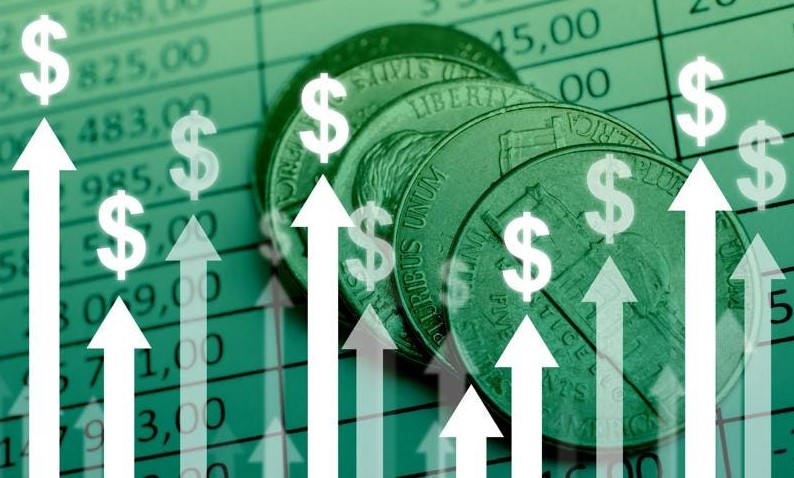
The Market Participant is also entitled to – but not often granted (as we covered in the last installment) – Injunctive Relief. This consists of a court order that prevents the infringer from manufacturing or selling any of the products it was selling that infringe the patent. Such a move gives the infringed patentee substantial leverage in dealing with the infringer.
♦ Lost Profits: The third remedy available to the Market Participant is reimbursement for the profits it would have made on sales of products based on the infringed patent had the infringer not been infringing its patent and essentially stealing those sales from the patent owner. The court may – and often does – determine what the profits were on sales of the infringed products, and award that amount to the plaintiff. As you can image, that amount could be substantial!

♦ Willful Infringement: There is a fourth dynamic to damages for patent infringement, and that is if the infringer knew about the infringed patent before it started manufacturing and selling products based on that patent. Most infringement is unintentional. Like the old expression “Great minds think alike,” it is not uncommon for employees at a company to come up with a new or improved technology and have their company go to market with a product based on it without knowing that some other equally brilliant independent inventor came up with same idea and filed for a patent on the invention.
If the patent holder can prove willful infringement – that the infringer knew about the patent and went ahead and infringed it anyway – the plaintiff is entitled to treble (or triple) damages. While simply having the infringer pay reasonable royalties – what it would have paid any way had it licensed the patent in the first place – is not punitive, requiring the infringer to pay treble damages actually punishes the infringer for its bad deed.
Next Issue: Final Answers to Your Patent Infringement Questions
Answers to Your Questions about Patent Infringement Remedies
Posted: 8/21/2024

In the last installment of this column, we reported on The Realizing Engineering, Science, and Technology Opportunities by Restoring Exclusive Patent Rights Act (or RESTORE) that was introduced in July in both the House and Senate. If enacted, this non-partisan bill would amend 35 U.S.C. § 283, the section of U.S. Patent Law that addresses injunctions, to create a rebuttable presumption that a patent owner is entitled to injunctive relief if he or she or it obtains a final judgment of patent infringement from a U.S. court.
This law – if enacted – would address the current practice among the federal courts to not grant Injunctive Relief to patent owners who sue for infringement and receive a favorable decision from the court. The article prompted questions from our readers, so in this installment we shall do our best to answer them.
♦ Injunctive Relief: If the patent owner (the “patentee” or “assignee” and the plaintiff in the patent infringement lawsuit) successfully proves infringement, and the patentee is a “Market Participant” or a “Practicing Entity” (a business that manufacturers and sells a product based on the infringed patent), it is entitled to an order from the court directing the infringer to cease the manufacturer and sales of all products the court has identified as infringing the plaintiff’s patent. Such an order from the court can be very detrimental to the infringer. The company would have to shut down production. What are they going to do with all the parts they have in inventory that were going to be used to make the now-forbidden product? What are they going to do with the finished inventory they cannot now sell? If the company has dealers or distributors with inventory of the banned product, the infringer may have to buy it all back. And then there is the fact that the court order means no more sales of the infringing products and no more profits from those sales. Ouch!
For Company A that owns the patent to get a court order banning sales of infringing products by Company B is a big win for Company A and a real problem for Company B! Based on how much of the company’s sales were based on infringing products, it would certainly be blow to Company B’s finances, maybe even a fatal blow that could drive them out of business!
In many cases Company B will have to come crawling to Company A and ask Company A to grant it a license for the patent it is infringing so it can continue to manufacture and sell products based on that patent. And Company A will have to say “please” since has no negotiating leverage, and it will have to take a license on Company A’s terms if it wants to resume manufacturing and sales of the infringing product. The bottom line is that Injunctive Relief gives the infringed party significant leverage!

♦ Non-Practicing Entity or NPE: We are all supposed to be “equal before the law,” but that is not the case for many patentees who are essentially second-class plaintiffs when it comes to patent infringement litigation. The reality is that under current law, the holder of an infringed patent that does not “practice” the patent (does not manufacture and sell a product based on that patent) is known as a “Non-Practicing Entity” (or “NPE”) and has limited rights versus the Market Participant we just wrote about.
Joe Inventor who does not manufacture and sell a product based on his or her patent – an NPE – has just one remedy under current patent law – reasonable royalties. As we explained last issue, if Joe Inventor can prove infringement in court, he or she is entitled to what the infringer would have paid in royalties had the infringer licensed the patent in the first place. If sales of the infringing product run into the millions of dollars, this can be substantial, but if the infringer has modest sales, it is simply not financially viable to sue for infringement because the damages will not cover the plaintiff’s legal expenses.
If Joe Inventor wins at trial, the judge or jury will determine what the reasonable royalties are. The court will often have expert witnesses testify as to what royalties are typically paid in the industry affected by the patent-at-trial. The court will multiply the royalty (a percent of sales) times total sales of the infringing product, and award Joe Inventor that amount. If Joe Inventor and the infringer settle out of court – as about half of all patent infringement lawsuits do – Joe’s attorney will negotiate a number with the infringer’s law firm, and that will be amount of the settlement.
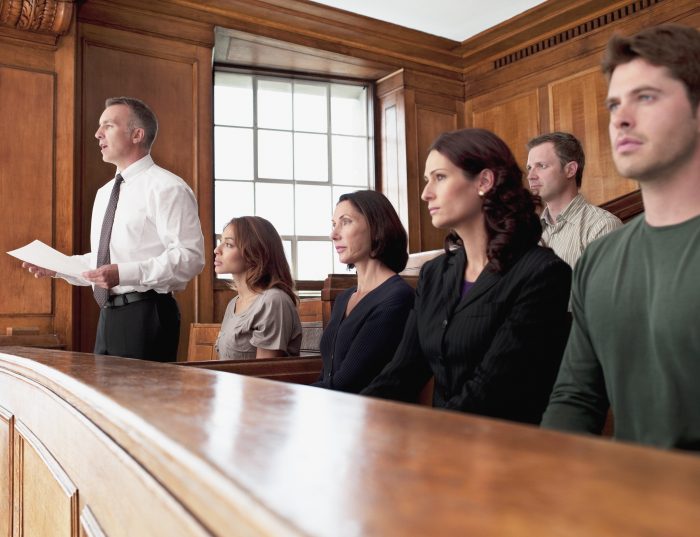
There is another issue however. The amount awarded by the court for infringement, or the amount agreed to as part of an out-of-court settlement, is for past infringement. If the infringer is still manufacturing and selling a product based on the infringed patent, and it wants to continue to do so, it will have to either buy the patent or take a license for the patent from Joe Inventor and pay him or her royalties for the remaining life of the patent. When there is an out-of-court settlement, the infringer will sometimes negotiate with Joe Inventor’s attorney to come up with what both parties believe will be sales of the infringing product over the remaining life of the patent, and pay Joe Inventor a lump sum for that amount.
So, for the NPE (usually an inventor, but it can also be a university or a business that owns a patent it does not practice), there is just one remedy available for patent infringement and that is payment by the infringer to the patent owner of reasonable royalties for both past and future infringement.
If, however, you are a Market Participant, you have three remedies available to you.
Next Issue: Remedies for the Market Participant
Two IP-Related Bills Are Introduced in House and Senate
Posted: 8/6/2024

The Realizing Engineering, Science, and Technology Opportunities by Restoring Exclusive Patent Rights Act (or RESTORE) was introduced last month in both the House and Senate. Senators Tom Cotton (a Republican from Arkansas) and Chris Coons (a Democrat from Delaware) introduced it in the Senate, and Representatives Nathaniel Moran (a Republican from Texas) and Madeleine Dean (a Democrat from Pennsylvania) introduced the bill in the House of Representatives. If enacted, this non-partisan bill would amend 35 U.S.C. § 283, the section of U.S. Patent Law that addresses injunctions, to create a rebuttable presumption that a patent owner is entitled to injunctive relief if he or she or it obtains a final judgment of patent infringement from a U.S. court.

Under U.S. patent law, a patent holder is entitled to several remedies if he or she it proves infringement in federal court. The most common remedy is “reasonable royalties” – what the patent holder would have earned in royalties on sales of the infringed product had the infringer licensed the patent from the patentee in the first place. Additionally, the infringer must take a license for the infringed patent and pay royalties to the patent holder for the life of the patent.
There is, however, a second remedy. If the patent holder is a practicing entity – it is a business that manufactures and sells a product based on the infringed product – it is entitled to lost profits. That is, it is entitled to the profits the infringer made on sales of all those infringed products. After all, had the infringer NOT infringed the patent, sales of the patent-protected products would have gone to the patentee!

There is a variation to reasonable royalties and lost profits for some patent infringement plaintiffs. If the patent holder can prove that the infringement was willful – that the infringer knew about plaintiff’s patent and went ahead and infringed it anyway – the patentee is entitled to treble damages. “Treble” is legalese for “triple.” There are many cases of infringement in which the infringing party simply did not know that a patent existed that covered the technology of the product or service it was bringing to market. And in such a case of unwilful infringement, the plaintiff is entitled to reasonable royalties and lost profits. Ignorance of a patent is not justification for infringing it. But, if the plaintiff can prove that the infringer knew about the patent – and this can be difficult to prove – treble damages for the plaintiff is additional punishment for the infringer.
And there is a third remedy – injunctive relief. The court can order the infringing business from manufacturing or selling any more products that infringe the patent-at-trial. This was a common source of relief for patent owners until a Supreme Court decision, eBay Inc. v. MercExchange, L.L.C., that established that only “market participants” (companies that manufacture and sell a patent-protected product) are entitled to injunctive relief. The trend, however, has been for judges to NOT provide injunction relief – even to practicing entities.

In the Patent Infringement Trial of the Century, Apple Inc. v. Samsung Electronics Co., Ltd., Apple won a jury verdict that Samsung was indeed infringing several Apple patents and received a multi-hundred-million dollar award for reasonable royalties and lost profits. Apple also sought injunctive relief, but the District Court Judge refused to grant Apple’s request. Apple appealed the decision, and the judge’s refusal to grant the injunction was over-turned by the appellate court, but – alas – that was three years later, and Samsung was no longer selling the model phone that infringed the Apple patent. “Justice delayed is justice denied.” – William Gladstone.

The Nurture Originals, Foster Art, and Keep Entertainment Safe Act or (NO FAKES) was also introduced last month in the Senate by four U.S. Senators – Thom Tillis and Marsha Blackburn (Republicans from North Carolina and Tennessee) and Chris Coons and Amy Klobuchar (Democrats from Delaware and Minnesota). The bill was prompted by a report produced by the U.S. Copyright Office on legal issues impacted by generative artificial intelligence (AI) systems. The agency recommended the creation of a federal right to digital replicas that covers all individuals and is licensable as a property right. The bill would create a federal right to an individual’s voice and likeness following many of the same contours recommended in the Copyright Office’s report. The bill protects actors and singers from fake reproductions of their performances by AI technology.
USPTO Odometer Rolls Over to 12,000,000
Posted: 7/16/2024
On October 10, 2022, Pacific Biosciences of California filed U.S. Patent Application No. 18/045,436 for a “Labeled nucleotide analogs, reaction mixtures, and methods and systems for sequencing.” The patent application was published on November 16, 2023, and a patent based on the application was granted on June 4, 2024. What is so special about this patent? It is U.S. Patent No. 12,000,000!
It was just three years ago that 4C Medical Technologies was granted U.S. Patent No. 11,000,000 for “Repositioning wires and methods for repositioning prosthetic heart valve devices within a heart chamber and related systems, devices and methods.” Seems like yesterday.
Being the curious sorts we are, here is a history of U.S. Patents, one million at a time.
♦ 1908: It took from 72 years to reach U.S Patent No. 1,000,000 for a “Vehicle-tire.” The automobile had just come onto the American scene and Henry Ford was cranking them out by the thousands, so a new tire design made sense. Why they hyphenated the title we do not know. The inventor was one Francis H. Holton who assigned his patent to the B. F. Goodrich Company, an American icon until it was acquired by Michelin of France.
♦ 1935: It took much less time – just 27 years – for the Patent Office to grant U.S. Patent No. 2,000,000 for a “Vehicle wheel construction.” Ironically, this patent was also auto-related. The inventor was one Ledwinka Joseph and the assignee was the Edward G. Budd Manufacturing Co. that today is owned by ThyssenKrupp of Germany.
♦ 1961: It took another 26 years for U.S. Patent No. 3,000,000 to issue for an “Automatic reading system.” This patent was invented by Kenneth R. Eldredge and assigned to yet another American icon, General Electric Company.
♦ 1976: Just 15 years later, U.S. Patent No. 4,000,000 was granted for a “Process for recycling asphalt-aggregate compositions.” The inventor was one Robert L. Mendenhall, the founder of the Las Vegas Paving Co. Just think of all the casino parking lots that needed paving over the past five decades!
♦ 1991: Another 15 years passed until U.S. Patent No. 5,000,000 for “Ethanol production by Escherichia coli strains co-expressing Zymomonas” was granted to the University of Florida. The inventors were Lonnie O. Ingram, Tyrrell Conway, and Flavio Alterthum.
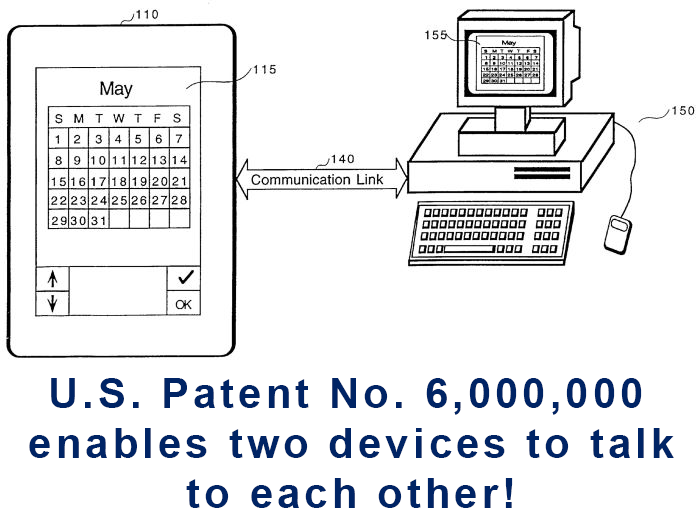 ♦ 1999: The pace of innovation really picked up in the 1990s because it took just eight years for U.S. Patent No. 6,000,000 for an “Extendible method and apparatus for synchronizing multiple files on two different computer systems.” Two computers talking to each other was cutting edge in 1999! The inventors were Jeffrey C. Hawkins and Michael Albanese, and the assignee was another American icon, 3Com Corporation, now a unit of super icon Hewlett-Packard.
♦ 1999: The pace of innovation really picked up in the 1990s because it took just eight years for U.S. Patent No. 6,000,000 for an “Extendible method and apparatus for synchronizing multiple files on two different computer systems.” Two computers talking to each other was cutting edge in 1999! The inventors were Jeffrey C. Hawkins and Michael Albanese, and the assignee was another American icon, 3Com Corporation, now a unit of super icon Hewlett-Packard.
♦ 2006: Just seven years later, U.S. Patent No. 7,000,000 for “Polysaccharide fibers” was granted. The inventor was John P. O'Brien and the assignee was yet another American icon, E. I. du Pont de Nemours and Company.
♦ 2011: From eight years to seven years to just five years for U.S. Patent No. 8,000,000 for a “Visual prosthesis” to be granted. The inventors were Robert J. Greenberg, Kelly H. McClure and Arup Roy, and the patent was assigned to Second Sight Medical Products Inc. which is still in business and is traded on the NASDAQ.
♦ 2015: Innovation charged on, and in just four years U.S. Patent No. 9,000,000 was issued for a “Windshield washer conditioner.” The inventor was one Matthew Carroll who assigned the patent to his company, Wiperfill Holdings LLC. The invention captures rain water, deionizes it, and uses it to refill the windshield washer reservoir. There is no record of this invention ever being commercialized.
♦ 2018: In just three years and two months, U.S. Patent No. 10,000,000 for “Coherent LADAR using intra-pixel quadrature detection” was granted to yet another American icon, Raytheon. Part of an international patent family, it addresses the use of laser detection and ranging (or LADAR) for autonomous vehicles.
♦ 2021: It took just two years and 11 months for 4C Medical Technologies to be granted U.S. Patent No. 11,000,000 for “Repositioning wires and methods for repositioning prosthetic heart valve devices within a heart chamber and related systems, devices and methods.” The patent was a sign of times as heart disease overtook cancer as the leading cause of death among Americans.
♦ 2024: The pace of innovation actually slowed as it took three years and one month for Pacific Biosciences of California to be granted U.S. Patent No. 12,000,000 for a “Labeled nucleotide analogs, reaction mixtures, and methods and systems for sequencing.” Yet again a sign of the times, this patent addresses medical research at the DNA level.
Here are the spans of years between each millionth patent:
U.S. Patent No. 1,000,000: 72 years
U.S. Patent No. 2,000,000: 27 years
U.S. Patent No. 3,000,000: 26 years
U.S. Patent No. 4,000,000: 15 years
U.S. Patent No. 5,000,000: 15 years
U.S. Patent No. 6,000,000: 8 years
U.S. Patent No. 7,000,000: 7 years
U.S. Patent No. 8,000,000: 5 years
U.S. Patent No. 9,000,000: 4 years
U.S. Patent No. 10,000,000: 3 years and two months
U.S. Patent No. 11,000,000: 2 years and 11 months
U.S. Patent No. 12,000,000 3 years 1 month
After two centuries of increasingly accelerated patent issuance, the pace slowed – if ever so slightly – for the first time since the granting of U.S. Patent No. 11,000.000.
Answers to Your Questions about Selling versus Licensing Your Patent
Posted: 6/12/2024
Last issue’s installment addressed the many options a patent owner has for the monetization of his or her or its patent. And while we hoped to answer many of the questions we regularly receive from patent owners, the article generated many additional questions. But, after all, that is why we are here. So, here goes.
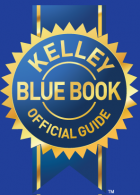
Q: What determines the final selling price of a patent?
A: It is the result of negotiations between the buyer and the seller. Either the patent seller has an asking price, and the buyer accepts that asking price and we have a deal. Or the buyer believes it is too high, so the buyer makes a counter-offer. A series of count-counter-offers and counter-counter-counter-offers may ensue until both sides reach a price they can both live with – not necessarily a price with which they are pleased, but a price they can accept. Alas, the patent community does not have anything like the Kelley Blue Book that auto retailers use to determine the selling price of a car.
Q: How do I know what to ask for my patent?
A: We assist our clients by giving them the range in which patents in similar technologies are selling. More important, however, we always attempt to have the buyer make an offer since the buyer’s initial offer may be more than the seller’s asking price. If the seller makes us go first, we always give a general range (for example, “mid six figures”) so our price does not seem too high as that can scare off a valid buyer.
Q: What if the final offer for my patent is just too low?
A: You can reject it and walk away – and hope that the buyer reconsiders and comes back with a higher offer. Or hope that we find another buyer who sees greater value in the patent. Walking away includes the risk that the first prospective buyer may not come back with a better offer, and there is no second prospective buyer out there. You will notice that in this column we never use the words “easy” or “simple” as patent brokerage is neither.
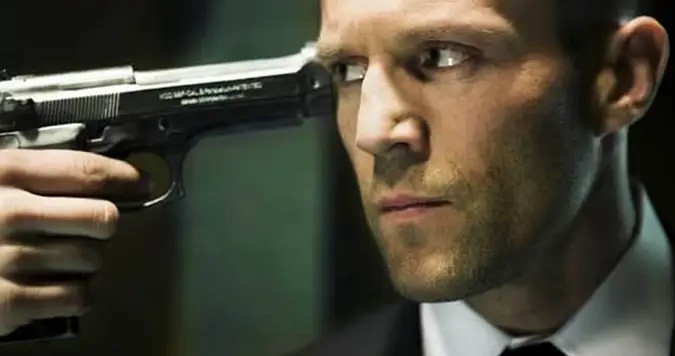
Q: Can the broker accept an offer from a buyer and sell my patent out from under me?
A: We cannot believe how many times we are asked this question, and often by people who we thought would know better. NO one can sell your car, sell your house, sell your lawnmower, or sell your patent without your permission. Once a selling price and the terms of the patent sale are agreed to, a document – a Patent Purchase Agreement or “PPA” – will be created that must be signed by both the buyer and the seller. Unless someone is holding a 38 to your head, you do not have to sign the PPA unless you accept the selling price and the terms of the transaction!
Q: Won’t I make more money if I license my patent?
A: Maybe. Maybe not. A company can agree to license a patent with a royalty paid on sales of products based on the patented technology, so the amount of royalties that are paid depends on the sales of those products. Sales could take off and the licensor could make a fortune. But what if the licensee finds that it cannot produce a product cheap enough that it will sell in significant volume, and does not actually go to market with products based on the patent? What happens if the products flop? Or what if a new technology comes along and obsoletes your patented technology? Your might make more with a license. You might not. Remember what we wrote about “easy” and “simple” two answers back?
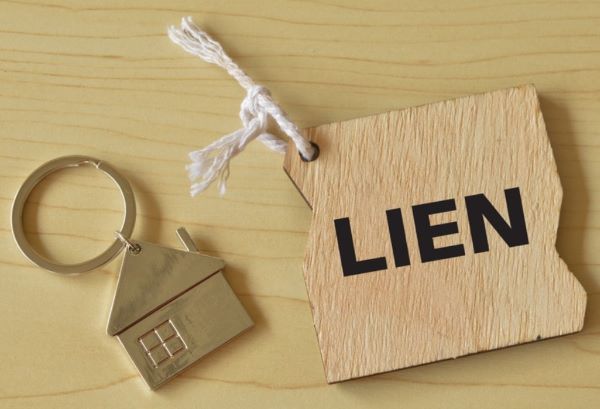
Q: Can I sell a patent that has an encumbrance?
A: Good question! A patent is an asset against which a third party can place a lien, just as the lien the bank has on a house for which it holds a mortgage or the auto for which it holds a loan. Businesses will sometimes offer some of its assets as collateral for a loan or line of credit, and that might include their patents. Sometimes a patent attorney will take a lien against a patent he or she prosecuted as security that he or she gets paid. Just as a car with an active auto loan or a house with an active mortgage can be sold, a patent with an encumbrance can be sold. It we be the broker’s responsibility to see that the lien against the patent is paid off from the proceeds of the sale before the patent is assigned to its new owner.
Q: What is the best time to sell a patent?
A: Thursday at 2:30. Sorry. We could not help it. If the patent is assigned to a business, and that business is practicing the patent, selling it does not make sense unless the business is strapped for cash and needs to liquidate assets to survive. If the patent is owned by a business that is NOT practicing the patent, the best time to sell it is right away. If the patent is owned by an inventor who is NOT going to build a factory and start producing and selling products based on that patent, sell it. As for timing, every day that goes by, a patent has one day less of enforceability. The newer a patent is, the more years of enforceability it has, so the more valuable it is.
Therefore, it makes senses to put up your patent for sale as soon as possible! Unfortunately, for many patents brought to us, the best time to take them to market was actually last year or even a few years ago. There is no reason to wait, because as a patent ages, it drops in value, so get it on the market as soon as possible!
More Questions? Submit them to [email protected]
Kelley Blue Book is a registered trademark of Kelley Blue Book Co.
Selling or Licensing Your Patent Has Endless Options
Posted: 05/21/2024
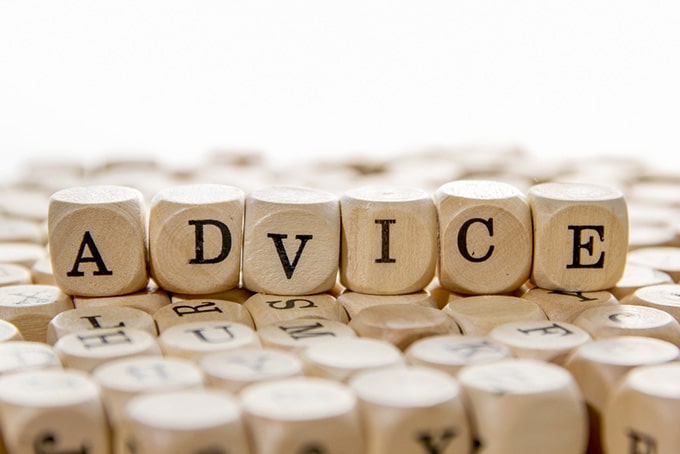
When inventors and businesses initially contact us about selling or licensing their patents, they often have limitations as to what they will accept for their patent or patents. Some will only consider a cash sale, while others insist on licensing their patents. Others immediately want to know what their patents will sell for, or what their patents are worth.
To all of these inquiries, we have the same response. We always advise a broad and flexible “monetization” approach. Taking your patent to market with limited options runs the risk that the patentee will miss out on a lucrative opportunity that he or she or it never had the chance to consider!
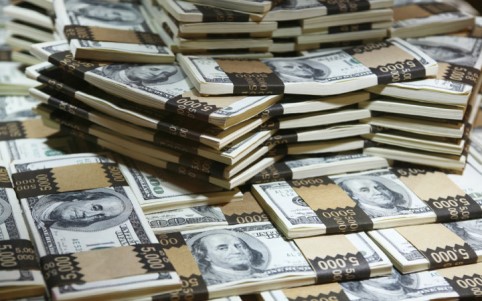
Most of our successes on behalf of our clients are cash sales. By “cash” we do not mean a suitcase full of 10s and 20s, but a single payment – usually a wire transfer – that pays for the patent or portfolio in a simple, single transaction. The buyer pays X dollars in exchange for the patentee signing over ownership of the patent or patents to the buyer. The funds from the buyer usually go into an escrow account – similar to a real estate transaction – and funds are remitted to the seller once the terms of the Patent Purchase Agreement have been met. For example, some Patent Purchase Agreements require the inventor to turn over to the buyer such items as his or her notes, any prototypes the inventor built, and any proof-of-concept or other materials the inventor has. Some buyers want the original paper patent. Patent sales are recorded at the U.S. Patent and Trademark Office (we take care of that) so that Patent Office records show the buyer as the new “assignee” of the patent or patents.
Licensing a patent is a little more complicated. If the licensee develops a product based on the licensed patent, and if the product sells, the royalties could be substantial – likely more in total than if the patent had simply been sold in the first place. But what if the licensee does not develop a product based on the licensed patent, or the licensee develops a product and it’s a flop? There could be little or no royalties. Licensing holds the potential for a significant payout for the patent licensor, but there are a few “ifs” in the way that could turn the deal sour.

There are other options to consider. For example, a license-to-buy. If a company is not sure if it can actually develop a product from the patented technology – or not manufacturer the product cheaply enough that it will sell – a company will sometimes enter into a patent license, but the license gives the licensee the option to buy the patent at an agreed-to price. If the venture is not successful, the licensee can walk away. If it is moderately successful, the company can just pay the royalties. If it really takes off, the licensee has the option to buy the patent and stop paying royalties. Such an arrangement reduces risks for the acquirer of the patent and makes a deal more attractive and likely.
There are multiple other options. A company can buy a patent with its stock – or do a split deal of part cash and part stock. If it is a publicly traded company, the sale price is clear: The number of shares offered for the patent times the current value of the stock. If it is a start-up or pre-IPO company, taking stock is risk, but one that could pay off big if the product based on the patent is successful.

Some companies will buy or license a patent, and then engage the inventor as a consultant to assist in the commercialization of the patent, creating two revenue streams for the inventor. There are also joint ventures and performance-based acquisitions to consider.
Our point is this: Going to market with a broad monetization strategy is always the best approach. If you limit your patent to only being licensed, you can scare away a potential buyer for your patent – and vice versa. If you are set on licensing, and we find no companies prepared to license your patent – and we scared away any potential buyers – where are we?
Take a broad monetization approach to turning your patent or portfolio into cash, and you will always get better – and, often, unexpected – results.
FTC Takes on FDA over Drug Patents
Posted: 5/7/2024
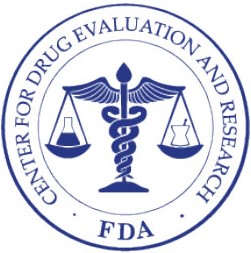
The FTC (the Federal Trade Commission, the federal agency responsible for watching out for the interests of consumers in the U.S.) is at loggerheads with the FDA (the U.S. Food and Drug Administration, the federal agency responsible for watching out for the health of Americans) over some patented drugs.
The FDA publishes a directory called the “Approved Drug Products with Therapeutic Equivalence Evaluations” – known in the trade as the “Orange Book” because of its bright orange cover – that lists drug patents approved by the FDA as “safe and effective.”
The FTC sent warning letters to 10 companies and notified the FDA that it disputes the accuracy or relevance of more than 300 Orange Book patent listings across 20 different brand name products.  This is a bold move on the part of the FTC which is not an agency staffed with physicians and scientists as the FDA is. In their efforts to compete in the marketplace, the FTC claims that there are drug listings that are “improper or inaccurate.” The FTC – acting on behalf of the consumer – believes that improper Orange Book patent listings can delay cheaper generic alternatives from entering the market, keeping brand name drug prices artificially high for consumers!
This is a bold move on the part of the FTC which is not an agency staffed with physicians and scientists as the FDA is. In their efforts to compete in the marketplace, the FTC claims that there are drug listings that are “improper or inaccurate.” The FTC – acting on behalf of the consumer – believes that improper Orange Book patent listings can delay cheaper generic alternatives from entering the market, keeping brand name drug prices artificially high for consumers!
“By filing bogus patent listings, pharma companies block competition and inflate the cost of prescription drugs, forcing Americans to pay sky-high prices for medicines they rely on,” said Federal Trade Commission Chair Lina M. Khan. “By challenging junk patent filings, the FTC is fighting these illegal tactics and making sure that Americans can get timely access to innovative and affordable versions of the medicines they need.”
Wait a minute! “Bogus patent listings?” “Junk patent filings?” Those are fightin’ words! And they are also an affront to the U.S. Patent and Trademark Office that granted those patents!
Warning letters were sent to:
- GlaxoSmithKline
- Boehringer Ingelheim
- Glaxo Group
- Covis Pharma Tudorza and Duaklir
- AstraZeneca
- Novo Nordisk
- Teva Pharmaceutical Industries
- Novartis Pharmaceuticals
- Norton (Waterford)
- Amphastar Pharmaceuticals

Use this link to see the actual letters the FTC sent to each drug company.

When the listing of a drug patent is disputed – as the FTC has done here – the FDA sends the dispute to the branded drug manufacturer who will then have 30 days to withdraw or amend the listing, or certify under penalty of perjury that the listing complies with applicable statutory and regulatory requirements.
“It is the responsibility of branded drug manufacturers to ensure that Orange Book submissions contain information only on the types of patents for which information should be submitted to FDA,” said U.S. Food and Drug Administration Commissioner Robert M. Califf, M.D. “The FDA will continue to engage with the FTC to identify and address potential efforts to impede competition so that consumers can get access to the medicines they need.”
The FTC’s previous charge of bogus drug patent listings included over 100 patents for medications specific to asthma and other inhaler devices. AstraZeneca, Boehringer Ingelheim, and GlaxoSmithKline all announced their commitment to continued manufacture and sale of cap inhalers based on these patents.
Happy 100th Birthday, IBM - Part III
Posted: 4/16/2024

Two issues ago, we covered in some detail how IBM came into existence just exactly 100 years ago when Thomas J. Watson changed the name of the Computing-Tabulating-Recording Company (or CTR) to International Business Machines Corporation (or IBM) in February 1924. And we provided a comprehensive history of the company over the last century.
Last month, we covered three critical products that IBM brought to market, the Selectric typewriter, the System/360 computer, and the IBM PC, and how they each changed the world in their day.
In this installment we complete our celebration of IBM’s 100 years – during which the company was awarded more patents that any other business – with the story of two software programs that – like the Selectric, System/360, and PC – changed the world in their time.
♦ Lotus 1-2-3: The introduction of the IBM PC in 1981 created the need for IBM to offer software that users could run on their PCs. VisiCalc was spreadsheet software introduced in 1979 for use on the Apple II. It was the first spreadsheet, and its inventors – Dan Bricklin and Bob Frankston – never applied for a patent for the technology, in large part because the Patent Office did not consider software to be patentable at that time. In those days, software developers applied for a copyright on the content and a trademark for the product name. VisiCalc ran not just on the Apple II, but also on the TRS-80, Commodore PET, and Atari 800. Just to provide a reference point, Sheldon Cooper from Young Leonard owned a TRS-80 with a dial-up modem!

VisiCalc was sold to the Lotus Development Corporation that turned it into Lotus 1-2-3, an advanced spreadsheet with many additional features. For example, you could create pie charts and graphs from the data in the spreadsheet portion of the software. Lotus Development Corporation applied for a patent in April 1987 and received U.S. Patent No. 4,788,538 for “Method and apparatus for determining boundaries of graphic regions” in November 1988 – just 19 months later. In 1992, Lotus was awarded a second software patent, U.S. Patent No. 5,115,504 for an “Information management system.”
IBM PC owners were buying Lotus 1-2-3 in droves, as well as Lotus Notes, a program for managing emails and a calendar. IBM decided it wanted all that revenue for itself, so it made one of the few acquisitions in its history, and acquired Lotus Development Corporation for $3.5 billion in 1995.
♦ Storyboard: In 1985, IBM introduced software that helped users tell their stories in text and graphics. You could have a headline slide down from the top or slide in from the side and then dissolve right on the screen in front of you. And you could generate all kinds of charts and graphs, and import images. Storyboard enabled many an IBM PC user to create a most impressive presentation in an MS-DOS world! Using an LED projector, the presentation could be show on a large screen for group presentations. IBM followed up with Storyboard Plus and Storyboard Live! But IBM withdrew Storyboard from the market in 1993.

So what happened? None of these software products exist anymore. Lotus 1-2-3 was replaced in the marketplace by Excel®, Lotus Notes was driven to extinction by Outlook®, and Storyboard was overwhelmed by PowerPoint® – all Microsoft products.
IBM made Microsoft the company it became by licensing its MS-DOS, and later its Windows®, operating systems, and a decade later Microsoft drive IBM out of the PC software business. It takes no talent to be a critic, so we will not venture into what IBM did wrong. Last year, IBM rang up $62 billion in sales while Microsoft generated $226 billion.
Excel, Outlook, PowerPoint, and Windows are registered trademarks of Microsoft Corporation.
Happy 100th Birthday, IBM - Part II
Posted: 3/19/2024

As we covered in some detail last issue, it was 100 years ago last month that IBM came into existence. Thomas J. Watson changed the name of the Computing-Tabulating-Recording Company (or CTR) to International Business Machines Corporation (or IBM) in February 1924. At that time, IBM was headquartered in the Silicon Valley of that day, the triple cities of Binghamton, Johnson City, and Endicott in New York’s Southern Tier. Over the last 100 years, IBM introduced three significant product lines that changed the world – and we mean literally changed the world!
♦ Selectric Typewriter: In 1961, IBM introduced a totally new concept in a typewriter. It totally replaced the type-bar with carriage design – the paper sat in a carriage that moved left to right and then returned for the next line of text – with a sphere that moved left to right a back again. Rather than be locked into a 10-pitch (10 characters to the inch or “Pica”) or 12-pitch (12 characters to the inch or “Elite”) and a single type face, the Selectric user dropped in a 10-pitch or 12-pitch sphere with any one of dozens of fonts. There were even spheres in foreign languages so the correct accents would appear. The Selectric changed everything!

The Selectric took off and quickly became the market leader, burying all the competitors that were stuck selling type-bar typewriters. In fact, by 1978 the IBM Selectric had 94% of the office typewriter business! The Selectric became IBM’s cash cow, enabling it to fund other projects. It was the daisywheel that finally obsoleted the Selectric sphere in the 1980s.
♦ System/360: The dominant mainframe computer through the 1950s was the Univac, a product of Remington Rand – a competitor of IBM in the typewriter industry – and later Sperry Rand. In 1964, IBM introduced the System/360, the first multi-purpose mainframe. It was called the “360” in references to the 360 degrees in a circle.
The System/360 could do accounting, inventory, personnel, and anything else a business needed. It was installed in a “computer room” because it consumed an entire room! To see what was involved in the installation of a System/360, watch the movie “Hidden Figures.” By the 1970s, IBM owned 70% of the mainframe computer business!

♦ IBM PC: In 1980, IBM decided it was time – spurred on by the success of Apple – to create a “personal computer” or “PC” – a computer that would be used by a single person, replacing the staff that ran the mainframe computer and handed out reports to each department.
Rather than totally develop, design, engineer, and manufacture this new PC in-house – as every previous IBM product had been – IBM assigned Philip “Don” Estridge to get a product to market in one year. Estridge outsourced the PC’s operating system to a two-person start-up in Seattle called Microsoft – and made Bill Gates and Paul Allen millionaires. They both went on to become billionaires, but it was IBM that made them their first few millions with MS-DOS.

The IBM PC went on sale in August of 1981, and they could not build them fast enough! It led to a slew of other PC makers – Hewlett-Packard, Dell, Acer, and Lenovo that bought IBM’s PC business – that are still making and selling PCs today. Meanwhile, Apple grew and grew and grew once IBM had legitimized the concept of a personal computer instead of a big mainframe with dumb terminals.
Don Estridge tragically perished along with his wife and several IBM employees and interns in the crash of Delta Airlines Flight No. 191 at Dallas/Fort Worth Airport when the Lockheed L-1011 Tristar wide-body jet they were passengers in crashed one mile short of the airport August 2, 1985 – four years to the day after the launch of the PC. The crash was attributed to wind shear. Ironically, IBM no longer manufactures PCs and Lockheed no longer manufacturers passenger aircraft.
Today, Apple has a far greater market cap ($2.66 trillion) than IBM ($175 billion).
Happy 100th Birthday, IBM!
Posted: 2/27/2024

It was 100 years ago this month that IBM came into existence. And therein lies our tale for this installment of Patent Leather.
Our tale begins with four 19th Century inventors and their patents. Willard Bundy was awarded U.S. Patent No. 393,205 in 1988 for a “Time recorder,” Alexander Dey was awarded U.S. Patent No. 411,586 in 1889 for a “Worksman’s time recorder,” Herman Hollerith was awarded U.S. Patent No. 526,130 in 1894 for a “Machine for Tabulating Statistics,” and Julius E. Pitrap was awarded U.S. Patent No. 589,365 in 1897 for a “Computing-scale.”
A brilliant financier of the time, one Charles Ranlett Flint, acquired these four patents and the companies founded by their inventors and formed the Computing-Tabulating-Recording Company (or CTR) – nothing like a company name that tells you exactly what the company does! It was based in the first Silicon Valley, Endicott, New York. Yes, sleepy little Endicott in the Southern Tier of Upstate New York and part of the triple cities of Binghamton, Johnson City, and Endicott that was also headquarters to the Endicott-Johnson Corporation that manufactured shoes. The Computing-Tabulation-Recording Company had 1,300 employees with offices and plants in Binghamton, Dayton, Detroit, DC, and Toronto.
In 1914, CRT hired a young, ambitious man who had been fired by National Cash Register Company (NCR), Thomas J. Watson, as its general manager. Less than a year in, Watson was president of CRT! He hired a professional, aggressive salesforce, and incentified them to sell!
In February of 1924 – exactly 100 years ago this month – Watson officially changed the name of the Computing-Tabulating-Recording Company to International Business Machines Corporation – nothing like a company name that tells you want the company does! Watson served as president, chairman, and CEO of IBM Corporation for 32 years. He was succeeded by his son, Thomas J. Watson, Jr., in 1956 who served until 1971.
IBM was the innovator. For 28 years, IBM was the number one recipient of U.S. Patents having been granted 126,000 U.S. Patents to date! Just a few IBM innovations include the ATM, the floppy disk, the hard drive, the magnetic stripe card (that lead to the strip on today’s credit cards), dynamic random-access memory (or DRAM), the relational database, the SQL programming language, and the UPC barcode.
IBM sales peaked at $106 billion in 2011, and their sales have declined steadily since, dropping to just $62 billion in 2023. “Just $62 billion?” Apple – the company no one at IBM took seriously – generated $386 billion in 2023 while Microsoft generated $211 billion. So $62 billion is not very much these days. Today, IBM is primarily in the cloud computing, AI, and consulting business.
IBM is currently vacating its Endicott, New York offices, and will no longer have a presence after 2024 in the first Silicon Valley – now known as the Triple Cities Innovation Corridor.
Selling versus Licensing Your Patent
Posted: 2/13/2024
Most inventors and businesses that come to us with their patents simply want to sell their patent or patents. And when we are successful at finding a buyer, the transaction is usually quite simple since the seller and buyer essentially just need to agree on a sales price. There may be a few other details, but the funds change hands and the patent is assigned to its new owner. Done.

When we are approached by a patentee that wants to license his or her or its patent or patents, we are always careful to let that prospective client know that most patent transactions are sales, and that many companies simply will not consider licensing a patent. So, right off the bat, that patent owner has to consider what will happen if the only offer we generate is to purchase the patent – and licensing the patent is not on the table. What will the patentee do? Is he or she or it prepared to walk away from an offer to buy the patent or patents? And hold out for an offer to license the patent? An offer that may never come?
Let’s step back and take a look at a broader, fundamental, economic fact. The cheapest way to acquire any asset – be it a building, a truck, furniture, equipment, a computer, or a patent – is to buy it for cash. Leasing a building, renting a truck or furniture or equipment or a computer, and licensing a patent – is always more expensive.
So, if a company has the cash on hand, it will simply write a check when it needs to acquire any asset. And there are a lot of companies out there today that are sitting on a pile of cash. A big pile of cash. Apple currently has $160 billion in cash in the bank. Yes, billion with a big fat “b”! Microsoft has $144 billion on hand. There are lots of mid-size and smaller companies that are sitting on cash. If a company with cash in the bank likes your patent, and you want to license it, convincing that company to license your patent – instead of just buying it for cash – is a tough sell.
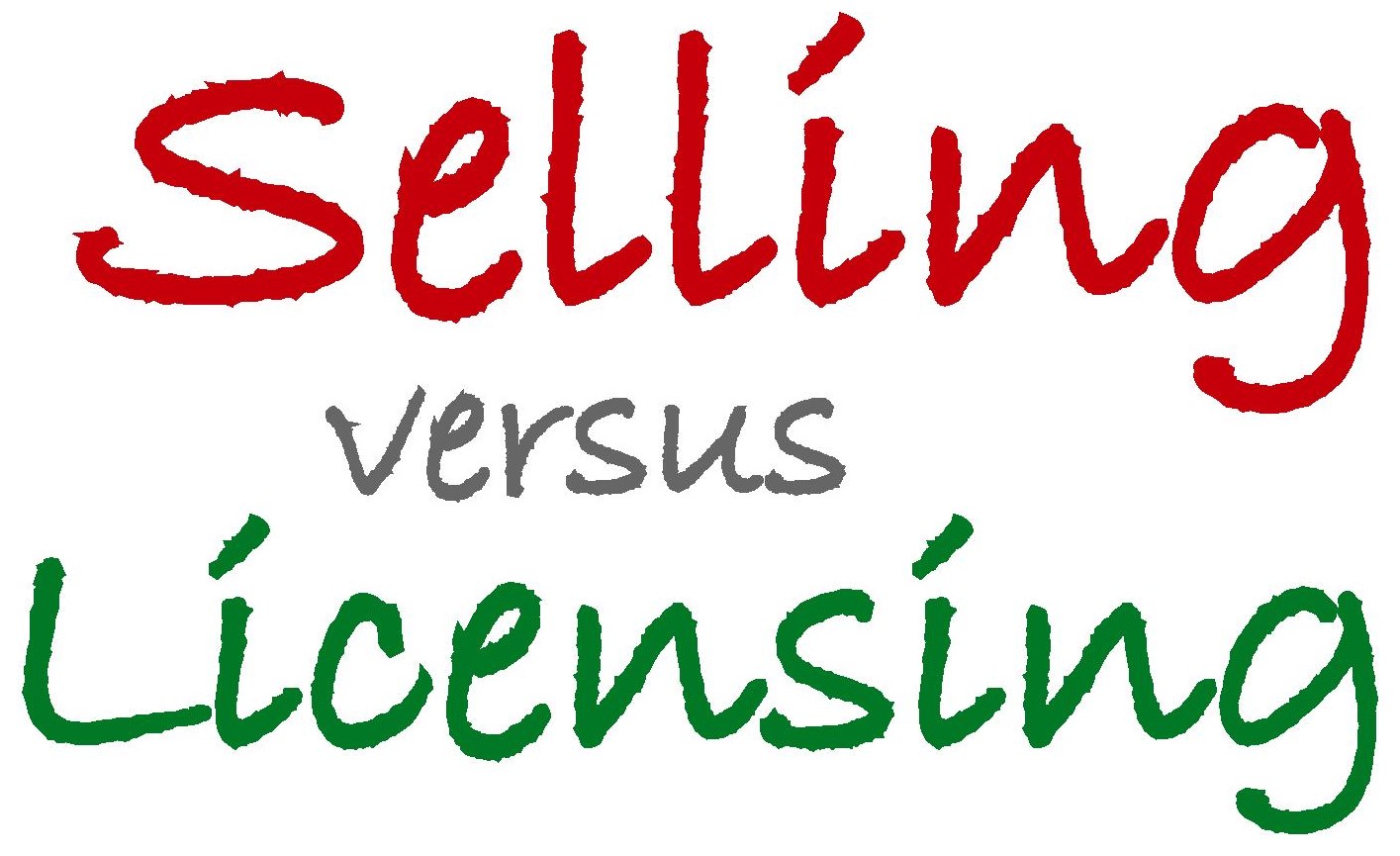
There are three other sell-versus-license dynamics to consider.
1. When Company A licenses a patent, there’s a lot of paperwork. It has to compute its quarterly sales in order to calculate the royalties that are due the licensor (the patent owner). If Company A is licensing a U.S. Patent, it has to deduct non-U.S. sales as well as credits, returns, and adjustments, to determine the net sales on which royalties are due to be paid. Company A then has to cut a check or process a wire transfer. And it has to do this quarter after quarter, year after year, for maybe 15 years or longer. If Company A had purchased the patent, there would be NO such paperwork.
2. When Company A licenses a patent, each time it pays royalties on that patent, it is essentially reporting to the licensor what sales are of the products covered by the licensed patent. And Company A might not want people outside of the company knowing what the sales of those products are. Had Company A purchased the patent, it could keep its sales breakdown confidential.
3. Should the patent that Company A is licensing be infringed, who will assert it against the infringer? And does the licensor have the resources to effectively assert the patent? Had Company A purchased the patent in the first place, it would have total control over enforcement of the patent against any and all infringers.
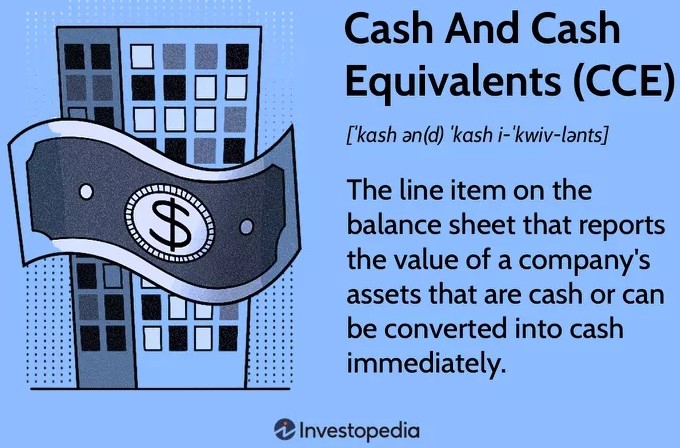
The bottom line is that companies only license a patent if they have to. And that means they do not have the cash-on-hand to buy the patent or patents. Start-ups will often license a patent so they can preserve their cash. Companies that are losing money will license a patent to preserve their cash. For a profitable company with cash in the bank, there is NO benefit to licensing a patent and, therefore, no reason to do so.
In fact, since licensing is more expensive that buyer a patent, it is not unusual for companies that license a patent to include in the licensing agreement a buy-out number so that once the licensee has paid X in royalties it owns the patent or has the option to buy it. The licensor has to agree to this, of course, while the option is to walk away.
There is also the factor that licensing comes with some risks. Yes, if Company B licenses your patent, and the products based on that patent take off and sell like hot cakes, you will be looking at a stream of royalty income for 10 or 15 years or more! But what if the product does not take off? If the products based on your patent are not successful or just moderately successful – for whatever reason – you could be looking at a trickle of income, possibly less than if you had simply sold the patent in the first place!
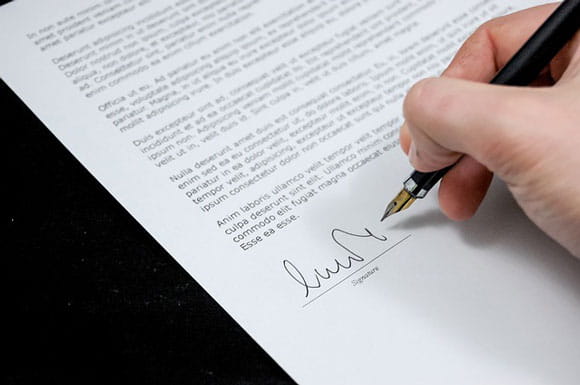
That is why IPOfferings takes a broader approach. We believe in “monetizing” our clients’ patents. We do not specifically look for buyers or licensees, but for companies that will benefit from our client’s patented technology. Maybe a company will end up buying your patent, or maybe a company will license it. Or maybe it will be a license-to-own arrangement, or a shared-profits joint venture, or stock-plus-cash deal, or a dozen other monetization options. We take the broadest approach possible to uncover as many opportunities as possible to generate revenue from our clients’ patents!
Going to market with your patent with licensing as your sole objective is a narrow and self-limiting approach.
Patent Office Offers Free Training for Patent Application Novices
Posted: 1/23/2024
Here is an opportunity for inventors who are about to file a patent application to receive FREE assistance from the Patent Office. The program is open to just 20 participants!
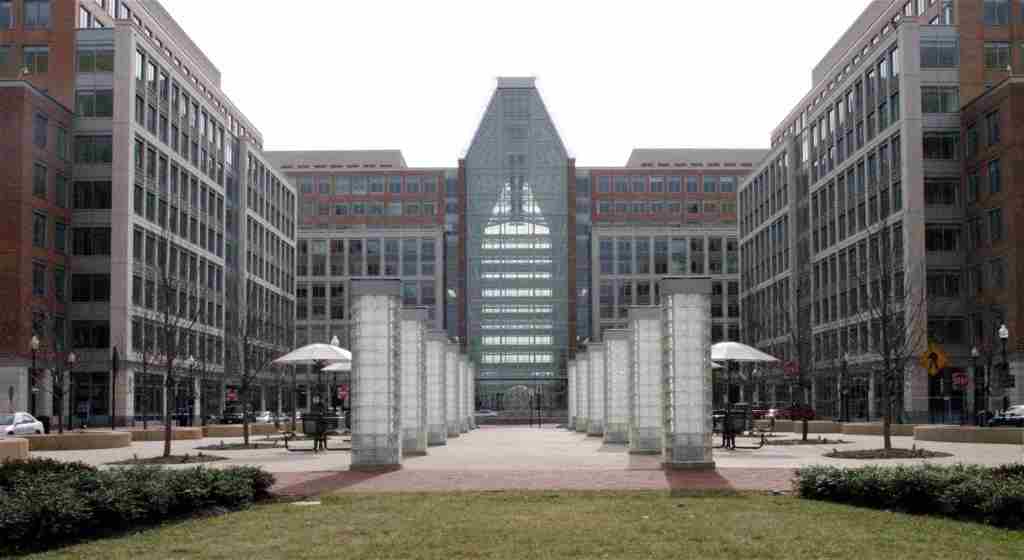
Last month, the U.S. Patent and Trademark Office (USPTO) announced a new pre-application review program for patent applications that it calls the “Pre-Prosecution Pilot.” The program is part of the Patent Office’s continuing commitment to expand access to patent protection for what it calls “under-resourced inventors.”
The pilot program is designed to support first-time, prospective inventors and patent applicants by providing assistance in assessing the strengths and weaknesses of a potential patent application. USPTO patent examiners will help first-time prospective patent applicants assess if their inventions are novel in the art by providing search assistance using public patent tools.
Such assessments will not be considered official rulings of patentability by the USPTO. They are designed to help potential patent applicants avoid the common mistakes that may slow down the patent review process or invalidate a patent application.
“Inventors and entrepreneurs are the life blood of the American economy. From individual inventors working in their garages to major corporations, the USPTO is committed to fostering more innovation for and from all,” said Kathi Vidal, Under Secretary of Commerce for Intellectual Property and Director of the USPTO in her announcement of this initiative. “This new pilot program is another tool in our toolbox to provide a more welcoming and encouraging innovation ecosystem for independent inventors as they seek to protect and bring to market their ideas.”

The first training under this new pilot program, Stakeholder Application Assessment Training (or StAAT), will be a two-day workshop conducted Tuesday and Wednesday, February 27 and 28, 2024. It will be conducted virtually and is limited to 20 qualifying individuals. Those selected to participate will qualify for not just the two-day workshop, but also have access to information sessions, practice time, and one-on-one feedback sessions with USPTO patent examiners. The workshop will cover patent application basics, patent public search tools (to assist with searching for prior art), legal counsel options such as the USPTO’s Patent Pro Bono program, and additional programs to assist first-time filers.
The USPTO is accepting candidates for this pilot program until January 31, 2024. Interested individuals must complete and submit an application.
If you are not planning to file a patent application in the near future, but you know someone who is, please pass this information along to him or her.
Advice that Is NOT Good Advice
Posted: 12/19/2023
Every once in a while we present an installment of Patent Leather that appears to have little – on the surface, at least – to actually do with patents, and that is the case for December 2023. But, of course, we circle back to the central purpose of our lives – monetizing patents.
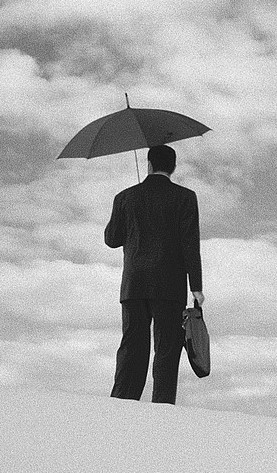
We recently had a heated discussion with a client, the basis of which was a commonly used adage that is actually bad advice. So, as you start thinking about your 2024 New Year’s Resolutions, here is some advice you probably received over the years that was really bad advice.
♦ Better late than never: We cannot list all the business opportunities we’ve seen that were lost because some one waited. We live in an incredibly fast-paced world in which a fleeting opportunity is here today, but gone tomorrow. Waiting is never good. In fact, you are better off being a little early than being a little late. Far too many business-people do not make a decision because they do not have enough data, but by the time they have enough data, the opportunity has passed them by. For so many business ventures, the best time to do almost anything was actually last year.
It is a reality of today that you often have to make a decision without all the data you would like to have. But waiting for all that data often results in your missing a window of opportunity for the brief moment it is open.
When is the best time to go to market with your patent? As soon as the patent application publishes. Waiting for the patent to be granted can sometimes actually be too late.
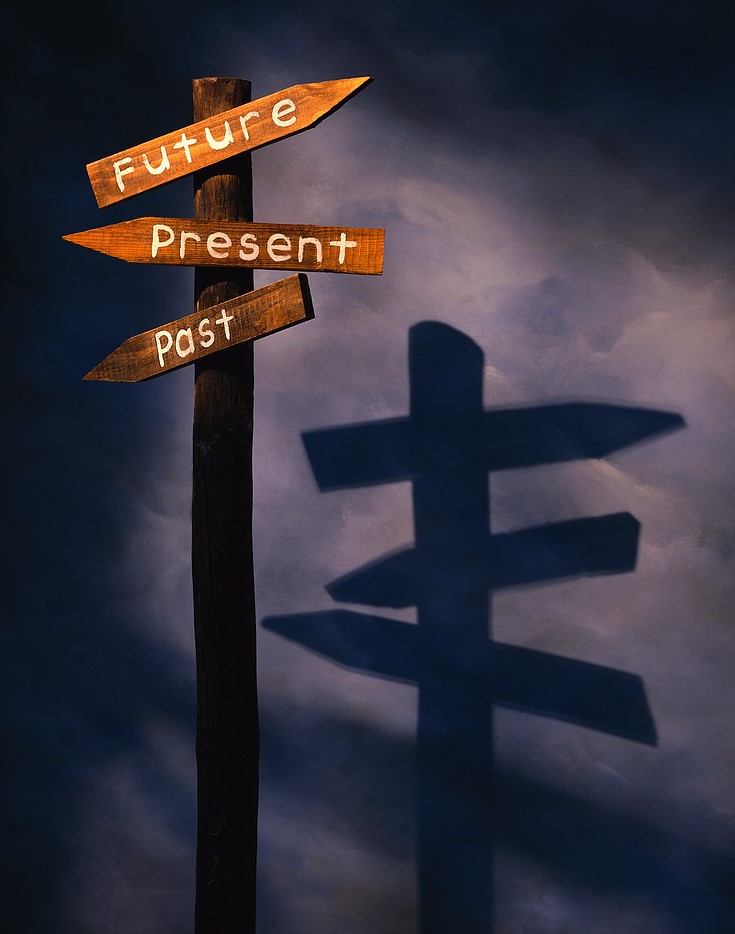
♦ Do not assume: At which point the purveyor of this dreadfully bad advice then tells you what “assume” makes you. Many decisions have to be made without all the facts, so some reasonable assumptions have to be made. Edison did not know that running electrical current through a filament would produce light. Bell did not know that he could capture the vibrations of a human voice and transmit it down a wire. The Wright brothers did not know that if a wing was exactly the right shape, it would produce lift and would fly. These men made educated guesses and reasonable assumptions based on the limited facts they had.
The inventions covered by patents were all made by assumptions – reasonable, rational, well thought out assumptions, and not facts. Once it is a fact, someone has already brought it to market. Those who do not assume never accomplish anything.
♦ If at first you don’t succeed, try, try, again: It was Albert Einstein who said “Insanity is doing the same thing over and over again and expecting a different outcome.” When you fail, the absolute last thing you want to do is try again. You will simply fail a second time! When you fail, you stop, analyze what you did, determine as best you can why you failed, re-think what you did, come up with alternatives that may produce better results, and take a different approach. Try again? You will just fail again.
If the Patent Examiner does not accept your claims, re-think them and submit new claims.

♦ Don’t count your chickens before they've hatched: If you do not, then how many chicken crates do you order? We all need to do projections so we can be prepared. Once again, a business cannot operate unless its management is prepared to make decisions based on reasonable assumptions and projections.
Assume your patent application will be granted as a patent. If you do otherwise, you have lost before you got started.
♦ Good things come to those who wait: Good things come to those who act, seize the moment, and grab opportunities when they are right in front of them. Those who wait just see life and success pass them by.File that patent application last year, request that it be published immediately, and go to market with it yesterday!
Why Google Patents and Not the Patent Office Website?
Posted: 11/27/2023
We must begin this article by stating our admiration for the U.S. Patent and Trademark Office. Government agencies are typically bloated and inefficient, and the larger they are, the more bloated and the more inefficient. We could regale you with tales of government inefficiency, but our space is limited.
First of all, the U.S. Patent and Trademark Office (often simply referred to as the “Patent Office” or the “USPTO”) is just one of a few self-supporting federal government agencies. The Patent Office has a long history of NOT using tax dollars. The agency is totally funded by the fees it collects from patent, trademark, and service mark applicants and awardees.
There are just a handful of self-funded government agencies, most of whom you’ve never heard of, such as the Overseas Private Investment Corporation. We often ask why more federal agencies cannot be self-funding? The National Park Service, for example, charges fees to enter National Parks. Why can it not operate on those fees?
We also see the USPTO as an organization that is responsive to the needs of its constituents, while still having to operate withing the restrictions placed on it by Congress. And the Patent Office is not bloated. For example, 96% of its staff are Patent Examiners with just 4% of its employees in administrative roles.

The USPTO is retiring its long-time website access service known as PAIR (“Patent Application Information Retrieval”) and has replaced it with the Patent Center. A question we are often asked is why we link the patents at our Patent MarketPlace to Google Patents and not to the Patent Office website, and the answer is that Google Patents simply offers more information – specifically intelligence that we believe to be important to any business considering acquiring a patent or patents.
Here are links to the listings for U.S. Patent No. 10,680,840 for a ‘System for integrating multiple IM networks and social networking websites” at the Patent Center and Google Patents. They both offer a comprehensive overview of the patent.
In defense of the Patent Office, the Patent Center listing does include the applicant’s patent attorney, and this can sometimes be helpful. But the Google Patents listing includes information NOT available at the Patent Center:
♦ Expiration Date: How many years a patent has to run is a critical factor to be considered when acquiring a patent and determining what to pay for that patent. Neither the Patent Center, nor the actual patent itself, provides an Expiration Date.
♦ Priority Date: The Patent Center provides the Earliest publication date, but not the Priority Date, and that is critical data if one is to attempt to enforce a patent. The Patent Center does not provide the Priority Date.
♦ Forward Citations: A patent applicant must submit Prior Art for his or her invention, and if they are patents or patent applications, they are known as “Patent Citations” – and both the Patent Center and Google Patents show these. However, once a patent application has been filed, it begins to collect citations (known as “Forward Citations”) from patent applicants who cite that patent application as Prior Art. The more Forward Citations a patent has – the more patents that cite it as Prior Art – the more foundational and valuable that patent is. The Patent Center provides neither Patent Citations nor Forward Citations.
We find the additional information available at Google Patents to be of greater valuable and relevance, so we link the patents we represent to Google Patents, not the Patent Center. Private industry wins out.
Patent Pendency Is Down to 20-1/2 Months
Posted: 11/27/2023
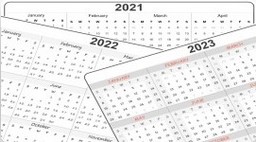
Here is something else we like about the U.S. Patent and Trademark Office. This is the result of a long-term effort that was launched by David Kappos, the USPTO Director from 2009 to 2013. The time it takes from when a patent application is filed to when a first Office Action is sent out by the Patent Examiner is known as the patent’s “pendency.” Once that first Office Action is filed, anything can happen from a patent being granted to the application being rejected to a Request for Continued Examination being filed.
For Fiscal 2022 (October 2021 through September 2022), the average pendency was 25 months. For Fiscal Year 2023 (October 2022 through September 2023), patent pendency dropped to 20.5 months. And that is a move in the right direction!
File a Provisional or Non-Provisional Patent Application?
Posted: 9/24/2023
An inventor has two critical choices when he or she files a patent application with the U.S. Patent and Trademark Office (USPTO) – file a Provisional Patent Application or file a Non-Provisional Patent Application. There is one choice that most definitely serves the needs of the independent inventor, and one that does not!

Let’s first look at the patent application pool. About 75% of all U.S. Patent Applications are filed by businesses, and the Provisional Patent Application was designed for these applicants. A Provisional Patent Application is not published by the Patent Office for 18 months, and that gives a business the opportunity to establish an early Priority Date for the application, fine tune the invention, and maybe even get a product to market before the actual patent is granted!
A business can file a Provisional Patent Application, and while it sits at the USPTO collecting dust, the company that filed the application can take advantage of that black-out period in several ways. It can build a prototype to see if and how well that invention actually works. It can test the prototypes for performance and reliability. It can show prototypes to key customers to get feedback. It can even go into production and start manufacturing and selling products based on the Provisional Patent Application and mark those products “Patent Pending.”

It is an intensely competitive world out there, and smart companies do everything they can to create a competitive edge for themselves. Getting to market fast with a new product for which the company filed a Provisional Patent Application is one way to keep a company’s technology confidential and out of reach of the competition. Only when a company converts to a Non-Provisional Patent Application, and the application is published by the Patent Office, can the competition get a look at this invention. But by then the product is in production, in distribution, has shelf-space, and may even be building a reputation and brand-name recognition for itself. Smart. Very smart.
However, a Provisional Patent Application offers NO benefits to the inventor who is NOT going to commercialize the patent himself or herself. All a Provisional Patent Application does is burn up 18 months of time that could have been spent finding a buyer or licensee for the patent. An inventor is best served by filing a Non-Provisional Patent Application and then requesting that the patent application be published immediately.
It is simply not practical to attempt to sell or license a Provisional Patent Application. A prospective buyer or licensee wants to see what is in the actual patent application, and even if you provide a copy of your patent filing, it is so much neater, cleaner, and smarter to have a published patent application on file at the Patent Office that the prospective buyer or licensee can see.

Not every patent attorney suggests this, but the patent attorney’s job is to get the patent granted, not monetize the patent. It is always in the best interests of the inventor to file a Non-Provisional Patent Application … and … request that the USPTO publish it immediately!
What do you do if you are an inventor with a Provisional Patent Application sitting at the Patent Office collecting digital dust?
1. Immediately convert it to a Non-Provisional Patent Application.
2. Then request that the USPTO publish your Non-Provisional Patent Application.
3. As soon as your patent application is published, contact IPOfferings.
Other 20th Century Patents that Changed the World
Posted: 8/30/2023

In our last installment, we covered what we believe to be the two most significant patents of the 20th Century. Remember that the light bulb, telephone, camera, automobile, and motion picture patents were all granted pre-1900, so they were all critical 19th Century patents and were not addressed last issue.
The two 20th Century patents we identified as being the most significant were U.S. Patent No. 804,109 for an “Apparatus for measuring the length of electric waves” and U.S. Patent No. 2,502,488 for a “Semiconductor amplifier.” U.S. Patent No. 804,109 was the foundation for the vacuum tube that made radios possible, and led to both television and the first generation of computers. U.S. Patent No. 2,502,488 established the transistor, making possible the second generation of radios, televisions, and computers possible, and all the consumer electronics that followed.
We received several responses to our article – always good to know that people are reading it – about other patents that were similarly significant. We went through them, and here are our selections for the third, fourth, and fifth most significant patents of the 20th Century.
♦ Airplane: After radio, television, computers, and telecommunications – that all had their start from our No. 1 and No. 2 patents – had to come the patent that made air travel possible. We all know the story, the Wright Brothers owned a bicycle shop in Dayton, Ohio, but they wanted to fly. And at Kitty Hawk, South Carolina, they completed the first manned flight in 1903.
Wilbur and Orville actually filed their U.S. Patent Application in March 1903 – nine months before they discovered that their invention would actually work. It is likely they made a few test flights before the official test flight they made for the press in December 1903.

Here is our question: How could it have possibly taken the Patent Office over three years to grant this patent? Filed in March 1903, U.S. Patent No. 821,393 for a “Flying Machine” was not granted until May 1906, three years and two months later! It could not have been the prior art they patent examiner had to review. We really wonder what took so long? Incidentally, the Wright Brothers’ patent had just 18 Forward Citations including the Boeing Company and Sikorsky Aircraft.
♦ Nylon: Few inventions have touched so many facets of our lives as nylon. Invented at du Pont by a team led by Harvard instructor Wallace Hume Carothers, nylon is a synthetic silk-like thermoplastic made from a blend of petroleum polymers. It can be manufactured as a fiber, film, or in solid shapes.
Carothers applied for a patent for his new synthetic fiber in April 1937. Just 17 months later, U.S. Patent No. 2,130,948 for a “Synthetic fiber” was granted to E. I. du Pont de Nemours & Company. With NO patent citations, and 419 Forward Citations, this is a foundational patent. While du Pont patented nylon, it never trademarked it.
The practical effect of nylon was wide-spread and significant. Nylon was used to replace silk in the manufacture of women’s stockings. By World War II, stockings were simply called “nylons” – and many a G.I. made it through the stress of the war with a gift of nylons for his favorite dame. Parachutes were made from nylon because it was significantly cheaper and more plentiful than silk. Without nylon for parachutes, how World War II was fought would have been significantly different! Nylon was also used to add strength to tires, making nylon a critical element in cars, trucks, busses, and aircraft.
From nylon came rayon and Orlon® that replaced both wool and cotton in clothing. Teflon™ is a derivative of nylon, the basis of non-stick pots and pans as well as many friction-free parts for everything from washing machines to surgical equipment.

Kevlar® – the key material in bullet-proof vests – is a downstream product from nylon, as is Tyvek® - the material used as a moisture barrier in construction. Every time you drive past a building under construction and see the Tyvek sheets stapled to the sheathing, think of all those gals at the USA dance in their nylons.
♦ Search Engine: We could not have the dot.com world and e-commerce without search engines. There was a time – three decades ago – that every local telephone company published a telephone directory that included Yellow Pages, and that is where people went when they needed tires for their cars, shoes for their children, or Chinese take-out. Search engines replaced the Yellow Pages, and without search engines, there would be no way to find what you need on the world-wide-web. Go to Google, search for “patent broker” and see what pops up at the top of the page.
While Yahoo and some other search engines existed before Google, it was Larry Page – while a Ph.D. student at Stanford – who filed a patent application in January 1998 for what was to become search engine technology. Leland Stanford Junior University and Google LLC were granted U.S. Patent No. 6,285,999 for a “Method for node ranking in a linked database” in September 2001. And talk about a foundational patent! U.S. Patent No. 6,285,999 has 893 Forward Citations from companies as diverse as IBM, Xerox, Yahoo!, and Nokia.
E-commerce would simply not be possible without the order that search engines bring to the chaos of the web. From search engines came an entirely new concept in marketing. In real estate, they say there are three key factors to success: Location, location, and location. In the online world of today, that is truer than ever. But in a post-dot.com world, success is not where your business is physically located, but where it ranks with the major search engines.
Orlon is a registered trademark of E. I. du Pont de Nemours & Company.
Teflon is a registered trademark of Chemours Company FC, LLC.
Kevlar is a registered trademark of DuPont Safety and Construction, Inc.
Tyvek is a registered trademark of E. I. du Pont de Nemours & Company.
Two 20th Century Patents that Changed the World
Posted: 8/7/2023

The light bulb, telephone, camera, automobile, and motion picture patents were all granted pre-1900, so they were all critical patents of the 19th Century and will not be addressed in this article. But we believe there are two patents that were critical to the 29th Century.
♦ Vacuum Tube: It was this invention that made the radio possible in the early years of the last century. And from the vacuum tube also came television, radar and sonar, and the first generation of computers. One John Ambrose Fleming, a child progeny and British ex-pat working in the U.S. for the Marconi Wireless Telegraph Company, was granted U.S. Patent No. 804,109 in 1905 for an “Apparatus for measuring the length of electric waves.”
Unfortunately, Fleming’s patent was invalidated on the basis that the technology had been around for years, so the invention was not truly “novel.” Talk about an unexpected outcome. Fleming sued the De Forest Radio Company for infringement of his patent. The lawsuit dragged on for decades until the U.S. Supreme Court finally invalidated Fleming’s patent in 1943 – 20 years after the patent expired!

The vacuum tube – for those who do not know – is a device that controls the flow of electrons in a vacuum. It is used as a switch, amplifier, or display screen (making television, radar and sonar, and computers possible). When used as on/off switch, a vacuum tube allowed the first computers to perform digital computations.
Getting the first use for vacuum tubes, radio, off the ground was a chicken-and-egg proposition. No one would buy a radio unless there was a radio station to listen to, and no one was going to start a radio station until there were lots of people with radios. Westinghouse Electric was one of the first manufacturers of consumer radios, and to make the whole concept work, Westinghouse got into the radio station business. It launched KDKA in Pittsburgh (Westinghouse’s headquarters city) in 1920 and eventually owned and ran 24 stations throughout the U.S. under the “Group W” moniker. Westinghouse Broadcasting was sold to CBS in 1999, but all those stations – including KDKA – are still in business. KDKA is now an all-news format 50,000-watt clear channel AM station at 1080 on the dial. Tune in on your next trip to Western Pennsylvania.

Vacuum tubes grew in popularity, size, and configurations, but they had two major drawbacks. They generated a lot of heat, so a device using them had to get rid of that heat. In fact, that’s why the first radios were so large – to disperse the heat generated by the vacuum tubes. The second shortcoming was that vacuum tubes – like light bulbs – burned out. And it took just one vacuum tube to burn out to bring down the entire radio, television, or computer. Not good.

♦ Transistor: Bell Labs came to the rescue with the invention of the transistor. It essentially replaced the vacuum tube by performing the same functions, but doing so in a solid encasement instead of in a vacuum. In fact, the term “solid-state” comes from exactly that concept. The first generation of portable radios were called “transistor radios” since it was that invention that made them possible. And, of course, silicon was eventually used as the base material for the transistor, and from that we got Silicon Valley.
The transistor was the invention of three Bell Labs physicists – John Bardeen, Walter Brittain, and William Shockley – but only Shockley showed up as an inventor on the patent. All three inventors were properly recognized when they jointly received the Nobel Prize for Physics in 1956.
For those of you who are not familiar with the organization, Bell Labs was the Research & Development unit of AT&T until it was spun off to Nokia in 2016. Bell Labs is known for most of the inventions that made modern telecommunications and consumer electronics possible, but none surpassed the transistor in its impact on technology, industry, and people.
No More Red Ribbon Patents Means Shorter Pendency
Posted: 7/18/2023
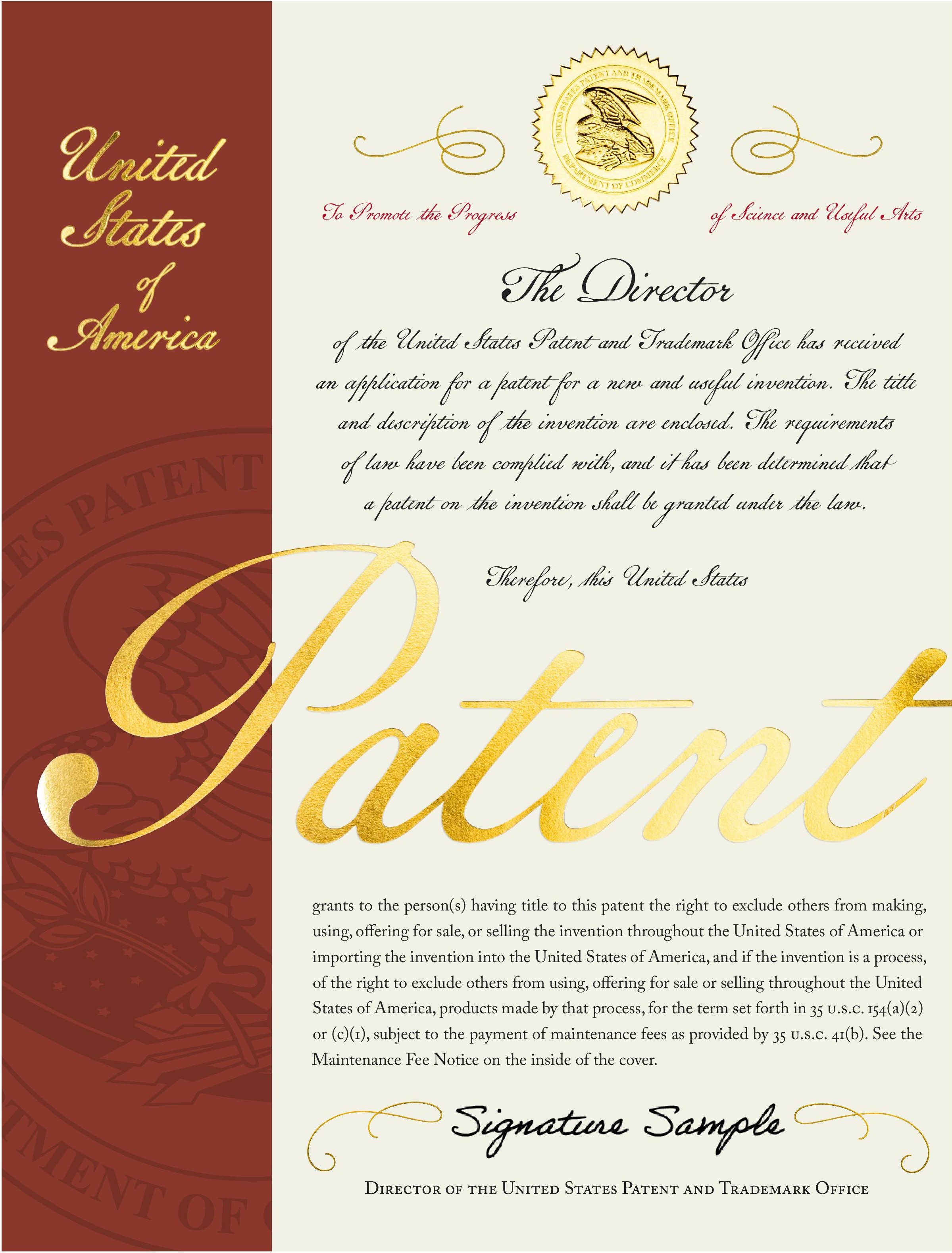
An original, hard copy U.S. Patent used to be a thing of beauty with its beautiful red ribbon adorning the cover. But, alas, no more. The Patent Office now issues an “eGrant” of all utility, design, plant, and reissue patents. It is an Adobe file with a colorful image showing the ribbon, but not a real ribbon, just what your printer produces.
This change in procedure creates a significant issue that patent applicants need to be aware of. The issuance of these eGrant patents will shorten patent pendency by about two weeks. Once the eGrant patent is email to the applicant, the patent has been issued so it is too late to file for a continuation. Accordingly, if the applicant is considering filing a continuation – always a good idea – it should be done as soon as the applicant receives the Issue Notification and no later!
If you are not familiar with the value of a continuation, we suggest you read “A Continuation Adds Value and Curb Appeal to Your Patent” from our April 11 column.
A Lesson for the Patent Holder from Exxon Office Systems – Part II
Posted: 6/21/2023
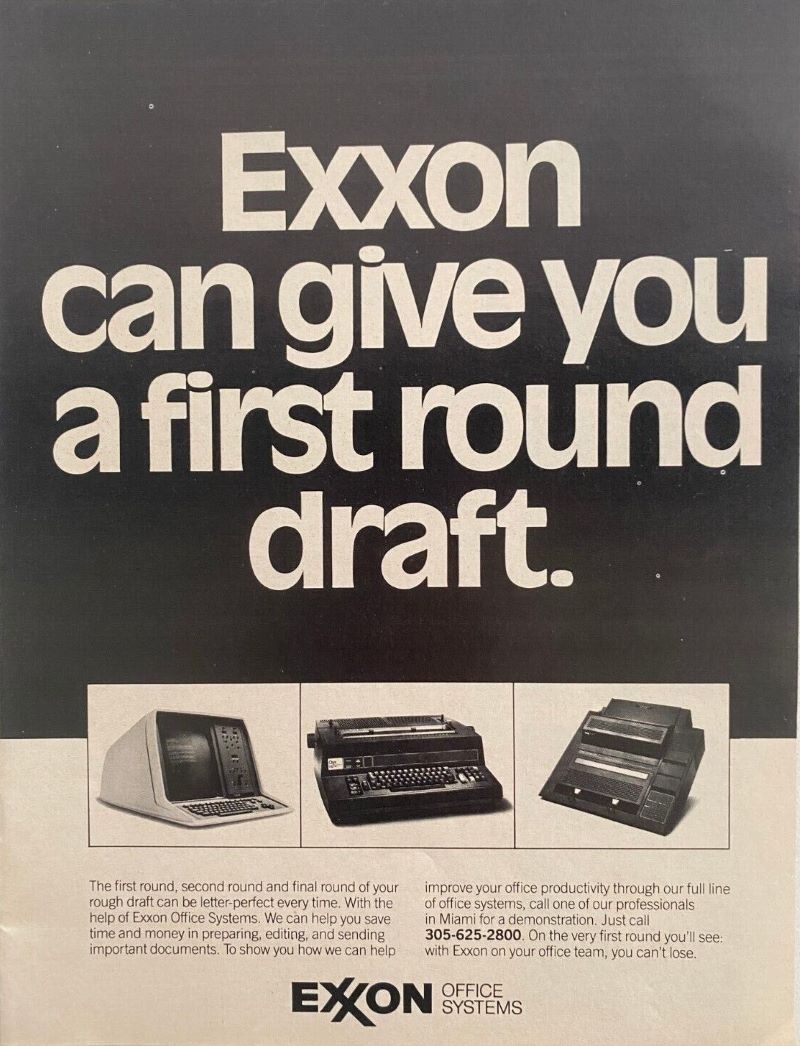
In our last installment, we told a tale of woe. In the 1970s, Exxon (before it was Exxon-Mobil) made a bold decision to diversify from oil and gas into an industry it believed had significant growth potential – office automation.
Exxon jumped in with both feet and established Exxon Office Systems. They headquartered the business in Stamford, Connecticut (far from their Irving, Texas corporate headquarters) and acquired three start-up office automation companies. Exxon Office Systems was off and running selling Qyx electronic typewriters, Qwip fax machines, and Vydec word processors. Exxon Office Systems set up a national network of offices and service facilities, hired a national salesforce and a network of service technicians, and put a ton of money into advertising.
Exxon lost at least $1 billion before shutting down the venture in the early 1980s. And that was $1 billion in 1980s dollars when gas was 70 cents a gallon. The question we asked last month was “What is the lesson for patent holders?”
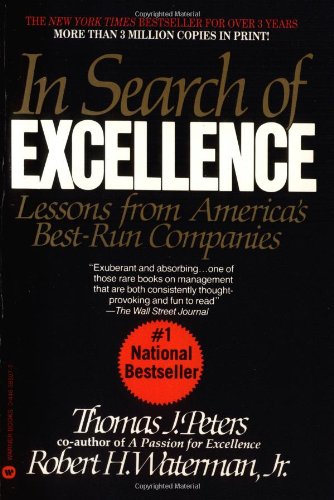
The answer lies in a best-selling book that hit the book shelves as Exxon was shutting down its disastrous foray into office automation. In Search of Excellence sold three million copies in just its first four years in the bookstores. Yes, bookstores. No Amazon.com in the 1980s. In Search of Excellence examined why successful companies were successful. Authors Tom Peters and Robert Waterman – both management consultants – had discovered seven variables that were practiced by what they identified as “excellent companies” – businesses that made money year-in and year-out, that had no problem recruiting the best staff, and whose customers delighted in doing business with them.
One of those variables is that excellent companies “stick to the knitting.” They focus on the business they know best. They do not venture out into unknown technologies and industries looking to expand – as Exxon did.
We left exactly what the lesson is as an open question at the end of last month’s column. You receive a reward this month as we share it with you. Although we did receive a handful of emails from readers, and they all guessed what our point was. Bravo!
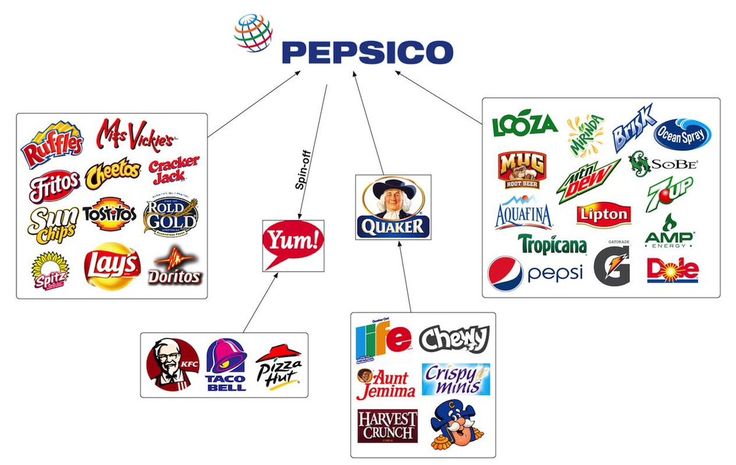
Most businesses today – especially the successful ones – have learned that straying too far from their core competencies is almost always disastrous. Most businesses today have adopted the strategy of Concentric Diversification. They only expand into new products that either share a technology with their current products or share a customer base with their current products.
Diversifying into a new technology that will be sold to a new customer base is almost always a disaster!
So…the lesson for patent owners is that every business on the face of the earth is NOT a prospect to buy or license your patent. In fact, a very select few businesses on the face of the earth are candidates to buy or license your patent or patent family or patent portfolio!
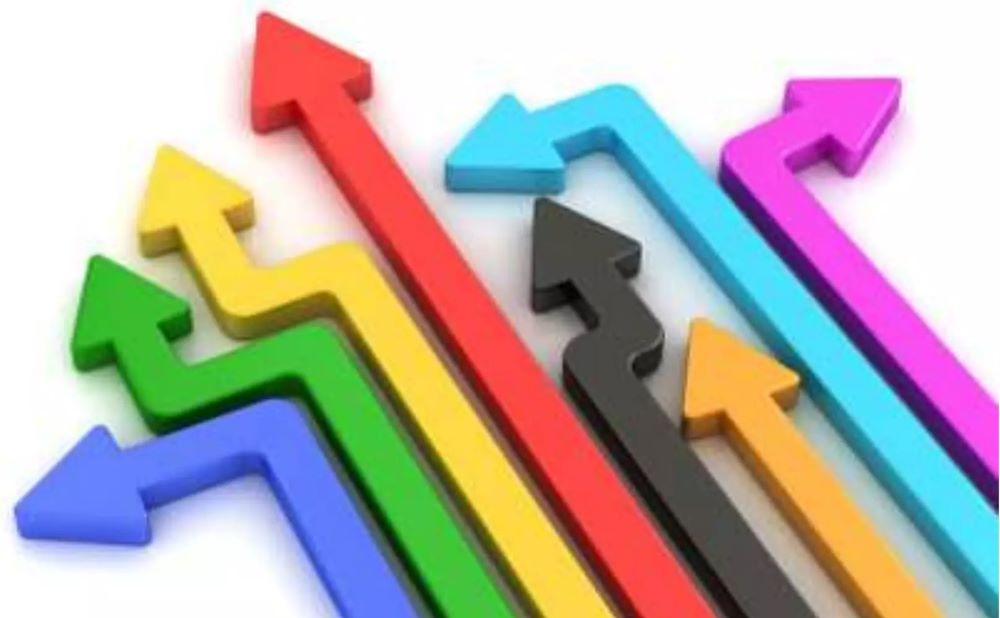
When we take on a patent or patent family or patent portfolio, as part of the marketing program we develop a Prospect List. It is a list of businesses that currently sell products and services that are in a similar technology or are sold to similar customer base as the invention covered by the patent(s).
Pepsi has expanded exponentially from a single soft drink bottler starting with its acquisition of Frito-Lay in 1965. Ever diversification Pepsi has made has been food or snack related. Pepsi is NOT going to expand into furniture or electronics or energy. No way.
We cannot tell you how many clients of ours want us to take their patents to Meta or Tesla or Alphabet when those businesses are simply NOT involved in anything related to what is covered in the patent. The longer-term issue we have to consider – as brokers – is what happens to our reputation if we took a carbonated beverage patent to Apple, or a face mask patent to Microsoft, or a packaging patent to Qualcomm? What consideration would we receive the next time we approached that company about a patent we represented?
Taking a patent to a company that’s technology and customer base is totally unrelated to the invention covered by the patent is not just unproductive, it is counter-productive because it draws resources away from where they should be deployed and burns bridges that took years to build.
A Lesson for the Patent Holder from Exxon Office Systems
Posted: 5/22/2023
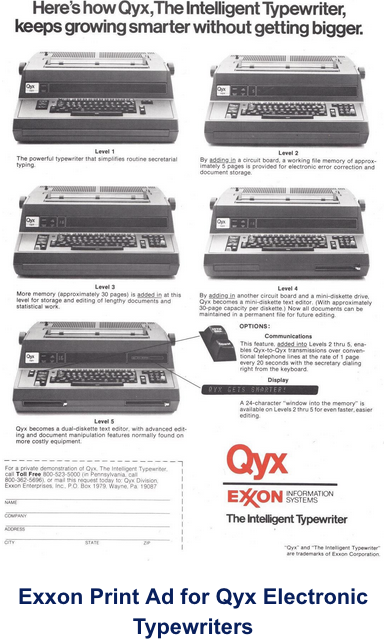
Unless you worked in the office equipment industry back in the 1970s and 80s, the term “Exxon Office Systems” will mean nothing to you. In fact, it sounds strange because Exxon (now Exxon-Mobil) is an oil company? Right?
Right. And therein lies a tale. One that we shall share with you.
In the 1970s, Exxon made a bold decision that was the result of a consulting firm’s recommendation – that they diversify into an industry that had better growth potential than gas and oil. Apple was just catching on, and IBM had not yet introduced its PC (it would arrive in 1981), so office automation looked promising.
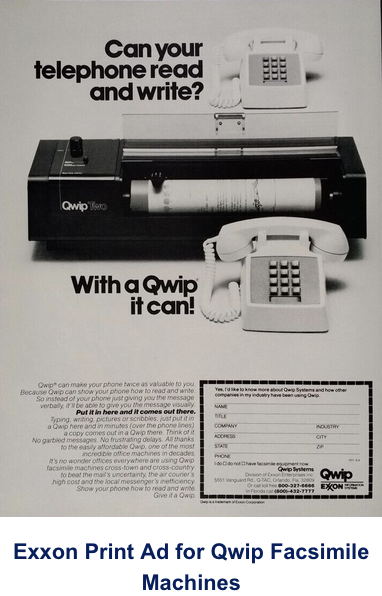
To get into the market quickly, Exxon set up Exxon Office Systems headquarter in Stamford, Connecticut, and acquired three start-up office automation companies. That gave Exxon Office Systems three product lines:
♦ Qyx Electronic Typewriters: These are typewriters that had a memory and small display so documents could be drafted before they were printed on paper, and they could be stored, revised, and reprinted as necessary. The PC with a printer and word processing software made the electronic typewriter obsolete.
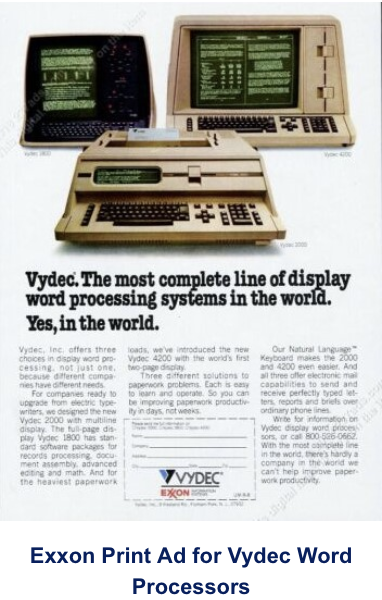
♦ Qwip Fax Machines: Before email, fax was the way to electronically transmit documents. The Internet and scanning obsoleted fax technology.
♦ Vydec Word Processors: These were PC-like units that created, stored, edited, and printed documents – but just documents. A PC with word processing software can do everything a word processor does, plus it can do accounting and dozens of other tasks, obsoleting the single-purpose word processor.
Exxon Office Systems went into business full bore. They set up a national network of offices and service facilities, hired a national salesforce and a network of service technicians, and put a ton of money into advertising.
It is impossible to determine exactly how much Exxon invested in its Office Systems business unit, but experts report that it was over $1 billion. And that’s $1 billion in 1970s and 1980s dollars. The division only generated a few hundred million in sales, and in 1983 Exxon threw in the towel and closed down the operation.

Just as Exxon was shutting down its disastrous foray into office equipment, In Search of Excellence was published and it went on to sell three million copies in just its first four years in the bookstores. Yes, on shelves in bookstores. No Amazon.com in the 1980s. In Search of Excellence examined why successful companies were successful, and the authors – management consultants Tom Peters and Robert Waterman – came up seven variables that were all practiced by what they identified as “excellent companies” – businesses that made money year-in and year-out, that had no problem recruiting the best staff, and whose customers delighted in doing business with them.
One of those variables is that excellent companies “stick to the knitting.” They focus on the business they know best. They do not venture out into unknown technologies and industries looking to expand – as Exxon did.
Exxon, now Exxon-Mobil, apparently learned a valuable lesson because Exxon-Mobil now has three business units – Upstream, Product Solutions, and Low Carbon Solutions – all different aspects of oil drilling and gasoline refining.
So, what is the lesson for patent owners? You will have to wait for the next issue.
A PCT Application Adds Value and Curb Appeal to Your Patent
Posted: 4/25/2023
In the last installment, we explained how filing for a continuation patent application before your patent is granted adds a valuable asset to your granted patent. It enables the acquirer of your patent-and-continuation-application to add additional claims and end up with a second, sister patent to the original patent that includes technology or methods or facets that were not included in the original application.
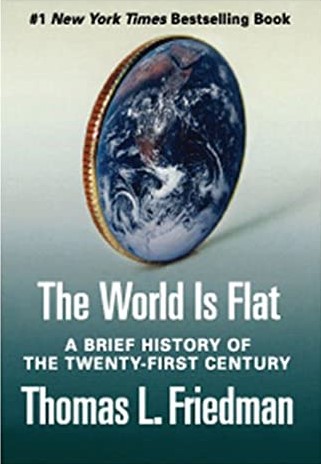
In this exciting installment, we address the second asset that will add both value and curb appeal to your soon-to-be-granted patent – a PCT Patent Application.
Everyone knows that the “World Is Flat.” We refer to the best-selling book by newspaper columnist Thomas Friedman. He proposes in his book that the competitive advantages that the industrialized nations once had are gone, and with the Internet, smartphones, Zoom, and all the other technologies that make the 21st Century the 21st Century, no one country or group of countries has a competitive advantage. All nations are now – except for labor – competing on a level playing field. A “flat” world.
In response to that, the Patent Cooperation Treaty (PCT) has expanded dramatically to include over 150 nations! It is administered by WIPO (World Intellectual Property Organization). Filing for a PCT Patent Application gives a patentee a valuable asset for his or her or its patent family. A PCT Patent Application enables the buyer of the patent and PCT Application to more easily apply for foreign patents. However, like a continuation, you MUST apply for a PCT Patent Application BEFORE your patent is granted!

We are not opposed to applying for national patents. If an inventor believes that Japan or Canada or Australia or any other nation will be a location for buyers of his or her or its patent, then by all means apply in that country or countries. And applying for a European Patent is also a good idea since one patent application can generate multiple national patents in nations with relatively large and active economies.
To be clear: A PCT Patent Application is an “application.” It does not give you patent protection, but it does make it considerably easier to apply for a foreign patent by allowing you to use the documents from your original patent application to apply for foreign patents. Additionally, a PCT Patent Application does NOT automatically guarantee you a patent in every country in which you apply for one.
Applying for a PCT Patent Application before your U.S. Patent is granted gives you yet another valuable asset in the patent family you will take to market one day. The company that buys your patent family that includes a PCT Patent Application can much more quickly and easily secure patent protection in the countries where it has a presence and plans to sell products based on your patented technology.
Why Small Country Patents Have NO Commercial Value
Posted: 4/25/2023
We receive at least one email a day from inventors with fleshly granted patents that they want to sell or license. We have to tell them that their patent has NO commercial value, and they are always upset – sometimes confrontational!
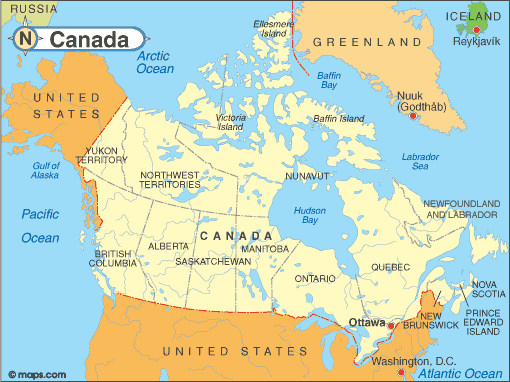
Let’s take the UK. A Great Britain Patent only grants the patentee patent protection in Great Britain (England, Wales, Northern Ireland, and Scotland). The problem is that any company anywhere in the world (except the UK) can manufacture and sell a product based on a Great Britain Patent and as long as they do not manufacture or sell it in the UK, there is NOTHING the patentee can do about it! And the entire world – less the UK – is a very big market.
The same is true of a Canadian Patent, an Australian Patent, an Indian Patent, and a South African Patent. The entire world less just one relatively small nation is a huge market! So why buy or license this British or Canadian or Australian or Indian or South African Patent when you can simply infringe the patent in all the other countries around the world and the patentee has NO recourse?
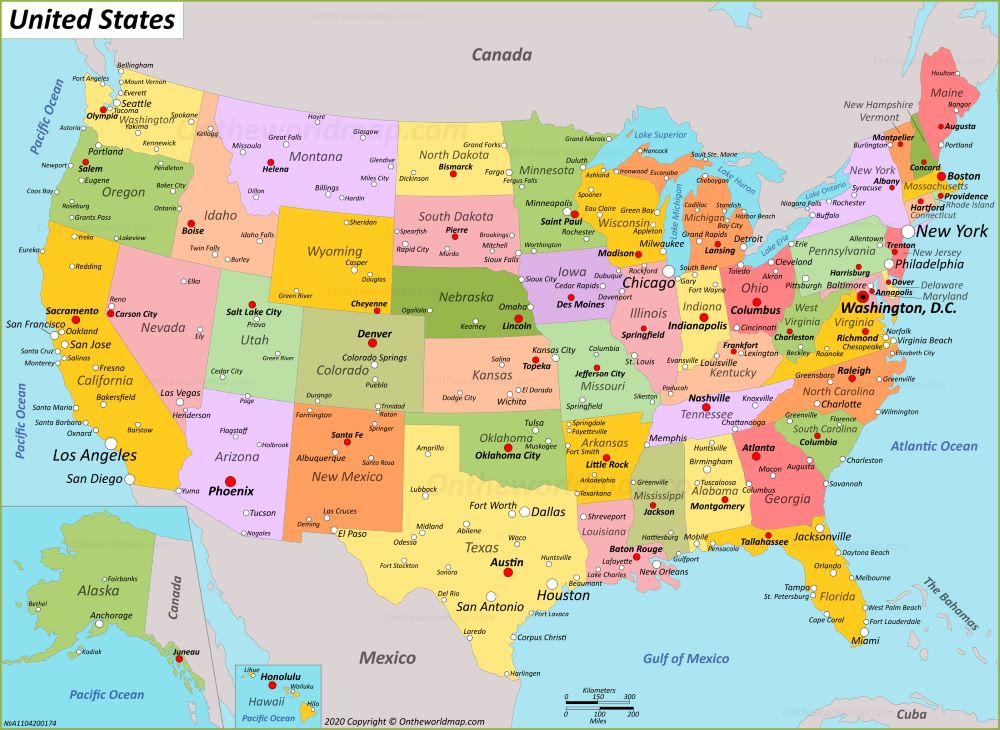
That is why we require that portfolios we represent include a U.S. Patent. Not because we are America-phobic and believe that the U.S. is the greatest nation in the world and the center of the known universe – even though it is – but because the U.S. is the largest economy. It accounts for about 15% of global Gross Domestic Product (GDP). And manufacturing and selling a product, but not in the U.S., deprives the patent infringer of a large, active, and lucrative marketplace full of early adapters. And U.S. Patents can be enforced, while patents in many other nations are very difficult to enforce.
An Australian Patent and a U.S. Patent is an attractive package, as is Korean and U.S. Patent, or European and U.S. Patent. But a single patent in a relatively small nation is of NO commercial value. Sorry.
A Continuation Adds Value and Curb Appeal to Your Patent
Posted: 4/11/2023
Patents are a unique asset class. In many ways they are similar to other assets such as real estate and securities. Patents, real estate, and securities can all be held as collateral for loans. They can be bought and sold in the open marketplace. And they can vary in value over their lifetimes.
Like real estate, the owner (“assignee” in patentspeak) of a patent is a matter of public record. Just as the County Clerk records the sale of real estate, the U.S. Patent and Trademark Office records the sale of a patent, and both such transactions are public records.

Real estate has a unique aspect to it. A building that was built and used for one purpose can be remodeled or reconfigured and used for a different purpose. Not far from our office there is a large brick building that was a textile mill 100 years ago. When the textile industry moved south, the real estate was sold. The manufacturing equipment was removed, the windows were boarded up, and the new owner turned it into a warehouse to store industrial inventory. The third owner of the building unboarded the windows and installed internal walls and hallways, as well as elevators, bathrooms, and air conditioning, and turned it into an office building. The current owner made yet further modifications to turn the building into an extended care facility. We always wondered if someone who worked in the factory, or in the warehouse, or an in office in the building, is now a resident in the extended care facility?
This is where the asset class of patents varies widely from real estate and most other assets. What is in the patent is what is in the patent. One cannot buy a patent and make a few modifications – change this claim, drop that claim, and add a new claim. It would be great if we could, but alas, we cannot. Or can we?

This is where a continuation comes into the conversation. Before a patent is granted – note this fact as we will return to it – the applicant can file for a continuation. This action creates a new patent application that includes the Priority Date and claims of the soon-to-be-granted patent. While the original applicant can use the continuation application to generate a second patent that is a extension from the first patent, a continuation has significantly more value to another party.
When Joe Inventor sells his patent to Company X, Company X gets what is in the patent and only what is in the patent. And for both parties, the sale of the patent is a good deal.
However, if Sally Inventor files for a continuation, and she sells both her granted U.S. Patent and her continuation application to Company Y, Company Y receives much, much more that just the claims in the granted patent. Company Y also receives the application, and it can become very valuable over time.
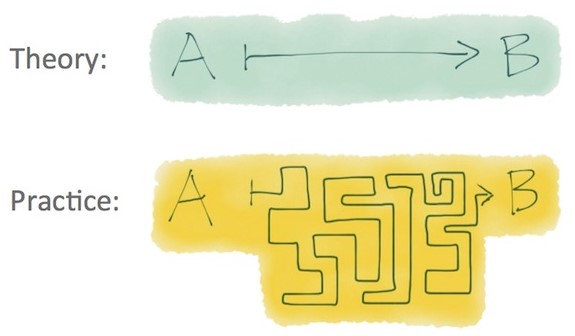
That is because there is Theory and there is Practice. Most patents start out as theory – a great idea for something new that fixes a problem, or does something faster or better, or saves time or money, or in some other way advances Western Civilization as we know it. So, the brainchild behind the invention files for a U.S. Patent. The inventor may create a working prototype or some type of proof-of-concept, but there is still a lot of ground between a one-off prototype and manufacturing a product in volume and selling it to the adoring masses.
Once Company Y has acquired Sally Inventor’s patent, it does the design and engineering necessary to get a product into production that is based on the patent. And it properly marks each product with the patent number. However, once that patent is far beyond theory and firmly ensconced in practice, Company Y discovers that it would have been great if the patent had included just one additional feature. But alas, too late.
No wait. Not too late! Company Y can use the continuation application to add a new claim or two and be granted a second patent that includes that feature, mechanism, or process not included in the original patent.
And so concludes our merry tale. That is why a patent with a continuation is far more valuable than just a single patent. And, a patent with a continuation is more attractive to the buyer, making it more salable. But…the inventor must have applied for the continuation before the first patent was granted. Hindsight, as they say, is 20/20.
So, our advice to all patent applicants – present and future – is to apply for a continuation before your patent is granted. It can pay off handsomely for you.
Answers to Your Most Often Asked Questions - Part IV
Posted: 3/27/2023
In this issue we wrap up providing answers to questions from our readers. We began the series with questions about selling a just-filed patent application, why IPOfferings does not exhibit at or attend trade shows, why most businesses that buy a patent keep the transaction a secret, and what exactly a PCT Patent Application does and does not do for its applicant. Two issues ago we covered why some inventors’ patents do not exactly match up with the invention in their heads and why one cannot first sell the idea and then have the buyer of the invention file for a patent. And in the last issue we addressed how you know if your patent is infringed, why the inventor should not try to do infringement analysis himself or herself, and what the inventor can do about his or her infringed patent.
In this issue we answer the last group of questions from our readers.
Q: Can I Renew My Patent? No. A patent is valid and enforceable for 20 years from when the application is filed and then it expires. There is a fee when the patent is filed, and another fee to have the patent issued once it is approved. And then there are two maintenance fees that have to be paid during the life of the patent. But once the 20 years has run out, the patent lapses and the invention it covers is no longer patent-protected.
Where there is sometimes confusion is that a trademark (and also a service mark) can be renewed. A trademark is initially granted for 10 years, but if the owner of the trademark shows use in commerce, it can be renewed and renewed and renewed. The Coca-Cola and GE trademarks have been around for over 100 years and will likely be around for another 100 years. A memorable example of a service mark is American Express’s “Don’t Leave Home without It.SM"
And while we are on the topic, copyrights are valid for 99 years.
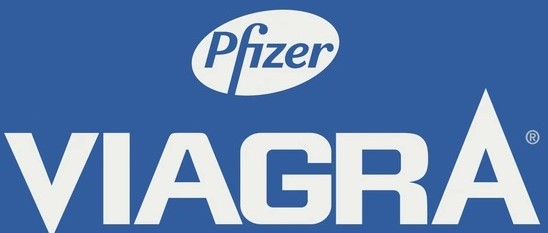
What smart companies do is use the patent to offer a product for which there is no competition for the first 20 years – while the patent is in effect. The company also develops a trademarked brand for the product and uses it during the first 20 years. When the patent runs out, competitors can now manufacture and sell products based on that expired patent, but the trademark continues, providing name recognition and a degree of protection. A good example of this is Viagra®. While there are generic versions of Viagra the trademarked product goes on and on.
Q: Should I File a Provisional or Non-Provisional Patent Application? A provisional patent application is designed for a business that will be introducing a product – or, possibly, enhancing a current product – with technology covered by the patent application. A provisional patent application gives that company one year of anonymity and time to tweak the patent application. As the company designs and engineers the product, and maybe even puts it into production, it may come across factors that should be added to the original application, and a provisional patent application enables the applicant to do that. And during the many, many months that the provisional and non-provisional patent applications are not published, the company can mark products covered by the patent application “Patent Pending” to ward off infringers.

However, if the patent application is being filed by an inventor who does not have the resources to manufacture a product based on the patent, the inventor is better off filing a non-provisional patent application, and then requesting that the application be published immediately instead of waiting the standard 18 months. The reason the inventor should do this is that it is simply not practical to try to sell or license or patent application until it is published, and filing a non-provisional patent application is the fastest way to get a patent application published.
Q: Can a Patent Have More than One Assignee? Absolutely! A patent can be sold in whole, or an interest in a patent can be sold so that the original assignee and the new assignee jointly own the patent. In fact, IPOfferings just closed a deal in which a company acquired a 50% interest in a patent.
Q: How Do I Know What My Patent Is Worth? Just as you can get an appraisal for a piece of real estate or jewelry or art, you can get a professional valuation for a patent. If your interest is simply curiosity, we do not recommend paying for a valuation. However, if you are selling or buying a business, and that business owns one or more patents, getting a professional valuation of the patent(s) will help establish the fair market value of the business entity. Also, when an inventor dies and his or her patents are part of the estate, it is often necessary to have a valuation performed to put a dollar value on the inventor’s estate.
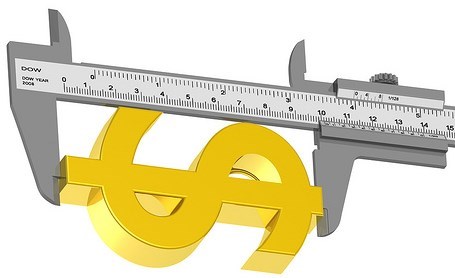
As it turns out, IPOfferings provides three patent valuation services, and they are described on the Patent Valuation Services page at our website. We offer three valuations because different valuations are needed based on the purpose of the valuation. Some need to be more detailed and in-depth, especially if they are of critical financial importance. At the Patent Valuation Services page you can download a data sheet that details what metrics are used in each valuation service and the costs for each service.
Q: How Do I Know What Broker to Select to Represent Me? Talk about a loaded question! Pick the broker that (a.) understands the invention covered by your patent and its commercialization potential, (b.) has a proven business model, and (c.) can answer all of your questions comprehensively and frankly.
This completes our four-part series in which we answered questions submitted by our readers. All four installments of the series are printed below.
Coca-Cola is a registered trademark of Coca Cola Company.
GE is a registered trademark of General Electric Company.
Don’t Leave Home without It is a service mark of American Express Company.
Viagra is a registered trademark of Pfizer Inc.
Answers to Your Most Often Asked Questions - Part III
Posted: 3/14/2023
In the last issue, we began a series in which we are answering our readers’ most often asked questions.
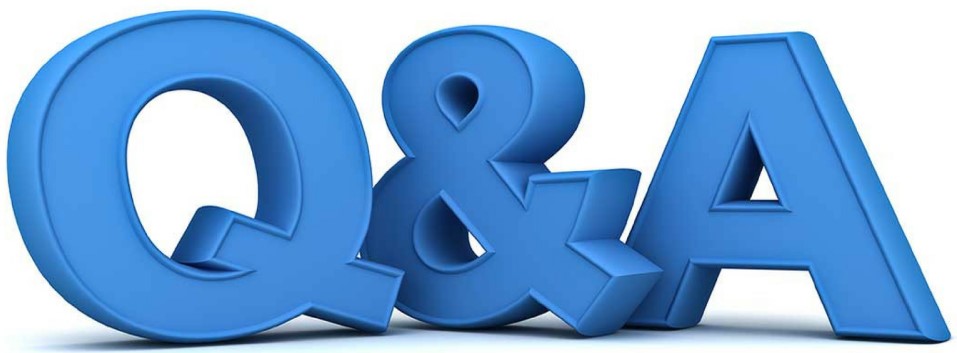
Two issues back we addressed selling a just-filed patent application, why IPOfferings does not exhibit at or attend trade shows, why most businesses that buy a patent keep the transaction a secret, and what exactly a PCT Patent Application does and does not do for its applicant. In the last issue we covered why some inventors’ patents do not exactly match up with the invention in their heads and why one cannot first sell the idea and then have the buyer file for a patent.
But you have more questions, so we have more answers.
Q: How Do I Know If My Patent Is Infringed? Let’s start with what infringement is. According to U.S. Patent Law (U.S.C. Title 35), “…whomever without authority makes, uses, offers to sell, or sells any patented invention, within the United States or imports into the United States any patented invention during the term of the patent therefor, infringes the patent.”

The courts have extended this definition to include that every aspect of at least one Independent Claim in a patent must be duplicated in a product for that product to be in infringement of the patent. That means that a product cannot just be similar or share some aspects of the invention covered by the patent, but it must exactly copy each and every aspect of that patent as detailed in one of the Independent Claims in the patent.
So, the inventor has to look at just the Independent Claim(s) in the patent, and verify that each and every aspect of at least one of the Independent Claims has been copied in this product – not some or even most, but all the aspects at least one Independent Claim.
We get calls and emails from inventors all the time who believe their patents have been infringed by products that are similar, but not identical, to what is covered by their patents. We remember a specific instance in which the product identified by the inventor did, indeed, very closely copy exactly what was described in an Independent Claim from the patent except that the patent called for the product to have a USB port while the allegedly infringing product did not have a USB port. Close but no cigar. There was no infringement. In retrospect, the inventor and his patent attorney should have left the USB port out of the Independent Claim and make in a Dependent Claim, but alas they did not. Had they done that, the inventor would have had a valid claim of infringement.
What we recommend to all inventors and business or university executives who believe their patent is infringed is that they order an Initial Infringement Analysis. This is a study that is performed by a team of IP and technical experts who identify products that are highly likely – at first pass – to be infringing the patent.
Q: Why Can’t I Do My Own Infringement Analysis? An Infringement Analysis is simply not valid unless it is done by a qualified third party. When you buy a house and apply for a mortgage, the bank will require an appraisal to determine the fair market value of the house. Will the bank permit the buyer do to this? Of course not. The appraisal must be done by a third-party who has the proper qualifications and who has NO interest in the outcome of the event. Similarly, an Infringement Analysis has to be done by a qualified, disinterested third party who has no interest in the outcome of your potential patent assertion claim.
Q: Once I Identify Infringers, Should I Sue Them All? Probably not. It is not worth the court costs and legal fees to sue an infringer with insignificant sales. In fact, you should really concentrate on infringers that are generating tens of millions of dollars in sales of infringing product.
The damages due a patent holder for infringement of his or her or its patent is reasonable royalties – what the infringer would have paid the patentee in royalties had the company licensed the patent instead of infringing it. Since suing for patent infringement will cost upwards of $100,000, there must be tens of millions of dollars of sales to generate enough royalties to make suing the infringer a viable undertaking.

Q: What Can I Do about a Patent that Is Infringing My Patent? Only products and services can be infringed by a patent. A patent cannot infringe another patent! If, however, you believe that the U.S. Patent and Trademark Office granted a patent that essentially covers the same invention as your patent, you can file for an inter partes review of the patent. That is, you can request that the Patent Trial and Appeal Board (PTAB) re-examine the patent to see if it should not have been granted or that some claims in the patent should not have been approved. However, you will need to engage a patent attorney and this can get very expensive.
There is a new Pro Bono program that provides free legal services to patentees who file inter partes appeals before the PTAB, but you must have filed under Micro Entity status and your income cannot exceed a defined level to quality.
Unlike a patent infringement lawsuit, there are no monetary damages to be collected if your inter partes review is successful – just personal satisfaction.
Next Month: Yet more answers to your questions…
Answers to Your Most Often Asked Questions - Part II
Posted: 2/20/2023
In the last issue, we began a series in which we are answering our readers’ most often asked questions.

Last issue we addressed selling a just-filed patent application, why IPOfferings does not exhibit at or attend trade shows, why most businesses that buy a patent keep the transaction a secret, and what exactly a PCT Patent Application does and does not do for its applicant. But you have more questions, so we have more answers.
Q: What Do You Mean “This Is NOT in My Patent.”? This may seem like a strange question for an inventor to ask, but it is actually quite common. To understand how an inventor comes to ask this question, we have to go back to the beginning and take you on a journey.
An inventor has an idea. He or she may have had this idea rolling around in his or her brain for years, but the time comes that the inventor decides to file for a patent for his or her invention. The inventor engages a patent attorney, describes as comprehensively as possible what the invention is to the patent attorney, and the patent attorney files a patent application on behalf of the inventor. In so doing, the patent attorney attempts to capture in words and drawings what this wonderful invention is and what it does.
The patent application is assigned to a patent examiner at the Patent Office, and the patent examiner either rejects or questions some of the claims in the patent application. As the patent application works it way through the application process, some claims may be rejected by the patent examiner – even after reconsideration at the request of the patent attorney – or may be dropped by the applicant and patent attorney while other claims may be re-written, and new claims may be added.
Two years or so after the initial patent application was filed, the patent is granted. The average pendency these days at the USPTO is about 26 months. The inventor finally has his or her shiny new patent, so the inventor reaches out to a patent broker to represent the inventor in the monetization of this wonderful new patent.
As IPOfferings begins to develop marketing materials to support this patent, we run drafts of everything past the inventor, now our client. The inventor asks why item X or step Y or process Z is not in the marketing materials. And we explain that those items are not in the patent. And thus we get the question that set off this merry tale.
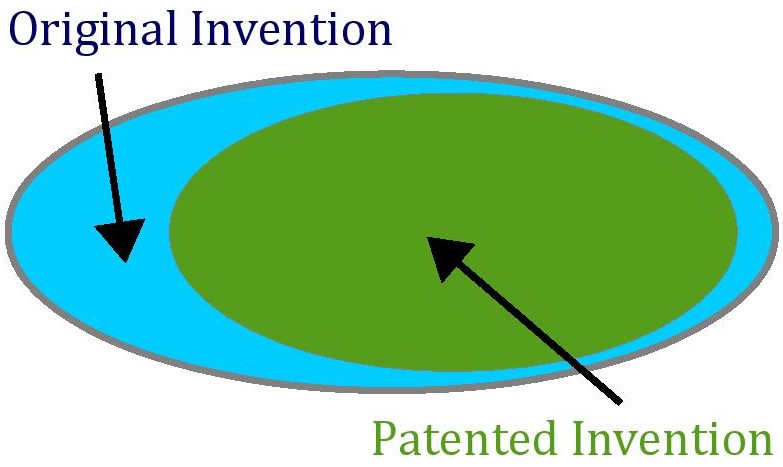
It is not uncommon for a patent to include just a portion of the original invention conceived of by the inventor and conveyed to the patent attorney. Patent attorneys – by and large – do an excellent job of representing their clients and their client’s best interests, but the choice facing a patent attorney as he or she communicates with and negotiates with the patent examiner is to either secure a patent for a portion of the original invention, or secure NO patent for the entire original invention.
As someone once said, Life, business, baseball, and patents are choices among less than perfect alternatives.
For a broker like IPOfferings – that puts considerable efforts into marketing – the answer to “What do you mean “This is not in my patent.”? is that we are not selling the original invention as it was conceived of over two years ago, we are selling the granted patent. Therefore, our marketing materials – if they are to be accurate and effective – must reflect what is in the granted patent.
This is why we strongly recommend that every inventory have his or her patent attorney file for a continuation before the patent is granted, because the continuation gives the inventor and the inventor’s patent attorney the opportunity to add in some of the elements that were not included in the initial patent.
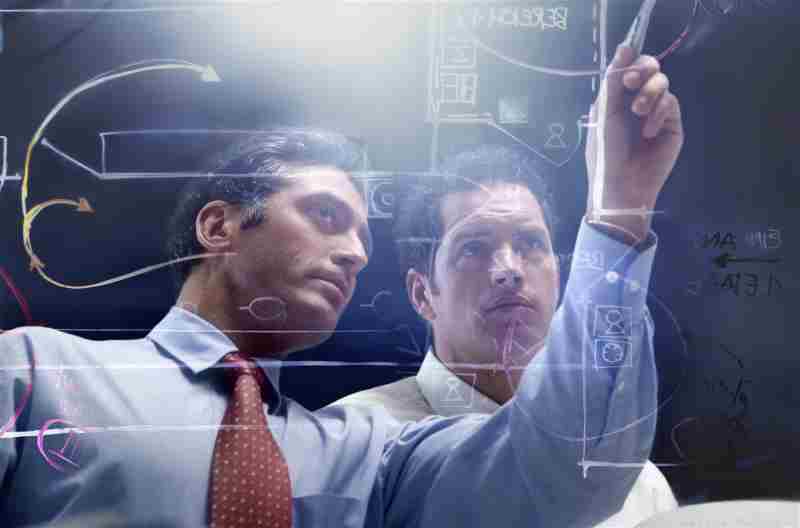
Q: Why can’t I just sell my invention and have the buyer patent it? We almost do not know where to start. First of all, is your invention patentable? Many inventors file a patent application only to find during the Prior Art search that someone else already filed a patent for that invention. What it the application is rejected by the patent examiner when he or she finds Prior Art the applicant missed? And what claims will be accepted? And which will be rejected? Or modified significantly from the original? If you show your invention to a prospective buyer, and the company passes, and then comes out with a product based on your invention, what do you do then? Sue for patent infringement? Oh, oops, you cannot do that. You do not have a patent! Sell your invention and have the buyer file for a patent? Just not practical.
Next Month: Yet more answers to your questions…
Answers to Your Most Often Asked Questions - Part I
Posted: 1/24/2023
In the last few issues, we answered readers’ questions about selling or licensing their patents. The response from our readers was very positive!
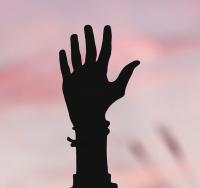
In this issue, we will continue what has become a popular format. We will answer the most often asked questions of inventors, would-be-inventors, investors, business executives, and company owners about patents, patent brokerage, and patent monetization. These questions most often come to us via email, but some are from phone calls and a few from personal visits. So here goes.
Q: Can I Sell a Just-Filed Patent Application? Technically, Yes. But you can technically sell anything including building lots on Mars and perpetual motion machines. The practical answer is No. To illustrate why, we will work backwards.

When we take a patent (or portfolio) to market, we can send prospective buyers or licensees to Google Patents where they can see the entire patent filing. We prefer Google Patents over the U.S. Patent and Trademark Office (USPTO) website because it includes more data. When we send a prospective buyer or licensee to Google Patents, he or she can see the abstract, claims, narrative, and artwork of the patent. Google Patents also provides the Priority Date and Application Date, when the patent was granted, and when it expires. Google Patents also includes any Prior Art as well as Backward and Forward Citations. It is most comprehensive and informative, and easy to navigate. Bravo Google. And it is free.
Let’s go back one step from there. If we are representing a published patent application (it will have an 11-digit number of which the first four digits are the year the application was published), Google Patents shows everything a buyer or licensee would want to know about the published patent application, including everything that is shown at the listing of a granted patent except, of course, the date the patent was granted since that event has not yet occurred. Visitors to a published patent application filing realize that what they see at Google Patents may not be the eventual granted patent. Some claims, for example, could be rejected by the patent examiner or modified by the applicant.
OK. Let’s go back in time one more step to this freshly filed patent application. While a granted patent is a public document, and a published patent application is a public document, a recently filed patent application is NOT a public document! An interested buyer or licensee cannot go to the USPTO website or Google Patents or anywhere else to see the actual patent application filing! And therein – to quote the Bard – lies the rub.
When an inventor or business or university or anyone else files a patent application, it is kept private by the Patent Office for 18 months. So, during those 18 months, we cannot send a prospective buyer a link to go and see the patent application. And sending out what is in the unpublished patent application to a prospective buyer or licensee is…well…messy to say the least. So we do not represent patent applications that have not yet been published!
However, an inventor can request that his or her or its patent application be published immediately. The inventor can file a 1129 Request for Early Publication [R-11.2013]. The patent application will be assigned an 11-digit number and be published – usually with a few weeks. Once it is published, and is a public document, it is now practical for us to take it to market.
Q: Why do we NOT go to trade shows? We have clients who want to know why we do not include trade shows as part of our marketing and sales campaign. If we go as an attendee to a trade show, who are the people working the booths at the trade show? Salespeople. And while salespeople perform a critical function for their employers, they are NOT involved in the acquisition of patents. So talking to a salesperson at a trade show booth is a total waste of time and the cost to traveling to and from the trade show. But won’t a salesperson see the potential in my patent and take it to someone in corporate? No, because it is not the salesperson’s job and a salesperson only makes money when he or she focuses on selling.
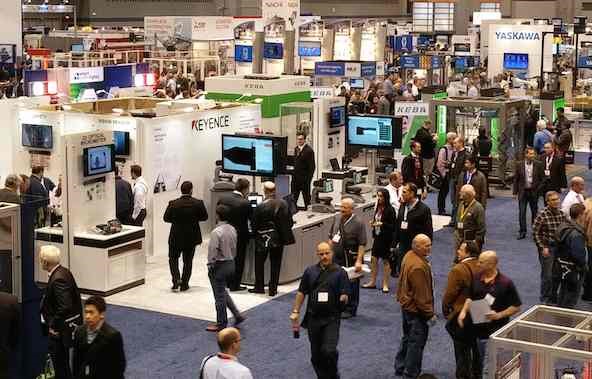
What about renting a booth at a trade show? Well, who would be visiting our booth? Trade show attendees are there to see the latest products in their industry and, possibly, place orders on behalf of their employers. Trade show attendees are NOT the executives who make decisions about acquiring intellectual property. And no trade show attendee is going to take your patent back home with him or her and take it to the right person in Corporate. So, trade shows are simply not a wise use of our time and resources. Trade shows are for products and services – not inventions.
We had a client a few years ago who had tried to sell his patent on his own for three years. He worked almost full time for three years without any success before he engaged us to represent him. He was one of those who asked about trade shows. We asked him what he had been doing for three years to promote his patent? He went to trade shows. And he wanted to know why we did not go to trade shows?
Next Month: Yet more answers to your questions…
Selling Your Patent or Portfolio - Q&A 4
Posted: 1/10/2023

In our November and December 2022 installments we answered our readers’ questions about selling their patents or patent portfolios. We addressed controlling what your patent or portfolio sells for, the pros and cons of holding an auction to sell your patent(s), figuring out what to ask for your patent or portfolio, ensuring that you get paid, increasing the value of your patent portfolio, and the benefits and drawbacks of selling versus licensing your patent or portfolio.
♦ What Are the Tax Consequences of a Patent Sale? This is the only question we cannot answer as it we are not prepared to provide tax advice. We can tell you that if you are a U.S. entity, you will receive a 1099 reporting the revenue paid to you from the sale, licensing, or other revenue generated from your patent transaction, but the tax implications are something you need to discuss with your accountant or tax adviser.
♦ What Are My Obligations after I Sell/License My Patent?This will be defined in the Patent Purchase Agreement entered into by the parties to the transaction. Most patent sales are a transfer of the ownership of the patent(s), as well as all rights associated with those patent(s), to the new owner (or “assignee”). In this case, the seller of the patent(s) has NO obligations once he or she or it has sold the patent or portfolio – just as you would have no obligations once you have sold any other asset such as stock or real estate – unless such obligations are included in the Patent Purchase Agreement. The seller will be required to certify to certain things in the Patent Purchase Agreement – that the Maintenance Fees were paid and that there is no litigation pending against the patent owner, for example. So as long as the patent seller was truthful in what he or she or it claimed in the Patent Purchase Agreement, the seller can walk away with NO outstanding responsibilities or obligations if that is how he or she or it wants the sale structured.

Some Patent Purchase Agreements have requirements and obligations for the seller. For example, some patent buyers retain the services of the inventor to assist in the implementation and commercialization of the invention covered by the patent(s). What these obligations and responsibilities are will be detailed in the Patent Purchase Agreement after negotiations among all parties to the agreement.
When you license a patent, you will likely have some ongoing responsibilities such as paying the Maintenance Fees or enforcing the patent(s) against infringers. Again, just as in a Patent Purchase Agreement, a Patent Licensing Agreement will enumerate what responsibilities or obligations the patent owner has once the patent(s) has been licensed.
This is a good point for us to interject a key factor about Patent Purchase Agreements and Patent Licensing Agreements. These are agreements negotiated among and agreed to by the parties to the transaction. The patent owner does not have to agree to anything that he or she or it does not want to agree to. We are asked all the time by clients if they “have to” do this or they “have to” do that? The patent owner does not have to do anything he or she or it does not want to do! We are reminded of the story Michael Corleone told Kate about how his father made the bandleader an “offer he couldn’t refuse.” No one will hold a gun to the patent owner’s head. The patent seller or licensor does not have to agree to anything, but he or she or it must also be prepared to walk away from the deal if the buyer or licensee wants something the patent owner is just not prepared to do.
We should also add that in our many years in patent brokerage, we never had a buyer or licensee that made any outrageous demands on the patent seller or licensor.
♦ How Do I Select a Patent Broker to Represent Me? We had to save this one for last. NO patent broker can guarantee that it can successfully monetize your patent or portfolio – at least NO ethical patent broker will make this promise. What the patent owner seeking to monetize his or her or its patent(s) should do is select a patent broker that understands the invention covered by the patent(s), has a practical strategy for commercializing the technology covered by the patent, has a two-track business model that is proven and makes sense, and takes a broad monetization approach rather than focusing on just licensing or just selling the patent(s). Then be prepared to work with the broker by providing the information and insight the broker needs to successfully tell the story of your patented invention.
Selling Your Patent or Portfolio - Q&A 3
Posted: 12/13/2022

Our last two installments addressed questions from our readers about selling their patents. Two issues ago we addressed controlling what your patent or portfolio sells for and the pros and cons of holding an auction to sell your patent(s). Last issue we addressed knowing what to ask for your patent or portfolio and ensuring that you get paid. But you have yet more questions, and we have yet more answers.
♦ How Do I Increase the Value of My Patent? This question reminds of all the real estate TV shows that show homeowners how to sell their houses by re-arranging the furniture and making quick fixes. There are NO quick fixes, but there actually are three things you can do that will increase the value of your patent.

The first is to file for a Continuation before your patent is granted. A Continuation is a patent application that saves the Priority Date and the claims from the first patent in a patent application to which you can add additional claims. Should a buyer like A, B, and C about your patent, but wishes it did D, that company can buy your granted patent and patent application and use the open patent application and apply for a second patent that includes D. If the Patent Examiner accepts the new claim or claims, the assignee has a new patent that better suits its needs.
The second is to file a PCT Patent Application. Let’s say your buyer is a U.S. company but it has a significance presence in Australia, or Germany, or Korea, or any other country or countries. The buyer of your patent and your PCT Patent Application can use the PCT Patent Application to apply for additional national patents in any of the countries where it does business.
The significant limitations that filing a Continuation and/or filing a PCT Patent Application have is that they both have to filed before your U.S. patent is granted. Every patent attorney should inform his or her client of this, but many – unfortunately – do not. So, if your U.S. patent is already granted, you missed both of these opportunities. Sorry.
The third thing you can do – after your patent has been granted – to make your patent more valuable is to develop a working prototype or have some type of proof-of-concept. This will take the invention covered by your patent beyond the concept stage and make it a reality, and of greater value to a buyer.
♦ Won’t I Get More If I License My Patent? Maybe. Maybe not. As a wise man once said, “Bingo, business, and baseball are games of chance.” Company A could license your patent, sales of products based on your patent could take off, and you could earn millions in royalties. This only occurs IF Company A agrees to license your patent and IF sales of products based on the patent take off.
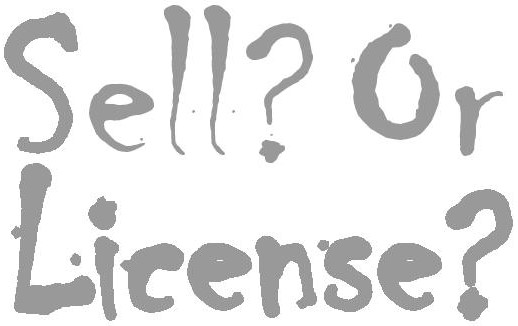
We have represented patents that were licensed, but there were no sales or very little sales of products based on the patent, so the royalties generated by the transaction were minimal. When we draft a patent licensing agreement, we always protect our client by requiring payment of a minimum royalty payment to insure that our client gets something. On the other hand, we’ve licensed patents for clients that generated revenue well into seven figures! That’s life. And bingo, business, and baseball.
This is also why few companies opt to license patents these days. The vast majority of deals we close are for cash purchases of the patent or portfolio we represent. Buying a patent – owning it, practicing it, controlling it, promoting it, and enforcing it – is the alternative most buyers prefer. Buying a patent is a clean, neat transaction while licensing involves bookkeeping, reporting, liabilities, paperwork, and other assorted headaches.
We’ve had at least one instance in which an inventor insisted on licensing his patent, but we had just one offer and it was to buy the patent, so the inventor turned the offer down because he was only interested in licensing his patent. Unfortunately, we were never able to find an offer to license the patent! So just be prepared – if in your heart of hearts you really, really, really want to license your patent – that you may get just one offer, and it may be to buy your patent.
Next Month: We answer the last of your questions about selling your patent.
Selling Your Patent or Portfolio - Q&A 2
Posted: 11/28/2022
Three recent installments in this space addressed what a patentee (the patent owner) needs to know about selling his or her or its patent or patent family or patent portfolio.

In the last installment we started answering the many questions we received about selling a patent or portfolio. The last installment address what control the patentee has over the selling price of his or her or its patent, plus why auctions are simply not practical nor effective.
But you had more questions. And we have more answers.
♦ How Do I Know I Will Get Paid? When you send an invoice to a customer for products or services, you will probably get paid, but you might not. That is why when one is selling a major asset like real estate or intellectual property the seller does not simply send out an invoice. Just as the sale of real estate always involves a trusted third party that acts as an escrow agent – it could be an attorney, a real estate agent, or the title company – the sale of a patent or patent family or patent portfolio also uses a trusted third party as the escrow agent.
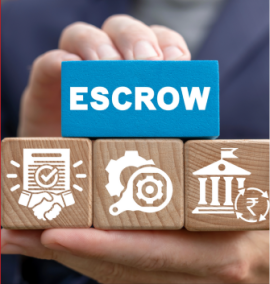
No seller of a patent is going to sign the patent over to the buyer and just hope that he or she or it gets paid. And no buyer is going to send money to the seller of the patent and then hope that the patentee assigns ownership of the patent to the buyer. Either situation could lead to lengthy litigation. Not good.
A much better system has evolved. Once the Patent Purchase Agreement (PPA) has been executed (signed by all parties), the funds to acquire the patent(s) are wire transferred to an escrow account held by the patent broker. Once the funds are received, the broker notifies the seller, and a Patent Assignment is executed and filed with the Patent Office. This is the document that transfers ownership to the new owner – a sort of deed for a patent. It only takes a few days for the USPTO to update its records and show who the new owner (“assignee” in patentspeak) is. If the sale is for an international patent portfolio, similar filings will need to be made at those patent agencies that record changes of ownership as the U.S. Patent and Trademark Office does.
This filing for change of ownership is done by either the patent broker or the buyer’s attorney. The process is similar to how the recording of the change of ownership of real property is recorded at the County Clerk’s Office in the county where the property is located. Once the change of ownership is recorded by the Patent Office, the broker releases from the escrow account the funds due the seller – usually via wire transfer but it is also sometimes by check – completing the transaction.
This system of using the patent broker as the escrow agent prevents monetary disputes and possible lawsuits, ensuring the seller gets paid.
♦ How Do I Know What to Ask for? We do not recommend setting an asking price for the patents we represent, and we do not put an asking pricing on any of the patents we represent. The reality is that it is a buyer’s market out there, so we let the buyer set the price. Setting an asking price will only work against you and never in your favor.
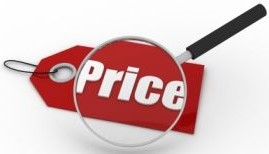
A few years back we had a client who insisted when he first contacted us that he “would not settle for a penny less than $250,000” for his patent. We reviewed his patent and agreed to represent him. That was fine, but we had to keep in mind that he “would not settle for a penny less than $250,000.” In every email he sent us, he reminded us that he “would not settle for a penny less than $250,000” and he even wanted us to put that in the newsletter, at our website, and in the prospectus. We refused to put a selling price on his patent and he was very upset.
We received an offer from a buyer for $325,000. We suggested he make a counteroffer for $400,000 which he did. We ended up selling the patent for $380,00. Had we actually told the buyer that the patentee “would not settle for a penny less than $250,000” what would we have received for the patent? We’d have left $130,000 on the table.
Going to market with too low an asking price can leave money on the table, while going to market with too high an asking price can chase a away an otherwise serious buyer. The bottom line is that there is no need to put a selling price on your patent. You and your broker can have a price range in mind, but that should be proprietary data.
Next Issue: Yet more answers to your questions about selling your patent…
Selling Your Patent or Portfolio - Q&A 1
Posted: 11/15/2022
Our last three installments addressed what a patentee (patent owner) needs to know about selling his or her or its patent or patent family or patent portfolio.
In this installment we start answering the many questions we received. Here we go…
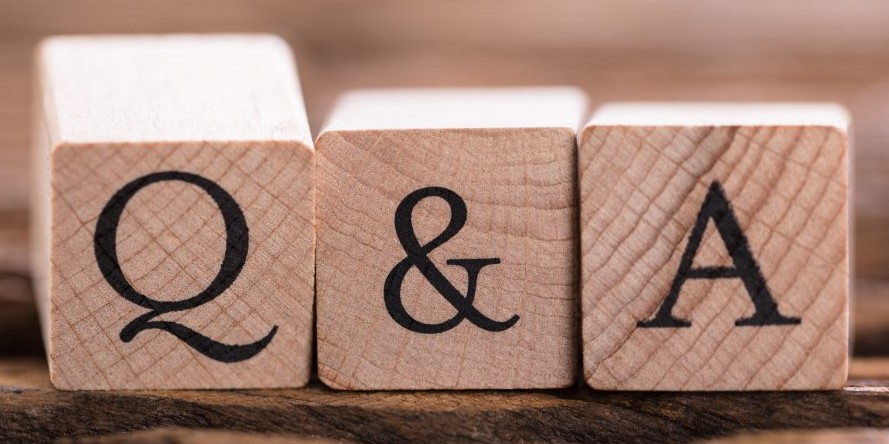
♦ Do I have control over what my patent sells for? First of all, we are very surprised to receive this question! When you sell a house, do you have control over what it sells for? If you sell a car, or stock, or a dining room set, or your golf clubs, or that ugly painting that your crazy aunt left you, do you have control over the price? Of course you do! The only exceptions we can think of to your NOT having control over what an asset you own sells for is if you file bankruptcy and your assets are sold at auction, or you are declared incompetent and your court-appointed trustee sells off your assets.
If you have not filed bankruptcy, and no court has found you not competent to manage your affairs, you absolutely have control over what your patent(s) – and all your other assets – sells for! When your patent broker finds an interested buyer, that buyer will make an offer, and your broker will bring that offer to you. A quality broker will include its recommendations regarding the offer, but it is 100% your decision as the owner of the patent to either reject the offer, accept the offer, or make a counter-offer. There are NO circumstances we can conceive of under which a patent owner would be forced to sell a patent and have no control over the price – unless you filed bankruptcy or were declared incompetent!
We also need to add that there will be a Patent Purchase Agreement (PPA) that will be drafted, reviewed, edited, and agreed to by both sides, and the PPA will include not just the price the patent(s) sell for, but all other terms and conditions regarding the transaction. There is NO sale of the patent(s) until the PPA is signed by the patentee, giving the patentee 100% control over not just the price at which the patent(s) is sold, but all other terms and conditions of the sale! Again, we are surprised that people asked this question.
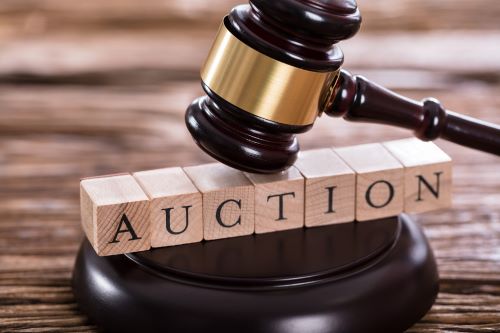
♦ Why not just have an auction to sell my patent? Ah, were it that easy. To answer this, we first have to explain the process by which a company decides to acquire a patent. Most businesses have a purchasing agent or purchasing director who makes decisions regarding the acquisition of items the business regularly uses in the course of its business – supplies, parts, components, packaging, equipment, and so on. Retailers have buyers who select what products will be purchased for resale in their stores or online. No such positions exist when it comes to patents. It would be great if we could just call up Denise, email her the patent we represent, and Denise would either decide to buy or not buy it. That is not how things operate in patentland.
Acquiring a patent is a company-wide decision. Before Company A acquires your patent, Engineering will need to determine what will be involved in turning your patented invention into a patented product. Manufacturing will need to either set up a line for this new product or contract with an assembler to produce it. Accounting will look over the cost structure of such a product to determine if it can be sold at a reasonable profit. Sales may need to bring on new staff to handle this new product, and if it is a retail product, Sales will need to negotiate for shelf space with their retailer network. Marketing will need to come up with packaging and an ad campaign for the product. Human Resources may have to recruit specialized personnel to handle the manufacturing or packaging or distribution of the product. Customer Service will need to train its personnel to support the new product. And so on and so forth.
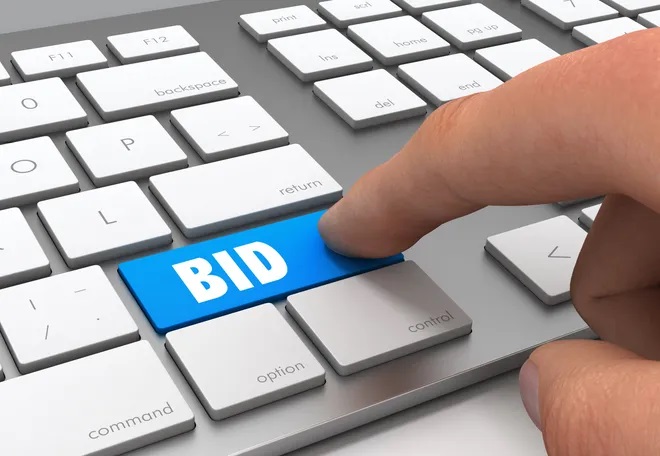
That’s why we’ve written in this space many times that the selling cycle for a patent is typically three to nine months. Here is the problem with an auction. If Company A has not brought Engineering, Manufacturing, Accounting, Sales, Marketing, Human Resources, Customer Service, and other business units into the decision-making process before the date of the auction, Company A will not be ready to make a bid for the patent. The odds that all the companies that might be interested in your patent will all be ready to make a decision on a certain date are pretty long. So an auction with no bidders - or just one bidder - is a colossal waste of time and resources.
The other problem with an auction is that if there are no bidders, or just a few low-ball bids, it damages the value of the patent and makes it more difficult to sell down the road. Why not just have an auction? Auctions are great for selling everyday objects that anyone or any business can use – computers, furniture, supplies, equipment, fixtures, vehicles, art, etc. Auctions just do not work for something as specialized as a patent.
Next Issue: We answer yet more of your questions about selling your patent.
Selling Your Patent or Portfolio - Part III
Posted: 10/25/2022
Our last two installments addressed the nuts and bolts of selling your patent or portfolio. Once, that is, that your patent broker has identified a buyer for your IP assets!
The last two pieces covered a Term Sheet, Patent Purchase Agreement, Encumbrances, Grant Back, Escrow, Patent Assignment, Selling a Patent Application, and a License-to-Own. If you missed either or both of the last two installments, scroll down where both are re-printed along with all previous Patent Leather installments.
This issue we pick up where we left off and address additional intelligence you need to know when you sell your patent or portfolio.
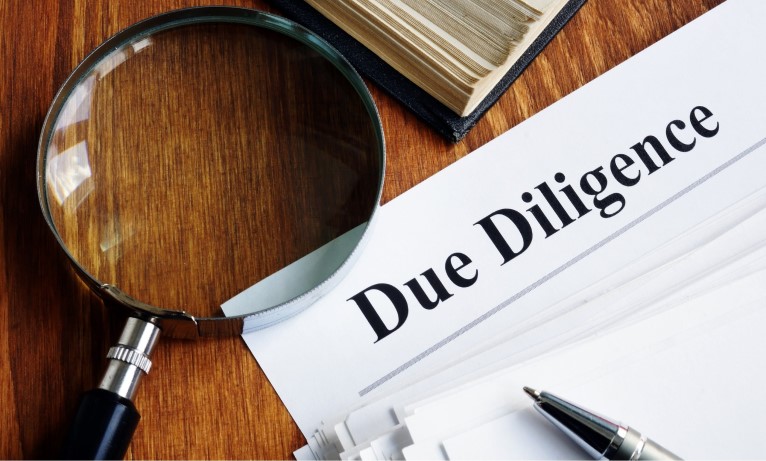
♦ Due Diligence: It is a common practice for the acquirer of a patent or portfolio to conduct due diligence to make sure there will be no problems down the road with the patent or patents it is acquiring. The buyer will review the prosecution of the patent application to see if there were any filings made challenging the patent application. The buyer will also research if any challenges have been made against the granted patents - if there are any Post Grant or Inter Partes reviews filed before the Patent Trial and Appeal Board (PTAB)
A buyer will sometimes search for Prior Art that might have been missed by the applicant and the patent examiner to determine if the patent(s) could be subject to invalidation by the PTAB.
Due diligence can also include verifying ownership of the patent. If it was transferred from the original assignee, were all the filings in order? One issue that some buyers will research is if the inventor has a waiver from his or her employer relinquishing any rights to the patent.
Other due diligence issues include verifying that all maintenance fees were paid and if there are any other possible financial liabilities or obligations associated with the patent(s). Also, when will the next maintenance fees be due?
♦ File Wrapper: Some buyers will request the File Wrapper. This consists of all the documents filed by the applicant and all files produced by the Patent Office (Office Actions, for example) during the prosecution of the patent application. Your patent broker can secure this for you if the buyer requests it.
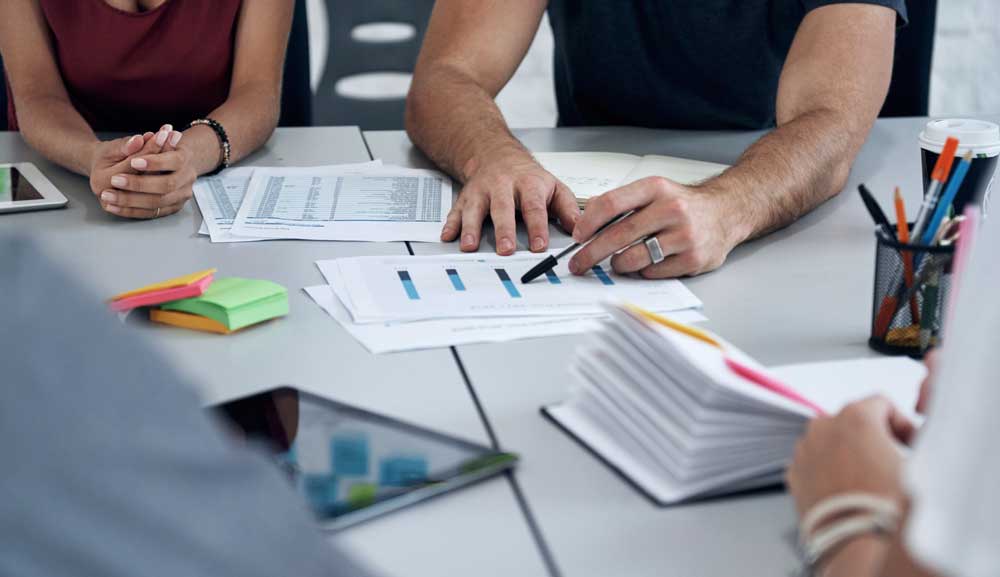
♦ Deliverables: Some Patent Purchase Agreements will have a Deliverables section that details items that the buyer requires be delivered before the transaction can be completed. For example, some buyers may want the original hard-copy ribbon version of the patent(s). Some buyers will request the inventor’s notes or any prototypes or proof-of-concept the inventor developed. What is provided under Deliverables is negotiated among the parties prior to the execution of the Patent Purchase Agreement.
♦ Enforceability: The reality is that the acquirer of the patent may need to enforce the patent one day. After all, that is the whole idea behind a patent – a monopoly granted by the federal government – but a monopoly that has to be enforced by the patent owner. Accordingly, the buyer will research the enforceability of the patent. Were there issues during the prosecution of the patent(s) that might hinder enforcement of the patent(s)? Did the seller ever have any contacts – telephone calls, letters, emails, or meetings – with prospective infringers? Have patents in similar technologies been successfully enforced? Are there 101 issues that might limit enforceability of the patent(s)?
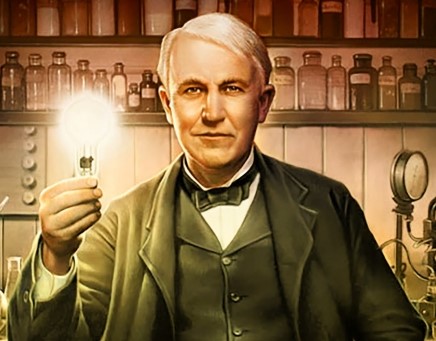
♦ Services from the Inventor(s): An acquirer will sometimes engage the inventor or the invention team of a patent to assist in the commercialization of the patent into a deliverable product. This is usually done in the form of a consulting engagement by the acquirer of the patent with the inventor(s) or the company that is selling the patent. After all, who understands the nuts and bolts of the patent better than the inventor?
Also, inventors often have ideas for their inventions that go beyond what they were able to include in the patented invention. Remember, there is the invention, and then there is the patent invention. And the original invention may have been a much grander concept! The buyer of the patent may also want that grander concept.
Questions: We did our best to describe what a patent seller needs to know. If we missed something, or you need clarification or anything we covered, contact us at [email protected].
Selling Your Patent or Portfolio - Part II
Posted: 10/11/2022
Our last installment addressed the nuts and bolts of selling your patent or portfolio. Once, that is, that your patent broker has identified a buyer for your IP assets!
Last month we covered a Term Sheet, Patent Purchase Agreement, Encumbrances, Grant Back, and Escrow. If you missed the September 28 IP MarketPlace, you can go to scroll down to where it is re-printed along with all previous Patent Leather installments.
This issue we pick up where we left off and address additional issues you need to know when you sell your patent or portfolio.
♦ Patent Assignment: Just as the sale of real estate is a public record that is recorded by the County Clerk in most U.S. states, the change in assignment of a patent is also a public record that is recorded by the U.S. Patent and Trademark Office. A Patent Assignment is completed and signed by the seller (the “assignor”) stipulating who or what is the new owner (“assignee”) of the patent, and that form is filed with the Patent Office. It just takes a few days for the USPTO to update its records and show who or what is the new assignee of the patent.
Some foreign patent offices have a similar process that has to be followed for any foreign patents in the portfolio. However, some countries to do not record and publish the second or subsequent assignees of a patent – it differs from country to country.
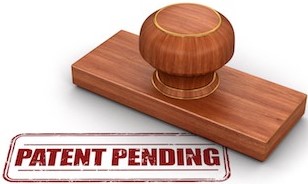
♦ Patent Application: It is not uncommon these days for an inventor or business to sell a patent application – either as a sole asset or as part of a portfolio. We’ve preached to our readers the value of filing for a continuation before a patent is issued, so it is not uncommon for a portfolio to include one or more granted patents plus a continuation application.
If the sole asset is a patent application, there is the issue of what happens if the application is not approved and a patent is not granted. After all, only about 50% of all patent applications are granted as patents, so there is the distinct possibility that the patent application is sold, but NO patent is granted. This is addressed a few different ways.
The buyer can purchase an option on the granted patent. The patent application owner then continues prosecution of the patent application, and when a patent is granted, the buyer exercises the option and buys the granted patent. Or the buyer can make an initial payment to the seller, take ownership of the patent, take over prosecution of the patent application, and make a second payment to the seller when the patent is granted. Should a patent not be granted, no second payment is made. If the buyer has confidence that a patent will be granted – usually based on advice provided by the buyer’s patent attorney – the buyer will simply buy the patent application, take over prosecution of the patent application, and hope for the best.
If the patent application or applications are part of a larger portfolio, then it makes sense for the buyer to acquire the entire portfolio and take over prosecution of any patent applications in the portfolio. By “take over” prosecution of the patent application, we mean that the buyer either engages the patent attorney currently prosecuting the patent application and pays the patent attorney’s fees going forward, or the buyer has its patent attorney replace the seller’s patent attorney in the prosecution of the patent application.

♦ License-to-Own: As we’ve reported previously, most patent transactions these days are cash sales. If a company has the cash-on-hand to buy a patent, that is what it will do. The only advantage to licensing a patent is that it backloads the cost, and that is of benefit to a company that is short on cash – a start-up, for example, or a company with declining sales and profits looking to make a turnaround.
The license-to-own program starts out as a license. The licensor (the company paying for the use of the patent technology) pays the licensee (the owner of the patent) an agreed-to quarterly royalty or a quarterly royalty based on unit or dollar sales. The agreement includes a purchase price for the patent or portfolio, and once the licensee has paid that amount in royalties, it takes ownership of the patent. This is a way for a cash-strapped company to preserve its cash, but also be able to acquire the patent or portfolio outright.
Selling Your Patent or Portfolio - Part I
Posted: 9/26/2022
Our last three installments addressed licensing versus selling your patent or patent portfolio, and we answered reader questions about licensing. A key point from the last three installments is that most patent transactions today are straight-up cash sales. While many patent owners would prefer to license their patents – and sit back and collect royalties for 15 or 18 years – that is not always an option. In fact, it is many times not an option at all.
If the only offer on the table to monetize your patent is a cash purchase of the patent – but you really, really want to license it – you may find yourself with just one option. And you will have to swallow hard, accept a sale of the patent, and give up your dream of years and years of royalty checks rolling in.
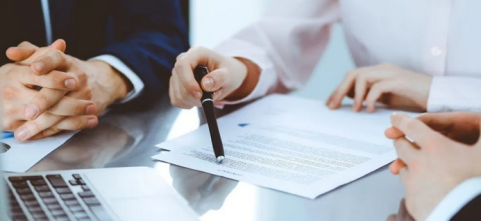
So, to prepare you for what is ahead, here are the nuts and bolts of selling your patent once you have engaged a quality patent broker, that broker has identified a buyer, and you and the buyer have agreed on a price for your IP. Whether you are selling a single patent, or a patent family, or a patent portfolio, they are all incorporated into a single agreement and the structure is essentially the same regardless of the number of patents.
♦ Terms Sheet: Many brokers suggest starting with a Terms Sheet. It is a one-page document that enumerates the key elements of the sale. Not just what the agreed-to price for the patent(s) is, but if there are encumbrances, will there be a grant back, and other issues. Once both parties have initialed the Terms Sheet, the broker can draw up a Patent Purchase Agreement (PPA).
♦ Patent Purchase Agreement: The PPA includes all the terms and conditions of the transaction. IPOfferings has a PPA template that we make available to the buyer, but some buyers prefer to draw up their own PPA or they may have a PPA template of their own. The PPA is reviewed and red-lined by both parties, and eventually a final version is agreed to and signed by all parties. You may want to have the PPA reviewed by your attorney, but understand that large corporations know it is a buyer’s market, so they are not too receptive to major edits by the patent seller to the Patent Purchase Agreement. Three key elements that are included in a Patent Purchase Agreement are Encumbrances, Grant Back, and Escrow.
♦ Encumbrances: Just as the buyer of a piece of real estate has a Title Search done on the property he or she or it is purchasing, the buyer will want to know if there are any encumbrances to the patent(s) it is purchasing and what they are. Are there any licensees? If so, the buyer will want to see the license agreement(s) so it knows exactly what its limitations and responsibilities are as the licensor of the patent once it acquires the patent. Are there any leans against the patent? A patent agent will sometimes take a lien (a patent is an asset like real estate or a vehicle against which third parties can file a lien) against a patent to ensure he or she is paid. If the patent owner has borrowed against the patent, the buyer needs to know that as well. If any actions were filed against the patent – challenges during prosecution of the patent application or any post-grant reviews – the buyer needs to know. Have all the USPTO Maintenance Fees been paid? If not, who will pay them?
Most patents are unencumbered. There are no licensees, no liens, no litigation. And if that is the case, the seller must so stipulate in the PPA. If there are encumbrances, they must be detailed in the Patent Purchase Agreement along with how each will be addressed by both parties.
♦ Grant Back: When a patent is sold, it is sometimes a condition of the sale that the buyer will issue a “grant back” to the seller. A grant back “grants back” to the seller the right to practice the patent even though he or she or it no longer owns the patent. The buyer is essentially granting the seller a free lifetime license to the patent. This gives the patent seller the right to commercialize the patent at a point in time and prevents the patent seller from ever being sued for infringement of his or her or its own patent!
Some patent buyers will simply NOT agree to a Grant Back. They want 100% ownership of the patent and all rights associated with the patent. Other buyers will issue a Grant Back, in large part because they do not imagine the patent owner becoming serious competition should he or she or it exercise the Grant Back and start manufacturing and selling products based on the patent.

♦ Escrow: There is the issue of how the seller will be paid by the buyer. The buyer is not going to pay the seller and then hope that the seller signs the patent(s) over to the buyer. Should the seller fail to sign over the patents, the buyer will have to sue and that is messy and time-consuming. Similarly, the seller may not want to sign over his or her or its patent(s) to the seller until he is paid. This stand-off is resolved by using the broker as an Escrow Agent. The funds for the purchase are paid to the broker – usually via wire transfer – and put in an Escrow Account. The broker notifies the seller that it has been paid, so the seller is then secure in signing over ownership of the patent(s) to the buyer. Once the ownership (“assignment” is the Patent Office term) of the patent(s) has been made and it is recorded by the USPTO, the broker then releases from the Escrow Account the funds due the seller, and the transaction is completed.
More About Licensing Your Patent – Part II
Posted: 8/22/2022
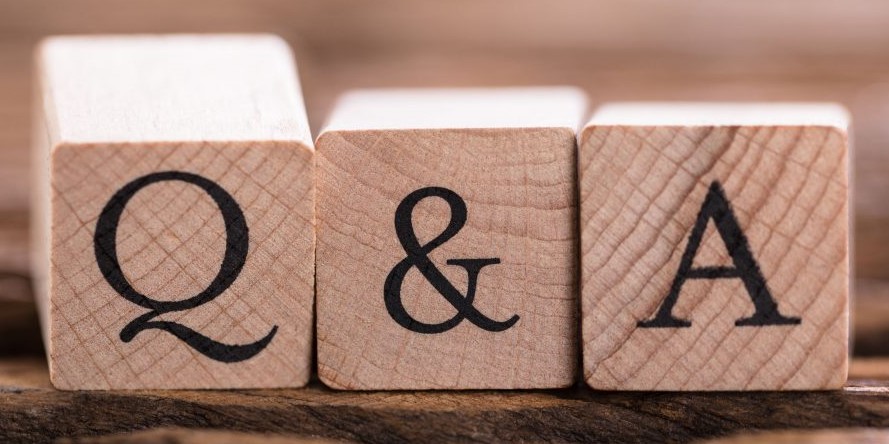 Two installments ago we covered why most businesses prefer to buy – rather than license – a patent. We explained that buying a patent – if a company has the cash on hand – is much simpler, easier, cleaner, and cheaper than licensing a patent. So, most companies opt to simply buy a patent, own it, practice it, promote it at the company website, mark their products with it, maybe cross-license it, and assert it against any and all infringers.
Two installments ago we covered why most businesses prefer to buy – rather than license – a patent. We explained that buying a patent – if a company has the cash on hand – is much simpler, easier, cleaner, and cheaper than licensing a patent. So, most companies opt to simply buy a patent, own it, practice it, promote it at the company website, mark their products with it, maybe cross-license it, and assert it against any and all infringers.
However, if a company does not have sufficient cash-on-hand to buy a patent – it is a start-up company with limited resources or it is a company that needs to preserve its cash – it will license a patent since licensing has the advantage of back-loading the cost of the patent. Yes, the company will pay more – very likely much, much more – over the life of the patent in royalties than the company would have spent to buy the patent, but it will preserve its cash and have access to the patented technology.
Our installment on selling vs licensing a patent drew many questions, and we answered several of them in our last installment. But there are yet more questions, and here are the answers.
♦ What if the licensee never actually sells any products covered by the patent? This is entirely possible. Company A could license your patent, build a few prototypes, take them to trade shows, and show them to its best customers, only to discover that no one is interested! Or the price to build a product based on the patent makes it too costly and not competitive. If the licensee fails to generate any significant sales of products based on the patent, there will be little or NO royalties to be paid. This is one of the risks of licensing.
Some patent licenses include a minimum quarterly royalty payment. For the first year of the license, for example, the licensee agrees to pay X dollars a quarter until sales of the patented products reach the level that royalties begin to exceed X dollars. This can be negotiated into the patent license, and it is usually just for a fixed period at the beginning of the term of the license.
 ♦ What is cross-licensing? Company A has a patented technology that Company B (a direct competitor, perhaps) wants, but Company A is not about it sell its patent to Company B. Meanwhile, Company B has a patented technology that Company A wants, but Company B is not about it sell its patent to Company A. The solution is for Company A and Company B to license (i.e., “cross license”) the two patents to each other. Cross licensing is not for inventors, but for operating companies that own and practice patents.
♦ What is cross-licensing? Company A has a patented technology that Company B (a direct competitor, perhaps) wants, but Company A is not about it sell its patent to Company B. Meanwhile, Company B has a patented technology that Company A wants, but Company B is not about it sell its patent to Company A. The solution is for Company A and Company B to license (i.e., “cross license”) the two patents to each other. Cross licensing is not for inventors, but for operating companies that own and practice patents.
♦ What if the licensee fails to pay the royalties? Just as a vendor can fail to pay in invoice or a tenant can fail to pay the rent, a licensee can fail to pay the royalties due the licensor. Most license agreements include verbiage to address this issue and what the penalties are should the licensee fail to make the required royalty payments. To collect unpaid royalties, the licensor may have to sue the licensee – usually in state court.
♦ Can a patent license agreement be re-negotiated? Any agreement can be renegotiated. If the licensor or licensee is not satisfied with how the licensing agreement is working out, either can contact the other and enter into negotiations to terminate or modify the agreement. Of course, both parties must agree. It cannot be done unilaterally.
♦ How does the licensor know it is being paid the royalties it is truly owed? The licensor (the owner of the patent to whom royalties are paid) must rely on the licensee (the entity that is paying royalties for the use of the patented technology) to report its sales of products covered by the licensed patent(s). It is normal procedure that a licensing agreement gives the licensor the right to audit the licensee’s books if it believes it is not being paid all the royalties it is due.
♦ Can you sell the patent AND collect royalties? As we wrote previously, everything is negotiable. If a company really, really, really wants your technology, it is possible that a company may BOTH buy your patent for cash on the front end AND pay you a royalty on the back end. It is rare, but is has been done.
♦ What happens to a patent that is licensed and then sold? Should a patent be licensed, and then sold, the licensee will be obliged to pay royalties to the new owner of the patent – just as a tenant would pay rent to the new owner of a house or office or warehouse that it is renting.
♦ What happens if the licensee is acquired by another business? All patent licenses include verbiage that the license is still effective should the licensee be acquired by another business, and that the acquiring business must assume all the responsibilities detailed in the patent licensing agreement.
♦ What happens if the licensee files bankruptcy? This is yet another risk of licensing. When a company files bankruptcy, it is in most cases not legally obliged to pay royalties until the bankruptcy is discharged, at which time royalty payments should resume. The licensee will, of course, attempt to use bankruptcy to renegotiate the terms of the license.
♦ What if the licensee goes out of business? Yet one more risk of licensing. The only good news is that the patent – if it was an exclusive license – can now be licensed to another company – very likely a direct competitor of the first licensee.
We must remind our readers that despite the desire of many patent owners to license their patents – and then sit back and collect royalties for 15 or 18 years – most patent transactions these days are straight cash acquisitions. The patent owner who wishes to license his or her or its patent needs to be prepared for a situation in which he finds just one monetization offer on the table, and it is not a license.
More About Licensing Your Patent – Part I
Posted: 7/11/2022
 In our last installment, we covered why most businesses prefer to buy – rather than license – a patent. To recap, buying a patent – if a company has the cash on hand – is much simpler, easier, cleaner, and cheaper than licensing a patent. So, most companies opt to simply buy a patent, own it, practice it, promote it at the company website, mark their products with it, maybe cross-license it, and assert it against any and all infringers.
In our last installment, we covered why most businesses prefer to buy – rather than license – a patent. To recap, buying a patent – if a company has the cash on hand – is much simpler, easier, cleaner, and cheaper than licensing a patent. So, most companies opt to simply buy a patent, own it, practice it, promote it at the company website, mark their products with it, maybe cross-license it, and assert it against any and all infringers.
However, if a company does not have sufficient cash-on-hand to buy a patent – it is a start-up company with limited resources or it is a company that is losing money and needs to preserve its cash – it will license a patent since licensing has the advantage of back-loading the cost of the patent. Yes, the company will pay more – very likely much, much more – over the life of the patent in royalties than had the company bought the patent, but it will preserve its cash and have access to the patented technology.
Our installment on selling vs licensing a patent drew many questions, and we shall answer them all.
♦ How are royalties computed and paid? For those few patents that are licensed, royalties can be computed in three ways. Most patent licenses call for a royalty that is a percent of sales – from as little as 0.25 or 0.50% to as much as 4 or 5% depending on the product, the industry, the competition, and other factors. A second option is a fixed dollar amount – for example, $5.00 for each product sold regardless of the selling price of the product. Whether the royalty is a percent or a dollar amount is the result of negotiations between the licensor (the patent owner) and the licensee (the entity that is paying to use the rights to the patented invention). The licensee may not want the licensor to know what it is selling the patented product for, so a fixed per unit dollar royalty addresses that need.
 A third option is a fixed fee. Rather than a percent of sales or dollar fee per unit, the licensee pays X dollars a quarter for the use of the patent. For a company that sells a package of products and services – some elements of which include the technology covered by the patent – it may be difficult to define exactly what part of the company’s sales are patent-protected, so this is a simpler option.
A third option is a fixed fee. Rather than a percent of sales or dollar fee per unit, the licensee pays X dollars a quarter for the use of the patent. For a company that sells a package of products and services – some elements of which include the technology covered by the patent – it may be difficult to define exactly what part of the company’s sales are patent-protected, so this is a simpler option.
Royalties are almost always paid quarterly via wire transfer. How they are paid is detailed in the Patent Licensing Agreement.
 ♦ How are royalties paid for a U.S. Patent if there are international sales? If Company A is licensing U.S. Patent No. 12,345,678, the patent only covers products that are made or sold in the U.S. So, the license can be written to include that Company A only has to pay royalties on products manufactured or sold in the U.S. However, if the Company A really wants the technology, the licensor may be able to negotiate to have royalties paid on ALL products – regardless of where they are manufactured or sold. Every element of a licensing agreement is negotiable, and we have done licenses for U.S. Patents in which the licensee agreed to pay royalties on ALL sales, U.S. and export.
♦ How are royalties paid for a U.S. Patent if there are international sales? If Company A is licensing U.S. Patent No. 12,345,678, the patent only covers products that are made or sold in the U.S. So, the license can be written to include that Company A only has to pay royalties on products manufactured or sold in the U.S. However, if the Company A really wants the technology, the licensor may be able to negotiate to have royalties paid on ALL products – regardless of where they are manufactured or sold. Every element of a licensing agreement is negotiable, and we have done licenses for U.S. Patents in which the licensee agreed to pay royalties on ALL sales, U.S. and export.
♦ What Is an exclusive and non-exclusive license, and what are the benefits and drawback of each? An exclusive license is one granted to just one licensee, so the licensee has exclusive rights to the patented invention, while a non-exclusive license is granted to more than one licensee. The royalties for an exclusive license will generally be greater since there is a sole entity licensed to use the patented technology, giving it a monopoly on the patented invention. No competition is a rare and wonderful thing. A non-exclusive license often comes with a lower royalty, but there will be other licensees that will be direct competitors. Needless to say, most patent licenses are exclusive.
♦ What is the term of a license agreement? Just as a licensing agreement for a U.S. Patent will typically only cover products manufactured and sold in the U.S., a licensing agreement will typically be for the remaining life of the patent. That’s 20 years from the Application Date unless the Patent Office granted a Term Adjustment. However, every aspect of a patent licensing agreement is negotiable, and we have done patent licenses that ran beyond the expiration date of the patent because the licensee wanted the technology and was willing to agree to continue to pay royalties past the expiration of the patent to get the technology.
♦ What if the licensee stops selling products covered by the patent? It is entirely possible that five or eight or ten years into the licensing agreement the licensee will cease selling products based on the patented technology. There are any number of reasons for this. The company shifts its focus to other technologies. The product is no longer profitable or in demand. A new technology has come along that has obsoleted the technology covered by the licensed patent. If sales of patented products stops, payment of royalties then also stops. This is one of the many risks of licensing.
In the next issue we will answer additional questions from our readers about patent licensing.
Buying and Selling – vs Licensing – a Patent
Posted: 6/25/2022
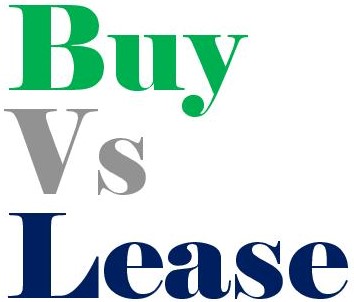 We are approached just about every day by a patent owner – an inventor or business or other entity – that wants to license his or her or its patent or portfolio. Ah, were it that easy…
We are approached just about every day by a patent owner – an inventor or business or other entity – that wants to license his or her or its patent or portfolio. Ah, were it that easy…
Let’s step aside from patents for a moment, and consider the options of buying versus leasing other assets. In the long run, it is cheaper to buy a house – make the mortgage payments, build equity, and eventually own it – than to lease or rent a house. The same concept applies to an office building, factory, or warehouse. And it is cheaper to buy a car than lease a car – especially if you can buy the car for cash so you have no payments. But even if you have to make car payments, financing is always cheaper than leasing. The same concept applies to a truck for a business. Or office or factory equipment. Or any other capital expenditure.
To be fair, there may be one exception to this rule. In some cases, it is cheaper and smarter to license rather than buy software especially if support and training are covered by the license, but this is the only exception we know of to the rule that buying is always cheaper than renting, leasing, or licensing.
The same principles apply to buying versus licensing a patent. It will almost always be cheaper for a business to buy a patent for cash, own the patent, practice the patent, maybe license the patent to a competitor, cross license it to a strategic partner, promote the patent at is website, mark its products with the patent, and assert the patent against any and all infringers.
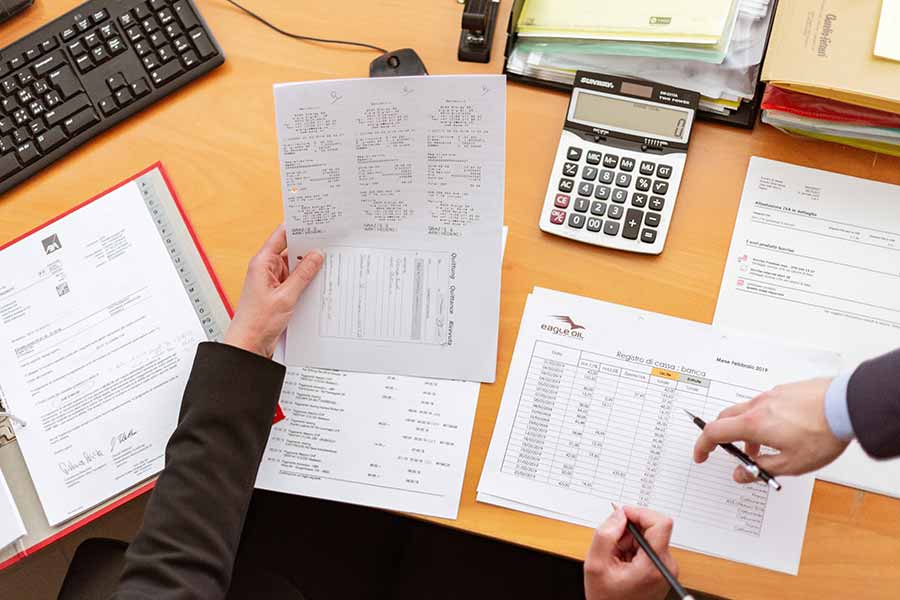 That is why the vast majority of the patents we successfully monetize for our clients are cash sales. The companies that are acquiring patents put one and only one monetization offer on the table – a cash purchase. By “cash purchase” we really mean a wire transfer, but our readers know that. “Cash purchase” is the current vernacular.
That is why the vast majority of the patents we successfully monetize for our clients are cash sales. The companies that are acquiring patents put one and only one monetization offer on the table – a cash purchase. By “cash purchase” we really mean a wire transfer, but our readers know that. “Cash purchase” is the current vernacular.
The simple reality is that if Company A licenses a patent, and the products based on that patent take off, Company A will be paying royalties for the life of the patent – which could be 10 or 15 or more years depending on the age of the patent. And that could get very expensive. We recently ran an article about the inventor of the flash memory drive. Imagine what the royalties must have been on $8 billion in sales?
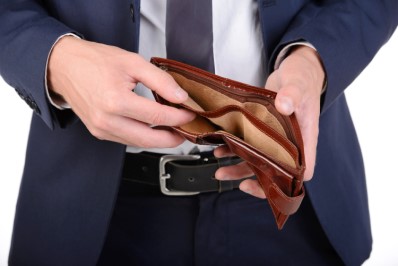 There are also some negatives – other than cost – to licensing a patent. The licensee (the entity that is licensing the patent) has to break out sales from its total sales of just those products that are covered by the patent. It then has to subtract from that number those sales not covered by the patent. If we are talking about a U.S. Patent, for example, then foreign sales – unless they were included in the licensing agreement – are not subject to a royalty. The licensing agreement will probably also consider returns, adjustments, and credits to define exactly what sales of patent-covered products are subject to royalties. And then the royalty has to be paid four times a year for the life of the patent. That’s a lot of bookkeeping.
There are also some negatives – other than cost – to licensing a patent. The licensee (the entity that is licensing the patent) has to break out sales from its total sales of just those products that are covered by the patent. It then has to subtract from that number those sales not covered by the patent. If we are talking about a U.S. Patent, for example, then foreign sales – unless they were included in the licensing agreement – are not subject to a royalty. The licensing agreement will probably also consider returns, adjustments, and credits to define exactly what sales of patent-covered products are subject to royalties. And then the royalty has to be paid four times a year for the life of the patent. That’s a lot of bookkeeping.
On top of that, when the licensor (the patent owner) receives each quarterly royalty payment, he or she or it knows exactly what the licensee’s sales are of patent-covered products. And that is a number the licensee might not want the general public – and, especially, its competitors – to know.
And there are other negatives to licensing a patent. If an infringer shows up, and the licensee informs the licensor of the infringement, what if the licensor fails to act to protect the licensee’s interests? What good is a patent license if the patent is infringed, and the licensor fails to take action?
Okay. There must be some benefit to licensing a patent. And there is. If Company A does not have the cash on hand to outright buy the patent, it will offer to license it. While it will be more costly to license the patent, at least those costs are backloaded. And as everyone in business knows, whenever possible, frontload the revenue and backload the costs. A start-up company, or a small privately held company, or a company that is losing money and needs to preserve its cash, are all candidates to license a patent.
 And since buying a patent is so much cleaner, neater, simpler, easier, and more confidential than licensing a patent, it has become a common practice for start-ups or smaller businesses that have to license a patent to negotiate a licensing agreement that includes the option to acquire the patent at an agreed-to price during the term of the license, so the licensee can buy the patent – with cash generated from sales of the patent-protected products – and stop making royalty payments.
And since buying a patent is so much cleaner, neater, simpler, easier, and more confidential than licensing a patent, it has become a common practice for start-ups or smaller businesses that have to license a patent to negotiate a licensing agreement that includes the option to acquire the patent at an agreed-to price during the term of the license, so the licensee can buy the patent – with cash generated from sales of the patent-protected products – and stop making royalty payments.
According to the latest figures from the Federal Reserve, U.S. corporations are sitting on $3.82 trillion. That’s cash sitting in bank accounts. That’s why so few companies license patents, but opt to buy them.
So….if you own a patent, and you want to license it, we will take our best shot at it if we believe in the viability of the patented invention. But prepare yourself to not be surprised if the only offers you get are for straight cash acquisition of your patent or patents. And then you have to decide not between selling or licensing, but between selling or walking away.
The Story of the USB Flash Drive
Posted: 6/13/2022
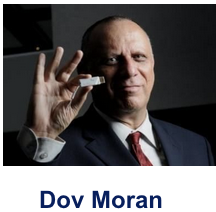 Readers of this space know we love a good story, and this is a good one. Last month we covered the invention of the USB port and the patent that covered it. We included in the story that the coalition of companies led by Intel that collaborated to invent the USB port did NOT enforce the patent because they wanted everyone to benefit from the invention. And we applaud their magnanimous gesture.
Readers of this space know we love a good story, and this is a good one. Last month we covered the invention of the USB port and the patent that covered it. We included in the story that the coalition of companies led by Intel that collaborated to invent the USB port did NOT enforce the patent because they wanted everyone to benefit from the invention. And we applaud their magnanimous gesture.
Well, one of the people who benefited from the un-enforced USB patent was Dov Moran, a prolific Israeli inventor and entrepreneur who was granted U.S. Patent No. 6,148,354 for an “Architecture for a universal serial bus-based PC flash disk” November 14, 2000. His invention became the USB Flash Drive, and his patent generated billions – yes, “billions” with a “b” – for him and his company, MSystems, Ltd.
Moran’s company started manufacturing and selling flash drives based on Moran’s patent, and sales were brisk and healthy. In 2006, MSystems was sold to ScanDisk Corporation for $1.6 billion. SanDisk was acquired by Western Digital Corporation (NASDAQ WDC) in 2016.
Moran very wisely filed for multiple foreign patents, and he filed four continuations that become patents. Moran and M-Systems vigorously defended their patent, filing numerous patent infringement lawsuits in several countries. The last patent in the series was a reissue, U.S. Patent No. RE44641 that expired in 2019. Western Digital was collecting royalties in 2019 on $60 billion in flash drive sales!
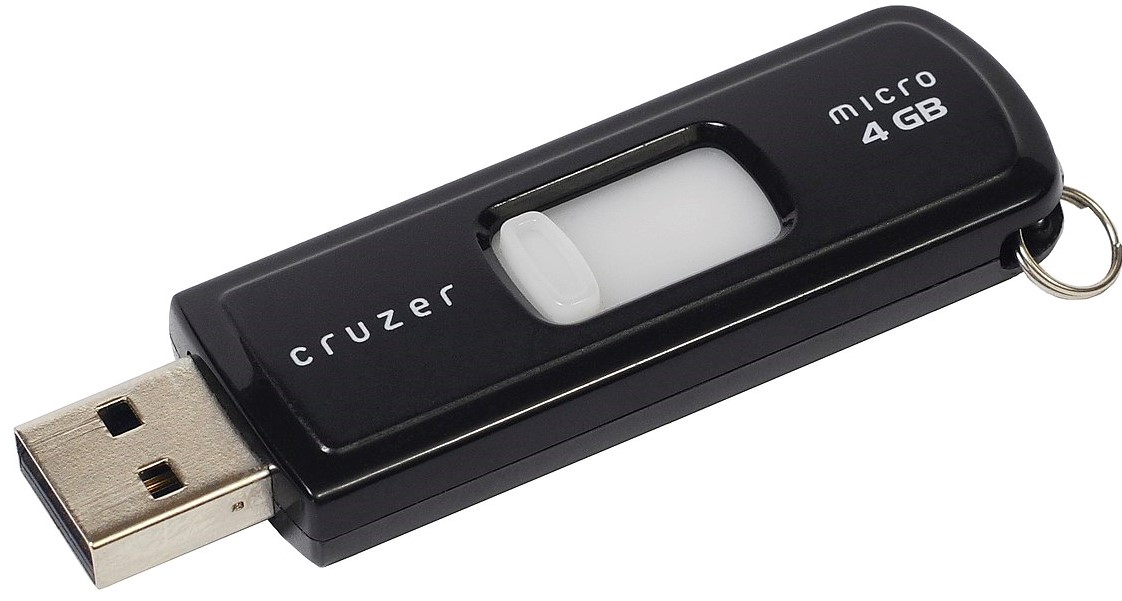 The USB Flash Drive is one of the best examples of how performance increases while the price of the product drops. The original MSystems flash drive held a whopping 8 MB of data! The capacity of the flash drive has steadily grown into the terabytes. While the price has steadily dropped.
The USB Flash Drive is one of the best examples of how performance increases while the price of the product drops. The original MSystems flash drive held a whopping 8 MB of data! The capacity of the flash drive has steadily grown into the terabytes. While the price has steadily dropped.
Federal Circuit Panel Must Address What Can Be an Inventor
Posted: 6/13/2022
A case now before the courts is addressing the question of if Artificial Intelligence can be an inventor! A Federal Circuit panel must decide how to define what an “inventor” and an “individual” is in a test case for artificial intelligence inventorship.
 The term “individual” as used in U.S. patent law should be interpreted broadly, including extending it to artificial intelligence machines such as DABUS (Device for the Autonomous Bootstrapping of Unified Sentience), a form of AI developed by Australian computer scientist Stephen Thaler. This is the argument made by Ryan Abbott, a partner at the Brown, Neri, Smith & Khan law firm, before the U.S. Court of Appeals for the Federal Circuit. Chief Judge Kimberly A. Moore and Circuit Judge Richard G. Taranto centered their questions to Mr. Abbott on how to more simply define “individual.” They questioned the concept of zero human involvement in the creation of AI-generated inventions.
The term “individual” as used in U.S. patent law should be interpreted broadly, including extending it to artificial intelligence machines such as DABUS (Device for the Autonomous Bootstrapping of Unified Sentience), a form of AI developed by Australian computer scientist Stephen Thaler. This is the argument made by Ryan Abbott, a partner at the Brown, Neri, Smith & Khan law firm, before the U.S. Court of Appeals for the Federal Circuit. Chief Judge Kimberly A. Moore and Circuit Judge Richard G. Taranto centered their questions to Mr. Abbott on how to more simply define “individual.” They questioned the concept of zero human involvement in the creation of AI-generated inventions.
Taranto noted that in some cases it would be “odd” to list an AI as an inventor. Artificial intelligence refers to a capability, he said, citing dictionary definitions. “My general sense has been that the term artificial intelligence is nearly always and in some dictionaries only used to refer to the capability, not the machine that has it,” Taranto said. “That would make extremely odd, just for that reason alone, to indulge the usage that you have to indulge when you say, ‘an AI, the AI as a unit,’ that could be an inventor,” he added.
Abbot responded that the judges can view DABUS as an “inventive entity” because it is a software program operating on a specific physical computer.
 The case currently pending in the U.S. is not the beginning of Stephen Thaler’s challenge to have AI accepted by national patent offices as an inventor. Thaler has one win under his belt in South Africa where he received a favorable decision from the Companies and Intellectual Property Commission. However, his request was denied by the European Patent Office, the second largest patent agency.
The case currently pending in the U.S. is not the beginning of Stephen Thaler’s challenge to have AI accepted by national patent offices as an inventor. Thaler has one win under his belt in South Africa where he received a favorable decision from the Companies and Intellectual Property Commission. However, his request was denied by the European Patent Office, the second largest patent agency.
This case began when the U.S. Patent and Trademark Office ruled that DABUS cannot be an inventor on a U.S. Patent Application, and the U.S. District Court for the Eastern District of Virginia’s backed up the Patent Office. The district court decision was appealed by Thaler, putting it before the U.S. Court of Appeals for the Federal Circuit.
Thaler’s appeal to the federal circuit is Case No. 1:20-cv-09003.
Patent Monetization Conference Coming Up in June
Posted: 5/15/2022
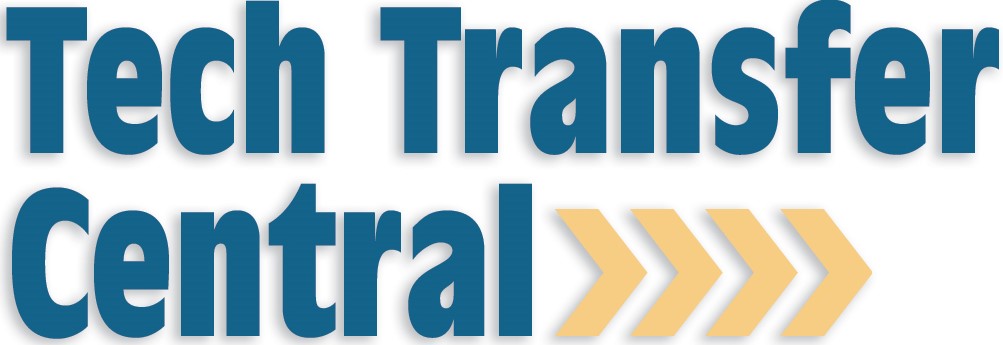 Mark your calendar. Best Practices for Monetizing Patents is a virtual summit that will be held Thursday, June 9, from 10:00 am to 5:30 pm Eastern Time. The conference has valuable content for anyone who comes in touch with intellectual property – from IP assets managers to IP licensing executives, inventors to investors, business development professionals to CEOs.
Mark your calendar. Best Practices for Monetizing Patents is a virtual summit that will be held Thursday, June 9, from 10:00 am to 5:30 pm Eastern Time. The conference has valuable content for anyone who comes in touch with intellectual property – from IP assets managers to IP licensing executives, inventors to investors, business development professionals to CEOs.
Each of the conference sessions include input from several panelist who each approach the topic from a slightly different perspective, and each session will include time for Q&A. Here is the conference agenda.
♦ Primer on Patent Monetization
♦ Primer on Spinning Off Technologies
♦ Selling a Royalty Stream
♦ Preparing for Negotiations with Buyers/Licensees
♦ Monetizing Patent Through Exits
♦ Working with Contingency Lawyers and Litigation Finance Companies in Patent Infringement Actions
♦ Monetizing Standard Essential Patents
♦ Patent Pools for Complementary IP
♦ Deal Terms and Negotiating Strategies
♦ Patent Acquisitions from the Buyer’s Perspective
Our very own Alec Schibanoff will be a panelist on two of the conference sessions, and the other panelists come from a cross-section of the IP community so it will be diverse learning experience for the attendees. Best Practices for Monetizing Patents is co-sponsored by Tech Transfer Central and Certified Patent Valuation Analyst.
Registration for the conference is very affordable, and you can also order on-demand videos from the conference for training and reference purposes. You can download the conference program and registration at this link.
The USB Port Changed Everything!
Posted: 5/15/2022
 It was 25 years ago that the Universal Serial Bus (or “USB”) port hit the market. There are still some of us around who remember the pre-USB days. Connecting a peripheral to a PC was not a simple matter. There were serial ports and parallel ports. Serial ports included CAN, RS-232, RS-485, RS-422, I2C, I2S, LIN, SPI, and SMBus formats. While RS-232 was the most popular, not every RS-232 serial connector was exactly alike. Some had slightly different pin layouts that could take hours and a full head of hair to sort out.
It was 25 years ago that the Universal Serial Bus (or “USB”) port hit the market. There are still some of us around who remember the pre-USB days. Connecting a peripheral to a PC was not a simple matter. There were serial ports and parallel ports. Serial ports included CAN, RS-232, RS-485, RS-422, I2C, I2S, LIN, SPI, and SMBus formats. While RS-232 was the most popular, not every RS-232 serial connector was exactly alike. Some had slightly different pin layouts that could take hours and a full head of hair to sort out.
Many printers worked with a parallel port. The Centronics parallel port was the most popular through the 1980s and into the 1990s. It did work, but it was large and clumsy, and while the female end plugged right into the back of your printer, that did not mean that the male end necessarily just plugged into the PC! The other problem with conventional serial and parallel connectors is that if one of pins got bent, it did not work!
What was needed was a single connector that would interface any peripheral to any PC.

 It was Arjay Bhatt, the Chief Systems Technologist at Intel, who came up with a concept for a universal port. Intel partnered with Microsoft, Compaq, Digital Equipment, Northern Telecom, NEC, and IBM to invent what became the USB port and U.S. Patent No. 5,694,555 for a “Method and apparatus for exchanging data, status, and commands over an hierarchical serial bus assembly using communication packets” was granted to Intel Corporation in 1997. To show just how long ago that was, Compaq is now part of HP, Digital Equipment was acquired by Compaq before it was acquired by HP, and Northern Telecom is out of business!
It was Arjay Bhatt, the Chief Systems Technologist at Intel, who came up with a concept for a universal port. Intel partnered with Microsoft, Compaq, Digital Equipment, Northern Telecom, NEC, and IBM to invent what became the USB port and U.S. Patent No. 5,694,555 for a “Method and apparatus for exchanging data, status, and commands over an hierarchical serial bus assembly using communication packets” was granted to Intel Corporation in 1997. To show just how long ago that was, Compaq is now part of HP, Digital Equipment was acquired by Compaq before it was acquired by HP, and Northern Telecom is out of business!
Intel chose to NOT enforce the patent, and USB products currently generate $18 billion in worldwide sales.
Gene Quinn Responds to New York Times OpEd Criticizing the USPTO and Former Director Oancu
Posted: 4/24/2022
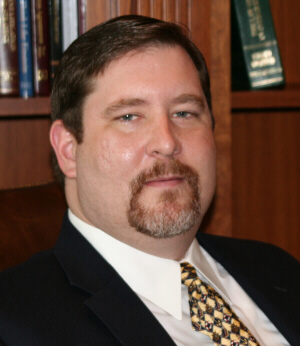 The New York Times recently ran an OpEd piece, “Save America’s Patent System,” that was highly critical of the U.S. Patent and Trademark Office and its former Director under the Trump Administration, Andrei Iancu. Gene Quinn, editor and publisher of IPWatchdog, responded to the Times’ critique. We provide a link to Gene’s excellent rebuttal, “New York Times Editorial Board Lobs Unfounded Criticism at Patent System, Iancu” and urge all of subscribers to link to Gene’s excellent article and read it.
The New York Times recently ran an OpEd piece, “Save America’s Patent System,” that was highly critical of the U.S. Patent and Trademark Office and its former Director under the Trump Administration, Andrei Iancu. Gene Quinn, editor and publisher of IPWatchdog, responded to the Times’ critique. We provide a link to Gene’s excellent rebuttal, “New York Times Editorial Board Lobs Unfounded Criticism at Patent System, Iancu” and urge all of subscribers to link to Gene’s excellent article and read it.
AND…if you are not currently do so, you should be subscribing to IPWatchdog. It is the most informative publication covering patents and IP.
And Now for Something Completely Different
Posted: 4/24/2022
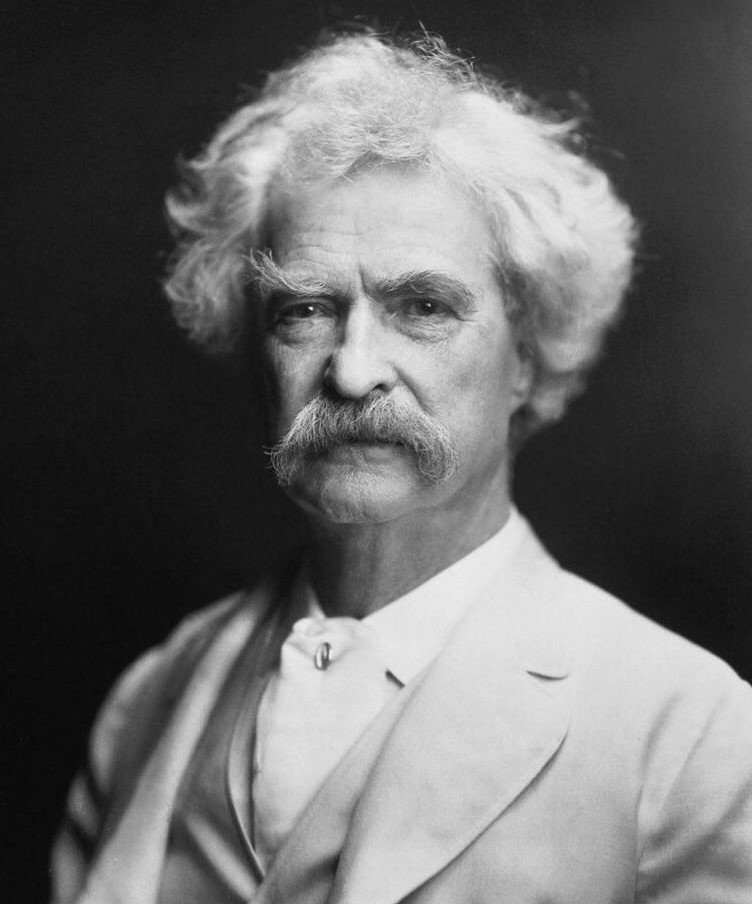 Mark Twain was more than a novelist. He traveled the world and in his later years toured the U.S. to packed theaters where he performed a one-man show. He reported on his travels, told stories, gave advice, and thoroughly entertained his audiences. Before Vaudeville, he was the best show in town.
Mark Twain was more than a novelist. He traveled the world and in his later years toured the U.S. to packed theaters where he performed a one-man show. He reported on his travels, told stories, gave advice, and thoroughly entertained his audiences. Before Vaudeville, he was the best show in town.
Here are some of his best quips:
- Human beings are the only animals that blush. Or need to.
- Never put off till tomorrow what you can do the day after tomorrow.
- Nothing so needs reforming as other people’s habits.
- The lack of money is the root of all evil.
- The secret of getting ahead is getting started.
- If you tell the truth, you don't have to remember anything.
- All you need in this life is ignorance and confidence, and then success is sure.
- Whenever you find yourself on the side of the majority, it is time to pause and reflect.
- In the first place, God made idiots. That was for practice. Then he made school boards.
- It is better to keep your mouth closed and let people think you are a fool than to open it and remove all doubt.
The next time you are in Connecticut, check out the Mark Twain House & Museum in Hartford. You can see the whole thing in a couple of hours. Most enlightening and lots of fun for the whole family.
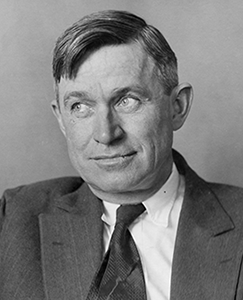 Will Rogers started entertaining at rodeos and in Vaudeville, and then moved on to radio and the movies. At the height of his career, he had a daily radio program, a daily newspaper column, was making movies, and toured the country with his one-man show.
Will Rogers started entertaining at rodeos and in Vaudeville, and then moved on to radio and the movies. At the height of his career, he had a daily radio program, a daily newspaper column, was making movies, and toured the country with his one-man show.
Here are a few of his best quips:
- Buy land. They ain't making any more of the stuff.
- Diplomacy is the art of saying 'Nice doggie' until you can find a rock.
- Everything is changing. People are taking their comedians seriously and the politicians as a joke.
- Make crime pay. Become a lawyer.
- There are three kinds of men. The one that learns by reading. The few who learn by observation. The rest of them have to pee on the electric fence for themselves.
- Everything is funny, as long as it's happening to somebody else.
- Even if you're on the right track, you'll get run over if you just sit there.
- Good judgment comes from experience, and a lot of that comes from bad judgment.
- I am not a member of any organized political party. I am a Democrat.
- The older we get, the fewer things seem worth waiting in line for.
Should your travels ever take you to Oklahoma, the Will Rogers Memorial Museum & Birthplace Ranch is in Claremore which is northwest of Tulsa right off Interstate 44. Plan on spending the day.
Didn’t We Already Know This?
Posted: 4/9/2022
According to the third edition of Intellectual property and the U.S. economy, there were 127 IP-intensive industries in sectors such as manufacturing, wholesaling, retailing, and professional, technical, management, and administrative services that accounted for $7.8 trillion in U.S. gross domestic product (GDP) – 41% of total U.S. GDP for 2019. Direct employment in these industries accounted for 47.2 million jobs in 2019 – 33% of total U.S. employment. In addition, jobs in other industries that rely at least partially on IP-intensive industries for their sales accounted for an additional 11% of U.S. employment. That adds up to 44% of the U.S. workforce.
The report provides data that offers greater insight into the demographics of workers in IP-intensive industries. The report concludes that patents, trademarks, and copyrights are the means for establishing ownership rights to the creations, inventions, and brands that bring tangible economic benefits to their owners. Again, we knew that. The report also found a substantial wage premium for workers in IP-intensive industries, with average weekly earnings 60% higher than wages paid to workers in other industries.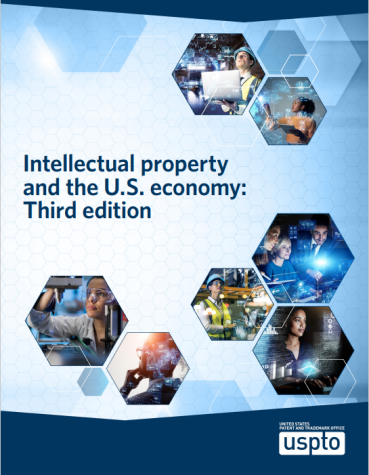
Relative to workers in non-IP-intensive industries, workers in IP-intensive industries were more likely to:
- Earn higher wages
- Work in larger companies (500 employees or more)
- Participate in employer-sponsored health insurance plans
- Participate in employer-sponsored retirement plans
- Have a bachelor’s degree or graduate degree
The first Intellectual property and the U.S. economy report was published in 2012 and second report was issued in 2016. The third edition of Intellectual property and the U.S. economy can be downloaded from the USPTO website.
We Did Not Know This, But We Are Not Surprised
Posted: 4/9/2022
 A case in point is the European (Old World) Patent Office that just released its annual report for 2021. There were 188,600 European patent applications filed in 2021, an increase of 4.5% over 2020. Once again, the United States was the leading national source of patent applicants, accounting for 46,533 patent applications or 25% of all filings. Germany (the largest economy in Europe) was second, Japan was third, and China was fourth.
A case in point is the European (Old World) Patent Office that just released its annual report for 2021. There were 188,600 European patent applications filed in 2021, an increase of 4.5% over 2020. Once again, the United States was the leading national source of patent applicants, accounting for 46,533 patent applications or 25% of all filings. Germany (the largest economy in Europe) was second, Japan was third, and China was fourth.
Here is what surprised us – but then really did not surprise us. What single company filed the most EPO patent applications? Maybe one of the Europe’s largest car companies, Stellantis or Daimler? Nope. How about Europe’s two Big Tech companies, Philips and Thomson-CSF? Nope. Oh, it must be Alcatel-Lucent, the telecom giant. Nope!
The company that filed the most European Patent Applications in 2021 was – drum roll – Huawei, a Chinese consumer electronics and telecom manufacturer, with 3,544 patent applications. Korean companies Samsung (of the Apple-Samsung Patent Trial of the Century fame) and LG were second and third. The highest-ranking European business for European Patent Applications was Ericsson at fourth place followed by Siemens at fifth. The highest-placing U.S. company for EPO patent applications was Raytheon Technologies (sixth place with 1,623 applications) followed by Qualcomm (seventh place with 1,534 applications). Sony was eighth, Philips was ninth, and Robert Bosch was tenth. So, only four of the top ten applicants for European Patents were European businesses, while two were U.S. companies, and four were Asian enterprises.
Not surprisingly, the most popular technology fields for EPO patent applications were communications (15,400 applications), followed by medical technology (15,321 applications), and computer technology (14,671 applications). The largest increases in European Patent Applications were in micro-structural and nanotechnology (up 27%), audio-visual technology (up 24%), and semiconductors (up 21%).
The Patent Index 2021 is available from the EPO website.
Electric Cars Are NOT Green!
Posted: 3/19/2022
 Here are the facts. The U.S. Energy Information Administration, a unit within the U.S. Department of Energy, reports that 60.8% of the electric power in the U.S. power grid comes from fossil fuels (natural gas, coal, and petroleum products). Nuclear power accounts for 18.9% of the U.S. power supply. Only 20.1% of the U.S. power supply is renewable (wind, hydropower, solar, biomass, and geothermal).
Here are the facts. The U.S. Energy Information Administration, a unit within the U.S. Department of Energy, reports that 60.8% of the electric power in the U.S. power grid comes from fossil fuels (natural gas, coal, and petroleum products). Nuclear power accounts for 18.9% of the U.S. power supply. Only 20.1% of the U.S. power supply is renewable (wind, hydropower, solar, biomass, and geothermal).
That means that when an electric vehicle is plugged in to be charged, 79.9% of the electric power to charge that vehicle is NOT green – NOT from a renewable energy source. EVs drive around on batteries that have been charged with electricity that is 61% fossil fuel and 19% nuclear. Those are the facts.
Yes, the electric vehicles do not directly emit hydrocarbons themselves, but the natural gas and coal power plants that produce the largest share of the electric power used by EVs most definitely DO emit hydrocarbons.
If – and this is a big IF – you installed solar panels on your home, and only charged you electric vehicle during the day when the sun was shining, your EV would then be a green vehicle. Or if you installed a wind turbine and only charged the vehicle when the blades were turning, you would have a green vehicle. But charge your Tesla with power from the local electric utility, and your car is simply not green. Sorry.
Electric Vehicles Are Not All That New, Either
Posted: 3/19/2022
 Tesla has made quite a splash, and the major car companies have jumped on the EV bandwagon. Ford just announced that it is splitting its automobile business into two primary sectors: Ford Blue division (gas and diesel-powered vehicles) and Ford Model e Division (electric vehicles). General Motors will introduce 30 new electric vehicles by 2025. Chrysler just announced that it will offer an all-electric product line by 2028. So how did we get from Ford’s Model T to Tesla’s Model X?
Tesla has made quite a splash, and the major car companies have jumped on the EV bandwagon. Ford just announced that it is splitting its automobile business into two primary sectors: Ford Blue division (gas and diesel-powered vehicles) and Ford Model e Division (electric vehicles). General Motors will introduce 30 new electric vehicles by 2025. Chrysler just announced that it will offer an all-electric product line by 2028. So how did we get from Ford’s Model T to Tesla’s Model X?
It was a tortuous trip with many fits and starts. One of the first and most powerful proponents for electric vehicles was none other than Thomas Edison. Although he and Henry Ford were fishing and hunting buddies, they were direct competitors in this area.
The first electric vehicles were available in the 1890s, a decade before the introduction of the Model T. Edison heavily promoted an electric car, but the challenge then, as it still is today, was range. The longer you can drive your EV on a charge, the more practical is the vehicle. Realizing the limited capacity of lead-acid batteries, Edison developed a nickel-alkaline battery that was much more durable and far less hazardous than their lead-acid predecessors. Unfortunately, the new battery was also larger and more expensive than the conventional lead-acid battery, so it significantly increased the cost of an electric vehicle over competing gasoline vehicles. Not much has changed in 130 years!
One of the early advantages of electric vehicles was starting them. Like a toaster oven, you just turned it on. If you owned a Ford, Oldsmobile, or Pierce-Arrow (the best-selling cars in 1910), you had to set the choke and the advance, get out the crank, insert it, and turn the crank in the hope the car would start – and you would not throw out your back or break your arm in the process. When the auto industry offered an electric starter in 1912, it was a significant advancement for gasoline-powered cars and just one of many, many set-backs for electric vehicles.
Patented Products Must Be Marked
Posted: 2/18/2022
In Surf City, the Beach Boys sing that they “bought a 30 Ford and we call it a woody.” They are talking about a 1930 Ford station wagon in which the back of the car is actually made of wood! Years later, Ford re-introduced the concept with its Country Squire station wagons with fake wood trim on the exterior, creating a premium station wagon that was both popular and profitable. They also offered a woody version for the Mercury wagon branded the Colony Park.
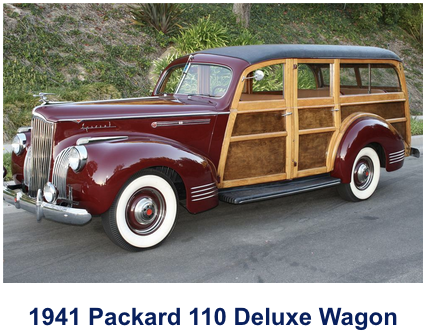 We recently came across a 1941 Packard “woody” not too far from our office, just over the state line in Connecticut. If you are not familiar with Packard (no relation to Hewlett-Packard), it was a luxury car brand that thrived from its founding in 1899 through to the 1950s.
We recently came across a 1941 Packard “woody” not too far from our office, just over the state line in Connecticut. If you are not familiar with Packard (no relation to Hewlett-Packard), it was a luxury car brand that thrived from its founding in 1899 through to the 1950s.
During World War II, Packard converted to engine production. It manufactured engines for aircraft and World War II PT Boats were powered by three Packard straight-eight engines. One of Packard’s last major achievements was building a presidential limousine in 1953 that was used in both the Eisenhower and Kennedy Administrations.
There were once over a dozen automobile manufacturers in the U.S., but after World War II they had to consolidate to take advantage of economies of scale. Packard merged with Studebaker, but the combined company just could not make it and folded in the early 1960s, leaving the Big Three – General Motors, Ford, and Chrysler.
Well, we fell in love with this totally restored Packard woody. It holds eight adults comfortably in three rows of leather seating. Just gorgeous. So, we decided to buy it to transport visitors to our Suffern corporate headquarters in style to and from the airport and train station.
Just kidding! We did NOT buy this car. Just kidding. But we really wanted to….
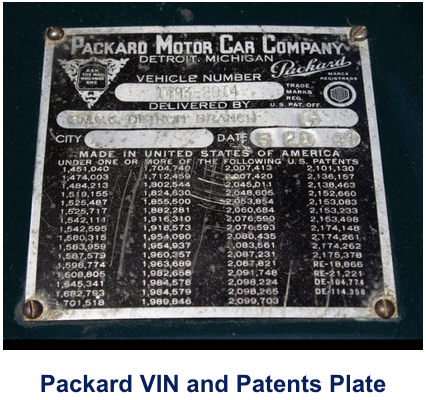 What, you may ask, does this have to do with marking a product with a patent? The Packard Motor Car Company fulfilled that obligation by placing a metal plate on the inside of the engine compartment that included the car’s VIN, its point of manufacturer, and a list of the 63 patents that cover the vehicle.
What, you may ask, does this have to do with marking a product with a patent? The Packard Motor Car Company fulfilled that obligation by placing a metal plate on the inside of the engine compartment that included the car’s VIN, its point of manufacturer, and a list of the 63 patents that cover the vehicle.
Among the patents covered by this fabulous car are U.S. Patent No. 1,451,040 for a “Steering rod connection,” U.S. Patent No. 1,916,310 for an “Internal combustion engine,” and U.S. Patent No. 2,101,130 for a “Motor vehicle.” All pretty basic stuff!
The point of this pleasant excursion is that when a company sells a product or service that is protected by a patent, it must “mark” the product with the patent or patents that are covered by it. If a business fails to do this, it weakens its ability to assert a patent against an infringer who can claim it did not know the product was infringed, possibly diminishing the damages it can collect from an infringer. If the infringed party can prove willful infringement – and marking a product with the patent number that covers it is one way to do this – it is entitled to treble damages. Properly marking a product with its patent number(s) can be a matter of some dollars.
 If the patent number cannot be attached or imprinted on the actual product, or if you selling services, the product’s patent number(s) should be included in the product’s documentation – user’ manual, install or configuration instructions, tech support details, or warranty information and registration materials, for example – will do. In the case of software, it should be included in that 18-paragraph user agreement that no one reads and everyone signs.
If the patent number cannot be attached or imprinted on the actual product, or if you selling services, the product’s patent number(s) should be included in the product’s documentation – user’ manual, install or configuration instructions, tech support details, or warranty information and registration materials, for example – will do. In the case of software, it should be included in that 18-paragraph user agreement that no one reads and everyone signs.
And, most important, all of your patents – whether they cover a specific product or not – should be listed on your website.
If you have only applied for a patent, the product should be marked “Patent Pending” to scare away prospective infringers. One of the advantages of “Patent Pending” is that your competitors do not actually know what aspect of your product’s technology is covered by the patent application, So you get fairly broad protection in terms of warding off the competition.
If your patent application is not allowed, you must remove the “Patent Pending” notice – or file for a new patent application and keep the competition guessing. And if your patent application is allowed, you need to change “Patent Pending” to the actual patent number.
US Inventor Takes on the Kathi Vidal Nomination
Posted: 1/24/2022
We’ve covered in this space that there has not been a permanent Director of the U.S. Patent and Trademark Office since Andrei Iancu, President Trump’s appointee, left the post last January. President Biden nominated Kathi Vidal – a Big Tech patent litigator with the Winston & Strawn law firm – to fill the post.
 US Inventor – an inventor rights organization – is opposed to Vidal who represented the likes of Apple, Microsoft, Netflix, Samsung, Cisco, Dell, and other large-tech corporations and is an advocate for patent invalidation.
US Inventor – an inventor rights organization – is opposed to Vidal who represented the likes of Apple, Microsoft, Netflix, Samsung, Cisco, Dell, and other large-tech corporations and is an advocate for patent invalidation.
USPTO Director appointments have traditionally been fairly non-political and were rubber-stamped by the U.S. Senate. US Inventor mobilized its members and supporters to contact the members of the Senate Judiciary Committee, and they stirred up a political hornet’s nest! When Vidal’s nomination came before the Judicial Committee, five Senators opposed her nomination on the grounds that she was another “Big Tech lawyer” who would weaken the U.S. Patent system.
Republican Senators John Kennedy (Louisiana), Ted Cruz (Texas), Mike Lee (Utah), and Josh Hawley (Missouri) were joined by Democrat Senator John Ossoff (Georgia) who bucked his own party’s nominee. This is the first time that a USPTO Director nominee every got any NO votes from the Judiciary Committee!
Despite opposition from these five courageous Senators, Ms. Vidal was voted out of committee and her nomination now goes before the full Senate.
We agree with US Inventor and these Senators. We do NOT need another Big Tech lawyer running the Patent Office. Visit the US Inventor website to see how you can join the cause!
Google Faces Ban on Imports of Networked Speaker Devices
Posted: 1/24/2022
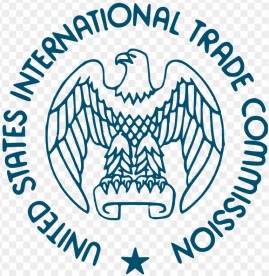 If you’re a regular reader of this column, you will recall that we just completed a five-part series on patent assertion. While suing an infringer in U.S. District Court is the most common venue, there is an alternative if the infringing products are imported into the U.S. – as so many products unfortunately are these days.
If you’re a regular reader of this column, you will recall that we just completed a five-part series on patent assertion. While suing an infringer in U.S. District Court is the most common venue, there is an alternative if the infringing products are imported into the U.S. – as so many products unfortunately are these days.
The alternative is to take your claim of patent infringement before the U.S. International Trade Commission (USITC). The USITC is an independent agency of the U.S. federal government that has the authority to levy tariffs and issue injunctions.
On January 7, the U.S. International Trade Commission issued an order barring Google from importing products that infringe five smart speaker patents owned by home-audio products manufacturer Sonos Inc (SONO NASDAQ).
![]() Google issued the standard Big Tech statement: They are NOT infringing any patents and the decision will NOT have an impact on their sales. But what is Google going to say? “Oops. You got us!”
Google issued the standard Big Tech statement: They are NOT infringing any patents and the decision will NOT have an impact on their sales. But what is Google going to say? “Oops. You got us!”
Sonos and Google have been embroiled in a global patent war over multi-room audio technology going back to 2020 when lawsuits were filed in California, Canada, France, Germany and the Netherlands. While this decision does not generate damages for Sonos, it does block Google from importing several products, and that’s decreased sales for Google, and it gives Sonos some leverage in its patent infringement assertion efforts.
The five Sonos patents that Google is infringing are:
• U.S. Patent No. 8,588,949: Method and apparatus for adjusting volume levels in a multi-zone system
• U.S. Patent No. 9,195,258: System and method for synchronizing operations among a plurality of independently clocked digital data processing devices
• U.S. Patent No. 9,219,959: Multi-channel pairing in a media system
• U.S. Patent No. 10,209,953: Playback device
• U.S. Patent No. 10,439,896: Playback device connection
Ford Enters the Tailgate Wars
Posted: 1/24/2022
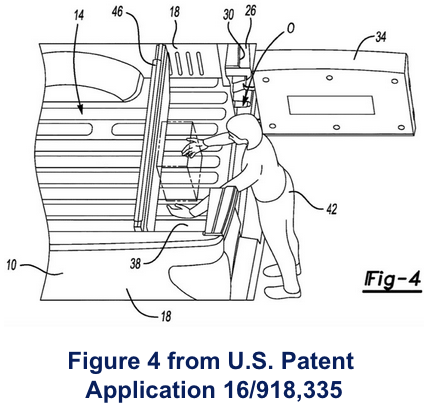 In 2021, the best-selling vehicle in the U.S. was not a sedan or SUV. It was the Ford F-150 pickup. The second best-selling vehicle was the Dodge Ram 1500 pickup, and third best-selling vehicle was the Chevrolet Silverado pickup. Yup! The three best-selling vehicles were all pickups. The Toyota RAV4 came in fourth and the Honda CR-V came in fifth – both SUVs. The best-selling sedan was the Toyota Camry at No. 6. The GMC Sierra pickup was No. 9, and the Toyota Tacoma was No. 10, putting five pickups in the Top 10 best-selling vehicles in U.S.
In 2021, the best-selling vehicle in the U.S. was not a sedan or SUV. It was the Ford F-150 pickup. The second best-selling vehicle was the Dodge Ram 1500 pickup, and third best-selling vehicle was the Chevrolet Silverado pickup. Yup! The three best-selling vehicles were all pickups. The Toyota RAV4 came in fourth and the Honda CR-V came in fifth – both SUVs. The best-selling sedan was the Toyota Camry at No. 6. The GMC Sierra pickup was No. 9, and the Toyota Tacoma was No. 10, putting five pickups in the Top 10 best-selling vehicles in U.S.
In the intensely competitive pickup market, every aspect of the truck is up for grabs and market share. GMC introduced a fold-down step in the “MultiPro” tailgate on its Sierra pickup, and Dodge offers the “MultiFunction” tailgate, a two-piece open-from-the-center or flip-down tailgate, on the RAM 1500.
In July of 2020, Ford Global Technologies filed U.S. Patent Application 16/918,335 for a “Tailgate assembly having a door and method of providing access to a cargo bed,” and it reveals what Ford aficionados can expect on their next F-150. Ford has created a smaller tailgate within the larger tailgate that opens horizontally to make it easier to load smaller items such as groceries, adding a partition that creates a smaller cargo space. We assume, for mom, when she borrows the truck and heads into town for coffee, beans, bacon, and hardtack.
Remedies-at-Law for Patent Assertion – Part Five
Posted: 12/10/2021
This month we wrap up our series on patent infringement. First, however, here is a recap. We first addressed the remedies available an NPE (non-practicing entity) whose patent was infringed. An NPE is a patent owner who does not practice his or her or its patent – primarily independent inventors and universities. In the second installment we addressed remedies for Practicing Entities (or “Market Participants” as they are also known). These are businesses that own a patent, and manufacture and/or sell a product or service based on that patent.
The third installment in the series addressed what infringement is and, even more importantly, how you document that infringement, and the fourth segment addressed your options once you decide to enforce your infringed patent.
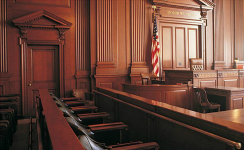 In this last installment, we address the process of asserting a patent and the possible outcomes of that effort. Once you have engaged a patent litigation law firm to represent you, or you have partnered with a patent assertion firm and the PAF has engaged a litigator, the next step is for the law firm to file a patent infringement lawsuit. Since patents are covered by federal law, patent litigation is filed in U.S. District Court.
In this last installment, we address the process of asserting a patent and the possible outcomes of that effort. Once you have engaged a patent litigation law firm to represent you, or you have partnered with a patent assertion firm and the PAF has engaged a litigator, the next step is for the law firm to file a patent infringement lawsuit. Since patents are covered by federal law, patent litigation is filed in U.S. District Court.
Once the lawsuit is filed, there are multiple communications and exchanges of documents between the plaintiff’s (the patent holder) and the defendant’s (the alleged infringer) attorneys. The defendant will immediately make the standard claim that (a.) they are definitely NOT infringing the patent and (b.) it does not make any difference because the patent is not valid.
Under what is known as “Discovery” both sides must show the other side any evidence they have. We find it hilarious when we watch a courtroom drama and an attorney presents a shocking piece of evidence that is a total surprise to the opposing attorney. That does not happen in the real world because both sides must disclose to the other side all the evidence they have before the trial.
It is likely that each side will depose (or question) the other side’s witnesses in what is known as a “Deposition.” Any witnesses that the plaintiff will call during a trial – such as the inventor – must be revealed to the defendant, and the defendant has the right to question the witness – usually in the law firm’s office – pre-trial. The purpose of the Deposition is to see exactly what the witness has to offer, but to also determine how effective a witness he or she will be.
 One strategy that infringers often use today is to try to invalidate the patent. This is done by requesting an ex partes review of the patent before the Patent Trial and Appeal Board (PTAB). If the review is granted, the lawsuit goes on hold. The plaintiff's and defendant's attorneys appear before the PTAB and argue the validity of the patent. The defendant will try to locate Prior Art that challenges the novel aspect of the patented invention. If the patent is invalidated by the PTAB, Game Over. There is NO patent to assert. If the patent is not invalidated, the original patent infringement lawsuit resumes.
One strategy that infringers often use today is to try to invalidate the patent. This is done by requesting an ex partes review of the patent before the Patent Trial and Appeal Board (PTAB). If the review is granted, the lawsuit goes on hold. The plaintiff's and defendant's attorneys appear before the PTAB and argue the validity of the patent. The defendant will try to locate Prior Art that challenges the novel aspect of the patented invention. If the patent is invalidated by the PTAB, Game Over. There is NO patent to assert. If the patent is not invalidated, the original patent infringement lawsuit resumes.
After motions have been filed, and there are various hearings, a trial date is finally set, and now it’s time for both sides to play chicken. Going to trial is a big risk for both sides. Either side could win big…or lose big. The result is that most patent infringement lawsuits end in an out-of-court settlement in which the infringer usually agrees to no wrongdoing, but also agrees to take a license under the patent and pay for both past and future use of the patent. An out-of-court settlement is the most desirable outcome since it is a final agreement among the parties, and both sides can walk away and go about their lives. Unless there are additional infringers to pursue – which there often are.
IF – and this is something most patent litigators representing the patentee will try to avoid – you have to go to trial, there are two possible outcomes: You can lose, in which case Game Over. Or, you can win, but it is almost a certainty that the losing side will file an appeal, and it can drag things out for months or years. Apple sued Samsung in the “Patent Trial of the Century” in 2012 and won. Samsung filed various appeals and the case was not finally settled until 2017, five years later! That is why an out-of-court settlement is best.
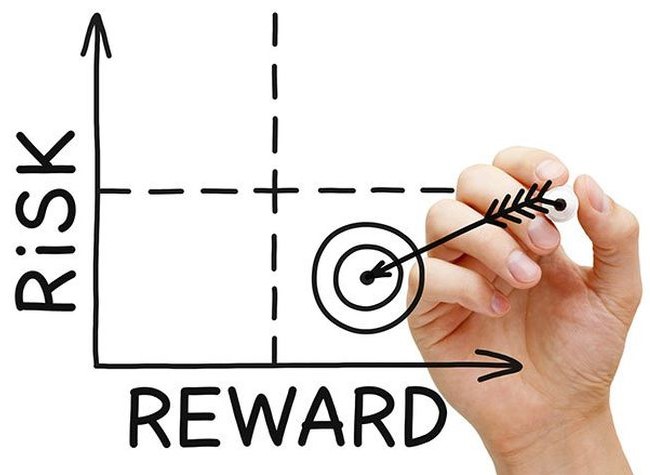 An out-of-court settlement typically has two parts. First, there is an amount that is agreed to that covers past infringement of the patent – theoretically what the royalty payments would have been over that period had the infringer licensed the patent in the first place. This is usually a lump sum payment. If the patent still has years to run, and if the infringer is going to continue to manufacture the infringing product, the infringer must take a license for the patent. This second half of the settlement can be paid in a lump sum or paid out in royalty payments for the life of the patent or for as long as the infringer continues to sell the infringing product.
An out-of-court settlement typically has two parts. First, there is an amount that is agreed to that covers past infringement of the patent – theoretically what the royalty payments would have been over that period had the infringer licensed the patent in the first place. This is usually a lump sum payment. If the patent still has years to run, and if the infringer is going to continue to manufacture the infringing product, the infringer must take a license for the patent. This second half of the settlement can be paid in a lump sum or paid out in royalty payments for the life of the patent or for as long as the infringer continues to sell the infringing product.
So, as you can see, patent assertion is a High Risk/High Reward undertaking. You face the double risks of having the patent invalidated by the Patent Trial and Appeal Board, and the risk of being forced to go to trial and losing. But if you and your legal team can prevail, and secure an out-of-court settlement, you could be looking at a considerable windfall. Patent infringement settlements can run into the millions – even tens of millions – of dollars!
Remedies-at-Law for Patent Assertion – Part Four
Posted: 11/15/2021
The last three columns in this space covered three aspects of patent infringement. We first addressed the remedies available to an NPE (non-practicing entity) whose patent is infringed. An NPE is a patent owner who does not practice his or her or its patent – primarily independent inventors and universities.
The second installment addressed remedies for Practicing Entities (or “Market Participants” as they are also known). These are businesses that own a patent, and manufacture and/or sell a product or service based on that patent.
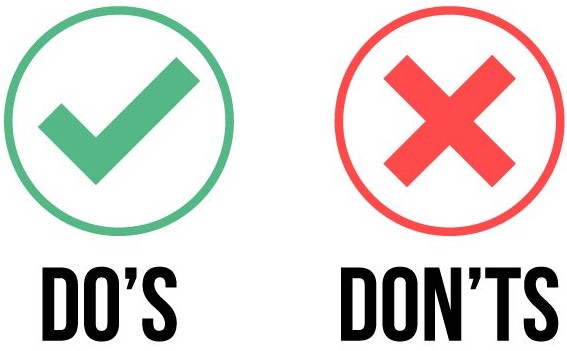 The third installment in the series addressed what infringement is and, even more importantly, how you document that infringement. If you missed any of these missives, they are all available below.
The third installment in the series addressed what infringement is and, even more importantly, how you document that infringement. If you missed any of these missives, they are all available below.
This fourth article in the series addresses your options once you have identified and documented what companies and what products or services from those companies are infringing your patent. Let’s start with the one and only Don’t on the Do’s and Don’ts List of Patent Assertion: Do NOT contact the infringer yourself! Many patentees think that a letter to the infringer will bring a quick settlement and a license for the patent. Contacting an executive at the company that you believe is infringing your patent can only have negative effects. It could, in fact, result in the infringer filing a Summary Judgement lawsuit against you, so you end up as the defendant and have to hire an attorney to represent you. Just as you would not attempt to fill your own cavity, do NOT attempt to enforce your patent yourself!
You need to know that patent litigation is VERY expensive. It can cost from $200,000 to $500,000 or more to try a patent infringement lawsuit when you add up all the costs – not just direct legal fees, but filing fees, depositions, expert witnesses, exhibits, damages consultants, travel expenses, and other items.
If you represent a business or you are a high net worth individual, and you can afford to invest that kind of money to enforce your patent rights, you do not need to read the rest of this article. If you need a referral to a patent litigation law firm, and there are several that IPOfferings can recommend.
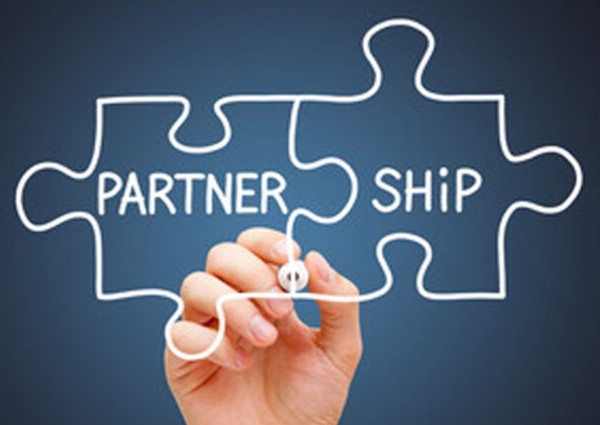 If, however, you are not prepared to invest hundreds of thousands of dollars in the enforcement of your patent rights, you will need a partner, and that comes in the form a Patent Assertion Firm. These are businesses that specialize in asserting patents against infringers on behalf of the patent owner. It is a highly specialized field, so there are less than 50 such businesses in the U.S.
If, however, you are not prepared to invest hundreds of thousands of dollars in the enforcement of your patent rights, you will need a partner, and that comes in the form a Patent Assertion Firm. These are businesses that specialize in asserting patents against infringers on behalf of the patent owner. It is a highly specialized field, so there are less than 50 such businesses in the U.S.
Just as IPOfferings can represent a patentee in the monetization of his or her or its patent by finding a buyer or licensee for the patent, IPOfferings can represent a patentee in the monetization of his or her or its patent by finding a Patent Assertion Firm to partner with the patentee in the assertion of the patent against its infringers.
There is another factor here that has to be considered at this point. Since the damages that can be collected by the infringed party are “reasonable royalties” (we covered this in the first installment of this series), there must be sufficient sales of the infringing product so the reasonable royalties will be enough to cover the litigation costs and still leave a profit. As a rule, there must be tens of millions of dollars of sales of the infringing product for a patent assertion campaign to be a viable undertaking. Sue an infringer that has generated $4 million in sales of infringing products, and if the reasonable royalty is 1%, that’s just $40,000 in damages, not nearly enough to cover the legal fees to sue the infringer in the first place!
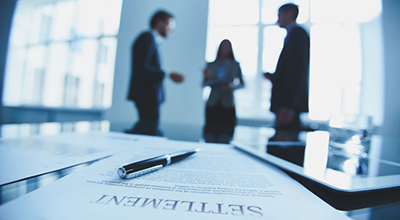 A Patent Assertion Firm (or PAF) will need to see the Claim Charts we covered in the last installment in this series. If the PAF believes that you have a valid claim of infringement and there are sufficient sales of infringing products to make the patent assertion campaign a profitable venture, it may decide to partner with you. We use the word “partner” because the patentee contributes the patent and the PAF contributes the legal and litigation fees along with the company’s expertise.
A Patent Assertion Firm (or PAF) will need to see the Claim Charts we covered in the last installment in this series. If the PAF believes that you have a valid claim of infringement and there are sufficient sales of infringing products to make the patent assertion campaign a profitable venture, it may decide to partner with you. We use the word “partner” because the patentee contributes the patent and the PAF contributes the legal and litigation fees along with the company’s expertise.
Should the PAF be successful, the revenue generated from the patent assertion campaign will be divvied up per an agreed-to formula among the Patent Assertion Firm, IPOfferings, and the patentee. The PAF needs to recoup its out-of-pocket expenses along with a reasonable profit, so it earns -as it is entitled to - a substantial share of any settlements and awards. And while the patentee receives just a portion of the total settlements and awards, the patentee risked no cash of his or her or its own.
Finally, if the patent assertion campaign is not successful – for any reason – the Patent Assertion Firm writes off all the expenses it incurred on behalf of the patentee, and the patentee owes nothing.
Next Time: What are the risks and potential rewards of a patent assertion campaign?
Remedies-at-Law for Patent Assertion – Part Three
Posted: 10/26/2021
Two columns ago, we addressed the remedies available to patentees whose patents were infringed. Since the available remedies differ by the status of the patent holder, we first addressed the remedies available to an NPE (a Non-Practicing Entity). An NPE is a patent holder that does NOT practice the patent – that is, does not manufacture or sell a product based on the patent. NPEs are most often includes independent inventors and universities.
In our last column, we covered the remedies-at-law that are available to Practicing Entities (or “Market Participants” as they are also known). These are businesses that manufacture – or have manufactured – and sell a product or services based on a patent owned by that business.
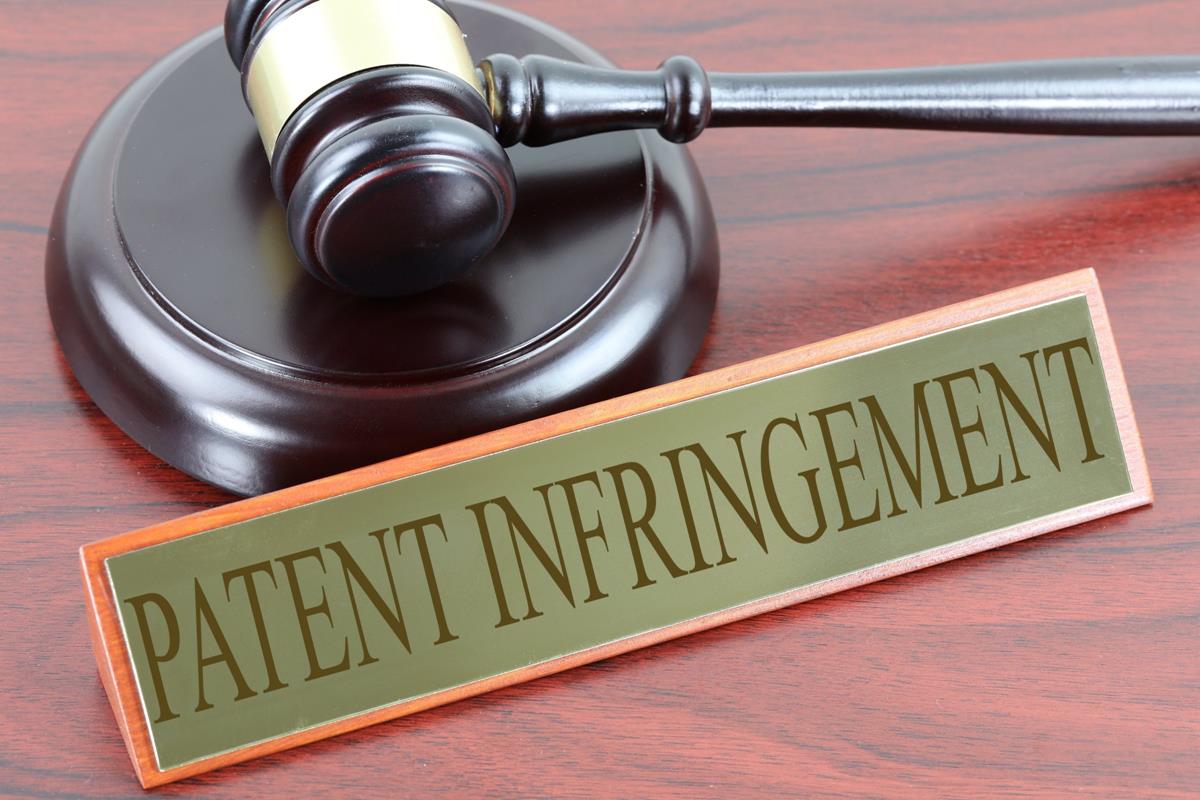 In today’s installment, we address what infringement is and, most important, how you prove it. U.S. Patent law (35 U.S. Code § 271) states that “…whoever without authority makes, uses, offers to sell, or sells any patented invention, within the United States or imports into the United States any patented invention during the term of the patent therefor, infringes the patent.” Ah, were it that simple.
In today’s installment, we address what infringement is and, most important, how you prove it. U.S. Patent law (35 U.S. Code § 271) states that “…whoever without authority makes, uses, offers to sell, or sells any patented invention, within the United States or imports into the United States any patented invention during the term of the patent therefor, infringes the patent.” Ah, were it that simple.
In order for a patent to be infringed, the product or service must “read” on every aspect of at least one independent claim in the patent. That essentially means that if you were to describe the features of a product it would be as if you were reading from an independent claim in the patent. To infringe, a product cannot be close to what is covered in the patent. It has to be exactly what is covered in the patent!
Let’s say you have a patent for a toaster over, and Claim 1 of your patent states that the toaster oven has a timer that is set by the user, it turns the toaster oven off in a specific number of minutes, and it beeps to alert the user that the food is ready. A toaster oven with just a timer does not infringe that patent. Only a toaster oven with BOTH the timer AND the beeper infringes the patent. If the toaster oven has additional features not covered in the patent, that is okay. But to infringe a patent, a product or service must include every aspect of one independent claim.
We were recently approached by a patent holder. A company was making a product that exactly duplicated what was described in the inventor’s patent except that it did not have a port for uploading data. And without that port – that was a key element in Claim 1 – the product was not infringing the patent, despite the fact that it read on every other aspect of Claim 1 from the patent!
 Had the patent been written without the data port in Claim 1, and had the data port been included in a dependent claim, that inventor would have had a valid claim of infringement. But that was not how the patent was written and not how the patent was granted, so only a device that includes all the elements in Claim 1 – including the data port – would infringe the patent.
Had the patent been written without the data port in Claim 1, and had the data port been included in a dependent claim, that inventor would have had a valid claim of infringement. But that was not how the patent was written and not how the patent was granted, so only a device that includes all the elements in Claim 1 – including the data port – would infringe the patent.
The next step is to document infringement, and that is done with what is called a Claim Chart. It is a document that lists each element in an independent claim from a patent in the left column, and in the right column it documents the infringement of each element in the claim using either pictures of the infringing product or descriptive copy about the infringing product. The infringement evidence must be documented, and that is usually done with a link to the website page from which the images and/or text was taken.
An inventor cannot prepare his or her own Claim Charts. We receive Claim Charts on a regular basis submitted by an inventor, but no one will take them seriously. To be authentic and acceptable, a Claim Chart must be created by a knowledgeable third party. And – unless you are the inventor who believes his patent has been infringed – anyone can understand why.
If you go to the Patent Infringement Services page at our website, you will see the first page of a Claim Chart from the Cellular Communication Equipment v. Apple patent infringement lawsuit from 2016.
Next Time: You have documented infringement of your patent. Now what?
Remedies-at-Law for Patent Assertion – Part Two
Posted: 10/4/2021
Last month this column addressed the remedies available to patentees whose patents were infringed. Since the available remedies differ by the status of the patent holder, we first addressed the remedies available to an NPE (a Non-Practicing Entity). An NPE is a patent holder that does NOT practice the patent – that is, does not manufacture or sell a product based on the patent. This most often includes independent inventors and universities.
The only remedy available to the infringed patent holder is to sue the infringer in U.S. District Court. If the court finds that infringement did occur, the patentee is entitled to “reasonable royalties” – what the infringer would have likely paid in royalties had the infringer simply licensed the patent in the first place. As we pointed out, it does not seem fair that the only consequence of patent infringement is that the infringer ends up paying what it would have paid in the first place had it licensed the patent, but that is the law.
 However, if the patentee can prove willful infringement – prove that the infringer knew about the patent, but went ahead and infringed it anyway (a tough case to make, but it can be made) – the infringer is now liable for treble (or triple) damages, considerably more than the infringer would have paid had it simply licensed the patent in the first place.
However, if the patentee can prove willful infringement – prove that the infringer knew about the patent, but went ahead and infringed it anyway (a tough case to make, but it can be made) – the infringer is now liable for treble (or triple) damages, considerably more than the infringer would have paid had it simply licensed the patent in the first place.
In this installment, we address the remedies available to a Market Participant or Practicing Entity. A Market Participant or Practicing Entity is most likely a business that owns and practices a patent. The enterprise manufacturers or sells a product based on the patent, and a competitor is infringing that patent. To clarify an issue about which we are often asked, a Market Participant does NOT have to manufacturer a product to be a Market Participant. It only needs to sell a product based on the patent. Many U.S. companies have their products manufactured overseas – so the company does no manufacturing itself – and it sells those products in the U.S. A company that has a patent-protected product contract manufactured, and only sells it, is most definitely a Market Participant and entitled to all of the remedies available to a Market Participant.
For the Market Participant, there are three remedies.
♦ Reasonable Royalties: Just like the Non-Practicing Entity, the Practicing Entity – if it can prove infringement – is entitled to what the infringer would have likely paid in royalties had it licensed the patent in the first place. And if the Market Participant can prove willful infringement, it is also entitled to treble damages. Both the NPE and the Market Participant are entitled to reasonable royalties from the infringer, and treble damages if they can prove the infringement was intentional.
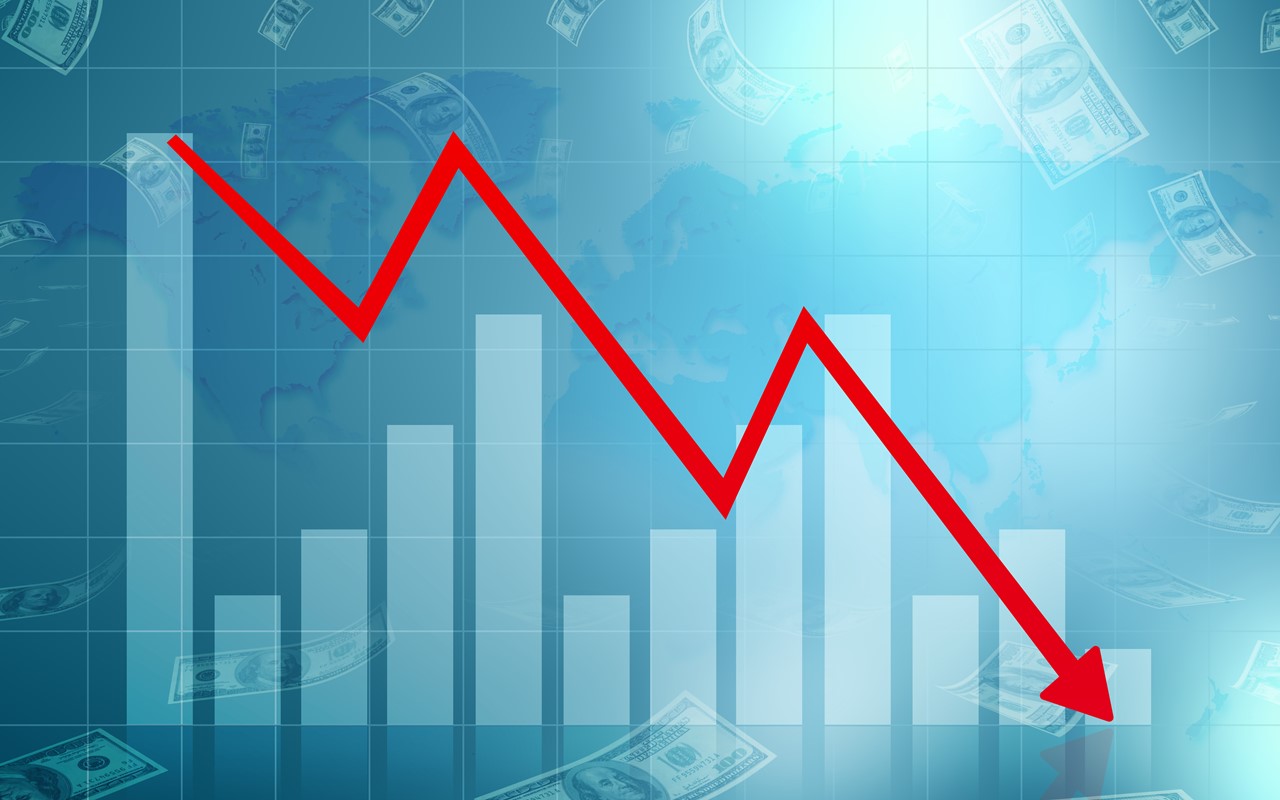 ♦ Lost Profits: Since the infringed party is selling a product based on its patent, there are profits generated from the patent via the sales of the products based on that patent. When a competitor sells an infringing product, it is essentially stealing sales from the patent owner since had the infringing products not been available, the buyers of those products would have had to buy product from the patent owner. And so, a second remedy available to the Market Participant is the profits it lost on sales that went to the infringing party. By determining what the sales and profits were for the infringer on the infringed products it sold, what those lost profits are can be determined.
♦ Lost Profits: Since the infringed party is selling a product based on its patent, there are profits generated from the patent via the sales of the products based on that patent. When a competitor sells an infringing product, it is essentially stealing sales from the patent owner since had the infringing products not been available, the buyers of those products would have had to buy product from the patent owner. And so, a second remedy available to the Market Participant is the profits it lost on sales that went to the infringing party. By determining what the sales and profits were for the infringer on the infringed products it sold, what those lost profits are can be determined.
♦ Injunctive Relief: The third remedy is not remunerative, but it can be very potent. The court may issue an injunction ordering the infringer to cease sales of the infringing product in the U.S. For an infringer that has a few warehouses full of product that it cannot now sell, and factories set up to produce a product that it cannot sell, an injunction can be devastating! When a Market Participant can secure an injunction from the court ordering the infringer to cease sales, that infringer comes begging to the patent owner to take a license for its patent!
 In the famous Apple vs. Samsung patent infringement lawsuit back in 2012, the jury decided in Apple’s favor that Samsung was infringing several Apple patents and Apple was entitled to damages. Apple petitioned the U.S. District Court for the Northern District of California to issue an injunction prohibiting Samsung from importing infringing Galaxy smart phone into the U.S. The judge denied Apple’s request. Apple appealed the ruling, and three years later – that's how long an appeal can take – the Appellate Court ruled that the judge should have issued the injunction. By then, however, it was too late to benefit Apple since Samsung had substantially changed the design of its phones.
In the famous Apple vs. Samsung patent infringement lawsuit back in 2012, the jury decided in Apple’s favor that Samsung was infringing several Apple patents and Apple was entitled to damages. Apple petitioned the U.S. District Court for the Northern District of California to issue an injunction prohibiting Samsung from importing infringing Galaxy smart phone into the U.S. The judge denied Apple’s request. Apple appealed the ruling, and three years later – that's how long an appeal can take – the Appellate Court ruled that the judge should have issued the injunction. By then, however, it was too late to benefit Apple since Samsung had substantially changed the design of its phones.
Had the judge properly granted Apple the injunction, and Samsung could NOT sell its smart phones in the U.S., Samsung would have been forced to seek a license from Apple for the infringed patents. Apple could have refused to license its patents – that is most likely what Steve Jobs would have decided – and Samsung would be out tens or million or hundreds of millions in sales revenue. Ouch!
Next Issue: Proving Infringement
Remedies-at-Law for Patent Assertion – Part One
Posted: 9/13/2021
We’ve worked with many inventors and businesses over the years who were horrified to discover that their patents had been infringed. Ironically, though, for many of them, it turned out to be a fortuitous and profitable event!
The bad news is that there are no “Patent Police” that you can call when your patent is infringed who will find and arrest the infringers. Patent infringement is a civil matter, so the patent owner (the “assignee” in patent lingo) has to pursue the infringers through civil litigation.
We are often asked by the owner of an infringed patent what he or she or it can expect in compensation for infringement of the patent, and the answer depends on the status of the assignee – NPE (non-practicing entity) or market participant – as the remedies are quite different.
♦ NPE: A non-practicing entity is a patent owner that does not practice the patent – that is, does not make or sell a product based on the infringed patent. This most often includes independent inventors and universities. The NPE who can document and prove infringement is entitled under current U.S. patent law to “reasonable royalties” – what the infringer would have likely paid in royalties had the infringer licensed the patent in the first place instead of infringing it. It seems unfair that Company A blatantly infringes a patent, and the only penalty is that it has to pay the royalty it would have otherwise paid had it simply licensed the patent in the first place, but that’s the law.
 The most common chain of events is that the assignee engages a patent litigation law firm or partners with a patent assertion firm, and files a patent infringement lawsuit against the infringer. There are hearings and motions are filed, and there is “discovery” (an exchange of evidence and documents between the plaintiff and the defendant). The patent assignee – the party filing the complaint – is the plaintiff, and the party who is being sued is the defendant.
The most common chain of events is that the assignee engages a patent litigation law firm or partners with a patent assertion firm, and files a patent infringement lawsuit against the infringer. There are hearings and motions are filed, and there is “discovery” (an exchange of evidence and documents between the plaintiff and the defendant). The patent assignee – the party filing the complaint – is the plaintiff, and the party who is being sued is the defendant.
Both sides are entitled to question the other side’s witnesses in what is known as a “deposition.” At some point – before the actual trial begins – the two sides usually sit down and work out a settlement. Very few patent infringement lawsuits go to trial – the vast majority are settled out-of-court because it is simply too risky to roll the dice and take your chances with a jury. The question every plaintiff asks is “Do I want my fate determined by 12 people, none of whom is smart enough to get out of jury duty?”
In the famous Apple vs. Samsung smartphone patent infringement lawsuit back in 2012, Steve Jobs wanted to go to trial to position Apple as the innovator and Samsung as the intellectual property thief. Jobs’ gamble paid off, and Apple won, but it was a bold move on Apple’s part!
When the assignee and the infringer reach an out-of-court settlement, it often has two parts. First, there is usually a lump sum payment that covers past infringement from when the infringing product first went to market to the present. If the infringer is still selling the infringing product, there is a second part of the settlement in which the infringer takes a license for the patent and pays royalties on sales of the infringing patent going forward for the remaining life of the patent. This is sometimes paid out in quarterly royalty payments, but to close the books on the whole affair, infringers will often agree to a second lump sum settlement that approximates what the royalties would likely be for the life of the patent.
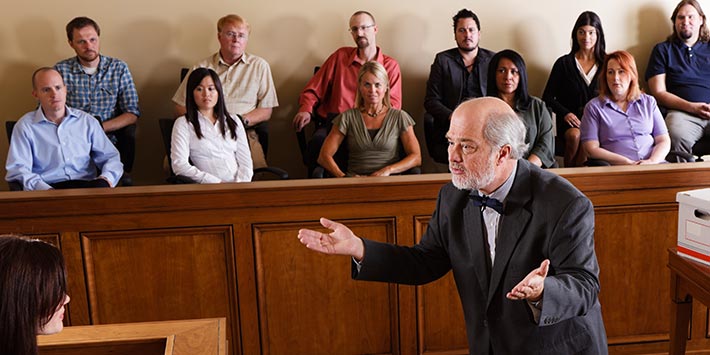 If the two sides cannot reach an agreement, and they do go trail, either side could win or lose. And the whole affair could drag on for years with appeals and other legal maneuvers.
If the two sides cannot reach an agreement, and they do go trail, either side could win or lose. And the whole affair could drag on for years with appeals and other legal maneuvers.
There is often more than one infringer. If Company A’s products are infringing a patent, Company A’s direct competitors' products are also likely infringing the same patent, so there is Company B and Company C that also have to be sued. From that point forward, the process is pretty much the same with each infringer. However, once two or three infringers agree to out-of-court settlements, the remaining infringers will sometimes just settle up with the plaintiff and save a few hundred thousand in legal fees.
There is one other wrinkle to all of this. If the plaintiff can prove that the infringement was “willful” (the infringer knew about the patent and infringed it anyway), the infringed party is entitled to treble (or “triple”) damages. In many cases, a company comes up with a new idea for a product and goes to market with that product unaware that there is a patent that covers the technology behind the new product. That is unintentional infringement, and the infringer only owes reasonable royalties while the willful infringer owes reasonable royalties times three.
And finally, the plaintiff – in the vast majority of cases – is out the legal fees it took to file and pursue the patent infringement litigation. There are limited “special circumstances” under which the judge in the case will require the defendant to reimburse the plaintiff’s legal fees – or require the plaintiff to reimburse the defendant’s legal fees – but that is a rare outcome.
♦ Market Participant: The rules are very different for the company that owns a patent, produces or sells a product based on that patent, and the patent is infringed. And we will cover that in the next Patent Leather.
The Challenge of Selling a Trade Secret
Posted: 8/17/2021
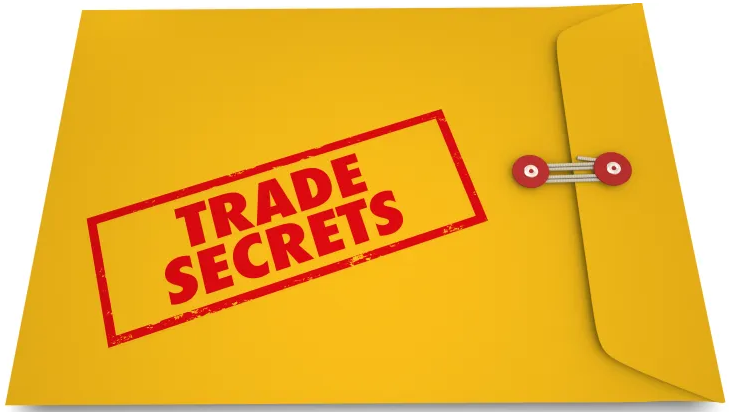 Last month, we covered the difference between a patent and a trade secret. If you missed it, and you want to know the key difference between these two key intellectual property assets, last month’s column appears in the Patent Leather section at our website.
Last month, we covered the difference between a patent and a trade secret. If you missed it, and you want to know the key difference between these two key intellectual property assets, last month’s column appears in the Patent Leather section at our website.
There are some innovations that really should be patented, while there are other inventions that might be better served as a trade secret. Clearly the best-known trade secret is the formula for Coca Cola, and the decision that was made over a century ago to not patent the soft drink formula, but keep it a trade secret, has served Coco Cola corporate well lo these many years.
So… if you have a trade secret – and you have clearly made the decision for one reason or another to NOT file a patent application to cover the technology – you are next presented with the challenge of monetizing your trade secret. Or, if you have very wisely decided to engage professional assistance with your venture, your broker is presented with the challenge of monetizing your trade secret.
One of the advantages of a patent is that while it is a monopoly granted to the inventor by the federal government – thank you, Founding Fathers – it is also a public document. We are often contacted by an inventor with a patent who wants us to sign an NDA (non-disclosure agreement) before showing us his or her patent! And they are surprised when we tell the inventor that is not necessary. One of the advantages of selling a patent is that we can simply send a link to any interested party that provides the prospective buyer or licensee with the entire patent filing. Our preference is Google Patents, but there are other sites that also provide patent data.
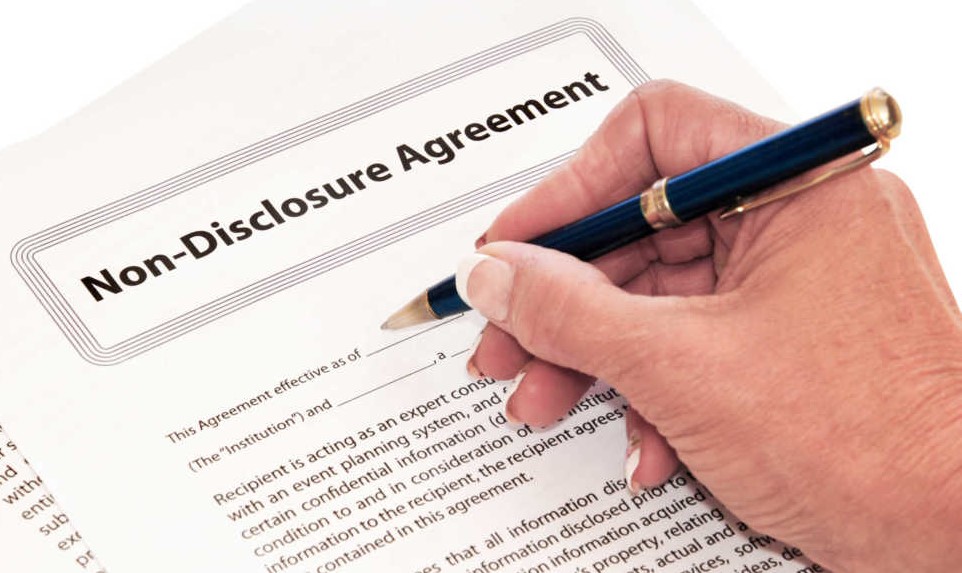 The exact opposite is the case with a trade secret. It is absolutely NOT a public document, and we absolutely, positively do NOT want any aspect of the trade secret to be a public document. Ergo, describing to a prospective buyer or licensee what the trade secret actually is is most definitely a considerable challenge.
The exact opposite is the case with a trade secret. It is absolutely NOT a public document, and we absolutely, positively do NOT want any aspect of the trade secret to be a public document. Ergo, describing to a prospective buyer or licensee what the trade secret actually is is most definitely a considerable challenge.
Some inventors have a prospective buyer sign an NDA, and with the NDA in place, they share their trade secret with the prospective buyer or licensee. Bad idea. Especially if you have multiple parties looking at the trade secret. If one of the NDA-signers lets the trade secret slip out, the challenge is proving who spilled the beans. Even if there is one NDA-signer, and somehow the trade secret goes public, what recourse does the inventor have? He or she will have to prove in court not only that the trade secret was made public, but specifically who revealed the trade secret. And unless the trade secret appears in a by-lined article, that’s almost impossible!
Two Trade Secret Challenges: Two significant challenges are created when one wants to sell or license a trade secret.
1. How do you show the prospective buyer or licensee the trade secret without actually showing them the trade secret and risk letting it slip out into the public domain? Yes, that seems impossible, but it is simply too risky to reveal your trade secret to a prospective buyer or licensee and hope that person does not steal it.
2. Once you’ve sold or licensed the trade secret, how to you prevent the buyer or licensee from letting the cat out of the bag? What good is keeping a trade secret secret, only to have the buyer or licensee fail to take necessary precautions and let your trade secret go public?
Fortunately, for the owner of a trade secret who is seeking to monetize that asset, IPOfferings has developed solutions to both Items 1. and 2. How do we do it? We cannot tell you because it they are trade secrets.
Trade Secret vs. Patent
Posted: 7/15/2021
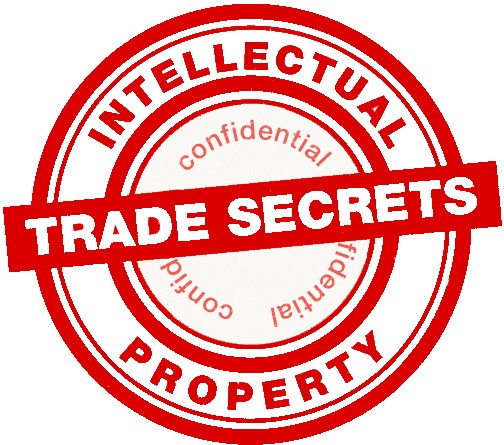 We are regularly contacted by inventors who have either (a.) made the decision to keep their inventions a trade secret and not file for a patent for their inventions or (b.) ask us our advice about keeping their invention a trade secret as opposed to filing for a patent. So…let’s spend a few paragraphs on this.
We are regularly contacted by inventors who have either (a.) made the decision to keep their inventions a trade secret and not file for a patent for their inventions or (b.) ask us our advice about keeping their invention a trade secret as opposed to filing for a patent. So…let’s spend a few paragraphs on this.
There are several famous and successful trade secrets. The most famous and unquestionably most successful trade secret is the formula for Coca Cola. Almost every knows – or should know – the story. An Atlanta pharmacist, one John Pemberton, invented Coca Cola in 1886. As recently as thirty or forty years ago – a good example is the pharmacy run by James Garner in Murphy’s Romance – drug stores had a counter that sold ice cream sodas and cold drinks. Pemberton invented a new and different beverage to sell at Jacobs’ Pharmacy on the corner of Marietta and Peachtree Streets in downtown Atlanta.
Rather than file for a patent – that would have expired over 100 years ago – Pemberton decided to keep his drink – actually the syrup he invented that is mixed with carbonated water to produce the actual beverage – a trade secret. Coca Cola is a good illustration of the two elements that are required for a successful trade secret:
1. It cannot be reverse engineered! While a chemical analysis can identify the actual ingredients that go into the dreadful drink – the IPOfferings crew are NOT Coke drinkers – it cannot determine the sequence in which the ingredients are blended, the exact quantities of each, and how they are mixed together.
2. It Can Be Kept a Secret! The number of people who know about the trade secret need to be small and trustworthy. The formula for Coca Cola is – as legend goes – kept in a safety deposit box at an Atlanta bank. Just a small handful of long-term and highly trusted Coca Cola employees have access to the formula. Is there a formula for New Coke? We do not know.
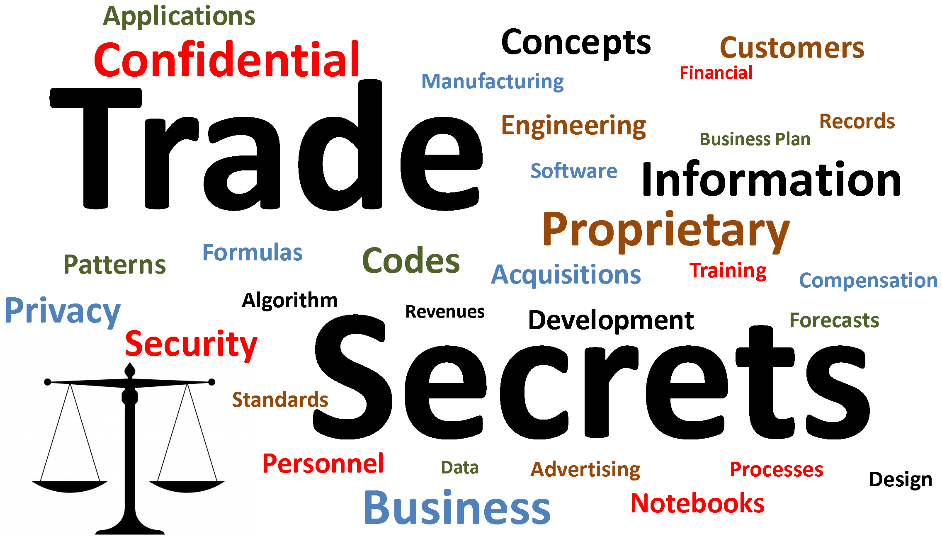
The bottom line is that a successful trade secret really has to be a process and cannot be a thing. If you have an invention for the next great toaster oven, protecting it with a trade secret is ridiculous because any competitor can simply buy one of your new, super-duper, next-generation toaster ovens and disassemble it, reverse-engineer it, and build a product identical to yours. And you can do nothing about it!
And that is the other major difference. If a company infringes your patent, you have legal recourse. You can sue them for patent infringement and, if you make your case, can collect damages. If you are a market participant – you are making and selling a product based on a patent – you have three remedies: Damages, lost profits, and injunctive relief.
If a company or competitor manages to steal your trade secret, you have NO recourse! You can try to find out who the culprit is that sold you out, but that is almost impossible. And even if you do, all you can do is fire the guy.
A trade secret – if it is a process that cannot be reverse-engineered – and it can be kept secret and still utilized to make a product or provide a service – can be sold or licensed just like a patent. But if it is sold or licensed, and the buyer or licensee does not take the necessary precautions and lets the trade secret cat out of the bag, your trade secret is now worth zero! Ouch.
Then there is the challenge of selling a trade secret. We will address that in August.
The Challenge of Selling a Patent Application
Posted: 6/18/2021
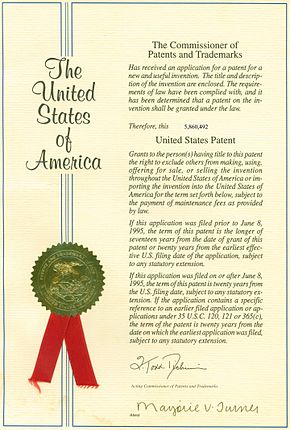 A granted patent – while its value is listed under “Intangible Assets” on most Balance Sheets – is very much a hard asset. It is a document from the U.S. federal government granting exclusivity to the owner (the “assignee”) of the invention covered by the patent for 20 years. It is an American concept the Founding Fathers believed to be so important that – rather than leaving it up to Congress to enact patent legislation – they incorporated patents (and copyrights) into the original U.S. Constitution! The brilliance of the Founding Fathers still amazes us 250 years later.
A granted patent – while its value is listed under “Intangible Assets” on most Balance Sheets – is very much a hard asset. It is a document from the U.S. federal government granting exclusivity to the owner (the “assignee”) of the invention covered by the patent for 20 years. It is an American concept the Founding Fathers believed to be so important that – rather than leaving it up to Congress to enact patent legislation – they incorporated patents (and copyrights) into the original U.S. Constitution! The brilliance of the Founding Fathers still amazes us 250 years later.
But what about a patent application? IPOfferings and other patent brokers represent primarily granted patents. The rights created by and protected by the patent are right there in black and white in the patent document. And when a patent is sold, ownership of the patent is “assigned” to a new owner who acquires the patent and all rights associated with the patent.
A patent application, however, is not a guarantee by the United States of America of anything! It is an application. It may – or may not – be approved and become a granted patent. In fact, only 52% of all patent applications ever become granted patents. Almost half of all patent applications are either rejected by the patent examiner or the patent application is abandoned.
When we are contacted by patent applicants who want to monetize their patent applications, we always advise them of the 50/50 approval/rejection rate. Their responses are always the same – they have the single greatest patent ever filed in the history of U.S. patentry, they have the best patent attorney to ever practice before the USPTO, and there is absolutely no doubt that their patent applications will be approved! While we admire their enthusiasm, the fact remains that only half of all patent applications become granted patents, so that factor has to be accounted for when one goes to sell a patent application.
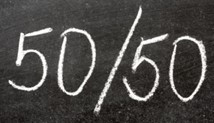
The 50/50 approval/rejection rate of a patent application must be accounted for in the sale of a patent application. It is usually done in one of the following manners.
♦ Cash Sale: Some patent applications are simply purchased for cash, and the acquiring entity takes over the prosecution of the patent application – sometimes retaining the original patent attorney, sometimes engaging a new one – and the new assignee of the patent application assumes the risk that the patent application may not be approved as a granted patent. In such cases, the buyer has usually conducted considerable due diligence and is reasonably satisfied that a patent will be granted.
♦ Buy an Option: Some acquirers will pay for an option on the granted patent – for if and when it is granted. A purchase price for the granted patent is agreed to, and when the patent is granted, it will be transferred to the new owner in exchange for the agreed-to purchase price. Either the original applicant continues with the prosecution of the patent application, or the optioner takes over the prosecution. If the patent application is rejected, the original applicant keeps the money he or she was paid for the option, but there is no patent sale because there is no granted patent.
♦ Purchase with Bonus: The acquirer buys the patent application for X dollars and takes over prosecution of the patent application. Should a patent be granted, an agreed-to bonus of Y dollars is paid to the original applicant.
For both of the second two options there is the sticky question of which claims make it through to the granted patent. It is not uncommon for a patent examiner to accept some claims and reject others, so it is possible – in fact, likely – that the patent that is granted will not have all the claims from the original application, some of which may be of importance to the buyer, so this factor has been included in the agreement to acquire the patent application or take an option on the granted patent.
Published vs. Unpublished Patent Applications: When a patent application is filed, it is held in secrecy by the Patent Office for 18 months, at which point the patent application is published. That is, it is made public. As a result, it is much easier to sell a published patent application since anyone can go the USPTO website or Google Patents or a half-dozen other websites and see the actual patent filing. During those first 18 months – while the patent application is a secret document – giving copies of the patent filing to anyone who asks to see it is – to say the least – messy. You can see why it is much easier to sell a published patent application than an unpublished one.

Why Wait 18 Months? The reason the Patent Office sits on a patent application for 18 months is not arbitrary. When Company A comes up with a new idea for a toaster oven, it files a patent application for its new technology. That 18 months of secrecy gives Company A time to develop its new product – do the design, engineering, testing, prototyping, packaging, sourcing, and other tasks required to bring a new toaster oven to market – and proudly label it “Patent Pending.” And it can do this without fear that one of its competitors will steal the idea behind Company A’s new toaster oven. Once the patent is published, and the patent application is approved, “Patent Pending” will be replaced with the Patent Number. If the patent application is NOT approved, “Patent Pending” has to come off the product, but Company A had a couple of years of de facto patent protection while the patent application was in prosecution. Giving patent applicants that 18 months promotes innovation, and that is the whole idea behind patents in the first place!
However, that 18 months provides NO benefit to the independent inventor who does not have a factory in which he or she can produce a product based on his or her patent. If the plan is to monetize your patent – and not commercialize it – it makes no sense to wait out those 18 months in secrecy.
Free Consultation: Our advice to all independent inventors who do not plan to commercialize their patents but hope to sell or license or otherwise monetize them, is to request that the Patent Office publish their patent applications immediately so they become public documents, making them much easier to promote to prospective buyers and licensees.
Additional Benefit: There is an additional super-secret upside to having your patent application published early. We cannot reveal it here, but if you have a patent application, and you are considering our recommendation, there is an additional benefit that we will share with you. Contact us at [email protected].
Why Fuel Cells Never Took Off
Posted: 6/5/2021
 The concept is very appealing. We all know that water is H2O – two hydrogen atoms and one oxygen atom bonded together. Most of us experimented with hydrolysis in High School in which we separated water into oxygen and hydrogen. And therein lies a tale.
The concept is very appealing. We all know that water is H2O – two hydrogen atoms and one oxygen atom bonded together. Most of us experimented with hydrolysis in High School in which we separated water into oxygen and hydrogen. And therein lies a tale.
It was back in 1959 when a scientist at General Electric, one Leonard Niedrach, filed a patent for a totally new concept in how electrical current was generated. Five years later, in 1964, he received U.S. Patent No. 3,134,697 for a “Fuel cell.” In addition to the impact of this foundational patent is the question on our part of why it took the Patent Office five years to grant that patent? There was no prior art to review. Fortunately for us today, patent pendency is about 30 months.
Getting back to the main story, the concept behind a fuel cell is brilliantly simple. Put oxygen in one chamber and hydrogen in a second chamber with a catalyst and a proton-exchange membrane between the two chambers. The oxygen will attempt to combine with the hydrogen to form water, but the membrane will only permit the protons to pass through, leaving the electrons stuck on the other side. However, a wire from the hydrogen side to oxygen side will permit the electrons from the hydrogen atom to pass over the membrane via the wire to join their proton mates and complete the merger. And what do we call electrons passing through a wire? We call it electricity!
Imagine this. An electrical-current-producing device that consumes no fossil fuel but uses oxygen and hydrogen, that has NO moving parts, that makes no sound, and that produces as its waste product water vapor. No hydrocarbons are consumed by the device, and none are emitted as waste, so a zero-carbon footprint! And since it has no moving parts, it will last forever! No repairs or maintenance! Can you image the possibilities?

NASA jumped on this technology and powered many of its space vehicles with fuel cells. Fuel cells were going to be the future of non-polluting automobiles. In fact, several manufacturers produced hydrogen-fueled autos such as the Jeep Treo and the Chevrolet Colorado ZH2. While battery-powered electric vehicles took off – and made Elon Musk a billionaire – hydrogen-powered vehicles languished. There are a few reasons why.
♦ Infrastructure: First of all, you need a network of hydrogen filling stations so all those hydrogen-powered cars and trucks can fill-up. The vehicle can use air for the oxygen, but it needs a tank of hydrogen. California mandated and funded a network of hydrogen filling stations under what it calls the California Fuel Cell Partnership. So you can buy and drive a fuel cell car in California, but once you leave the state, there are no hydrogen stations, so you are out of fuel – and luck. Until there is a national network of hydrogen filling stations, fuel cell-powered cars will just not take off. It is much easier to build electric car charging stations than hydrogen filling stations. Also, while it is relatively easy and not too costly to deliver electrical current to EV charging stations, it is very expensive and a logistical challenge to truck hydrogen to H2 filling stations.
♦ Cost: Then there is the cost of the hydrogen. It must be refined from a compound that includes hydrogen. The richest form of hydrogen is methane or H4C – four hydrogen atoms bonded to a carbon atom – that is produced by rotting garbage and is captured from landfills. Really! The problem is that when hydrogen is liberated from methane, that carbon atom bonds with an oxygen atom and forms carbon dioxide or CO that is emitted into the air. And the whole idea behind a fuel cells was to eliminate all those hydrocarbons!
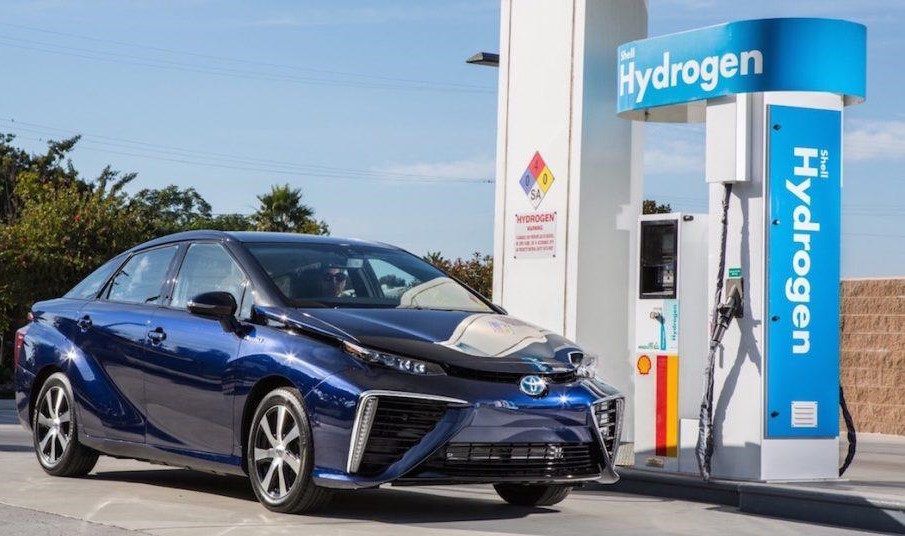
♦ EVs Are NOT Pollution-Free! Only about 12% of the electricity consumed in the U.S. is green. The rest is generated from fossil fuels – mostly coal and natural gas. So, while an electric vehicle is in and of itself pollution-free, there is substantial pollution that is created to generate the electricity to charge the EV’s batteries. Electric vehicles do not eliminate spewing hydrocarbons into the air, they simply move pollution from the highway to the local power plant. And fuel cell-powered vehicles move pollution to the hydrogen recovery facility and to all those trucks delivering hydrogen to all those hydrogen filling stations.
U.S. Patent No. 11,000,000 Is Granted!
Posted: 5/24/2021
 Congratulations to Jason Diedering and Sarvanna Kumar on the granting of their patent. What earns these inventors special attention is that they were granted U.S. Patent No. 11,000,000 for “Repositioning wires and methods for repositioning prosthetic heart valve devices within a heart chamber and related systems, devices and methods.” The assignee of the patent is 4C Medical Technologies, Inc.
Congratulations to Jason Diedering and Sarvanna Kumar on the granting of their patent. What earns these inventors special attention is that they were granted U.S. Patent No. 11,000,000 for “Repositioning wires and methods for repositioning prosthetic heart valve devices within a heart chamber and related systems, devices and methods.” The assignee of the patent is 4C Medical Technologies, Inc.
Since the first U.S. Patent was issued in 1790 – it was signed by George Washington and the patent examiner was Thomas Jefferson – we’ve come a long way. For the first 46 years of the operation of the Patent Office, U.S. Patents were simply identified by the date they were granted. The Patent Act of 1836 set up a system of numbering, so the current system of sequentially numbered patents goes back 185 years.
Back in 1970, Alvin Toffler predicted in his book, “Future Shock,” that in a “post-industrialist” world change would occur at an increasing rate, leaving people suffering from "shattering stress and disorientation." Today we call that “innovation” and we got used to it! To put the granting of the eleven millionth U.S. Patent in perspective, here is a hyper-cruise through U.S. Patent history, one million patents at a time.
♦ 1908: It took from 72 years to reach U.S Patent No. 1,000,000 for a “Vehicle-tire.” The automobile had just come onto the American scene and Henry Ford was cranking them out by the thousands, so a new tire design made sense. Why they hyphenated the title we do not know. The inventor was one Francis H. Holton who assigned his patent to the B. F. Goodrich Company, an American icon until it was acquired by Michelin of France.
♦ 1935: It took much less time – just 27 years – for the Patent Office to grant U.S. Patent No. 2,000,000 for a “Vehicle wheel construction.” Ironically, this patent was also auto-related. The inventor was one Ledwinka Joseph and the assignee was the Edward G. Budd Manufacturing Co. that today is owned by ThyssenKrupp of Germany.
♦ 1961: It took another 26 years for U.S. Patent No. 3,000,000 to issue for an “Automatic reading system.” This patent was invented by Kenneth R. Eldredge and assigned to yet another American icon, General Electric Company.
♦ 1976: Just 15 years later, U.S. Patent No. 4,000,000 was granted for a “Process for recycling asphalt-aggregate compositions.” The inventor was one Robert L. Mendenhall, the founder of the Las Vegas Paving Co. Just think of all the casino parking lots that needed paving over the past five decades!
♦ 1991: Another 15 years passed until U.S. Patent No. 5,000,000 for “Ethanol production by Escherichia coli strains co-expressing Zymomonas” was granted to the University of Florida. The inventors were Lonnie O. Ingram, Tyrrell Conway, and Flavio Alterthum.

♦ 1999: The pace of innovation really picked up in the 1990s because it took just eight years for U.S. Patent No. 6,000,000 for an “Extendible method and apparatus for synchronizing multiple files on two different computer systems.” Two computers talking to each other was cutting edge in 1999! The inventors were Jeffrey C. Hawkins and Michael Albanese, and the assignee was another American icon, 3Com Corporation, now a unit of super icon Hewlett-Packard.
♦ 2006: Just seven years later, U.S. Patent No. 7,000,000 for “Polysaccharide fibers” was granted. The inventor was John P. O'Brien and the assignee was yet another American icon, E. I. du Pont de Nemours and Company.
♦ 2011: From eight years to seven years to just five years for U.S. Patent No. 8,000,000 for a “Visual prosthesis” to be granted. The inventors were Robert J. Greenberg, Kelly H. McClure and Arup Roy, and the patent was assigned to Second Sight Medical Products Inc. which is still in business and is traded on the NASDAQ.
♦ 2015: Innovation charged on, and in just four years U.S. Patent No. 9,000,000 was issued for a “Windshield washer conditioner.” The inventor was one Matthew Carroll who assigned the patent to his company, Wiperfill Holdings LLC. The invention captures rain water, deionizes it, and uses it to refill the windshield washer reservoir. There is no record of this invention ever being commercialized.
♦ 2018: In just three years and two months, U.S. Patent No. 10,000,000 for “Coherent LADAR using intra-pixel quadrature detection” was granted to yet another American icon, Raytheon. Part of an international patent family, it addresses the use of laser detection and ranging (or LADAR) for autonomous vehicles.
♦ 2021: It took just slightly less time – two tears and 11 months to be precise – for U.S. Patent No. 11,000,000 to be granted.
Here are the spans of years between each millionth patent:
U.S. Patent No. 1,000,000: 72 years
U.S. Patent No. 2,000,000: 27 years
U.S. Patent No. 3,000,000: 26 years
U.S. Patent No. 4,000,000: 15 years
U.S. Patent No. 5,000,000: 15 years
U.S. Patent No. 6,000,000: 8 years
U.S. Patent No. 7,000,000: 7 years
U.S. Patent No. 8,000,000: 5 years
U.S. Patent No. 9,000,000: 4 years
U.S. Patent No. 10,000,000: 3 years and two months
U.S. Patent No. 11,000,000: 2 years and 11 months
The Smart Home Business Segment Has Arrived
Posted: 5/7/2021
 We are trying to locate the source for “You are not a man until you have a daughter.” It is a true statement, proven over and over again from generation to generation. What does that have to do with the Smart Home?
We are trying to locate the source for “You are not a man until you have a daughter.” It is a true statement, proven over and over again from generation to generation. What does that have to do with the Smart Home?
There is another true saying. A business sector is not really a business sector until it has a really nasty, drag-down, all-out, patent infringement lawsuit. Based on Vivint v. ADT (Case No. 2:2021cv00115) that was filed in U.S. District Court for the District of Utah, the Smart Home business segment has arrived. IPOfferings represents several Smart Home portfolios, and we were one of the first businesses to see the potential for this new business segment several years ago, so we have some skin in this game.
The plaintiff is Vivint Smart Home, Inc., a leader in the Smart Home business segment. The company was founded back in 1999, it boasts 1.7 million customers, and company became publicly traded just last year.
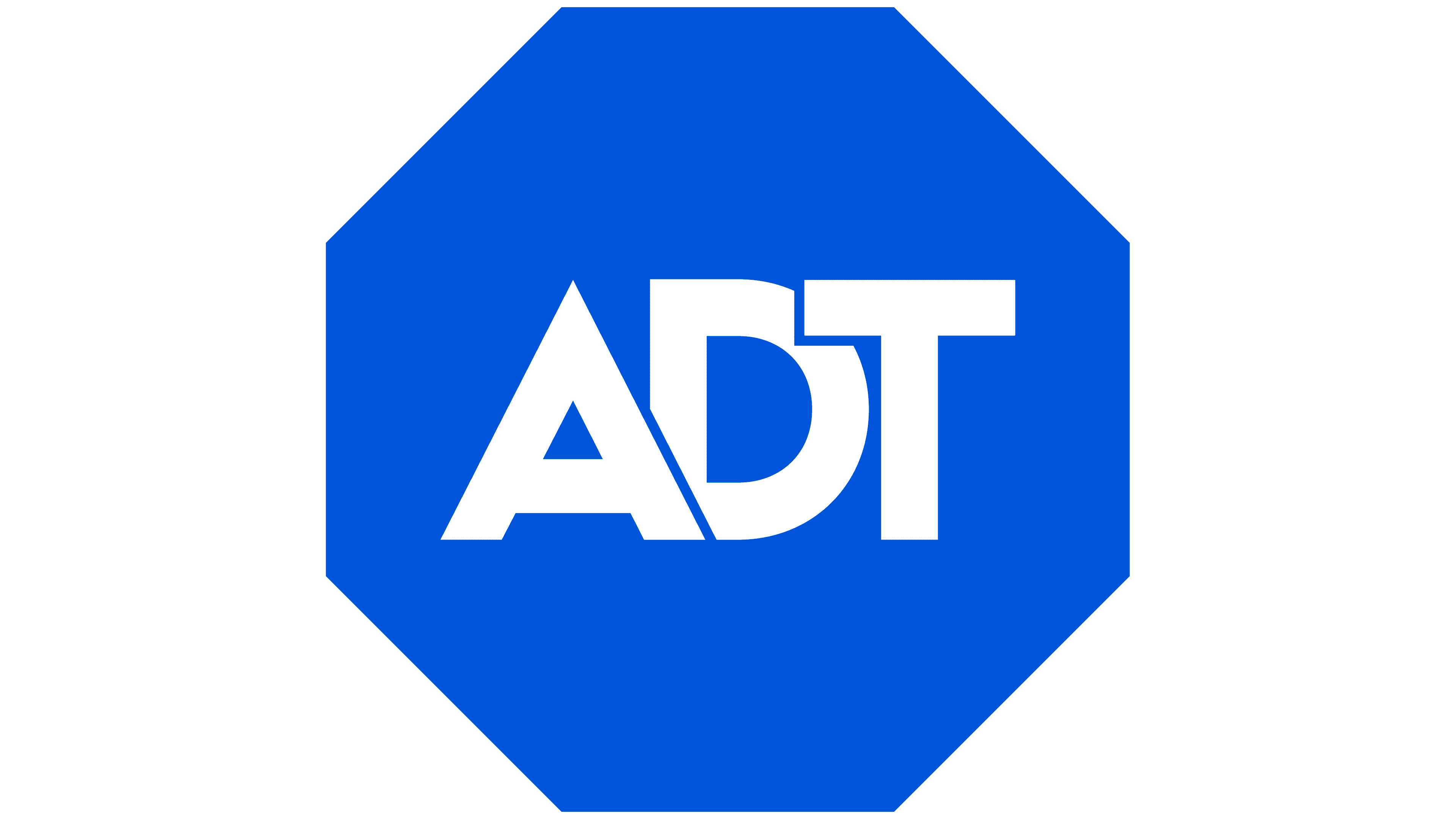 The defendant is ADT, Inc., a much, much older company. The bad guy is always the older company. In fact, ADT it was founded back in 1847 – yup, 175 years ago! – as American District Telegraph, the primary competitor of Western Union. Over a century and a half, the company morphed into business and home security services, becoming the leader in that segment. With a presence in six million homes and businesses, expanding into the Smart Home and Smart Office business segment made a lot of sense.
The defendant is ADT, Inc., a much, much older company. The bad guy is always the older company. In fact, ADT it was founded back in 1847 – yup, 175 years ago! – as American District Telegraph, the primary competitor of Western Union. Over a century and a half, the company morphed into business and home security services, becoming the leader in that segment. With a presence in six million homes and businesses, expanding into the Smart Home and Smart Office business segment made a lot of sense.
In the lawsuit, Vivint claims that ADT is infringing six of its patents:
- U.S. Patent No. 7,956,739: Monitoring and entry system presence service
- U.S. Patent No. 8,392,552: System and method for providing configurable security monitoring utilizing an integrated information system
- U.S. Patent No. 8,700,769: System and method for providing configurable security monitoring utilizing an integrated information system
- U.S. Patent No. 9,349,262: Security system providing a localized humanly-perceivable alert for identifying a facility to emergency personnel
- U.S. Patent No. 10,228,151: Floating thermostat plate
- U.S. Patent No. 10,325,159: Entity detection
ADT’s response was the standard one: “ADT believes the claims asserted by Vivint are completely without merit and intends to vigorously defend against the lawsuit." Just once – just once – we’d like the response to be “Oops. You got us. We bad!”
This is not the first litigation between these parties. In 2018, Vivant paid ADT $10 million (not much for a company with just over $1 billion in sales) to settle a deceptive sales lawsuit.
We will keep you updated as the case progresses.
The Turing Award – And Therein Lies a Tale
Posted: 4/19/2021
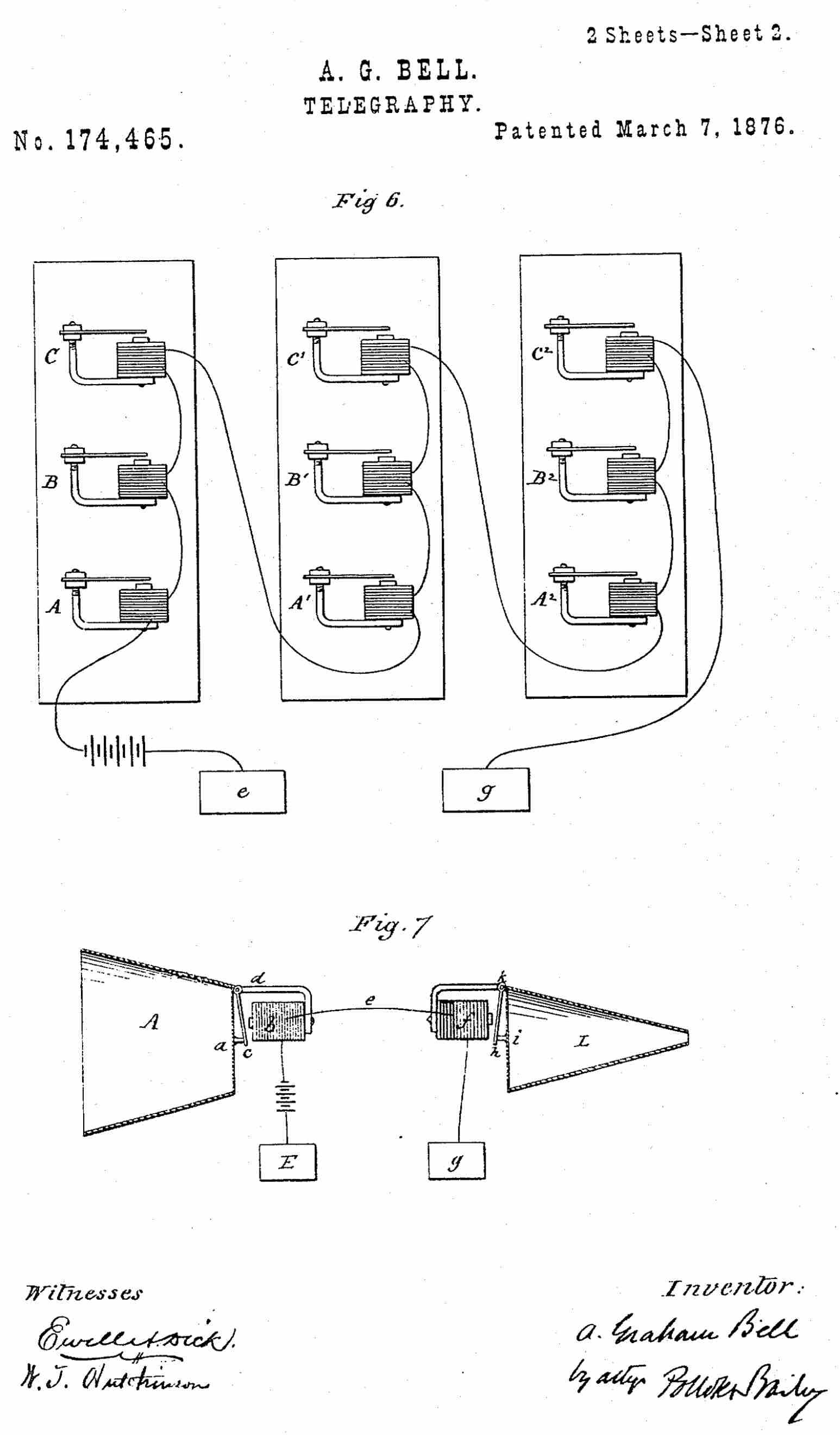 The Turing Award for 2021 has been awarded to Alfred Aho and Jeffrey Ullman for their work in computer languages. The Turing Award is named after Alan Turing, the brilliant British mathematician whose team created one of the first computers and used it to crack the coded messages sent by the Nazis using their Enigma machine.
The Turing Award for 2021 has been awarded to Alfred Aho and Jeffrey Ullman for their work in computer languages. The Turing Award is named after Alan Turing, the brilliant British mathematician whose team created one of the first computers and used it to crack the coded messages sent by the Nazis using their Enigma machine.
Known as the “Nobel Prize” of the computer industry, it is given each year by the Association for Computing Machinery to those who are responsible for an innovation "of lasting and major technical importance to the computer field.” Messrs. Aho and Ullman met many years ago when they worked together at Bell Labs, and therein lies a tale that we shall share with you.
The story begins with the founding of Western Electric Manufacturing Company in 1869. It manufactured electrical products such as typewriters, alarms, and lighting products, and was closely aligned with the Western Union Telegraph Company, for which Western Electric supplied relays and other equipment. Western Union was the company that ran the U.S. telegraph system for over 100 years.
A decade later, U.S. Patent No. 174,465 was awarded to 29-year-old Alexander Graham Bell of Boston on March 7, 1876 for what was to become the telephone. Bell’s investor in his start-up business to produce and install telephones and provide telephone service was his father-in-law, Gardner Greene Hubbard, who formed the Bell Telephone Company in July 1877.
Bell and Hubbard set up a subsidiary, American Telephone & Telegraph Company, to handle long distance telephone services, but in 1899 they decided to make Bell Telephone a subsidiary of American Telephone and Telegraph. AT&T became THE U.S. telephone company for another 80 years, and came to be known as “Ma Bell.”
In 1879, Western Union and American Telephone and Telegraph were involved in a nasty patent infringement lawsuit – all great disputes are over a patent or a woman – and the suit was resolved when AT&T acquired Western Electric in 1881. For the next 100 years, Western Electric was the manufacturing subsidiary of AT&T. If you ever see an old black dial telephone at a flea market or in an antique store, turn it over and you will see that it was manufactured by Western Electric.
![]() As the manufacturing business of the telephone industry, Western Electric needed to be on the cutting edge of technology, so on January 1, 1925, Bell Telephone Laboratories, Inc. was formed, and into this new company was combined all the engineering, development, and design departments of AT&T and Western Electric. Bell Labs – as came to be known – hit the ground running with 3,600 employees housed in 4,000 square feet at 463 West Street in Manhattan.
As the manufacturing business of the telephone industry, Western Electric needed to be on the cutting edge of technology, so on January 1, 1925, Bell Telephone Laboratories, Inc. was formed, and into this new company was combined all the engineering, development, and design departments of AT&T and Western Electric. Bell Labs – as came to be known – hit the ground running with 3,600 employees housed in 4,000 square feet at 463 West Street in Manhattan.
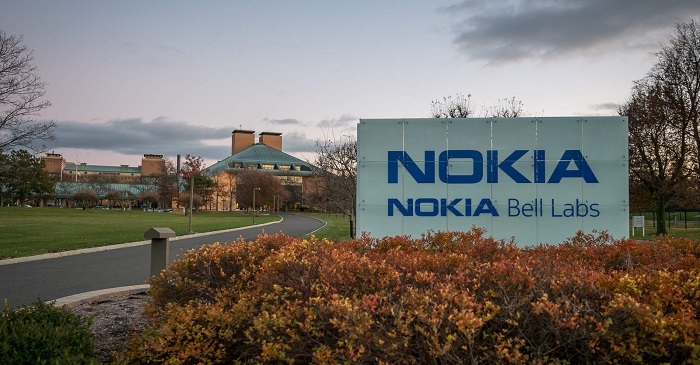 Bell Labs became one of the most prolific invention machines in history, having received 30,000 patents to date. Bell Labs invented everything from talking pictures to the transistor. Bell Labs invented the photovoltaic cell (or solar panel), the laser, radio astronomy, fiber optics, the UNIX operating system, and the picturephone – 50 years before Zoom! It was at Bell Labs that the 2021 Turing Award winners. Alfred Aho and Jeffrey Ullman, met and worked and became colleagues.
Bell Labs became one of the most prolific invention machines in history, having received 30,000 patents to date. Bell Labs invented everything from talking pictures to the transistor. Bell Labs invented the photovoltaic cell (or solar panel), the laser, radio astronomy, fiber optics, the UNIX operating system, and the picturephone – 50 years before Zoom! It was at Bell Labs that the 2021 Turing Award winners. Alfred Aho and Jeffrey Ullman, met and worked and became colleagues.
When AT&T was broken up in 1984 into regional operating companies and a long-distance telephone provider, Bell Labs became AT&T Bell Laboratories, a subsidiary of the long-distance company. In 1996, AT&T Bell Labs and Western Electric were spun off into a separate company, Lucent Technologies, Inc., but a small number of researchers were kept on staff by AT&T as A&T Labs.
In 2006, Lucent merged with French telecom manufacturer Alcatel to form Lucent-Alcatel, S.A.
In 2016, Nokia Corporation, the Finnish multinational telecommunications giant, acquired Lucent-Alcatel and established Nokia Bell Labs, the current successor to this storied American institution.
Are You Reporting All Your Assets?
Posted: 3/15/2021
We are often asked by our clients who have chosen IPOfferings to represent them in the monetization of their patents what value we should put on their patents. IPOfferings provides not one, but three, separate Patent Valuation Services, but we do not go through the process of performing a formal patent valuation – unless the clients engages us to do so – because it is a buyer’s market, and the buyer sets the price. Not all patent brokers will admit it, but that is the reality today.
 There are times, however, when performing a patent valuation makes a lot of sense. In fact, there are times when a patent valuation is a critical event that should not be avoided. When a company has home-grown patents – patents that it did not acquire, but patents it applied for itself – it is critically important that a business know what those patents are worth. To see why, follow along with us on this adventure.
There are times, however, when performing a patent valuation makes a lot of sense. In fact, there are times when a patent valuation is a critical event that should not be avoided. When a company has home-grown patents – patents that it did not acquire, but patents it applied for itself – it is critically important that a business know what those patents are worth. To see why, follow along with us on this adventure.
A business comes up with a new technology. It’s CTO (chief technology officer), its VP of Engineering, its Marketing Director, or any other employee at the company from the executive suite to the loading dock, comes up with an invention that the company could develop into a new product or use to improve or enhance a current product. What does a smart company do? It files a patent application for the new technology.
It probably engages a patent attorney to file the application, and two or three years later – current patent pendency at the USPTO is 23 months, but it was recently as high as three years – a patent is granted. Congratulations. But here is what does not occur: There is NO accounting transaction that records the acquisition of that patent.
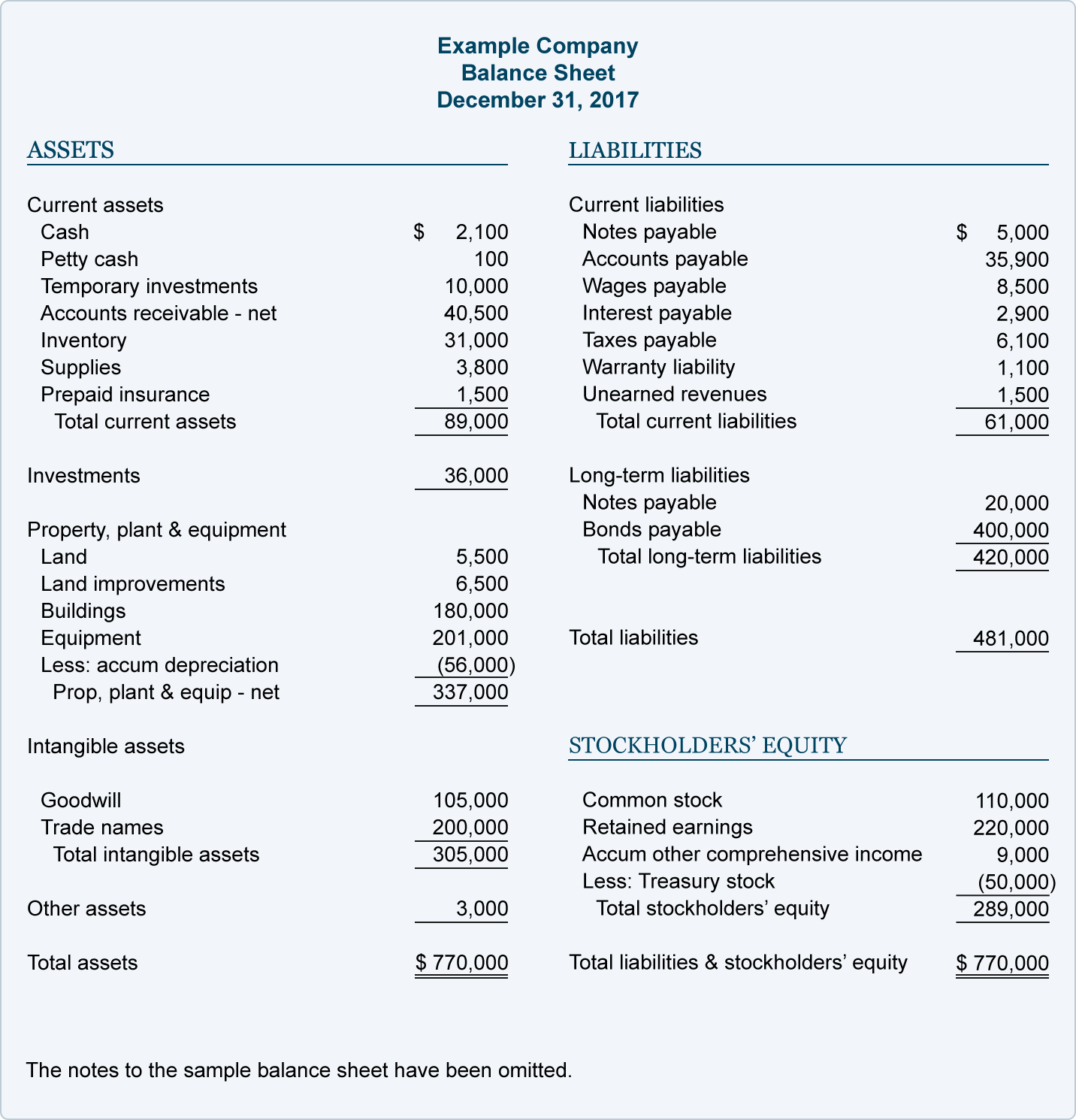 When a company buys a truck, or a lathe, or shelving for the warehouse, or computers, or any other capital equipment, an accounting transaction occurs that takes funds out of Cash and adds the value of the acquired truck, lathe, shelving, or computers to the Equipment line under Property and Equipment. So as a company builds its assets, they automatically appear on the left side of the Balance Sheet.
When a company buys a truck, or a lathe, or shelving for the warehouse, or computers, or any other capital equipment, an accounting transaction occurs that takes funds out of Cash and adds the value of the acquired truck, lathe, shelving, or computers to the Equipment line under Property and Equipment. So as a company builds its assets, they automatically appear on the left side of the Balance Sheet.
If a company buys a patent – we hope it buys the patent through IPOfferings from one of our clients – an accounting transaction occurs that takes the funds out of Cash and records the value of the acquired patent under Intangible Assets.
But – and this is a very common but – when a company does what we covered back in the third paragraph (go back and read it if you need to), there is NO accounting transaction. The filing fees and attorney fees for the patent application are not assets. They are expenses that are properly written off in the year they are expended. So, when that patent is granted, it is most definitely an asset, but not one that appears on the company Balance Sheet automatically as other assets do.
We come across companies all the time in all industries that have from a handful to dozens of active, granted patents that are not accounted for on the company’s Balance Sheet!
Why is it important for a company to record its patents as assets? Because adding the value of its patents – and other intangible assets – to the Balance Sheet increases the company’s value. And a company with greater value has easier access to financing. It is much easier for a start-up business to raise venture capital or other financing if the value of its patents are reflected on its Balance Sheet. Adding the value of its patents to the Balance Sheet of a publicly held company can do wonders for the company’s stock price. And let’s face it, any company’s Balance Sheet should accurately reflect all of a company’s assets as well as its liabilities.
If you represent a company that has home-grown patents, and those patents are not reflected on your Balance Sheet, the time has come to have a professional valuation of those patents performed so their value can be accurately reflected on the company Balance Sheet.
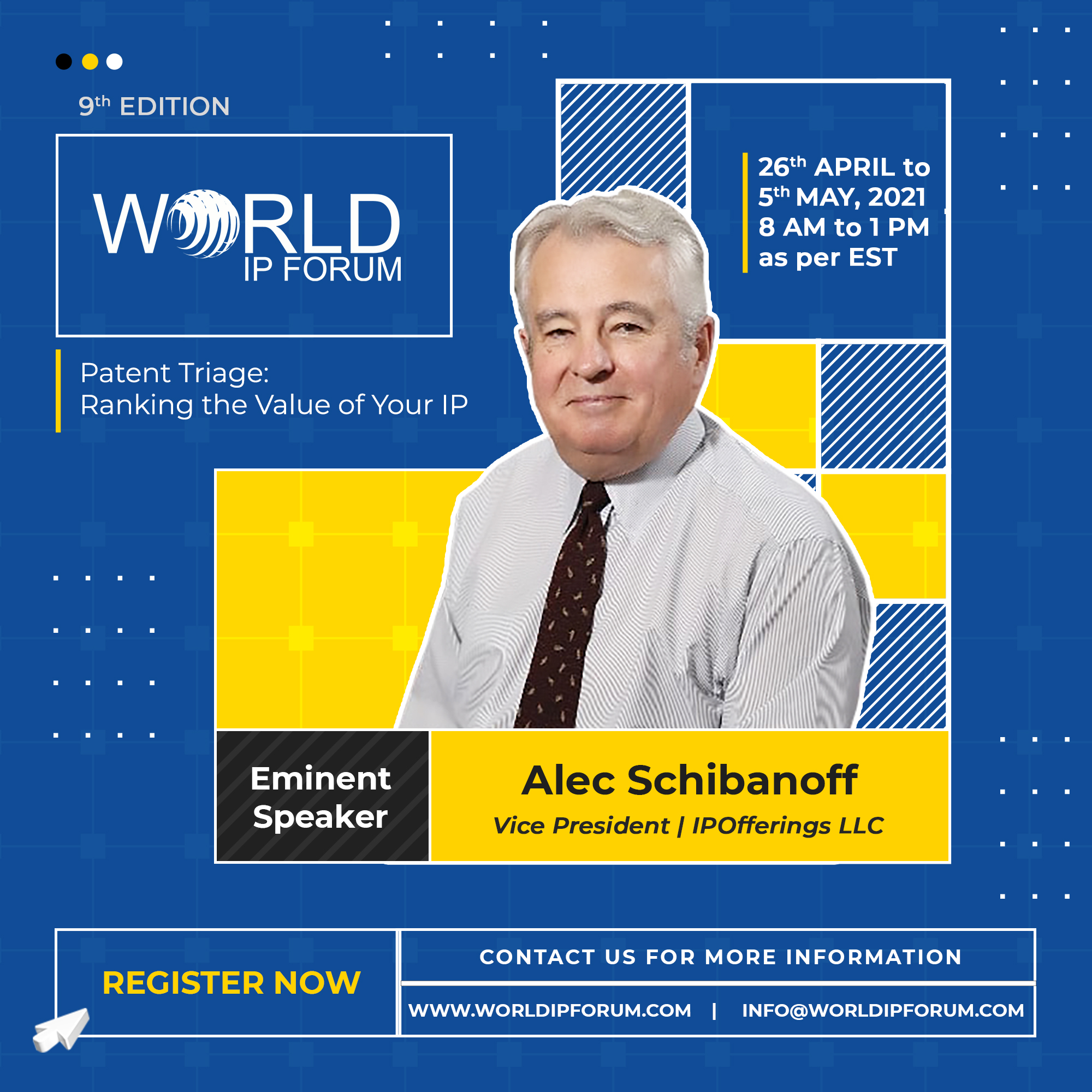 Alec Schibanoff Will Be Speaker at the 2021 World IP Forum
Alec Schibanoff Will Be Speaker at the 2021 World IP Forum
Posted: 2/16/2021
Our very own Alec Schibanoff will be one of the speakers, offering a presentation on Patent Triage. The 2021 World IP Forum will be April 26-28, and this year’s conference will be a virtual event.
We Thank Andrei Iancu for His Service
Posted: 2/16/2021
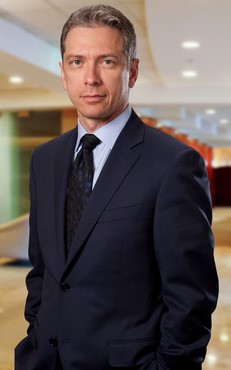 President Trump’s appointee to run the Patent Office was Andrei Iancu. As most of you know, the Director of the U.S. Patent and Trademark Office is also the Under-Secretary of Commerce for Intellectual Property and a presidential appointee. So, Mr. Iancu’s stint at the USPTO ended January 20 as did the service of all other cabinet officers and presidential appointees, except for a small number that were asked to stay on temporarily by the new administration.
President Trump’s appointee to run the Patent Office was Andrei Iancu. As most of you know, the Director of the U.S. Patent and Trademark Office is also the Under-Secretary of Commerce for Intellectual Property and a presidential appointee. So, Mr. Iancu’s stint at the USPTO ended January 20 as did the service of all other cabinet officers and presidential appointees, except for a small number that were asked to stay on temporarily by the new administration.Iancu came to the U.S. from Romania, and holds a BS in Aerospace Engineering, an MS in Mechanical Engineering, and a Juris Doctorate – all from UCLA. He worked in industry – four years at Hughes Aircraft – and in legal practice – 13 years at Irell & Manella. In addition to having movie-star good looks and a world-class personality, he did a pretty good job at the Patent Office. Among his accomplishments was reducing total pendency (the time it takes from when a patent application is filed until it is either granted as a patent or it receives a final rejection) down to an average of just 23 months. Bravo!
It is unclear where Iancu will go, but wherever it is, he will be brilliant. He is just that kind of guy. Until a new Under Secretary of Commerce for Intellectual Property is nominated and confirmed by the Senate, the Acting Director of the USPTO is Drew Hirshfield, the Commission of Patents and a career USPTO employee. We take this opportunity to thank Andrei Iancu for his service to the patent community and to his country.
100 Top Patent Recipients for 2020
Posted: 2/16/2021
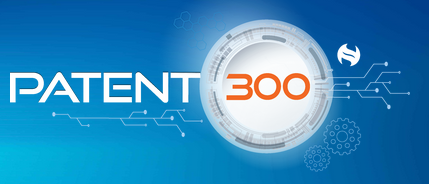
| 1. | IBM | 9,435 |
| 2. | Samsung | 8,539 |
| 3. | LG | 5,112 |
| 4. | Canon | 3,689 |
| 5. | Intel | 3,284 |
| 6. | Raytheon | 3,213 |
| 7. | Huawei | 3,178 |
| 8. | Microsoft | 2,972 |
| 9. | Taiwan Semiconductor | 2,892 |
| 10. | Sony | 2,886 |
| 11. | Apple | 2,840 |
| 12. | Dell | 2,826 |
| 13. | Toyota | 2,819 |
| 14. | GE | 2,417 |
| 15. | Alphabet | 2,379 |
| 16. | Amazon.Com | 2,373 |
| 17. | Qualcomm | 2,297 |
| 18. | BOE | 2,157 |
| 19. | Ford | 2,090 |
| 20. | Panasonic | 1,929 |
| 21. | Hyundai | 1,626 |
| 22. | Micron Technology | 1,535 |
| 23. | 1,527 | |
| 24. | Johnson & Johnson | 1,492 |
| 25. | Hitachi | 1,472 |
| 26. | Boeing | 1,464 |
| 27. | AT&T | 1,459 |
| 28. | Medtronic | 1,440 |
| 29. | Ericsson | 1,401 |
| 30. | Fujifilm | 1,399 |
| 31. | Siemens | 1,341 |
| 32. | Epson | 1,335 |
| 33. | Mitsubishi | 1,319 |
| 34. | Toshiba | 1,314 |
| 35. | Honda | 1,219 |
| 36. | Denso | 1,214 |
| 37. | Honeywell | 1,178 |
| 38. | Texas Instruments | 1,150 |
| 39. | Cisco | 1,141 |
| 40. | US Federal Government | 1,108 |
| 41. | Robert Bosch | 1,100 |
| 42. | Fujitsu | 1,093 |
| 43. | SK Group | 1,091 |
| 44. | Sharp | 1,052 |
| 45. | NEC | 1,007 |
| 46. | HP | 989 |
| 47. | Kyocera | 978 |
| 48. | Philips | 949 |
| 49. | Ricoh | 938 |
| 50. | Murata | 892 |
| 51. | TCL | 880 |
| 52. | Infineon | 834 |
| 53. | HPE | 831 |
| 54. | GM | 802 |
| 55. | Western Digital | 788 |
| 56. | Oracle | 783 |
| 57. | Halliburton | 778 |
| 58. | Nokia | 757 |
| 59. | Kioxia | 756 |
| 60. | Capital One | 747 |
| 61. | Sumitomo | 740 |
| 62. | Applied Materials | 738 |
| 63. | SAP | 737 |
| 64. | Alibaba | 721 |
| 65. | Softbank | 720 |
| 66. | Brother | 713 |
| 67. | Verizon | 712 |
| 68. | Bayer | 706 |
| 69. | University of California | 687 |
| 70. | Saudi Arabian Oil | 683 |
| 71. | 3M | 668 |
| 72. | Porsche | 658 |
| 73. | NXP Semiconductors | 649 |
| 74. | STSMicroelectronics | 646 |
| 75. | Olympus Corporation | 643 |
| 76. | Safran | 641 |
| 77. | Procter & Gamble | 640 |
| 78. | Fanuc | 634 |
| 79. | Schlumberger | 633 |
| 80. | Lenovo | 630 |
| 81. | Tencent | 623 |
| 82. | Boston Scientific | 605 |
| 83. | Konica Minolta | 587 |
| 84. | Japan Display | 580 |
| 85. | TDK | 578 |
| 86. | Baker Hughes | 572 |
| 87. | Mubadala | 571 |
| 88. | BBK Electronics | 564 |
| 89. | Airbus | 560 |
| 90. | Semiconductor Energy Lab | 556 |
| 91. | Rolls-Royce Group | 553 |
| 92. | Commscope | 550 |
| 93. | Mitsubishi | 530 |
| 94. | Salesforce.Com | 525 |
| 95. | BASF | 517 |
| 96. | ETRI | 499 |
| 97. | Tokyo Electron | 498 |
| 98. | Continental | 495 |
| 99. | Adobe | 490 |
| 100. | Corning | 488 |
A few clarifications and observations:
♦ No.1, IBM, has led this list for as long as anyone can remember.
♦ No. 46 (HP) is Hewlett-Packard, Inc., the PC and printer manufacturer.
♦ No. 63 (HPE) is Hewlett-Packard Enterprises, the server, networking, consulting, and support services business.
♦ No. 26, Boeing, received 1,464 U.S. Patents while its direct competitor, No. 89, Airbus, received only 560.
♦ No. 60, Capital One, is the only bank in the list.
We Need to Get This Off Our Collective Chests
Posted: 1/18/2021
♦ Reflexive Pronouns: These have to be the most-often misused forms of speech in the American language. What is wrong with this sentence? “Jeff, Sally, and myself were responsible for filing the patent application.” It hurts just to read the sentence. “Myself” is a reflexive pronoun, so it should never appear as the subject of a sentence. The correct sentence is “Jeff, Sally, and I were responsible for filing the patent application.” What is wrong with this sentence? “It is better to leave these things to myself.” Again, we cringe as we read this. A reflexive pronoun is never the direct object of a sentence. The correct sentence is “It is better to leave these things to me.”
A reflexive pronoun “reflects” back on the subject of the sentence, so “myself” is never used unless the subject of the sentence is “I”. For example, “I cut myself shaving.” or “They can handle that themselves.” A reflective pronoun (myself, ourselves, yourself, yourselves, himself, herself, itself, and themselves) is never the subject of a sentence and is only used when it reflects back on the subject (I, we, you, he, she, it, or they).
Patent Triage includes the evaluation, patent-by-patent, of the entire collection of assets, and putting each patent into one of five categories.
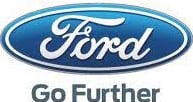 ♦ Farther and Further: Farther is the superior form of “far”. Example: “I used to live in the far house, but then we moved down the road to the farther house. I hope to one day live in that beautiful house that is farthest down the road.” Far. Farther. Farthest. Get it? You use “farther” when you could also use “far” or “farthest”. The Ford Motor Company tagline “Go Further” is grammatically wrong. Great cars and truck. Bad tagline. Should be “Go Farther”. Go far. Gar farther. Go the farthest.
♦ Farther and Further: Farther is the superior form of “far”. Example: “I used to live in the far house, but then we moved down the road to the farther house. I hope to one day live in that beautiful house that is farthest down the road.” Far. Farther. Farthest. Get it? You use “farther” when you could also use “far” or “farthest”. The Ford Motor Company tagline “Go Further” is grammatically wrong. Great cars and truck. Bad tagline. Should be “Go Farther”. Go far. Gar farther. Go the farthest. Further is a verb and means to advance or promote. Example: “A good education will further your career.” “I do not want to go any further with this.” Wrong. “You do not want to go any farther.” With that or anything else. Got it?
♦ Irrespective and Irregardless: “Respective” and “irrespective” are wonderful and useful words. “Based on our guidelines, we will take the respective actions.” Or “Irrespective of your request, we will not close early on Friday.”
“Irregardless” is NOT a word. “Regardless” means without any concern as to what others say or do. “We shall act regardless of any actions on your part.” Great word. So what could “irregardless” possibly mean?
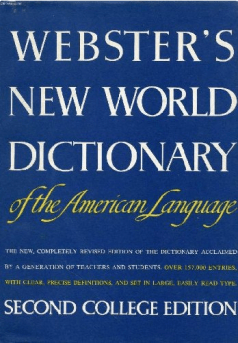 ♦ Perrogative: This is our biggest pet peeve, and we hear it this non-word all the time and even see it in print, even though the spell checker had to have flagged it when it was first entered into the document. “It is my perrogative, so I shall proceed as I wish.” Really? The word is “prerogative” and it is pronounced “pree rog uh tiv”. Not “per rog uh tiv”. Prerogative. Please….
♦ Perrogative: This is our biggest pet peeve, and we hear it this non-word all the time and even see it in print, even though the spell checker had to have flagged it when it was first entered into the document. “It is my perrogative, so I shall proceed as I wish.” Really? The word is “prerogative” and it is pronounced “pree rog uh tiv”. Not “per rog uh tiv”. Prerogative. Please….To those of you who thought you caught an error in the first paragraph, we purposely use the term the “American” language. English is what they speak in England, and it is charming and wonderful to listen to. We are not alone in this belief. In fact, Websters – THE authority on dictionaries – calls its lexicon “Webster's New World Dictionary of the American Language”. Hah!
Now we really feel better! Our best wishes to all for a healthy and prosperous 2021!
Is It Time for a Serious Evaluation of Your Patent Assets?
Posted: 12/12/2020
 A question that every owner of multiple patents should consider is: What is the best course of action in 2021 and beyond for each of the patents it owns? The way to start that process is with what is called “Patent Triage.” The term “triage” is most often used in medical scenarios. When there is a disaster with multiple injuries, the injured are brought to a medical facility and they are immediately triaged. They are evaluated using medical community standards to determine who needs critical care, who needs intense care such as surgery, who can wait for treatment, and who really needs to be sent home. The key, of course, is to save lives by making sure the most seriously injured are treated first.
A question that every owner of multiple patents should consider is: What is the best course of action in 2021 and beyond for each of the patents it owns? The way to start that process is with what is called “Patent Triage.” The term “triage” is most often used in medical scenarios. When there is a disaster with multiple injuries, the injured are brought to a medical facility and they are immediately triaged. They are evaluated using medical community standards to determine who needs critical care, who needs intense care such as surgery, who can wait for treatment, and who really needs to be sent home. The key, of course, is to save lives by making sure the most seriously injured are treated first.While no one usually dies in the process, Patent Triage is a patent-by-patent evaluation of a company’s or a university’s or an inventor’s patents to classify each one, and from that evaluation have a strategy for that asset. Once classified, the smartest course of action for each patent becomes clear. For those who cannot see the patent forest for the patent trees, the solution is to totally avoid the forest, and look at each individual patent.
Patent Triage includes the evaluation, patent-by-patent, of the entire collection of assets, and putting each patent into one of five categories.
♦ Core Patent: These are patents that a company is practicing in the products or services that it sells, they are essential to the enterprise, and they should be professionally appraised – if they have not been – to determine their value so that value is reflected in the company’s Balance Sheet. Universities and inventors do not have Core Patents, only businesses.
♦ Licensing Candidate: This is a patent that has the potential to generate royalties, but may not be because all the prospective licensees are direct competitors of the assignee, and the patent owner does not want to created competition for its patented product. And while that makes sense, it is not always the case that it will create new competition. There are instances in which a patent can be licensed to companies that are in concentric businesses – enterprises that have related, but not directly competing products – to the patent owner's business. One of the most attractive aspects of a Licensing Candidate is that it can generate income with no Cost of Good Sold! A patent can be Core and/or Assertion and/or Licensing.
♦ Divestiture Patent: This is a non-core patent – a patent that covers a technology that the patent owner is not practicing – that is likely to have little real value for the business. Divestiture Patents should be referred to a patent broker to see if they can be turned into cash. It is not uncommon for a company to file for a patent on a new technology, but for one of several reasons – from lack of marketing to bad timing to too high an investment to distribution or packaging issues – the business never commercialized the patented invention. A Divestiture Patent might also be a Licensing Candidate, but it is definitely not a Core Patent and not an Assertion Asset.
♦ Non-Core Patent: When a business believes it has a new technology within its grasp, it should always file for a patent for that invention. Better to have a patent for an invention you do not practice than not have a patent for a technology that you do practice! The result of this activity – an activity we strongly endorse – is that sometimes a company ends up with a patent that is simply not core to its business, but it is not a patent with licensing or sale potential. For example, the technology covered by the patent was cutting edge when the patent application was filed, but just a few years later – when the patent was granted – the invention is no longer practical, or other technologies have replaced it, or the market has gone elsewhere. A good example of this are the electronic typewriters that hit the market in 1980 and 1981. They were a great idea in their heyday, but the PC made electronic typewriters obsolete by 1983. It is not even worth paying the maintenance fees on the Non-Core Patents, and they should be abandoned. Needless to say, those patents that are triaged as “Non-Core” do not fall into any of the other categories.
Every business, every university, and every inventor needs to know what’s in the warehouse, especially when that warehouse is full of patents.
More Advice for Every Inventor
Posted: 11/12/2020
 Last month, in Advice for Every Inventor, we provided valuable – yet free – advice for every inventor with a patent about to be granted. If you missed the article, or you want to read it again, or send it to someone who needs to read it, it is posted down below.
Last month, in Advice for Every Inventor, we provided valuable – yet free – advice for every inventor with a patent about to be granted. If you missed the article, or you want to read it again, or send it to someone who needs to read it, it is posted down below. As we promised in last month’s Patent Leather, we share with you this month yet another way to add sales appeal and value to your next patent. It is no surprise to anyone that we compete today in a global economy. That point was illustrated in The World Is Flat by economist Thomas Friedman. The book came out back in 2005, but the lessons in the book are still valid. Friedman illustrated how any business anywhere in the world can effectively compete against all other businesses across the globe. With this in mind, how does an inventor compete in a global marketplace – and make his or her patent more appealing and more valuable in the process?
The acquirer of your U.S. Patent is very likely a multinational enterprise that manufactures and sells products in many countries. The company that is buying your patent for patent protection in the U.S. will very likely also want patent protection in Europe and Asia where many U.S. companies also do considerable business.
 That means that in addition to filing for a continuation, also file for a PCT Patent Application. If you are not familiar with it, the PCT (Patent Cooperation Treaty) is an agreement between most of the nations of the world to cooperate in the granting of national patents. Filing a PCT Patent Application based on your soon-to-be granted U.S. patent gives you a global priority date for your patent, and it considerably speeds up the time it takes to secure patents in other countries.
That means that in addition to filing for a continuation, also file for a PCT Patent Application. If you are not familiar with it, the PCT (Patent Cooperation Treaty) is an agreement between most of the nations of the world to cooperate in the granting of national patents. Filing a PCT Patent Application based on your soon-to-be granted U.S. patent gives you a global priority date for your patent, and it considerably speeds up the time it takes to secure patents in other countries. Let us take a minute to clarify something. We get emails from inventors every day – and we mean “every day” – who filed a PCT Patent Application and believe that they now have a “global” patent. A PCT Patent Application is NOT a patent. It is simply an application that can be used to secure patents from the 153 nations that are signatories to the agreement. Each national patent office needs to individually review your patent application and either approve the application and grant a patent, or reject the application based on that country’s patent laws – and they can differ considerably from nation to nation – and what other patents may have already been granted in that country, as well as other legal and regulatory factors.
But filing a PCT Patent Application gives the acquirer of your patent-and-PCT-Patent-Application portfolio a distinct advantage if that company decides to sell a product based on your patent in other countries – a very likely outcome in today’s global economy. Filing for a PCT Patent Application is another of those Low Risk/High Reward propositions we promote.
If the acquirer of your U.S. Patent and PCT Patent Application does not need a patent in another country, the company just lets the PCT Patent Application expire. No harm. No foul.
So – to increase the appeal and value of your soon-to-be-granted patent, there are two very important extra steps to consider:
- File for a continuation
- File a PCT Patent Application
Advice for Every Inventor
Posted: 10/13/2020
 We return to this topic at least once a year because it is critical to the successful commercialization of U.S. Patents, especially recently granted U.S. Patents that are going to be monetized and not practiced by the inventor and assignee.
We return to this topic at least once a year because it is critical to the successful commercialization of U.S. Patents, especially recently granted U.S. Patents that are going to be monetized and not practiced by the inventor and assignee. Among all asset classes, patents are unique because they are the one asset that you cannot buy and then modify to your exact needs. Take real estate, another asset class, as an example. You can buy a building that once housed a factory and turn it into a warehouse – or vice versa. Or…you can apply for a zoning variance and turn that old factory into an office building. Or even an apartment house. Even a nursing home or extended care facility. You could knock out big chucks of the front wall of the building, put in windows, and turn that old factory into a retail location – a store or restaurant. The possibilities are almost endless. In the Northeast where we are located, it is fashionable to buy a barn and turn it into a house. Or buy a warehouse or factory building and turn it into lofts. You get the idea.
Alas, the same is not true of patents. The red meat of a patent is its claims. And what is in the claims in the granted patent is what a business receives when it buys or licenses that patent. Wouldn’t it be great if a business could buy a patent, and then tweak the invention covered by that patent to the exact needs of that company? Alas, to dream, but it is not possible.
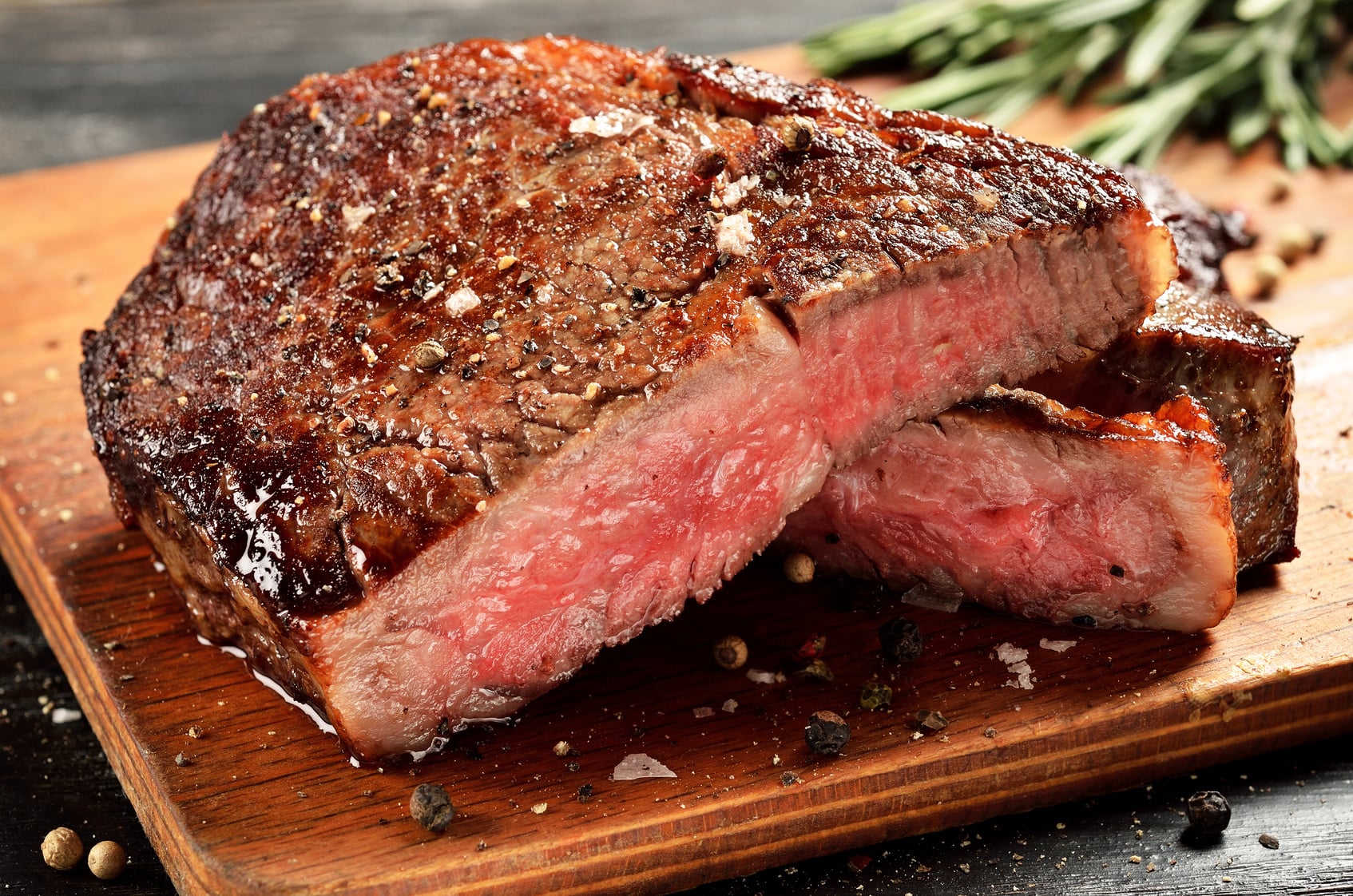 But wait a minute. There actually is a way to do that! It is called a continuation. When a patent application is approved – the Patent Office term is “allowed” – that is time for the inventor and his or her patent attorney to file for a continuation. There are continuations, divisionals, and continuations-in-part, and your patent attorney can describe the differences between them and which is most appropriate to your patent.
But wait a minute. There actually is a way to do that! It is called a continuation. When a patent application is approved – the Patent Office term is “allowed” – that is time for the inventor and his or her patent attorney to file for a continuation. There are continuations, divisionals, and continuations-in-part, and your patent attorney can describe the differences between them and which is most appropriate to your patent. When you file a continuation, you create a patent application that includes the claims from the first patent along with the Priority Date of the first patent. When you go to market with a granted patent and a continuation patent application based on that patent, you create a portfolio that is a much more attractive and valuable asset than just the initial granted patent.
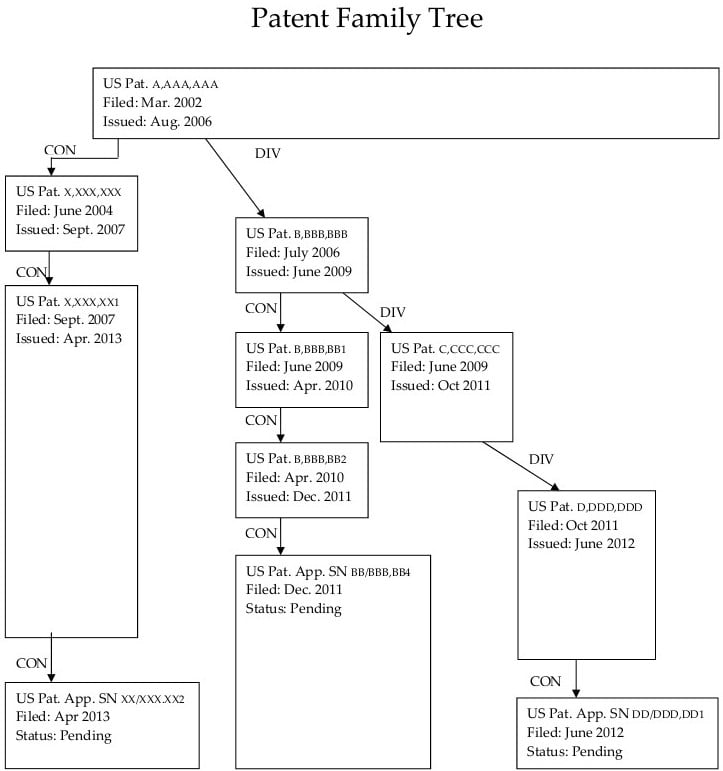 What the acquirer of the patent-and-continuation can do is use the continuation to tweak the invention in the original patent. For example, a patent covering a medical device for humans can be supplemented by a patent that covers animals. A patent that includes a visual and audio warning device can be supplemented with a second patent that calls a specified phone number or communicates via Bluetooth. A patent covering industrial equipment can be supplemented by a second patent that covers household appliances. The possibilities are quite literally endless!
What the acquirer of the patent-and-continuation can do is use the continuation to tweak the invention in the original patent. For example, a patent covering a medical device for humans can be supplemented by a patent that covers animals. A patent that includes a visual and audio warning device can be supplemented with a second patent that calls a specified phone number or communicates via Bluetooth. A patent covering industrial equipment can be supplemented by a second patent that covers household appliances. The possibilities are quite literally endless!Here is the other benefit of filing a continuation. One morning you are going to wake up at 3:00 am and ask yourself why you did not include one more feature in your recently granted patent? But wait, you can. Use the continuation to add that feature. Now you have an even more comprehensive patented invention.
But – before that second patent is granted – be sure to do what? File for a continuation!
What if you and the buyer of your patent never need the continuation? You just let it lapse. No harm. No foul. We are believers in High Reward/Low Risk ventures, and filing for a continuation before your next patent issues is clearly High Reward and Low Risk (and low cost). It creates a portfolio that is more appealing and more valuable than just the solo granted patent.
While this advice has been given from the aspect of the independent inventor, it clearly applies to any organization – such as a business or university – that is filing a patent for an invention. Filing a continuation gives the organization the ability to build on the basic invention covered in the initial patent and create a downstream – or several downstream – second or third-generation patents that share the Priority Data – always a critical factor – from the initial patent.
Why Is the Selling Cycle So Long?
Posted: 9/18/2020
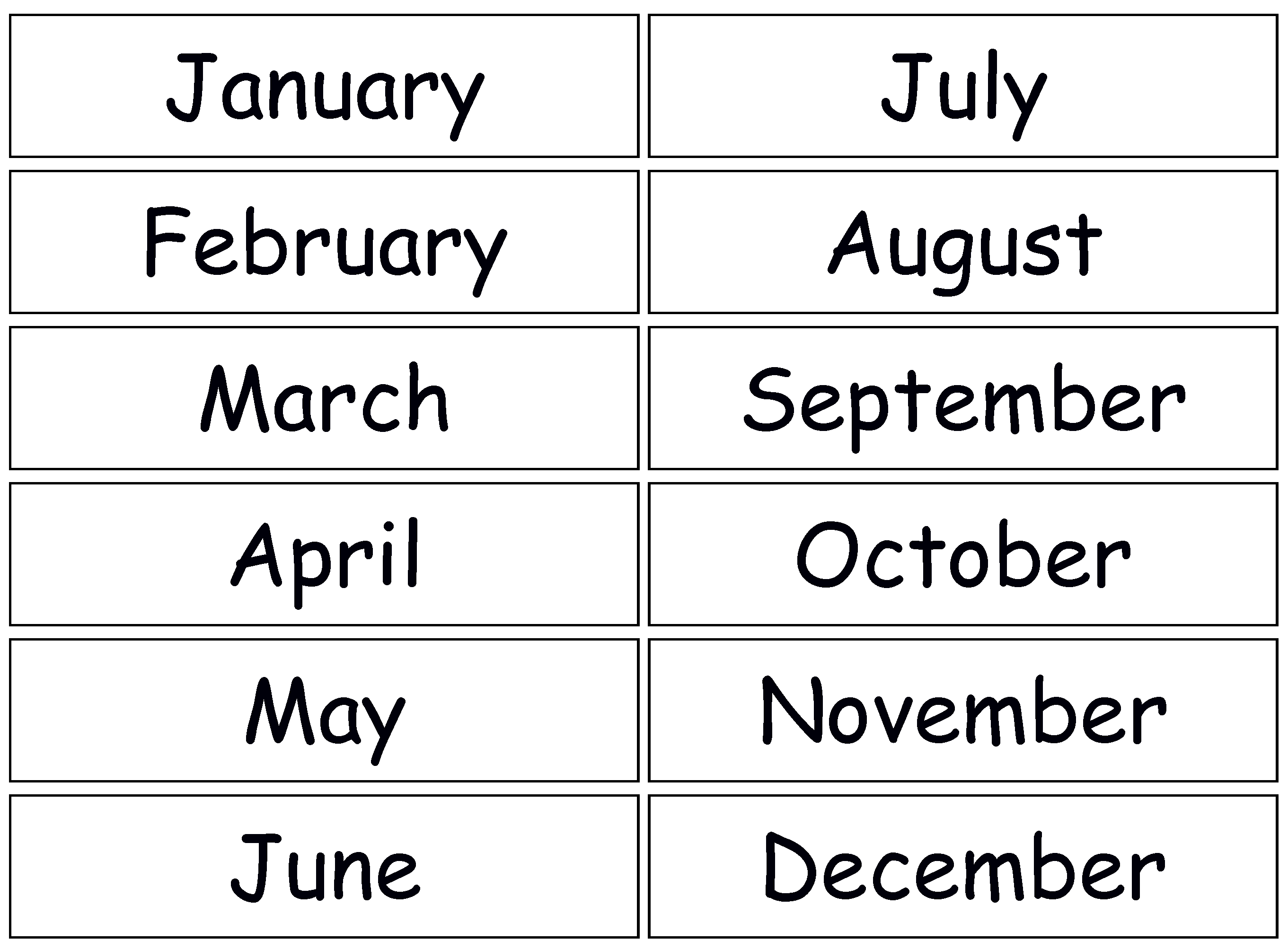 Patents are acquired for several reasons. Some are acquired as assertion candidates. Some are acquired to give a company patent protection – or additional patent protection – for its products and services. Some are acquired by a company simply so one of its competitors does not buy it!
Patents are acquired for several reasons. Some are acquired as assertion candidates. Some are acquired to give a company patent protection – or additional patent protection – for its products and services. Some are acquired by a company simply so one of its competitors does not buy it! But most patents are acquired with the goal of commercializing the invention covered by that patent. The acquirer will use the patented technology to either develop a new product or a new service, or to enhance, improve or expand the performance and capabilities of a current product or service. And making that decision is a complex one. And one that takes time.
When a business acquires a patent with the goal of commercializing the invention covered by that patent (or patent portfolio), the company is not simply looking at the cost of the patent. In fact, the cost of acquiring the patent is often only a fraction of the total cost of developing and bringing to market a new product or a new service based on that patent.
 Going from patent to new product is not an inexpensive, simple, quick task. It is, in fact, an expensive, complex, lengthy task. The new product has to be designed, engineered, and manufactured, and where it will be manufactured or assembled has to be determined. Parts for it have to be sourced. Prototypes may have to be made that can be tested, either for performance or for market research. The product will need packaging. It may need branding and the filing of a trademark or service mark application. It may need approvals such as UL or CE certification, or permits or licenses.
Going from patent to new product is not an inexpensive, simple, quick task. It is, in fact, an expensive, complex, lengthy task. The new product has to be designed, engineered, and manufactured, and where it will be manufactured or assembled has to be determined. Parts for it have to be sourced. Prototypes may have to be made that can be tested, either for performance or for market research. The product will need packaging. It may need branding and the filing of a trademark or service mark application. It may need approvals such as UL or CE certification, or permits or licenses. Then there is the marketing required to put the product in front of buyers. If it will be sold through retail channels, the manufacturer may need to negotiate for shelf space. A warranty, service and repair program needs to be set up. What additional staffing will be needed in all of these areas to produce, deliver, and support this new product? If it is a software program or a service, there is no traditional manufacturing, but there is still the entire product development continuum, and an infrastructure will need to be created to deliver the software or service – and get paid for it.
As you can see, virtually every department and business unit of the company acquiring a patent is involved in the commercialization of that patent, and in the decision to acquire it. This is why we tell our clients that it typically takes three to nine months to close a deal for the sale of a patent to an operating company. We wish it were shorter, but it is not.
It takes nine months to make a baby. It would be great if we could recruit three women and do it in three months – or nine women and do it in just a month – but that is not reality. And it takes time to put a patent in front of the right people at the right company and let that business make the collective decision to acquire and commercialize that patent.
Of Sheaves and Reapers and Patents and Marketing and Politics and War
Posted: 6/20/2020
Our story starts with sheaves. Since men began planting crops thousands of years ago, farm workers toiled in the fields to bring in the grain harvest. They had to bend over to cut the stalks of wheat – truly back-breaking work – and then tie the stalks of wheat into sheaves. The sheaves were taken to a threshing floor or threshing barn where the wheat would be separated from the chaff.
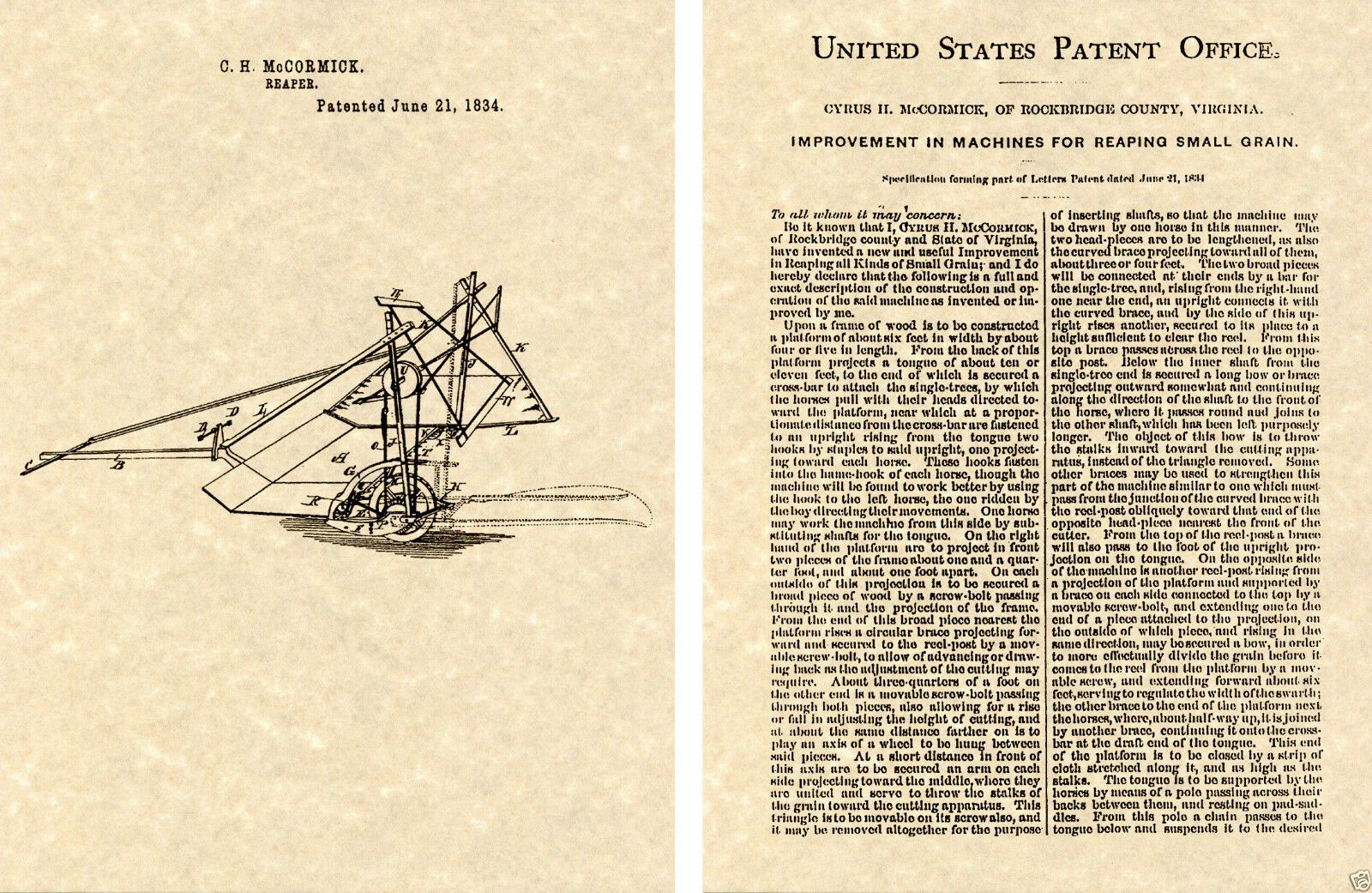 Cyrus McCormick is credited with mechanizing the process of bringing in the grain crop by inventing the first mechanized reaper. He was granted a U.S. Patent for “Improvement in Machines for Reaping Small Grain” in 1834. It was a horse-drawn contraption that mechanically cut the grain from the forward motion of the device. When demand for the product exceeded McCormick’s ability to build them in his home state of Virginia, he relocated to Chicago and set up a factory to sell his new “McCormick Reaper” to farmers across the U.S.
Cyrus McCormick is credited with mechanizing the process of bringing in the grain crop by inventing the first mechanized reaper. He was granted a U.S. Patent for “Improvement in Machines for Reaping Small Grain” in 1834. It was a horse-drawn contraption that mechanically cut the grain from the forward motion of the device. When demand for the product exceeded McCormick’s ability to build them in his home state of Virginia, he relocated to Chicago and set up a factory to sell his new “McCormick Reaper” to farmers across the U.S.McCormick had a competitor, one John Henry Manny of Rockford, Illinois, who showed up at the Paris Exposition in 1855 with his version of the reaper that just about everyone agreed ran circles around McCormick’s product. McCormick returned to the U.S. from Paris with a tarnished reputation and promptly sued Manny for patent infringement, demanding that Manny cease production of his reapers and pay McCormick $400,000 – a considerable sum in 19th Century currency – for his infringement.
 The case went to trial in September of 1855 – you could get a trial date fairly promptly back then – and it featured prominent attorneys on both sides. McCormick hired a litigator – former U.S. Attorney General Reverdy Johnson – and an IP expert – New York patent attorney Edward Nicholl Dickerson.
The case went to trial in September of 1855 – you could get a trial date fairly promptly back then – and it featured prominent attorneys on both sides. McCormick hired a litigator – former U.S. Attorney General Reverdy Johnson – and an IP expert – New York patent attorney Edward Nicholl Dickerson. The defendant was represented by attorneys George Harding and Edwin M. Stanton. If that name rings a bell, you probably aced American History back in high school. Because the trial was to take place in Illinois, the defendants needed a member of the Illinois Bar as their attorney-of-record, so they hired a young, lanky fellow from Springfield, one Abraham Lincoln.
McCormick lost the case, but not the war. While he probably did not have a superior reaper, he made continual improvements to the product, and his marketing was far superior to his competitors, so he made millions selling the McCormick Reaper. In 1856, McCormick’s factory cranked out more than 4,000 units! In 1871, the McCormick factory was a victim of the famous Chicago Fire and was burned to the ground, but McCormick rebuilt. Over the following years,
McCormick’s harvester and his company grew to become International Harvester, a multinational manufacturer of farming equipment and trucks that is known today as Navistar International.
So whatever happened to that Lincoln fellow? He was elected the first Republican President in 1860, and he was so impressed with Edwin M. Stanton from the patent infringement trial five years earlier that he asked Stanton to serve as his Secretary of War. As a result of the loss of their patent infringement claim, the McCormicks were lifelong Democrats.
Of Sewing Machines and a Patent Thicket and a Patent Pool and Consumer Finance
Posted: 6/20/2020
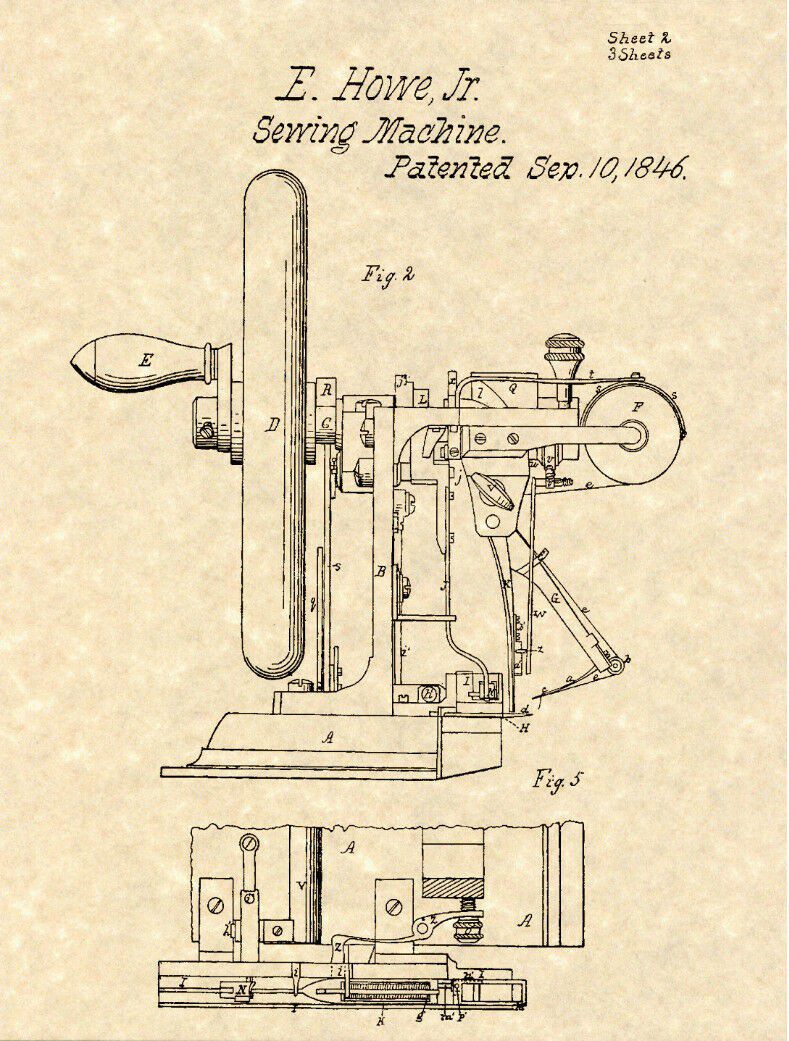 It’s JEOPARDY! and the answer is: “He invented the sewing machine.” If you answered “Who is Singer?” you would be wrong. The correct response would be “Who is Howe?” “Who is Elias Howe?” if you want to be a Ken Jennings-type show-off.
It’s JEOPARDY! and the answer is: “He invented the sewing machine.” If you answered “Who is Singer?” you would be wrong. The correct response would be “Who is Howe?” “Who is Elias Howe?” if you want to be a Ken Jennings-type show-off.Elias Howe received a U.S. Patent for a “Sewing Machine” in 1846. Isaac Singer did not receive his U.S. Patent for a “Sewing Machine” until 1851. Yet Singer is still in business today – 120 years later – while no one (except the fortunate readers of this column) ever heard of Elias Howe. And therein, as they say, lies a tale.
Several manufacturers of sewing machines popped up in the 1850s. Using a sewing machine compared to hand-stitching a garment was a no-brainer. Every housewife in America wanted one, as did all the companies that made ready-to-wear clothing. So Elias Howe began licensing his patent at exorbitant fees to anyone and everyone trying to build and sell anything similar to a sewing machine.
Meanwhile Isaac Singer – an eccentric, an entrepreneur, a sometimes actor, and the father of two dozen children from different women – took Howe’s invention to the next level by adding a thread controller and combining a
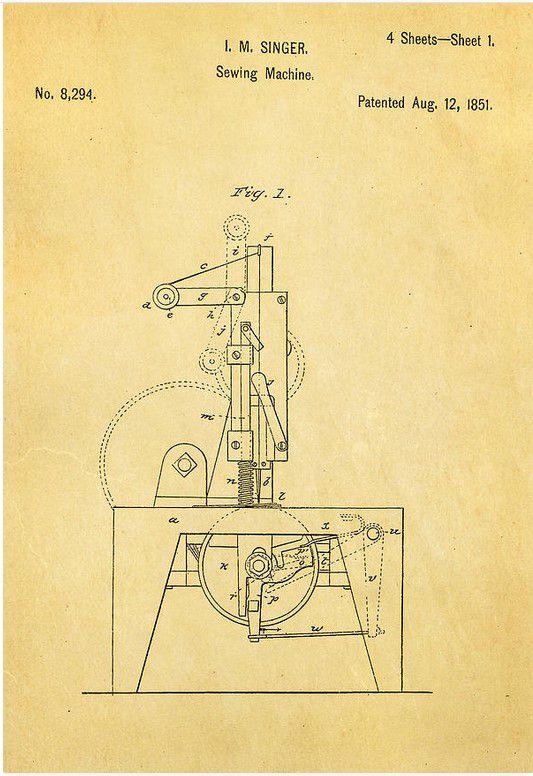 vertical needle with a horizontal sewing surface. And Singer started licensing his sewing machine patent.
vertical needle with a horizontal sewing surface. And Singer started licensing his sewing machine patent.But it wasn’t just Howe and Singer. There were other sewing machine patent holders licensing their patents, creating what has come to be known as a “patent thicket” – a situation in which a number of parties can lay claim to different key elements of the same basic invention. It sparked what is known in patent lore as the “Sewing Machine War.”
Order was formed out of chaos when one Orlando Brunson Potter, a lawyer and the president of the Grover and Baker Sewing Machine Company, proposed an unprecedented concept. The various patent owners should merge their business interests and charge a single patent licensing fee. This created what is known as a “patent pool.” Nine patents were rolled into the “Sewing Machine Combination” with each of the patentees earning a share of the licensing fees collected from every sewing machine manufacturer.
 How did Singer rise from all of these companies and become the dominant player for the next century? It really had nothing to do with Isaac Singer who was not a very smart businessman. It was really Edward Clark, an attorney who was a partner of Singer and who took over management of the company and decided to invest in some marketing. Clark also came up with the “hire-purchase plan” for customers who could not afford to pay cash for a sewing machine. They could make a small down payment and then pay off the balance in installments – the first consumer installment payment plan in the United States!
How did Singer rise from all of these companies and become the dominant player for the next century? It really had nothing to do with Isaac Singer who was not a very smart businessman. It was really Edward Clark, an attorney who was a partner of Singer and who took over management of the company and decided to invest in some marketing. Clark also came up with the “hire-purchase plan” for customers who could not afford to pay cash for a sewing machine. They could make a small down payment and then pay off the balance in installments – the first consumer installment payment plan in the United States!What did Clark do with the profits? He bought up all of his competitors and built a corporate headquarters building in Manhattan that was for a few years the tallest building in the world.
Want to read more Patent Leather? Visit our Archives.

